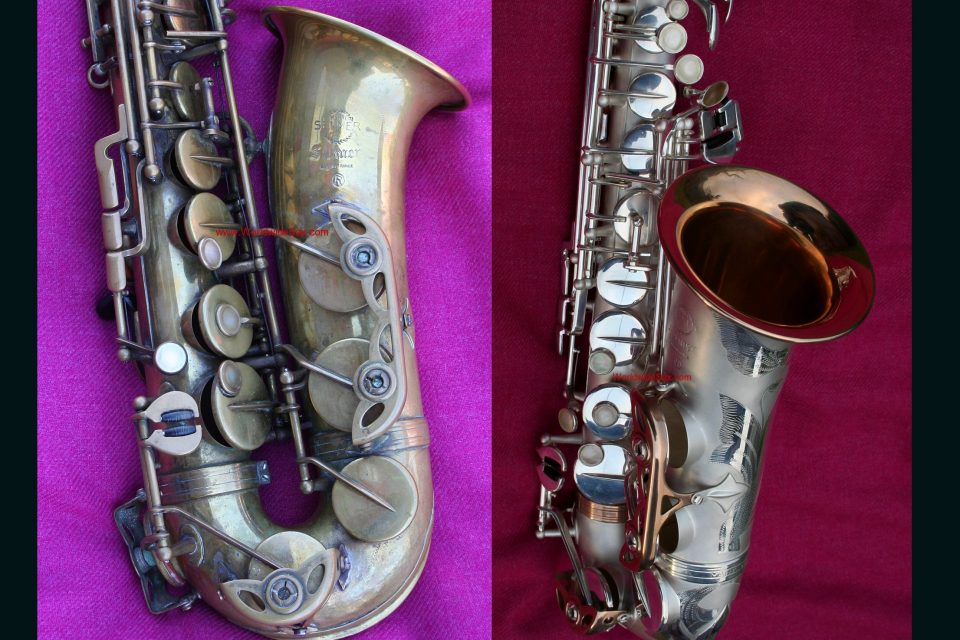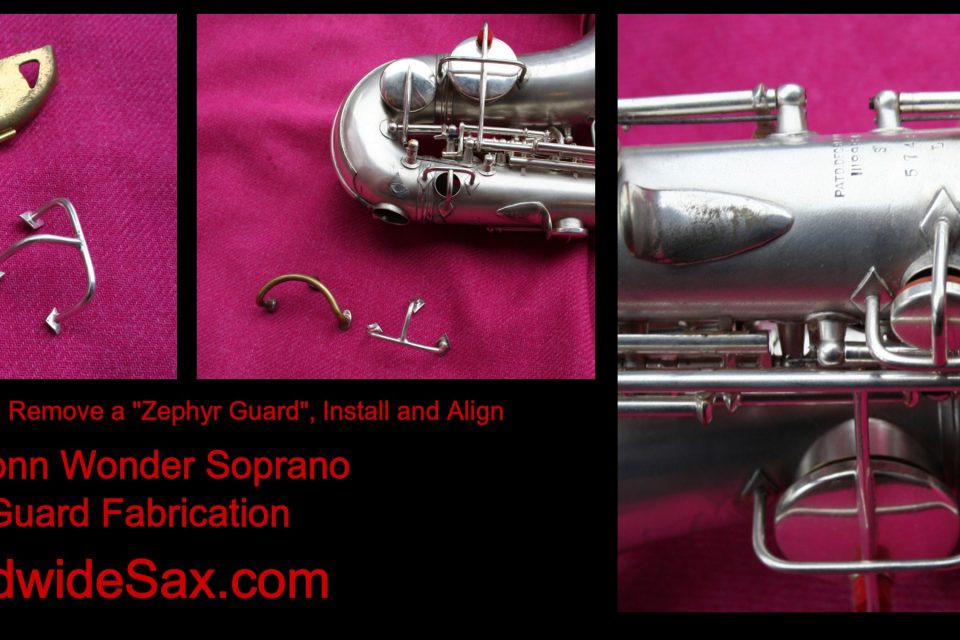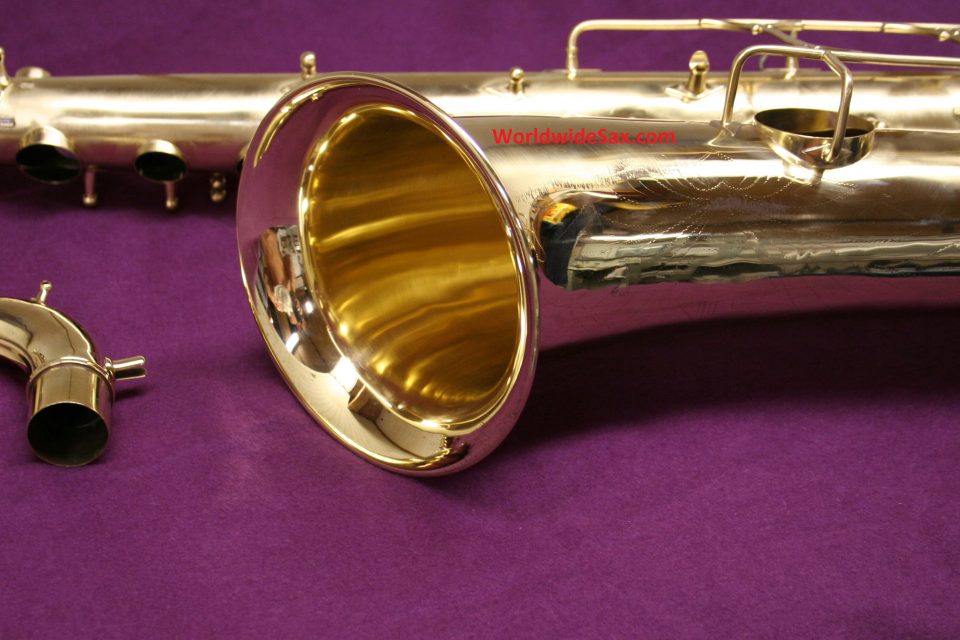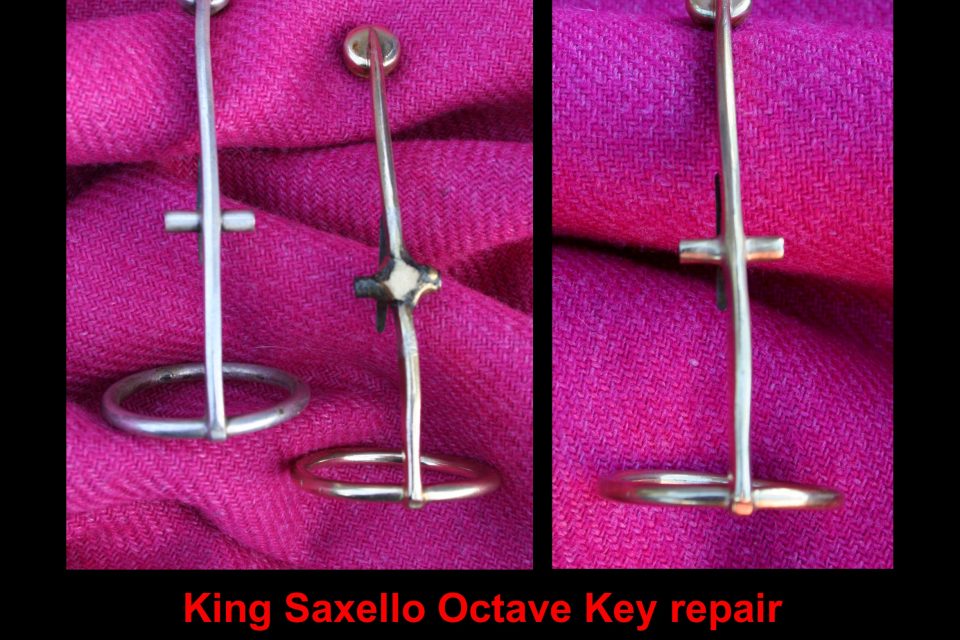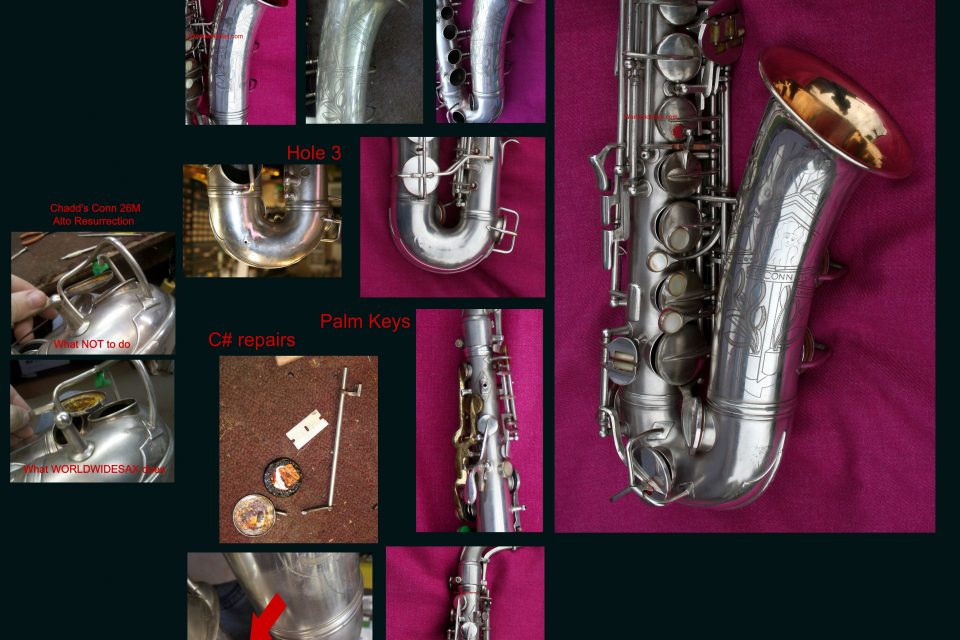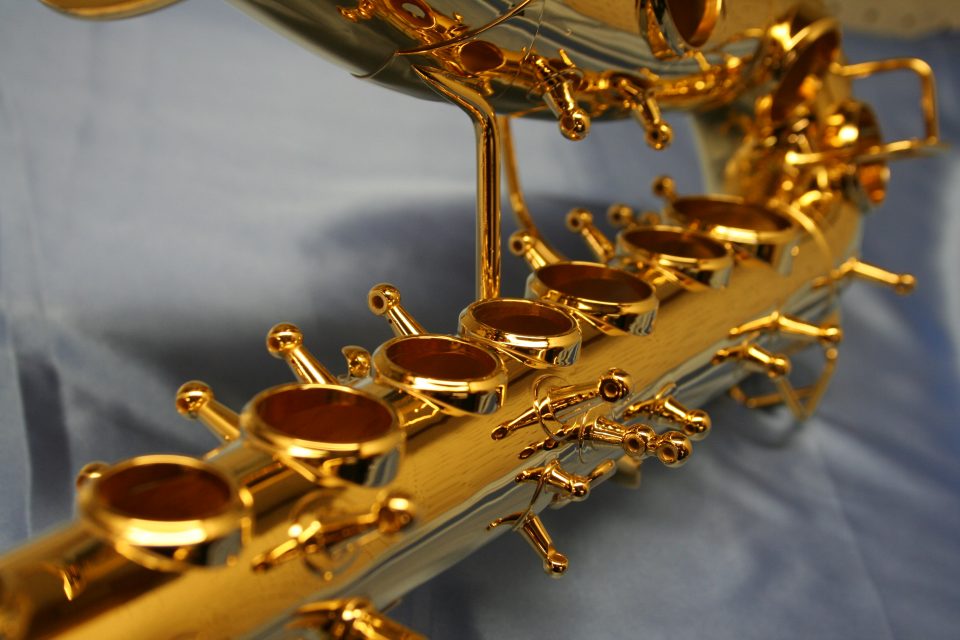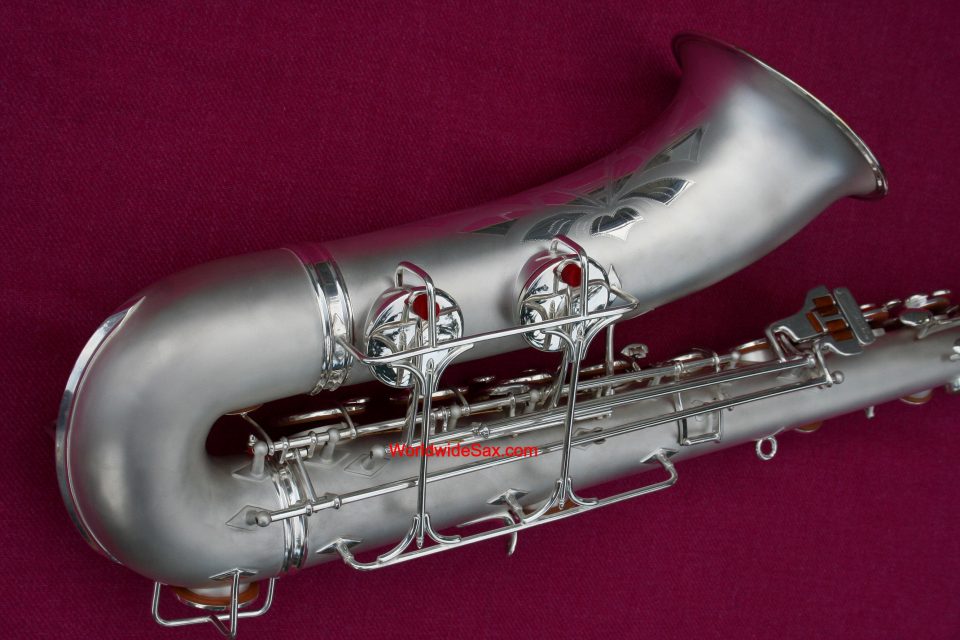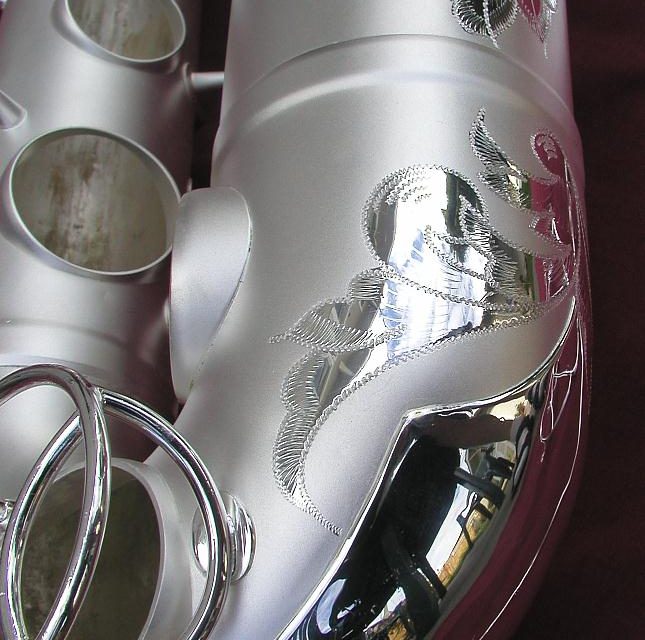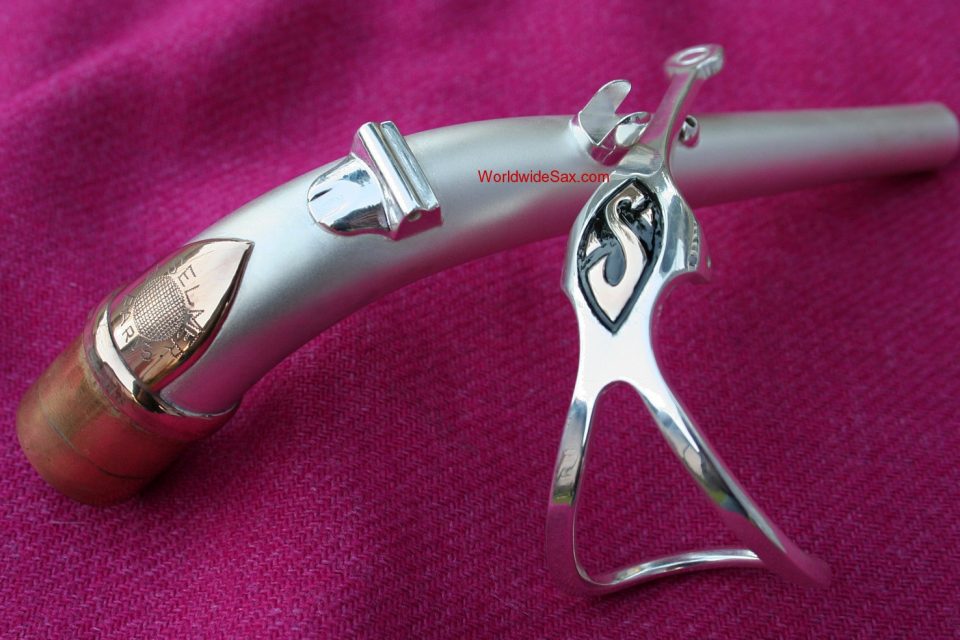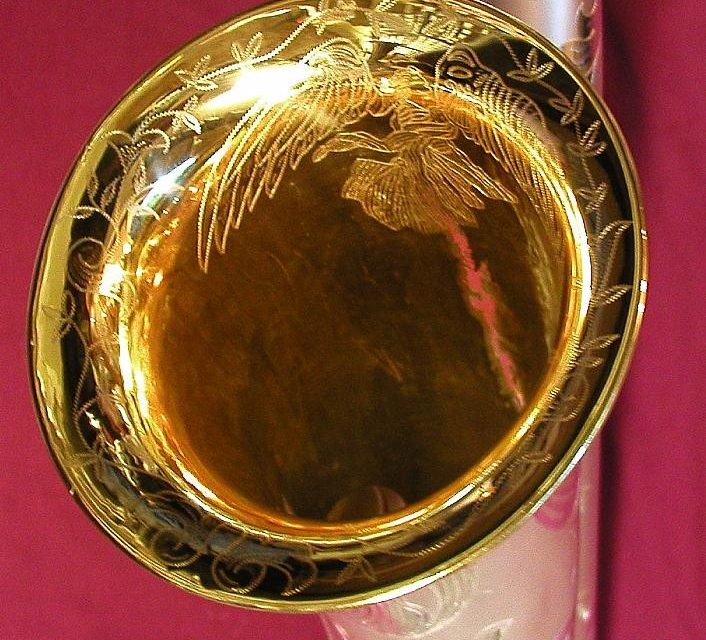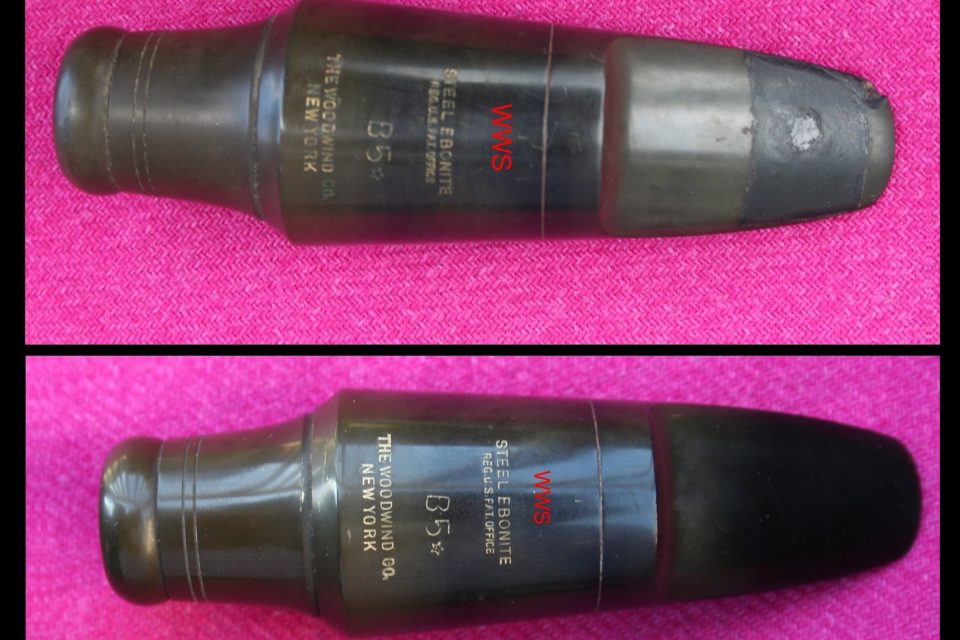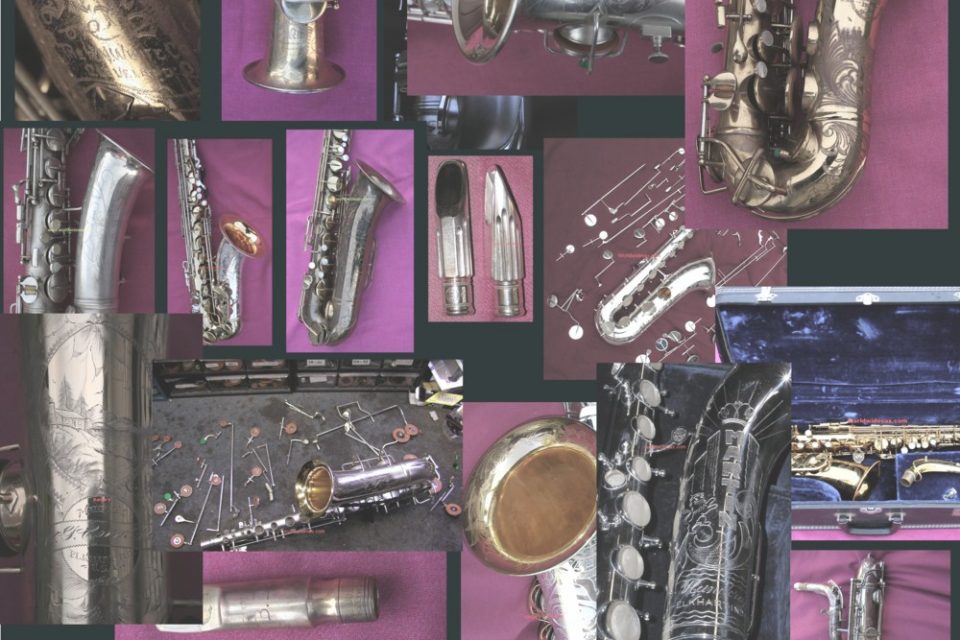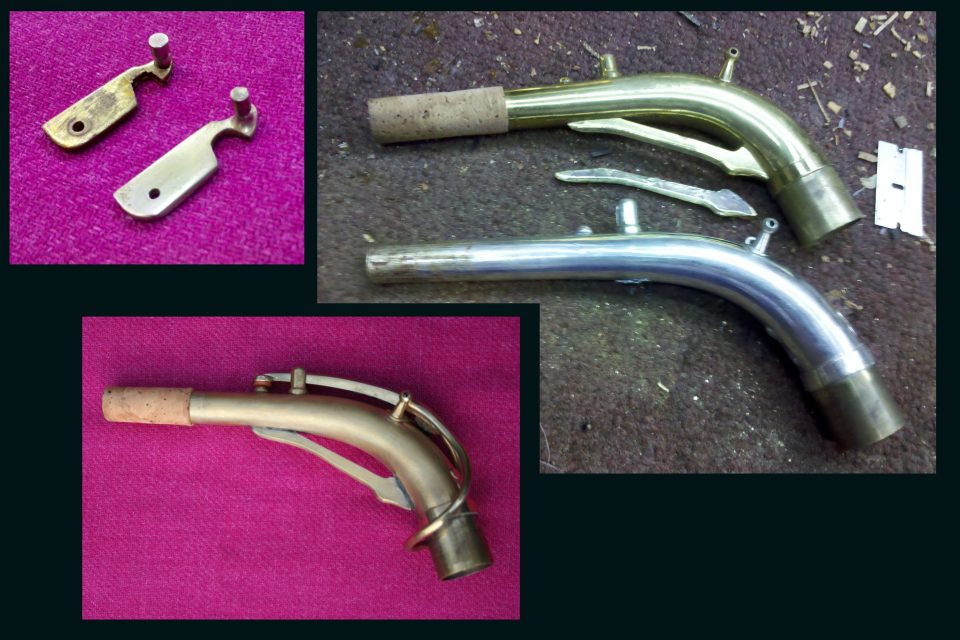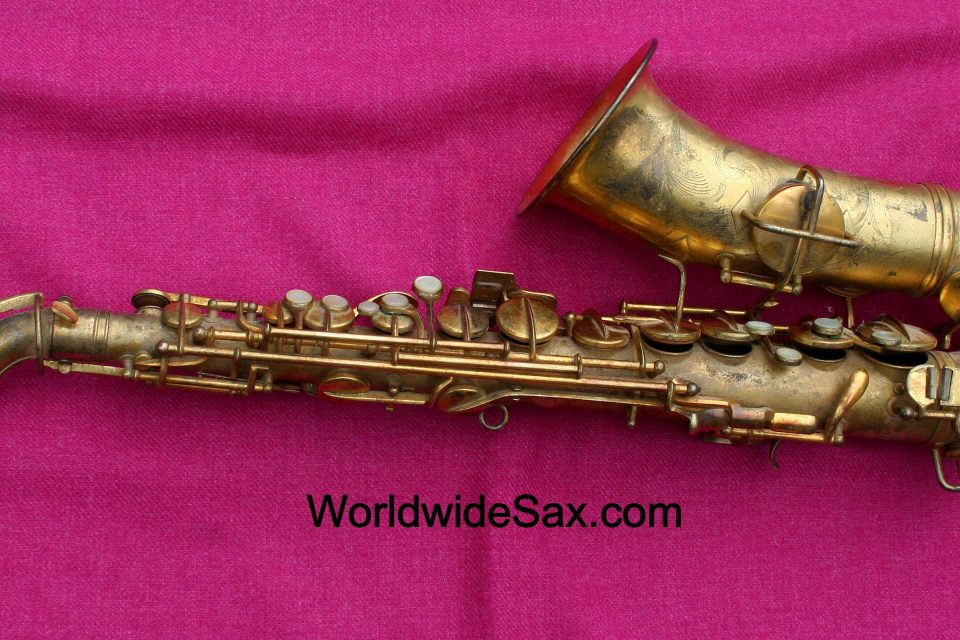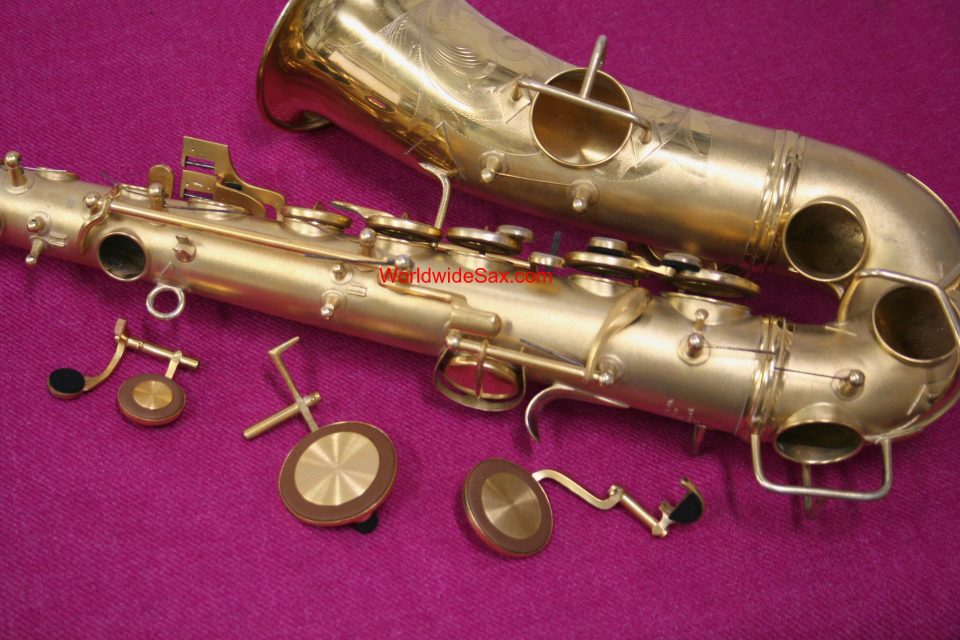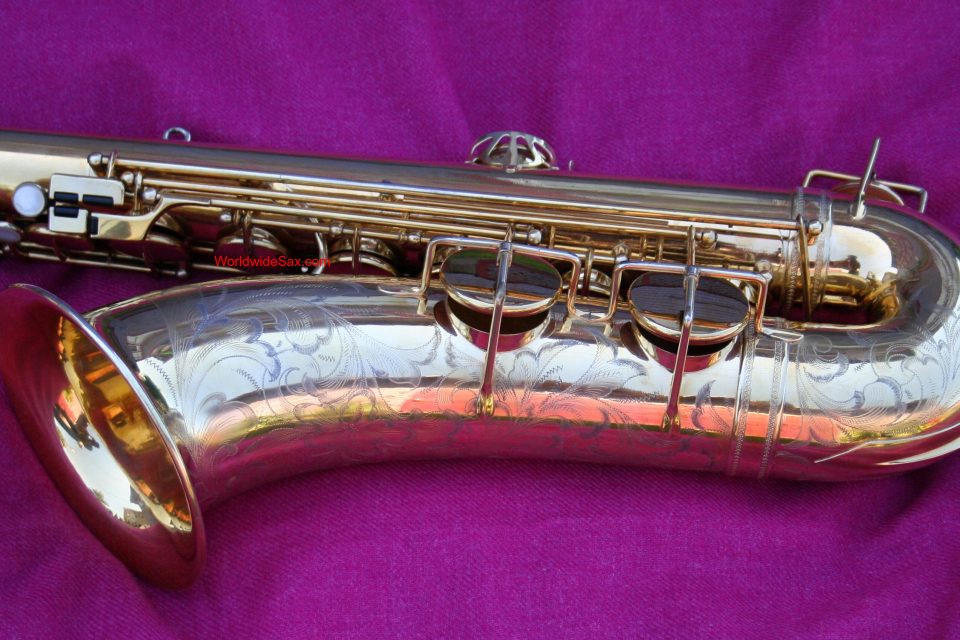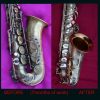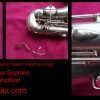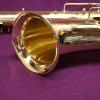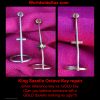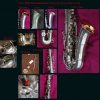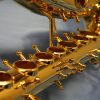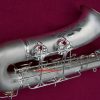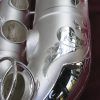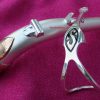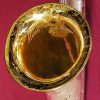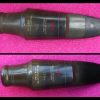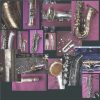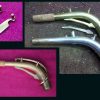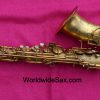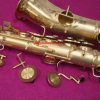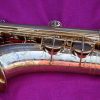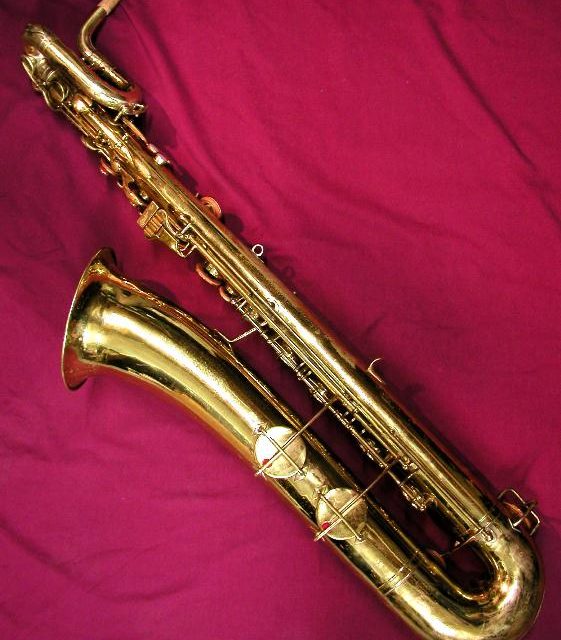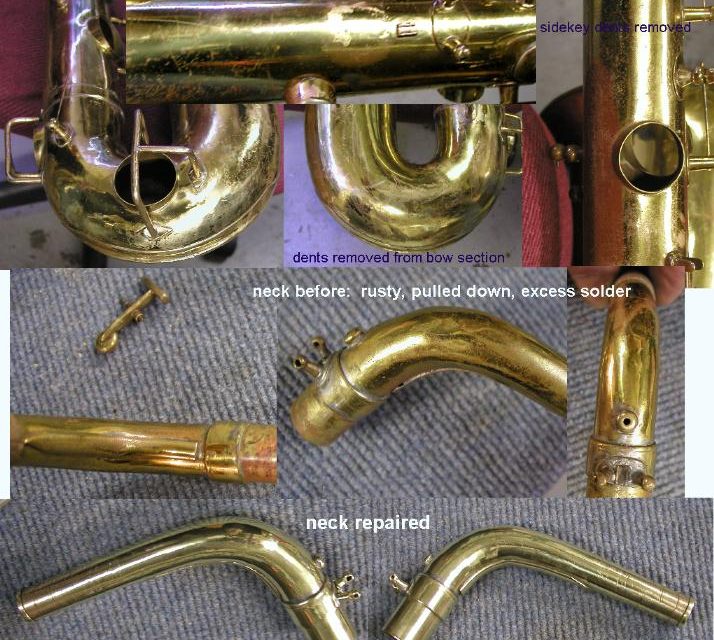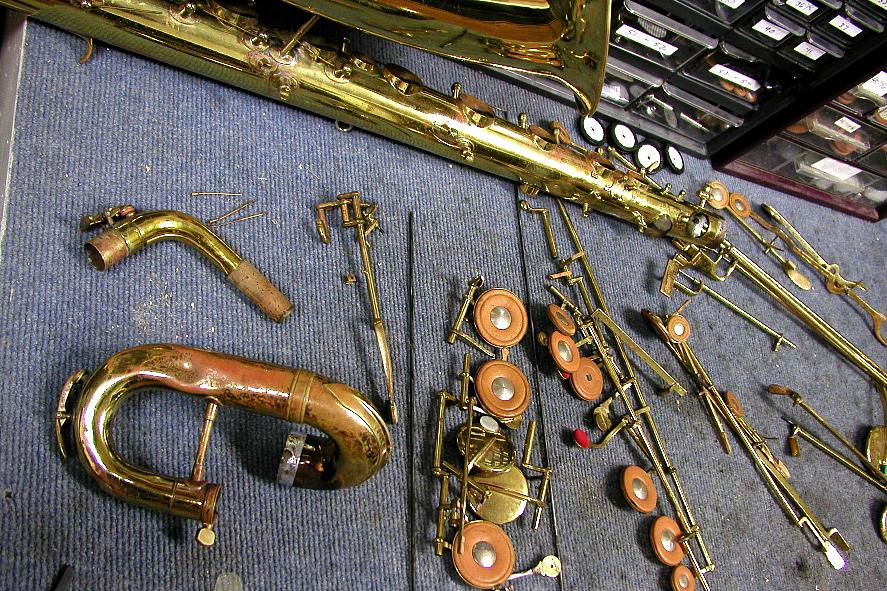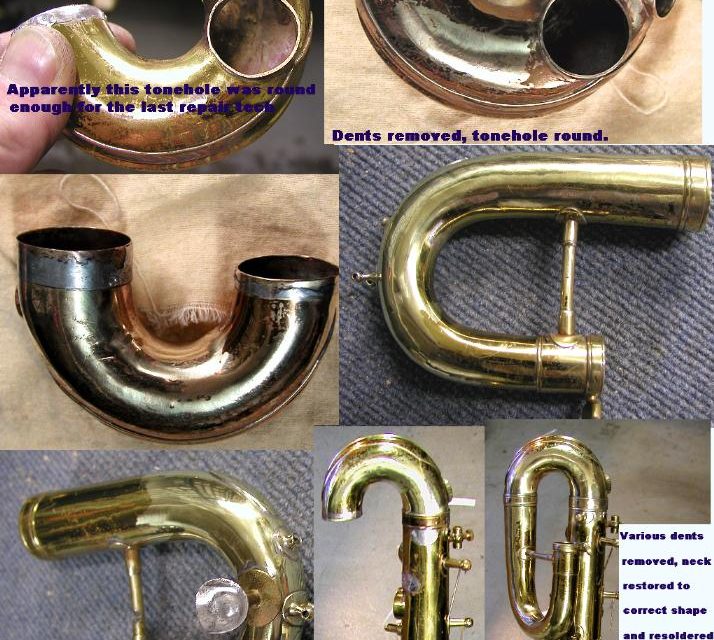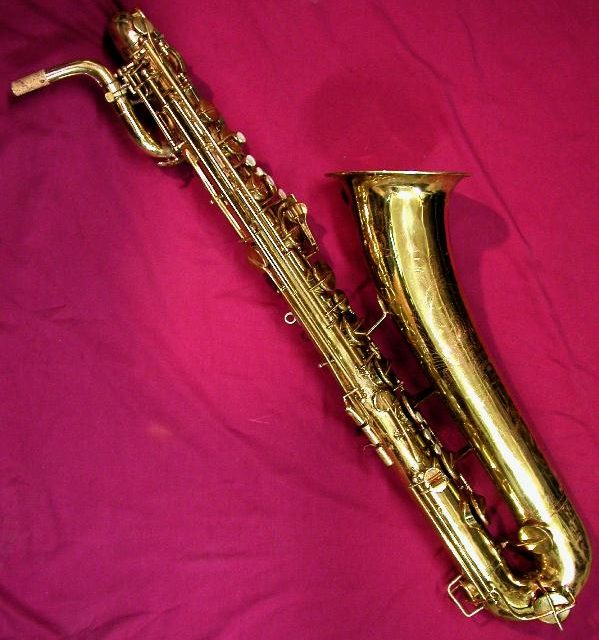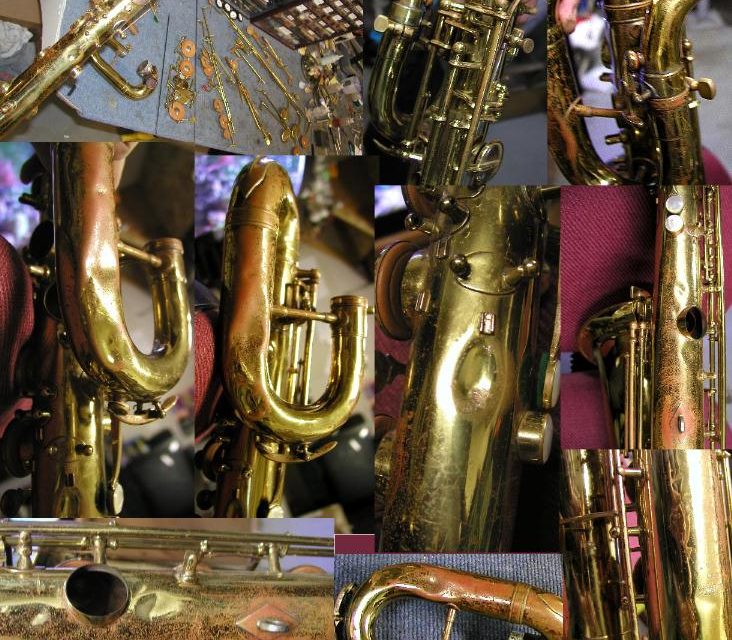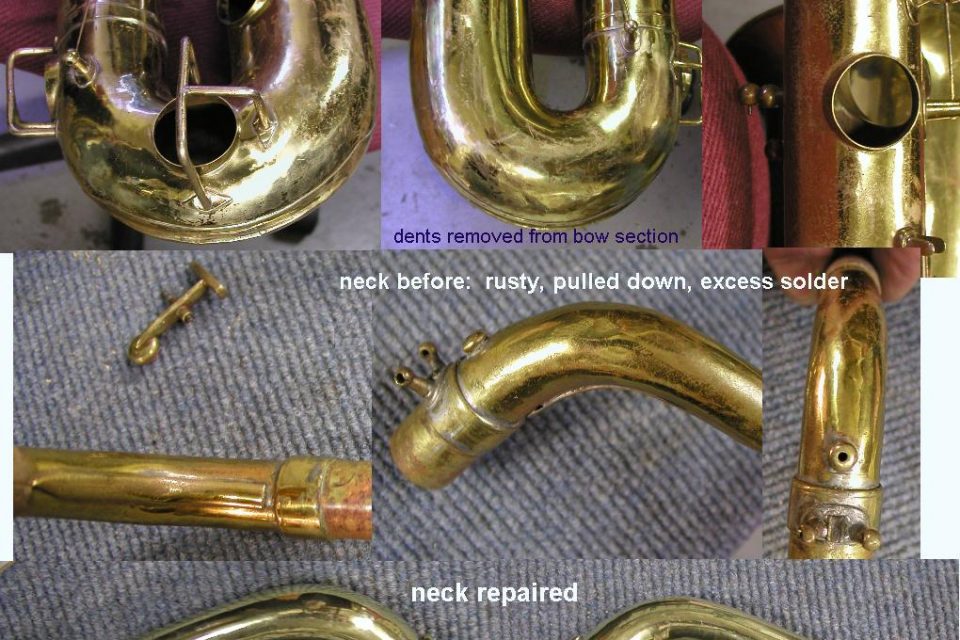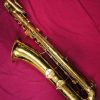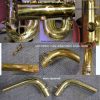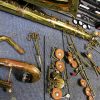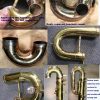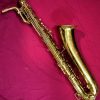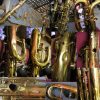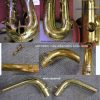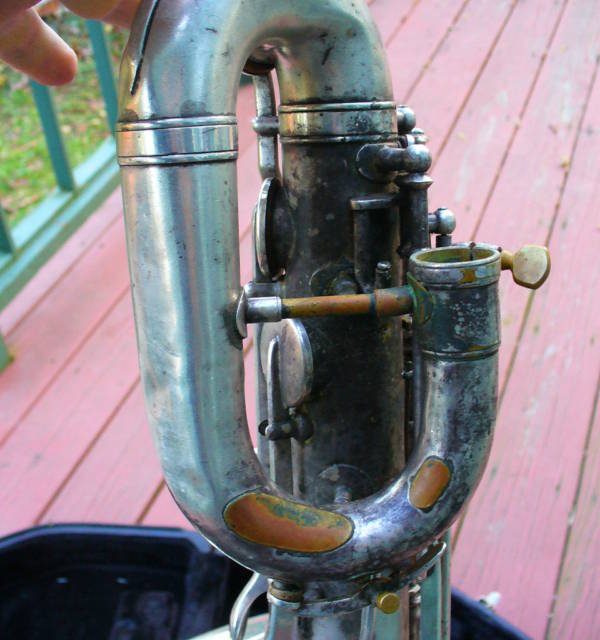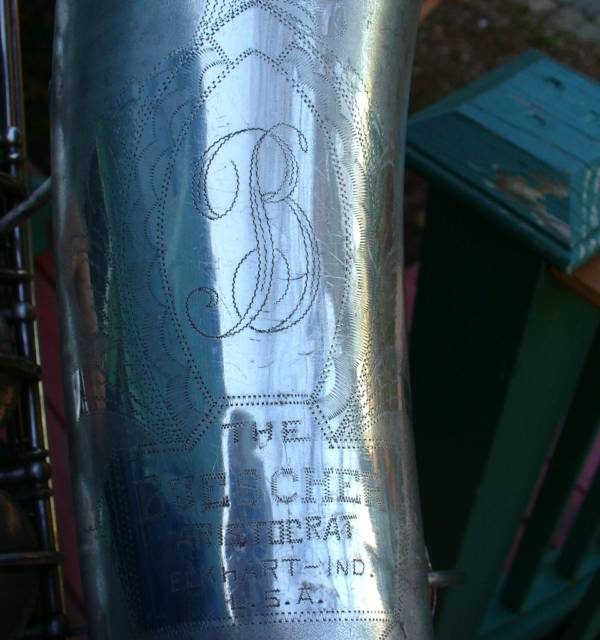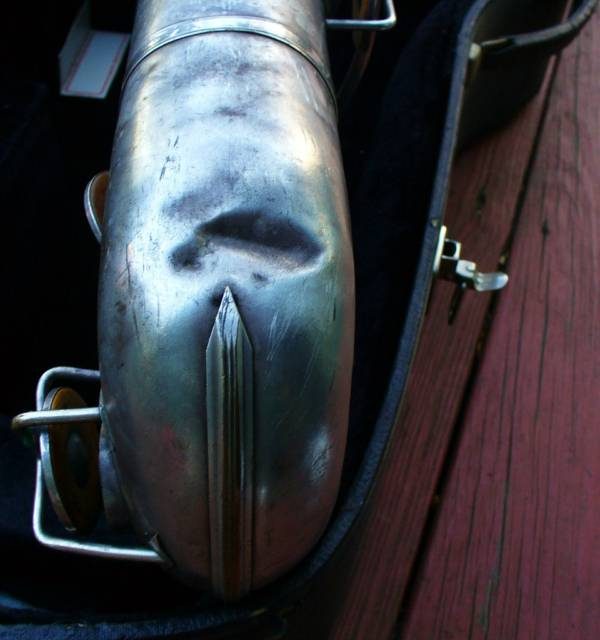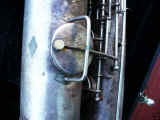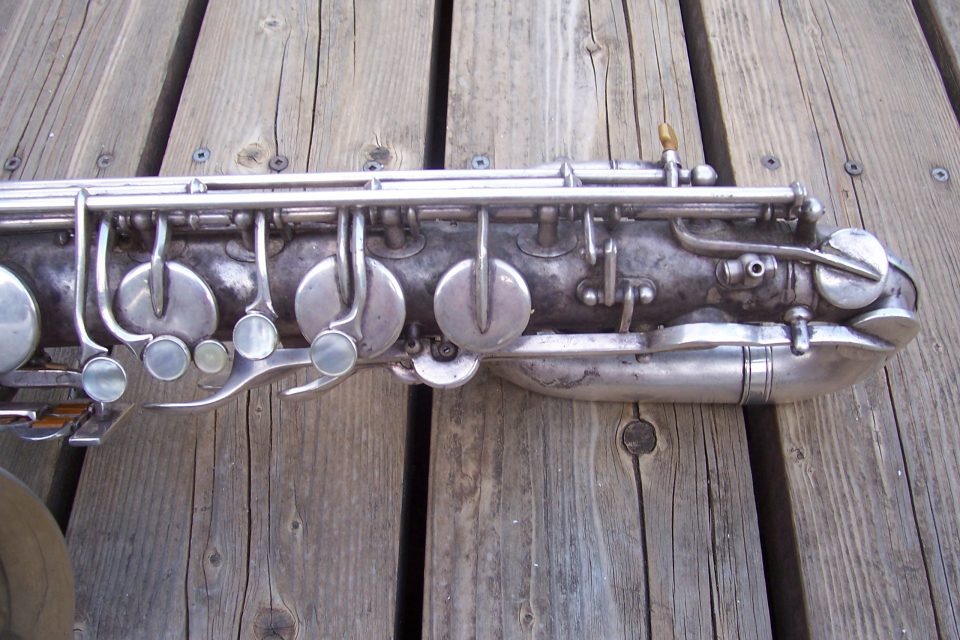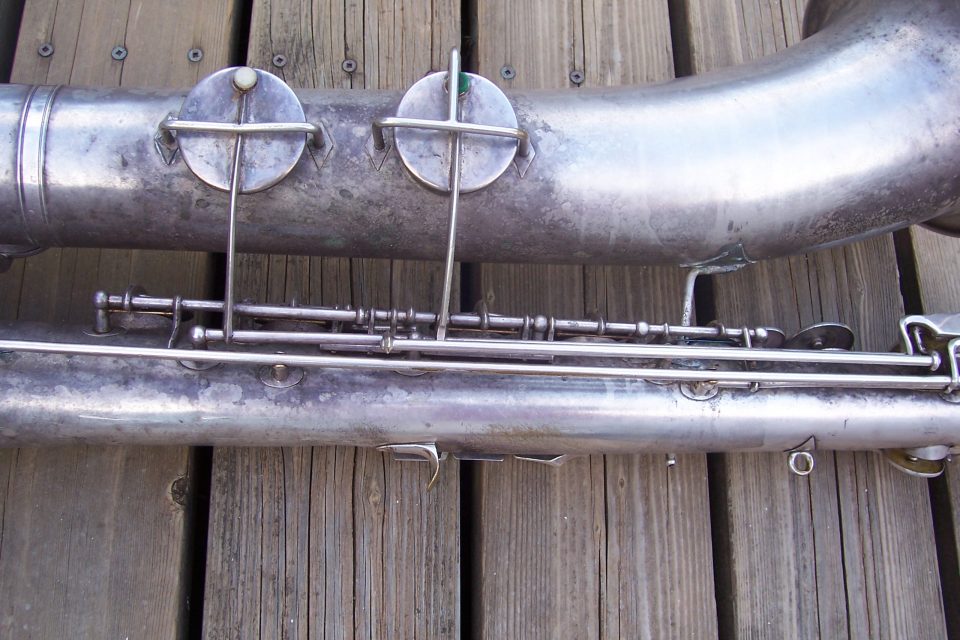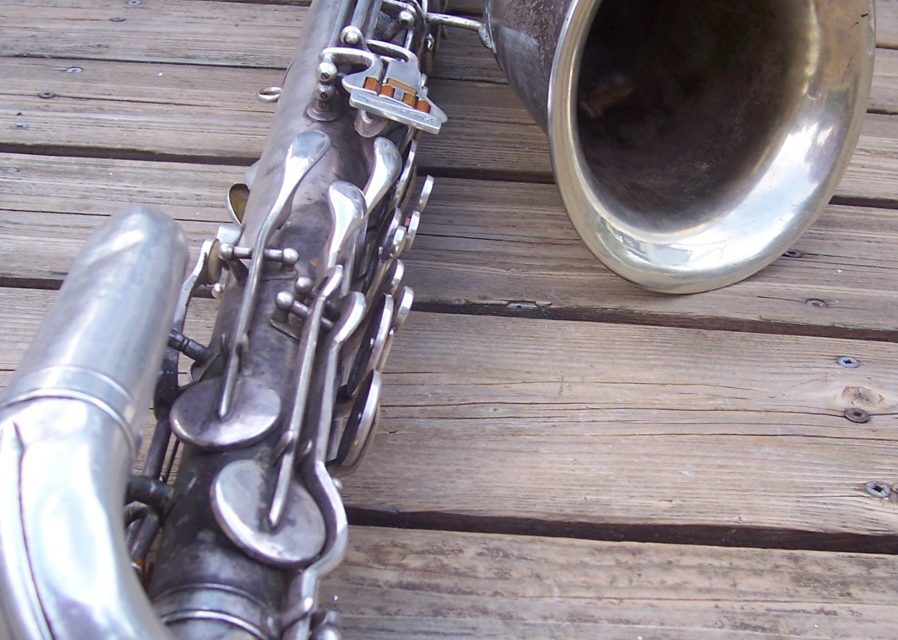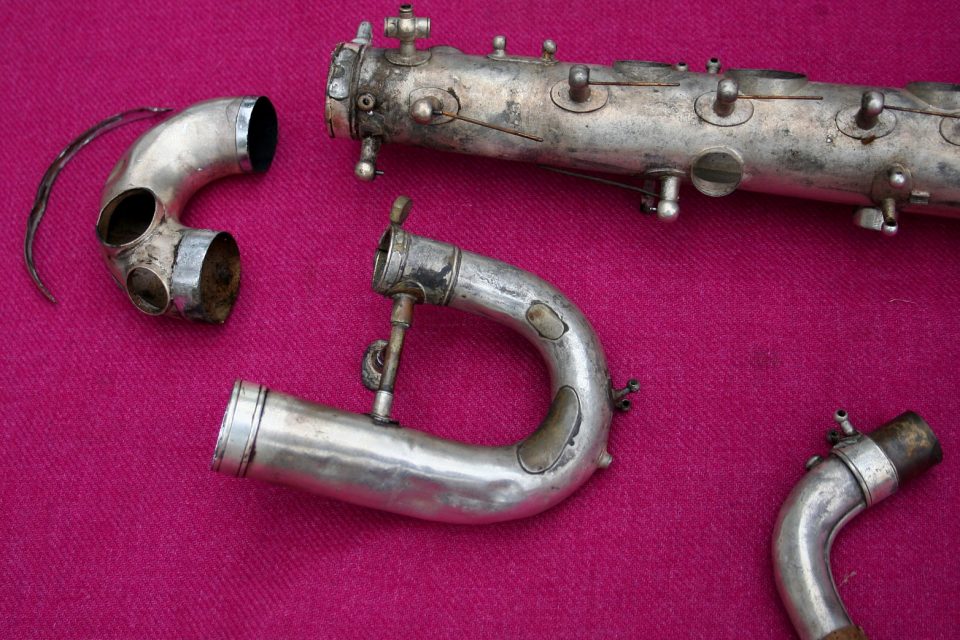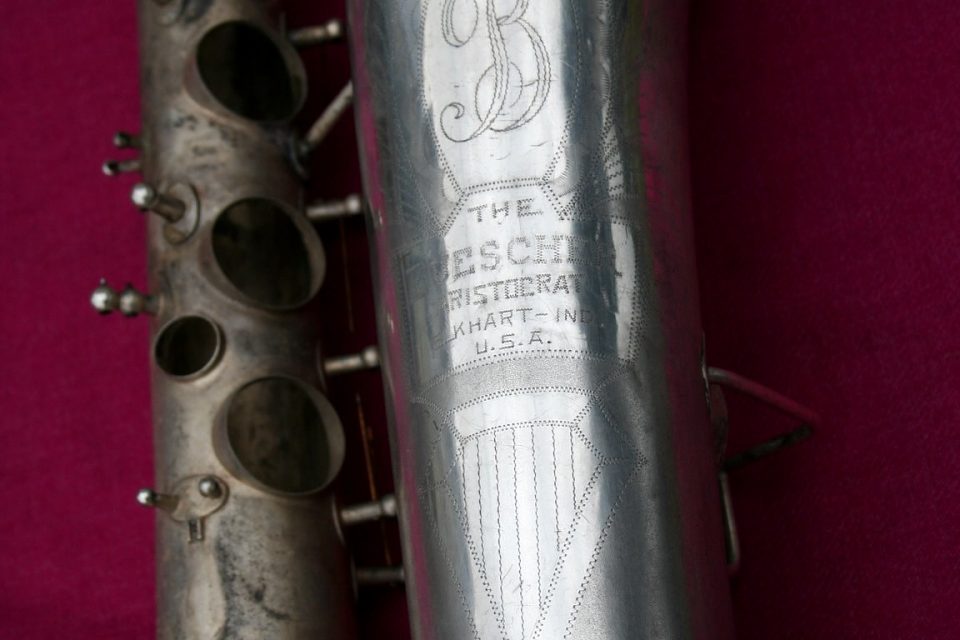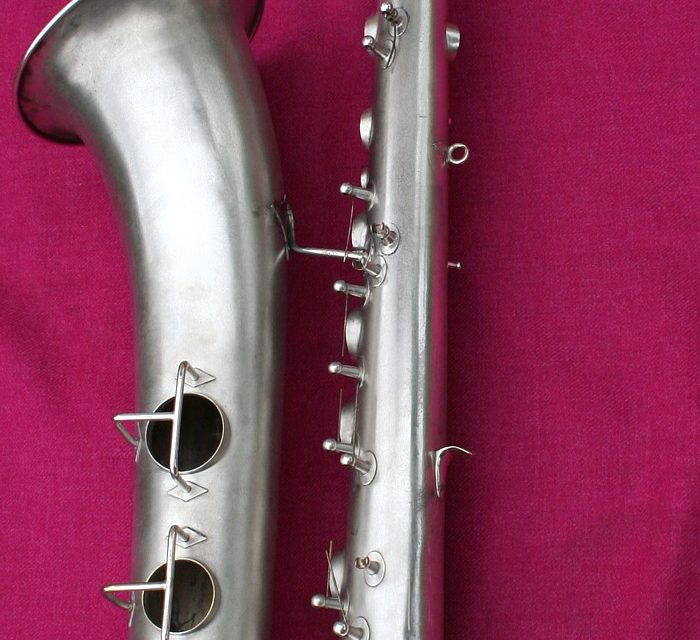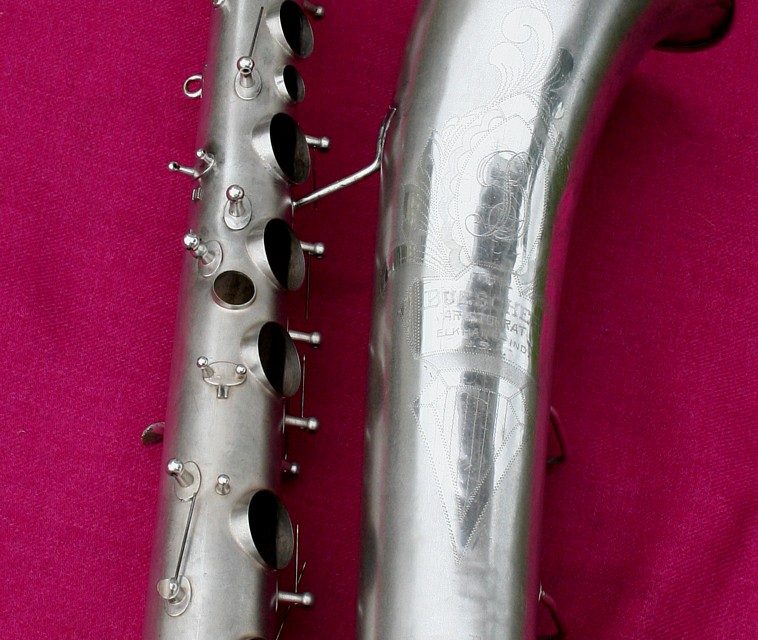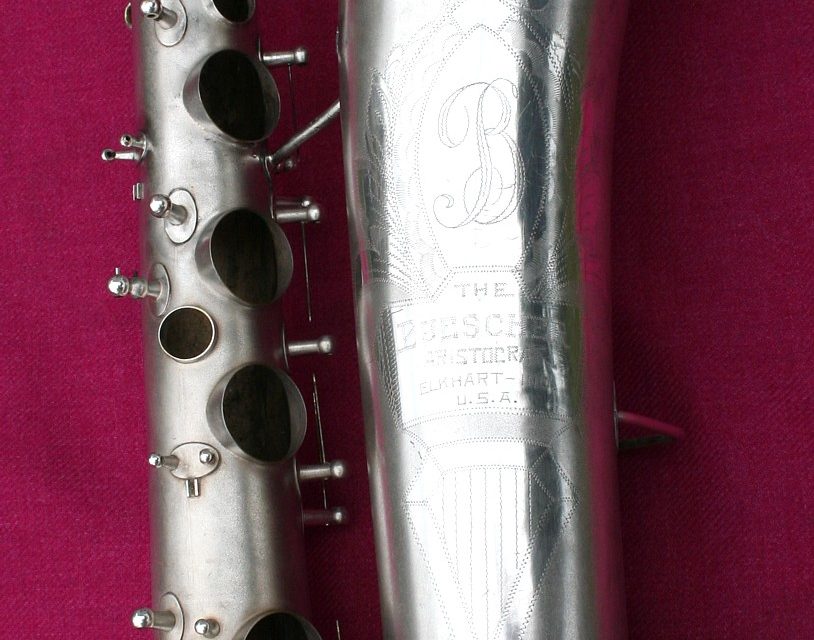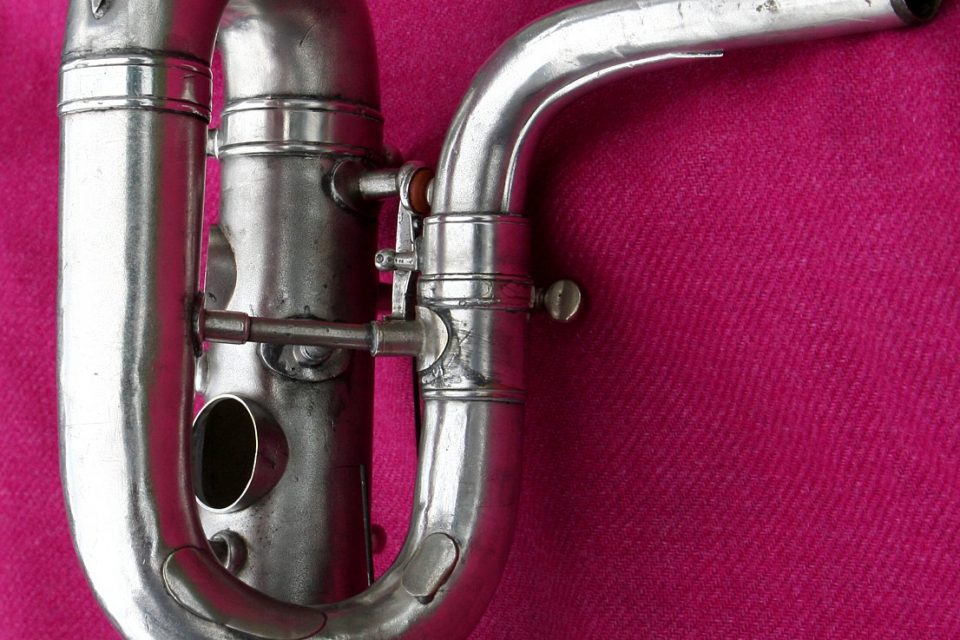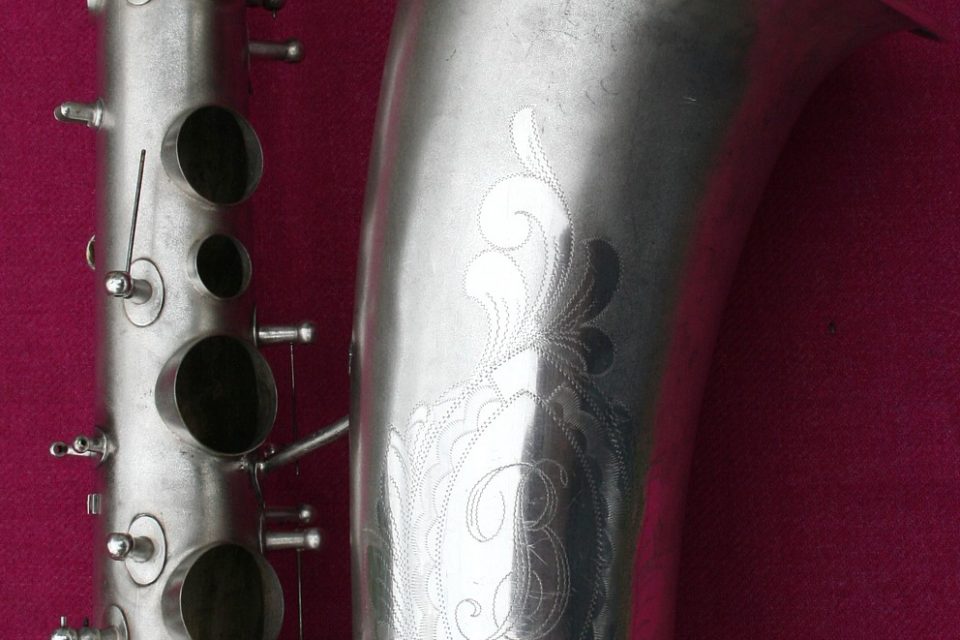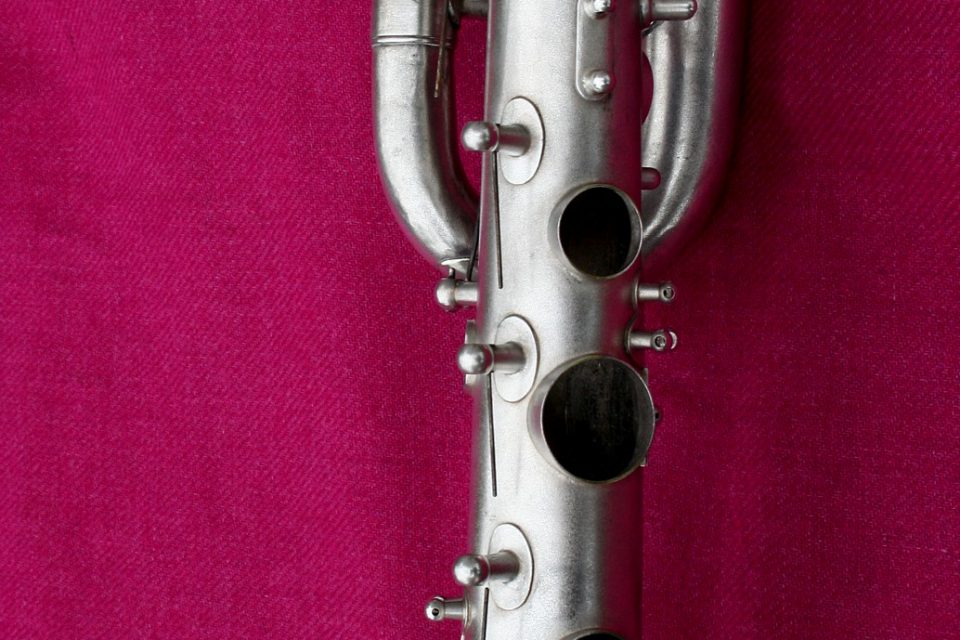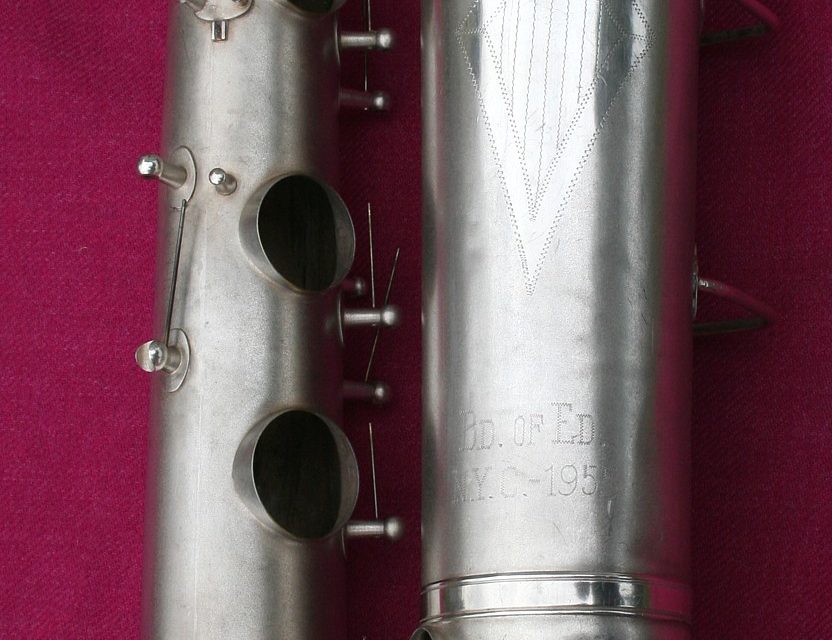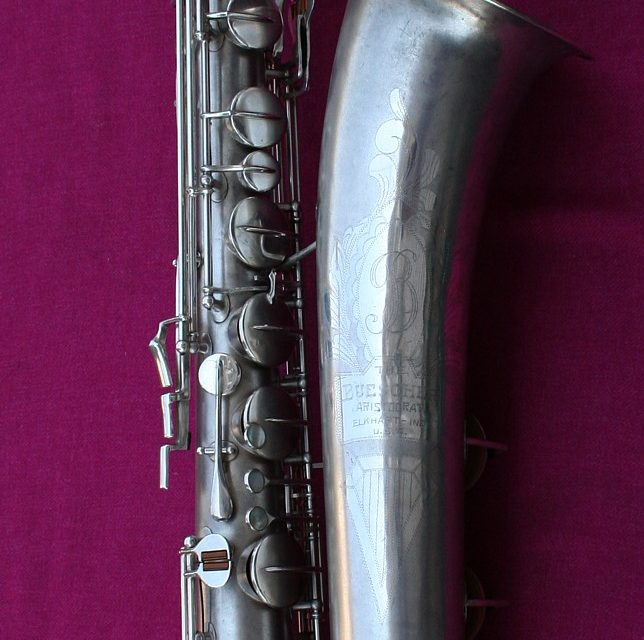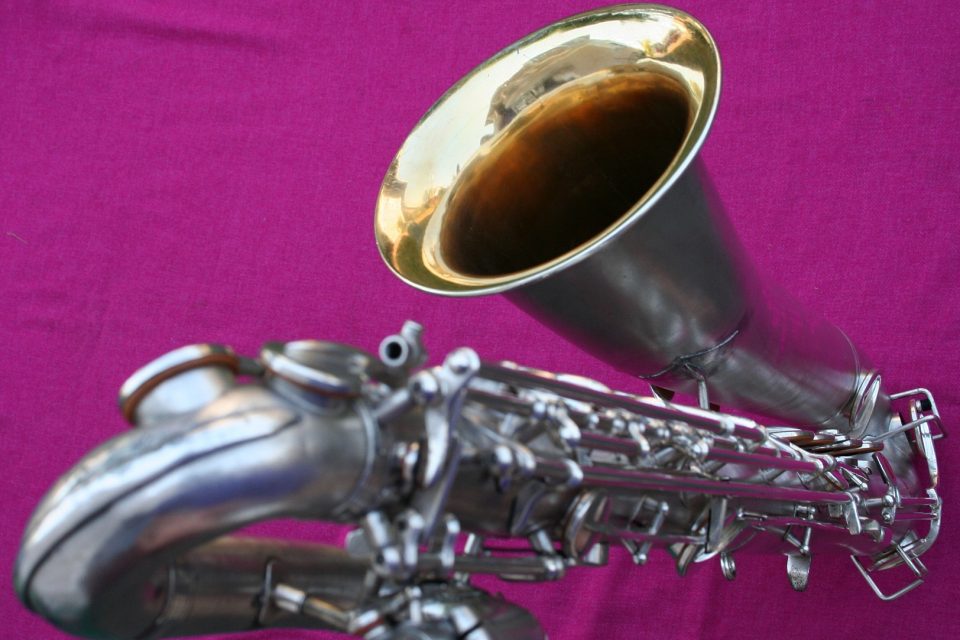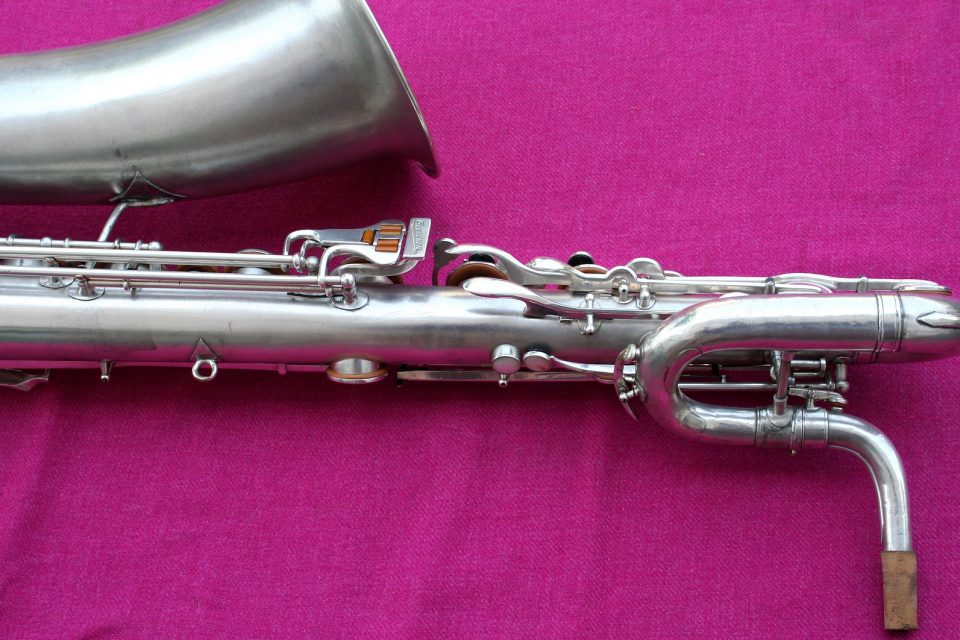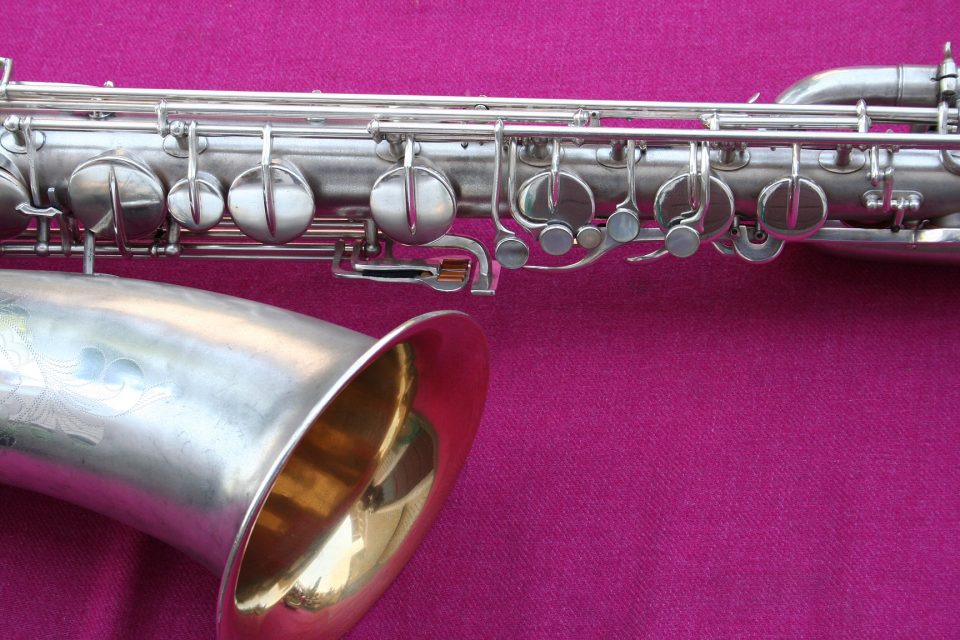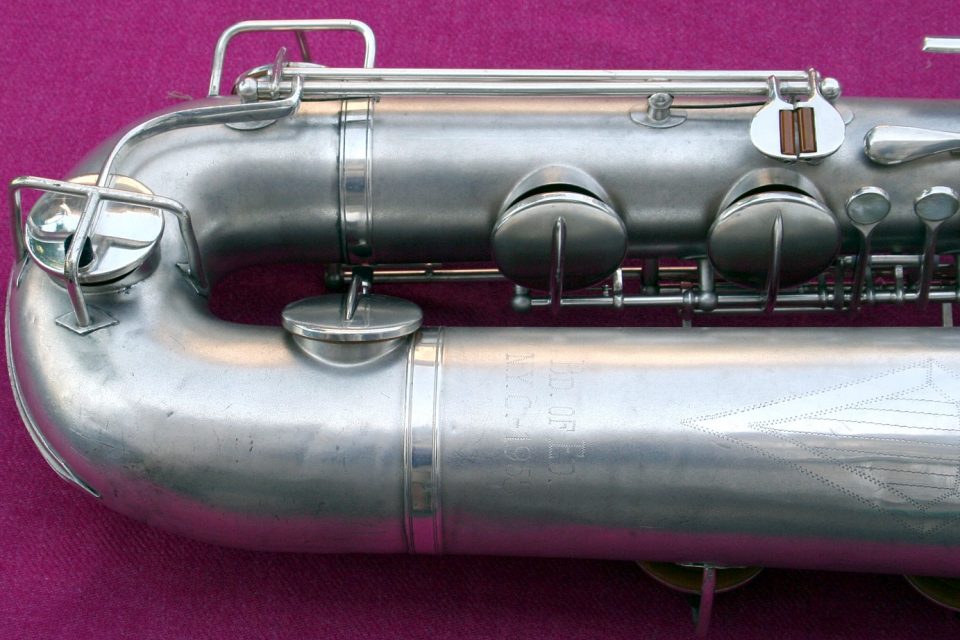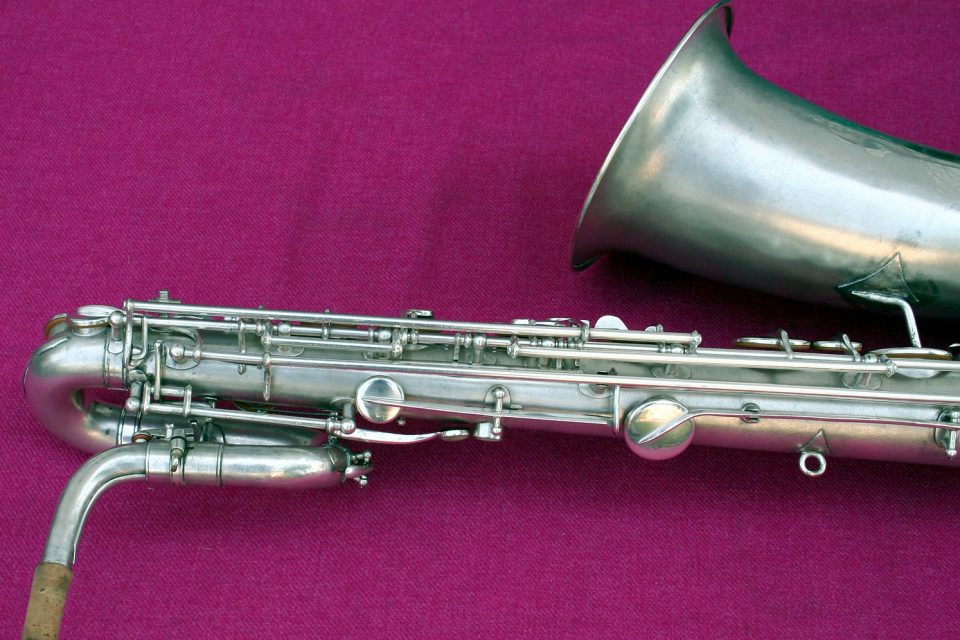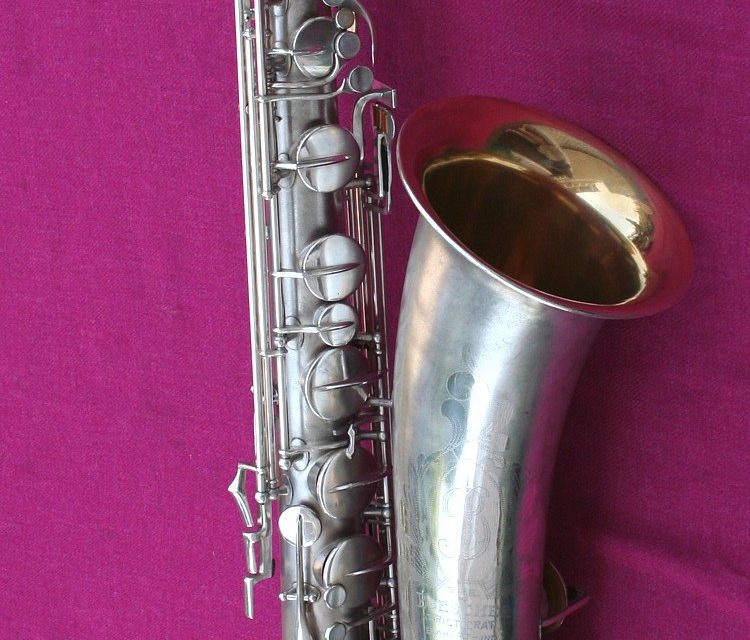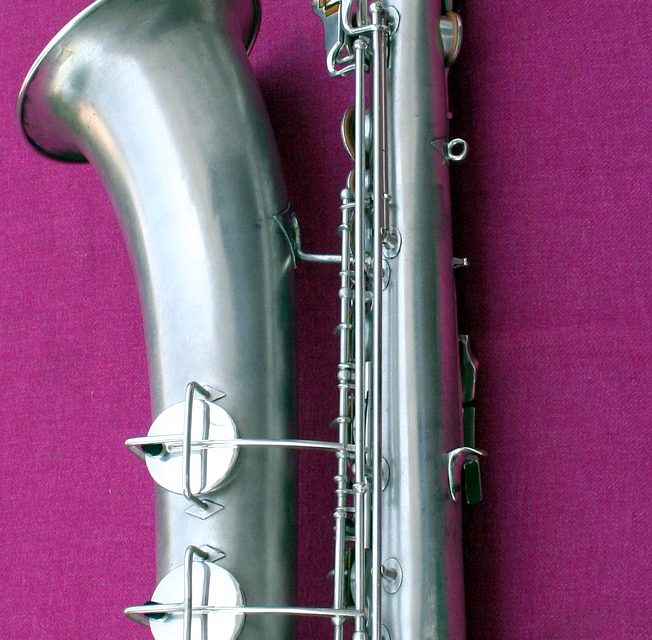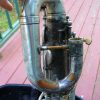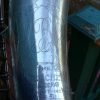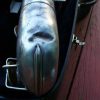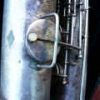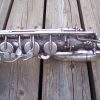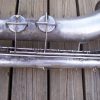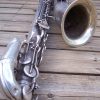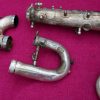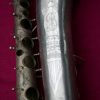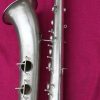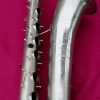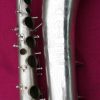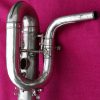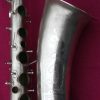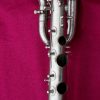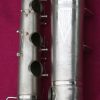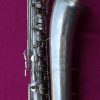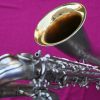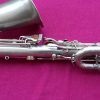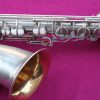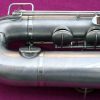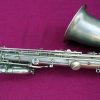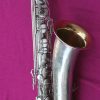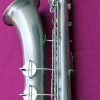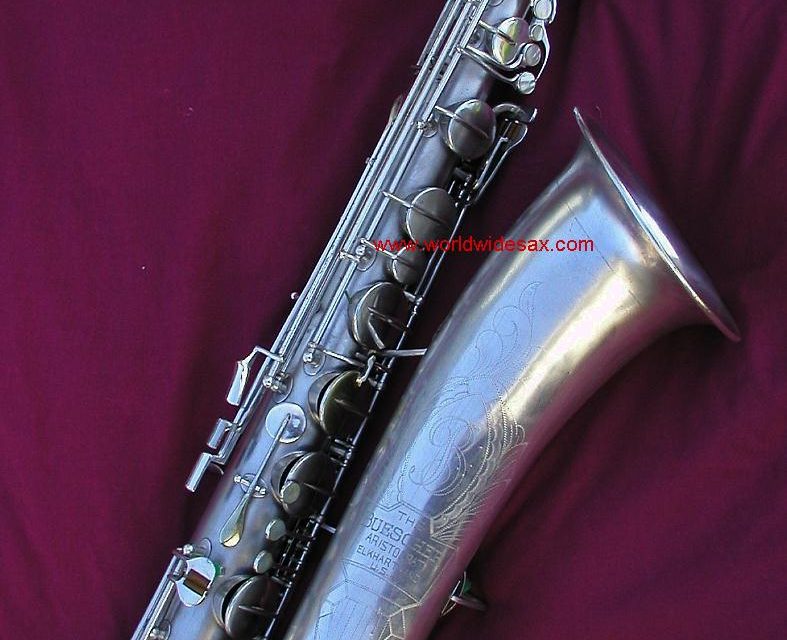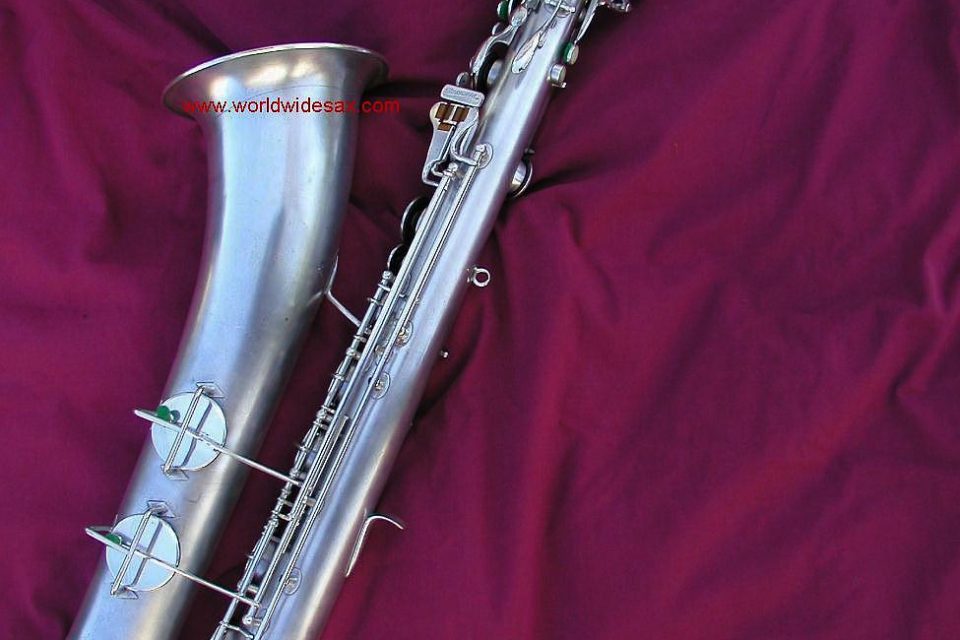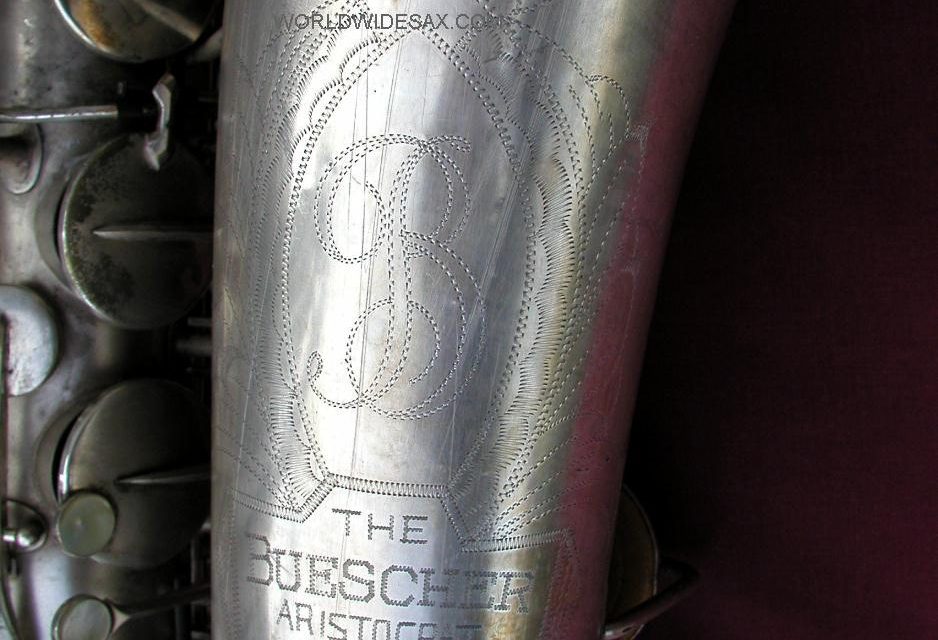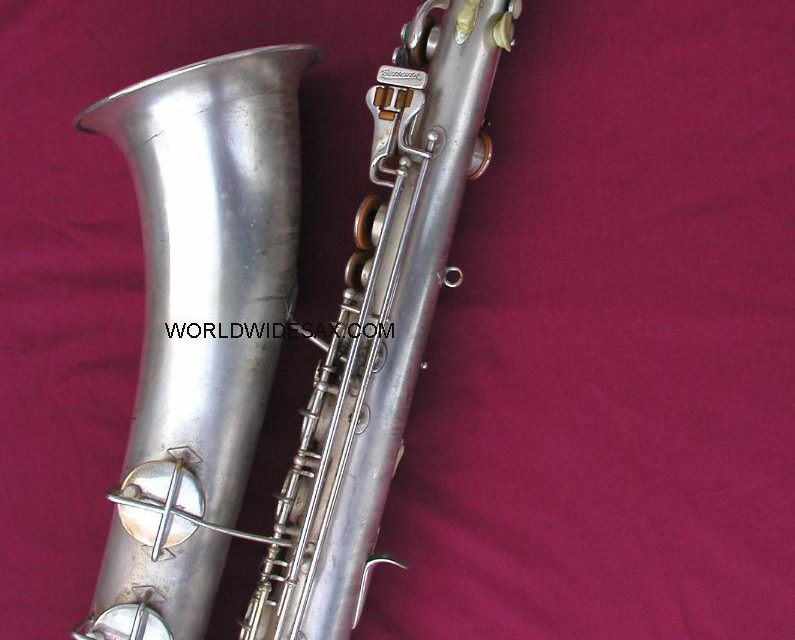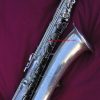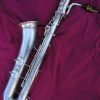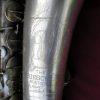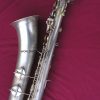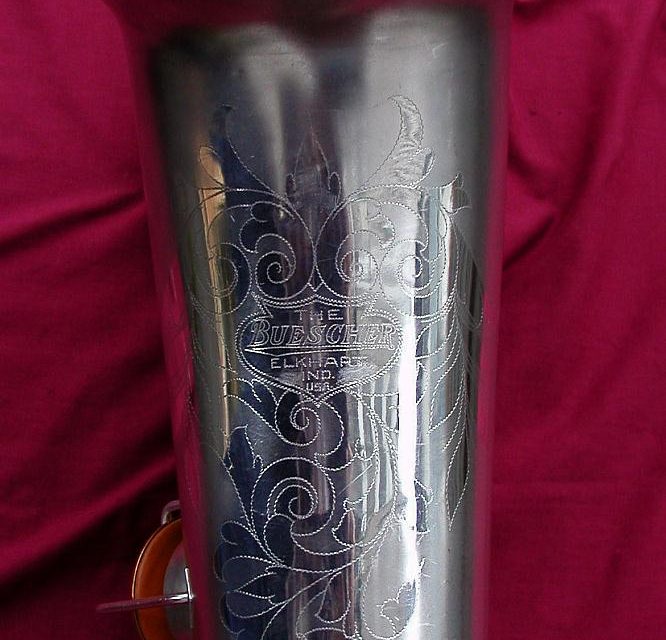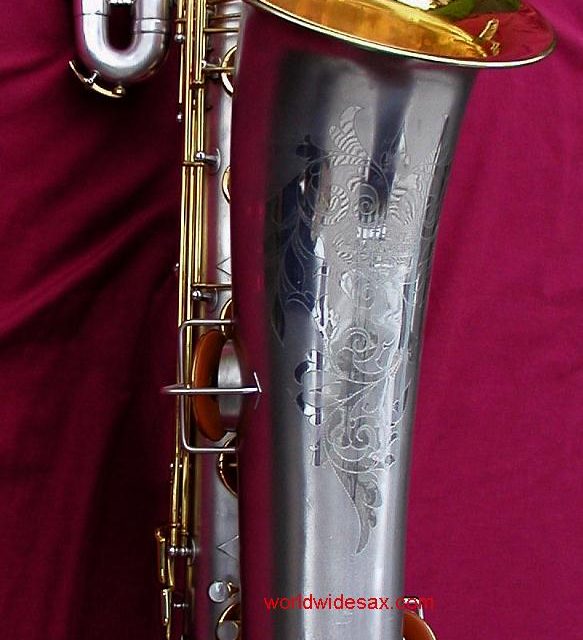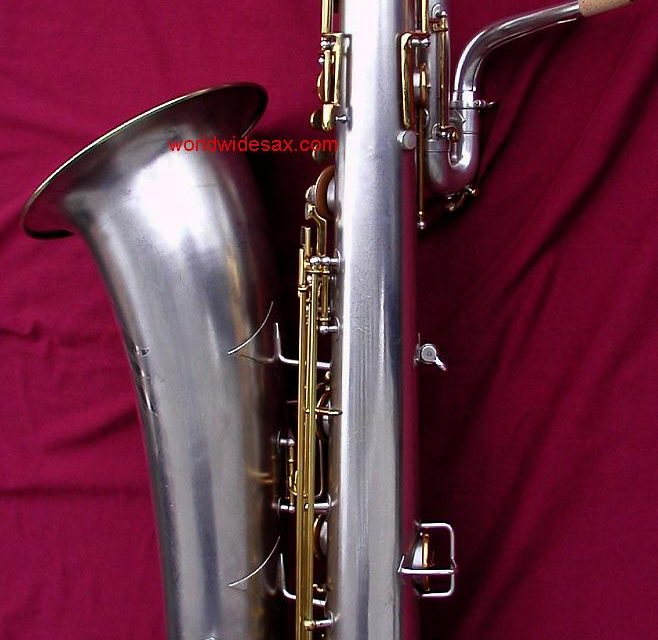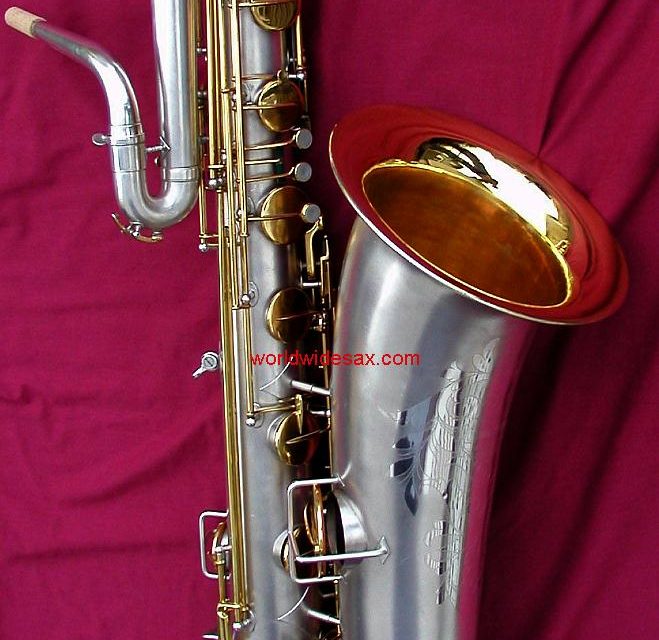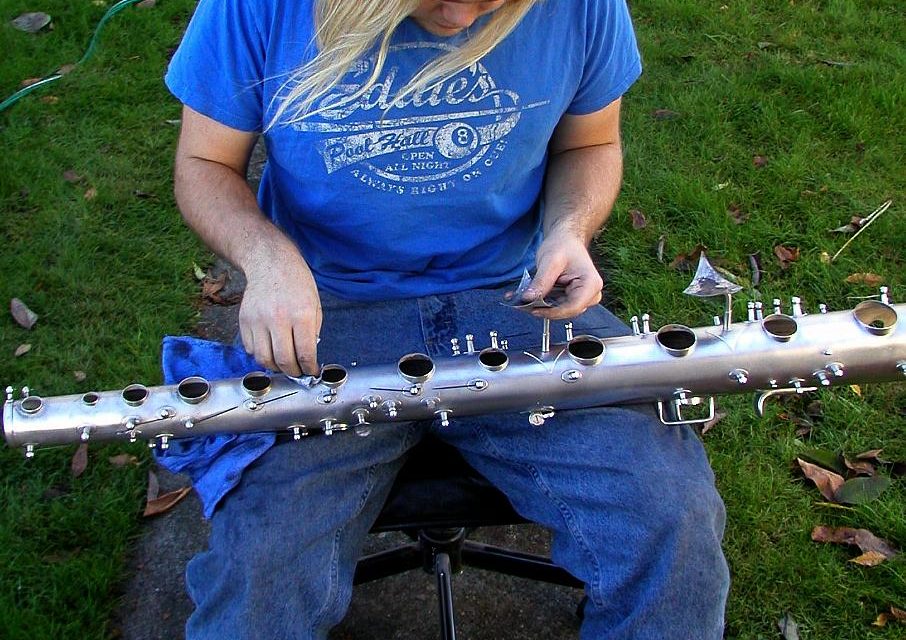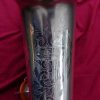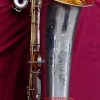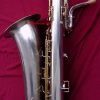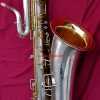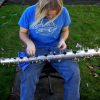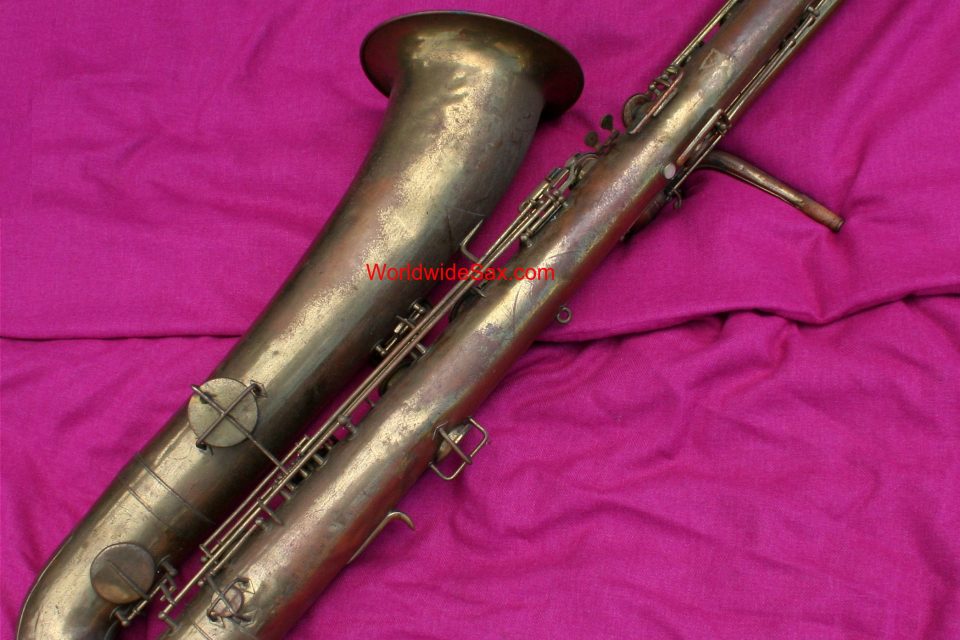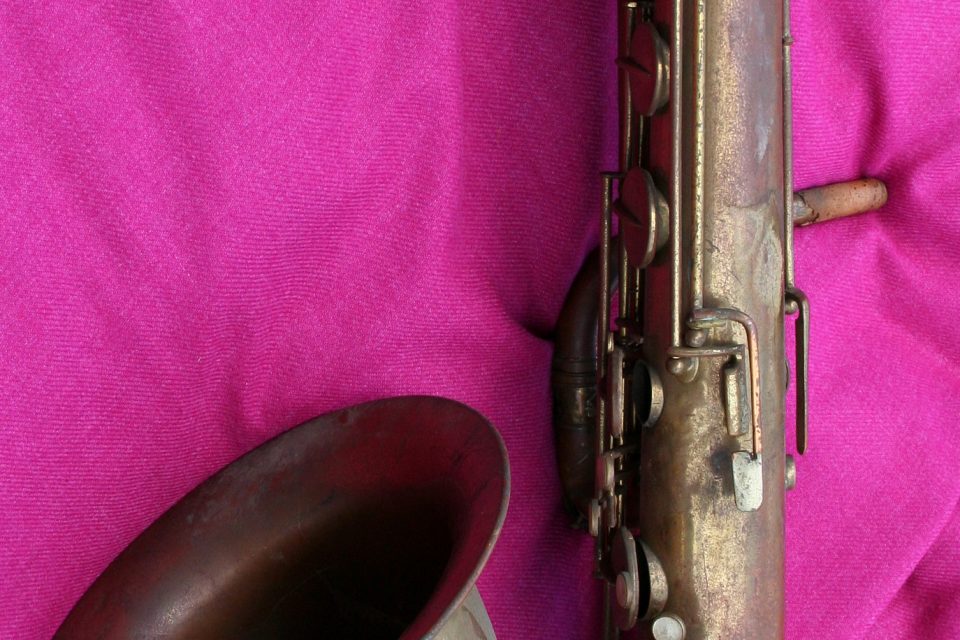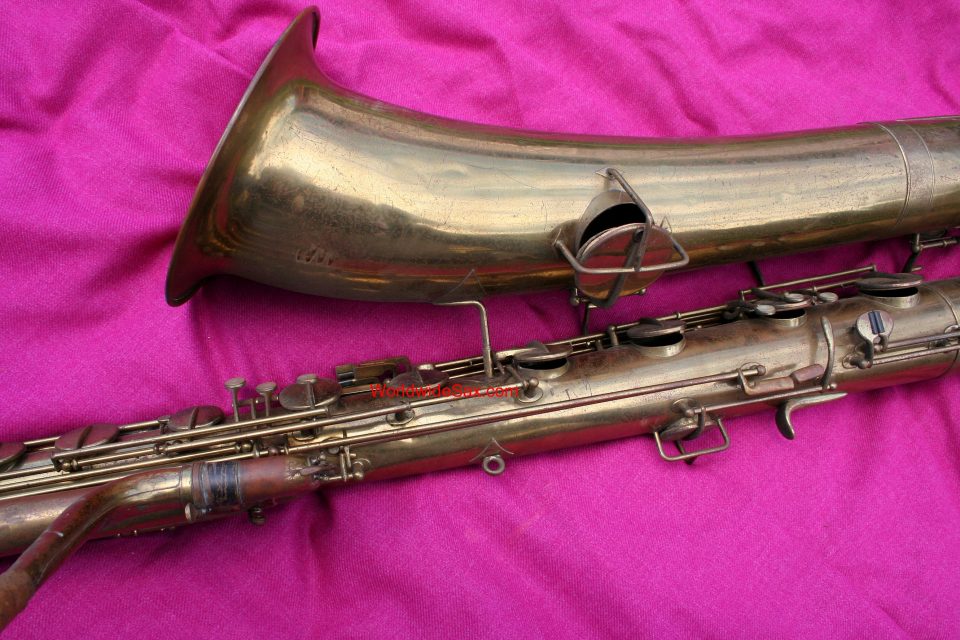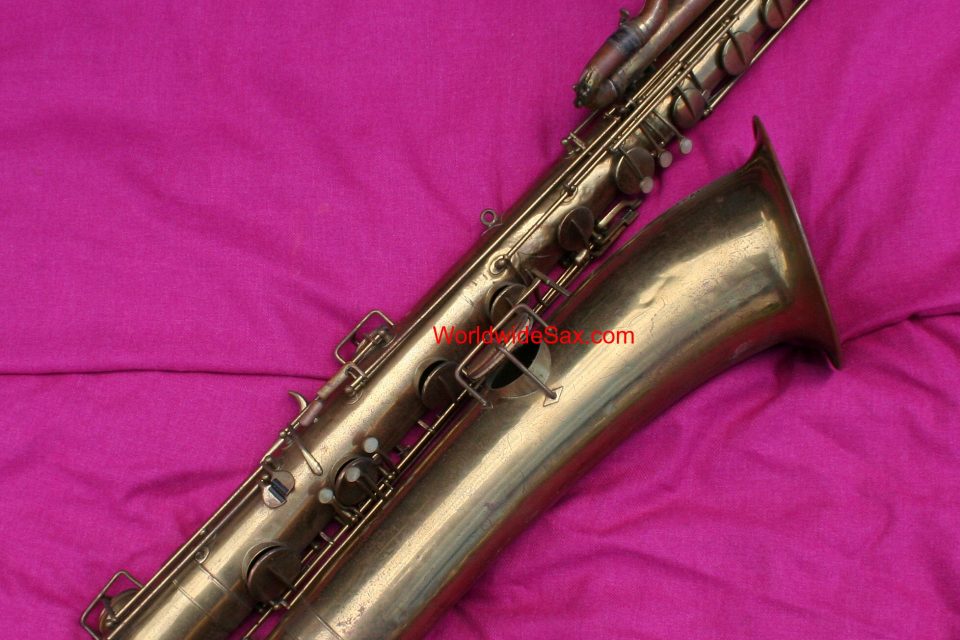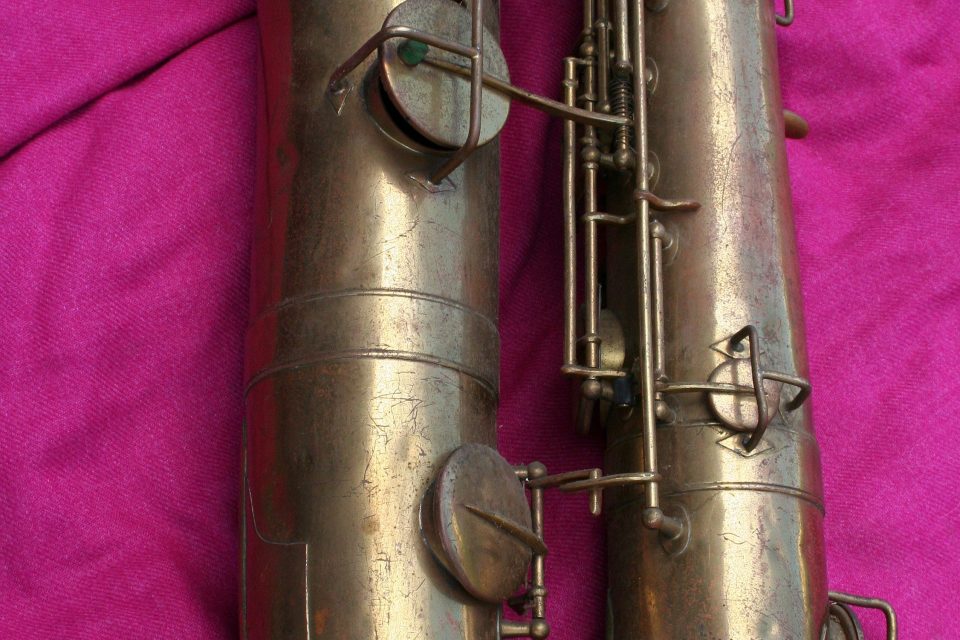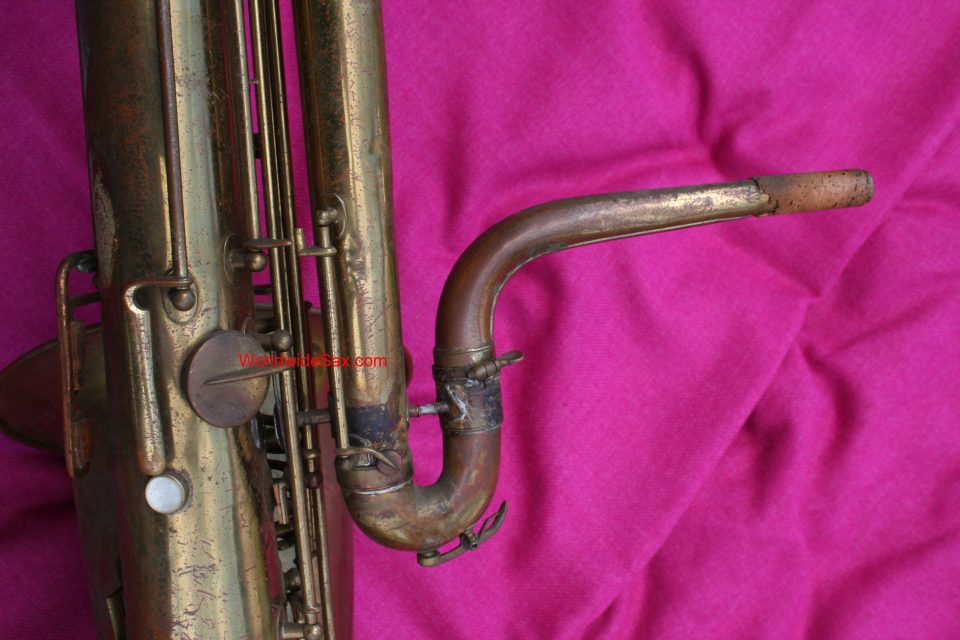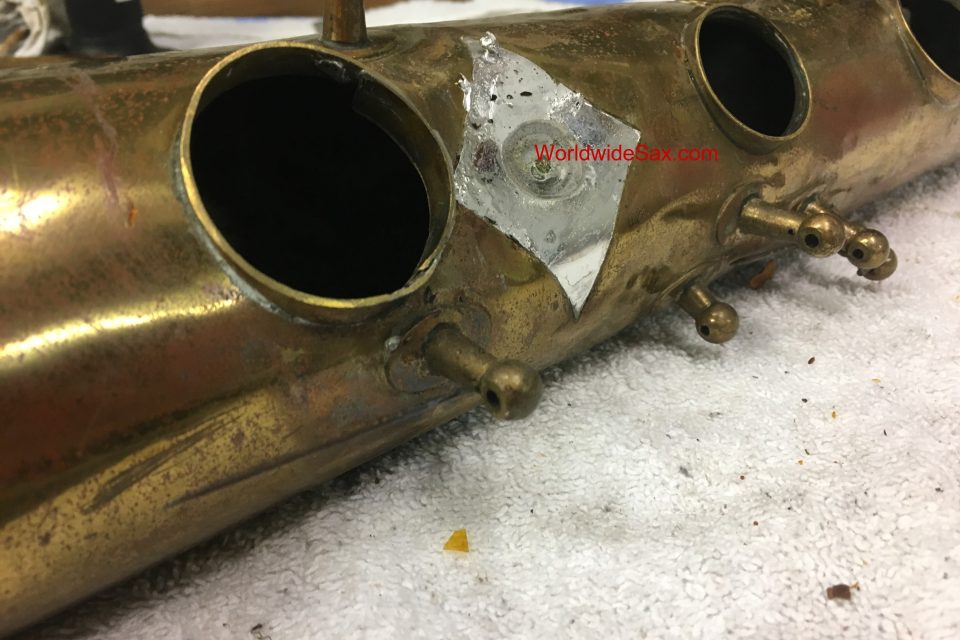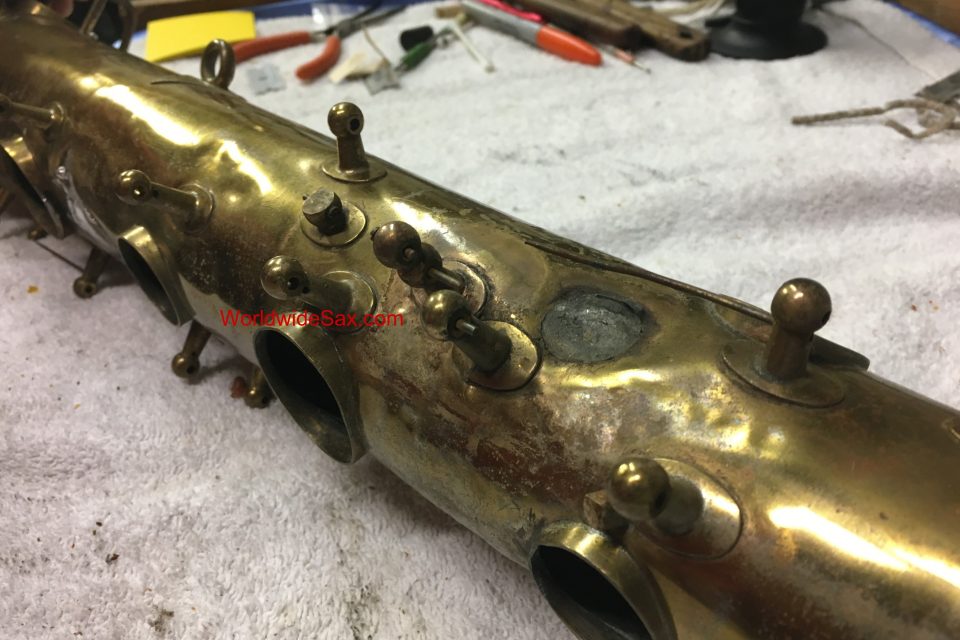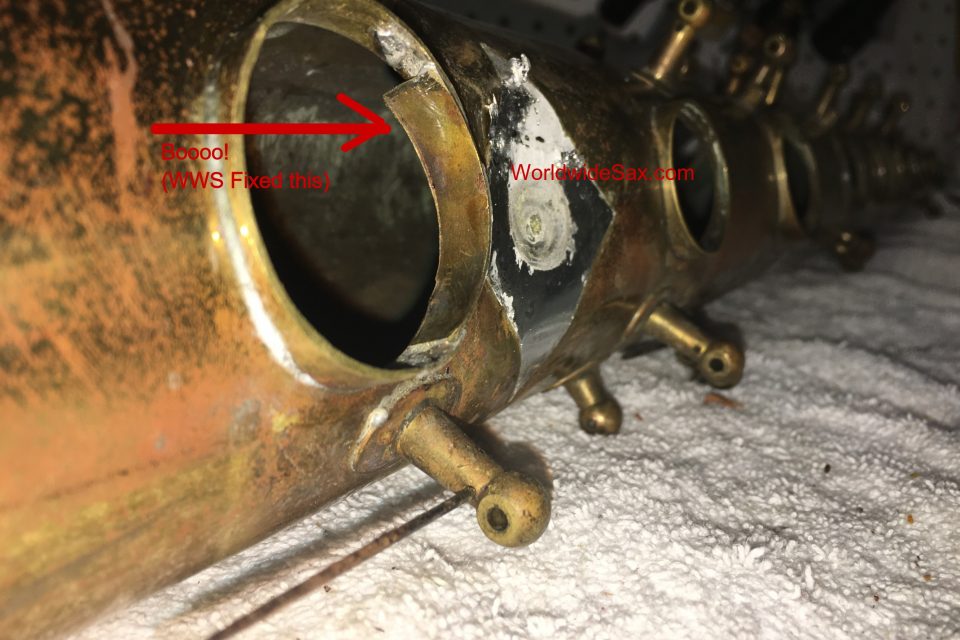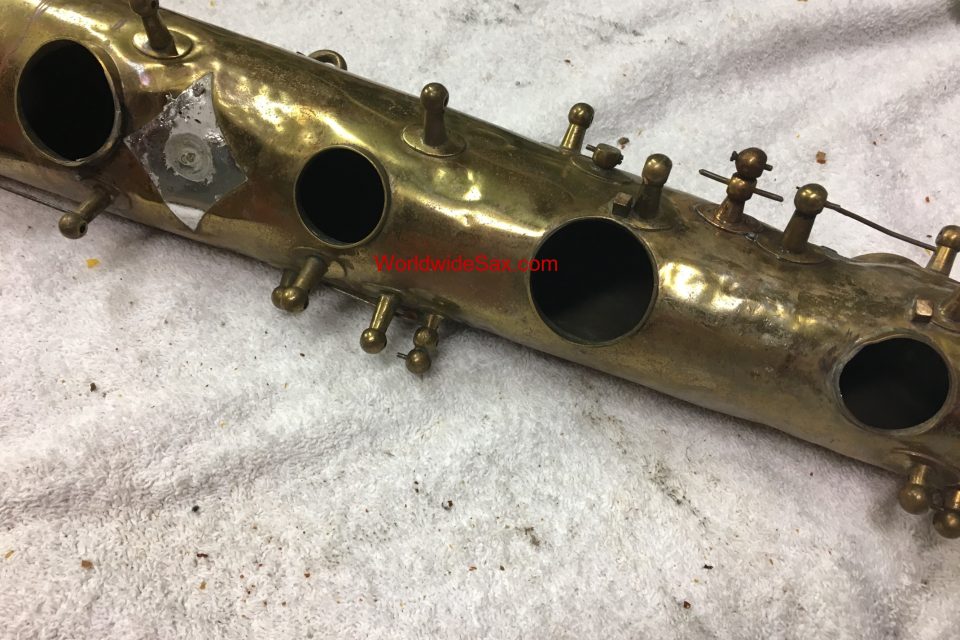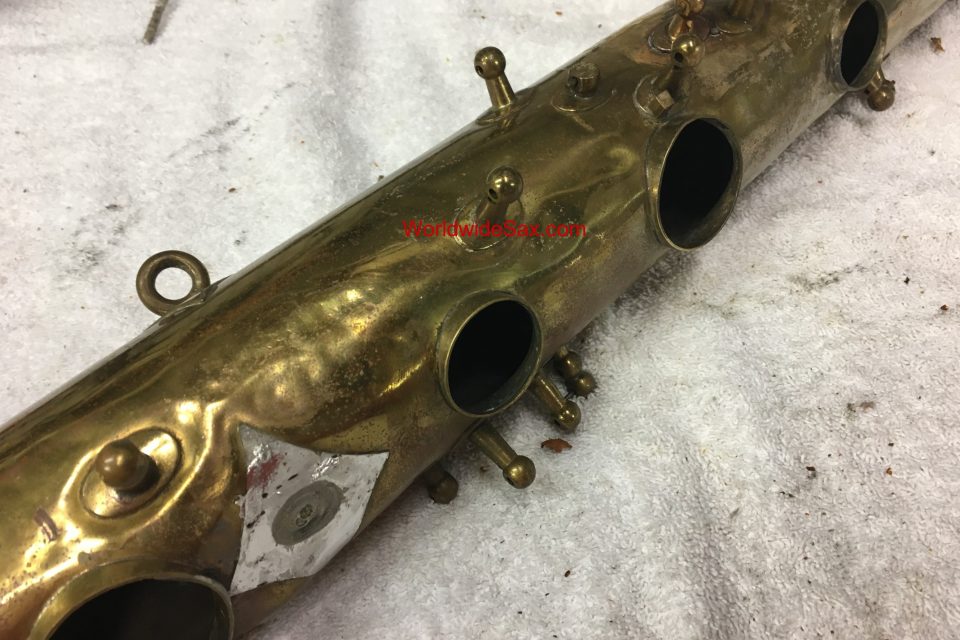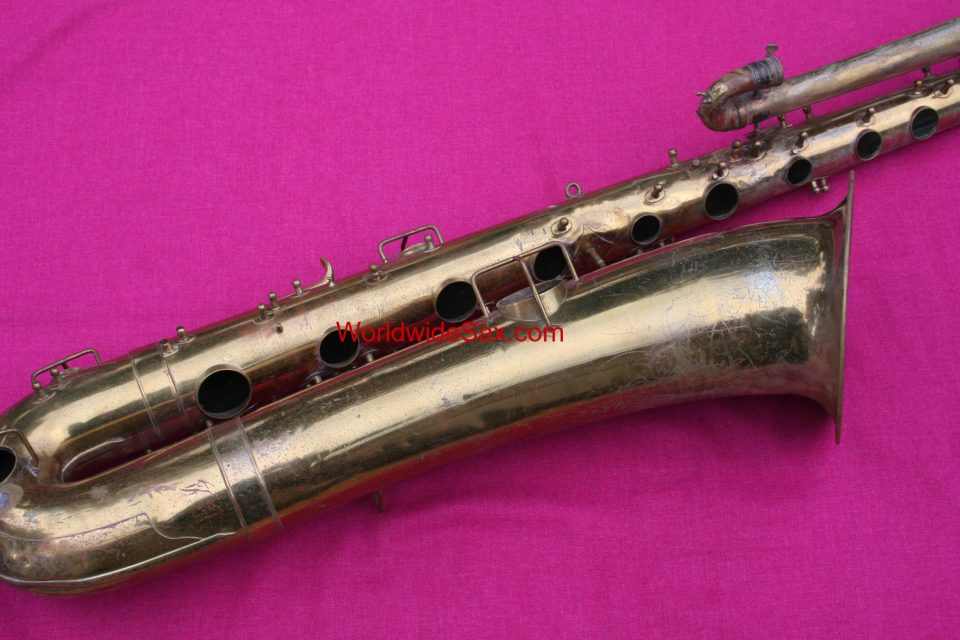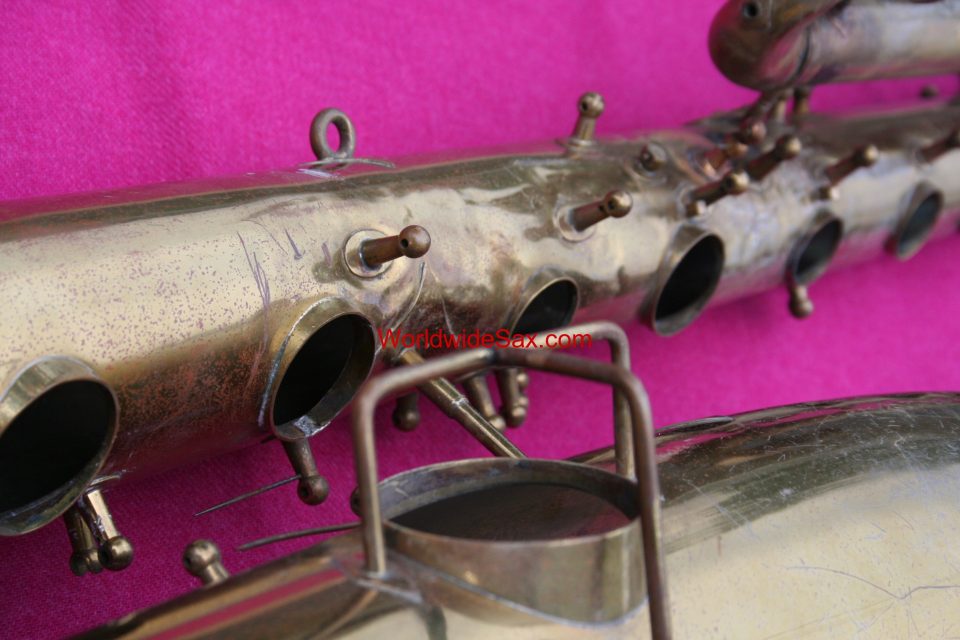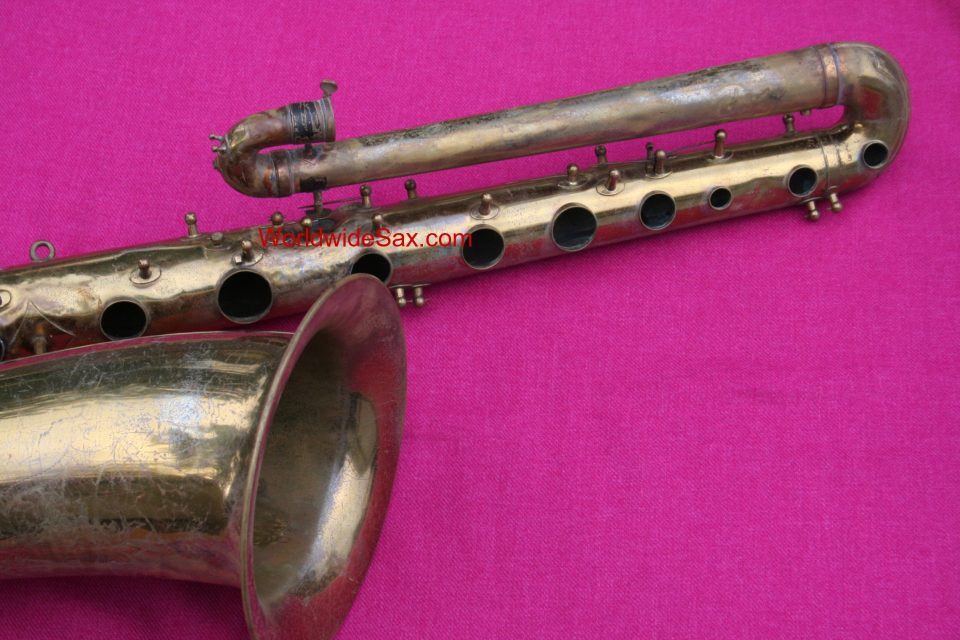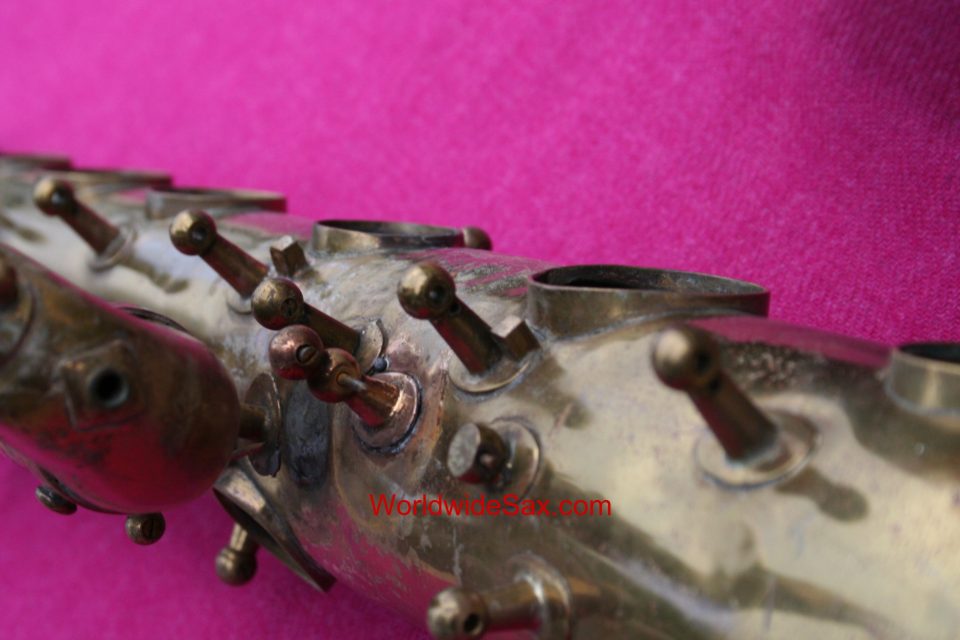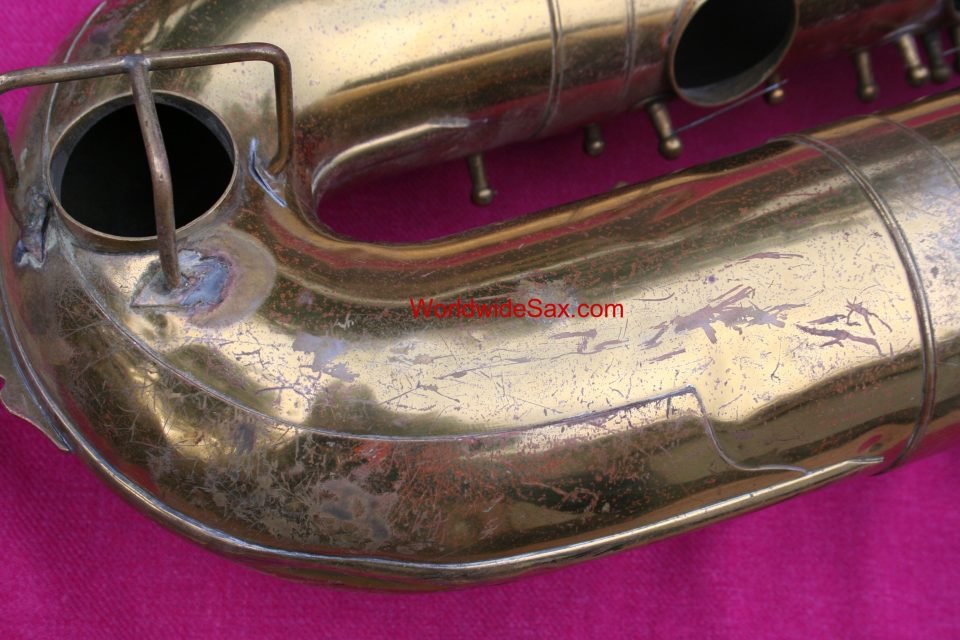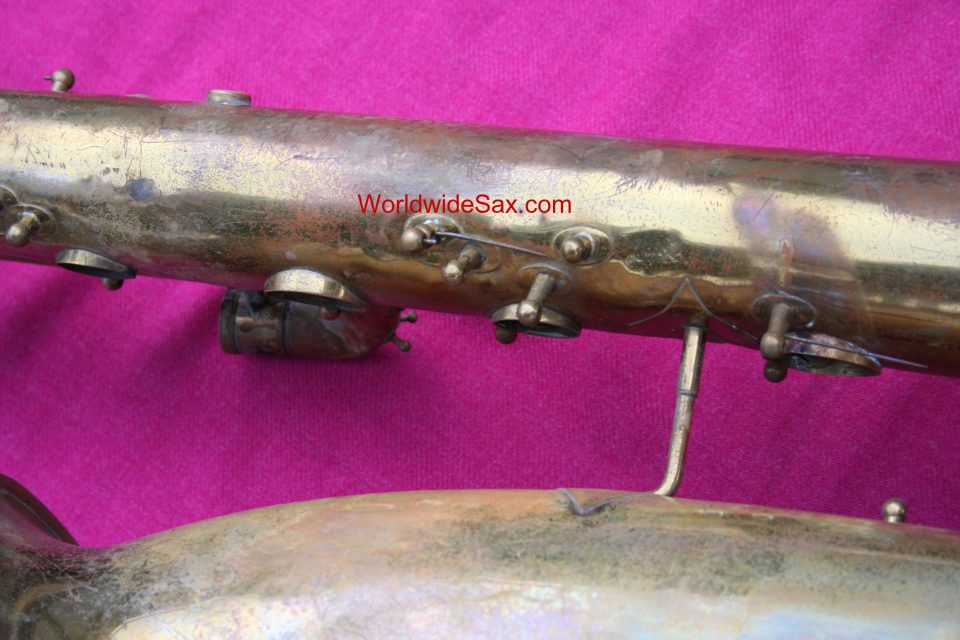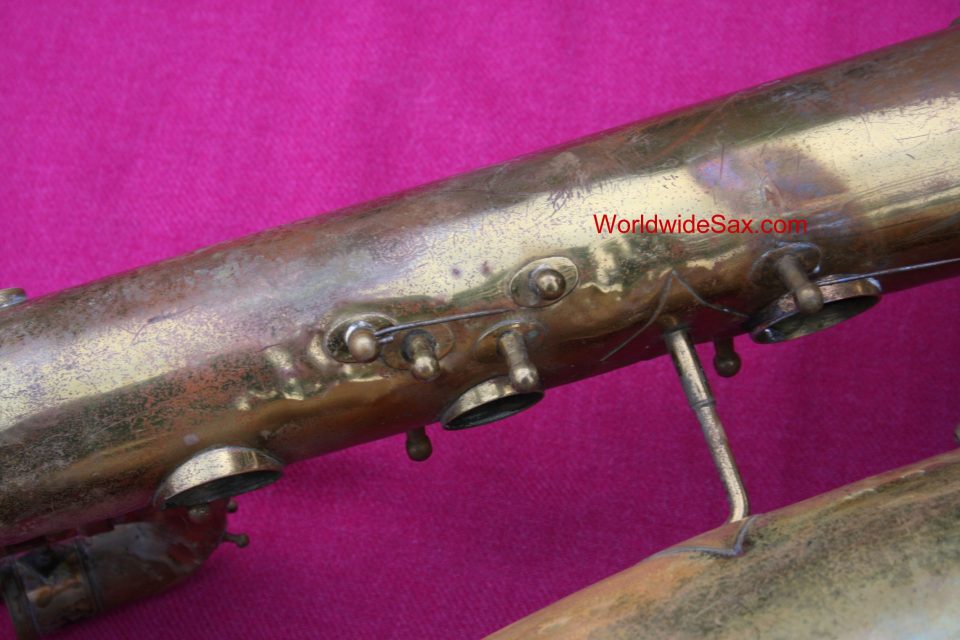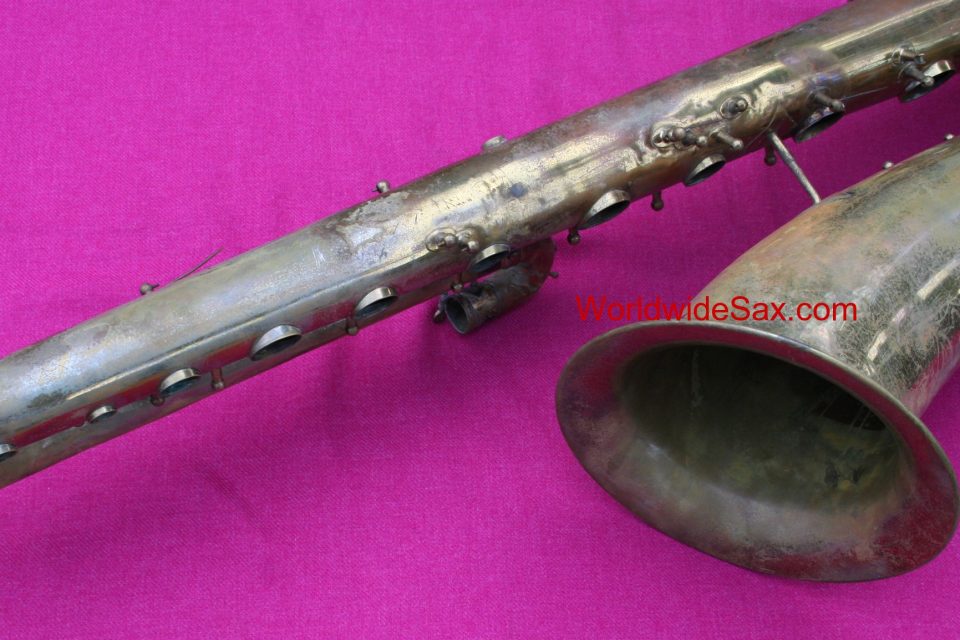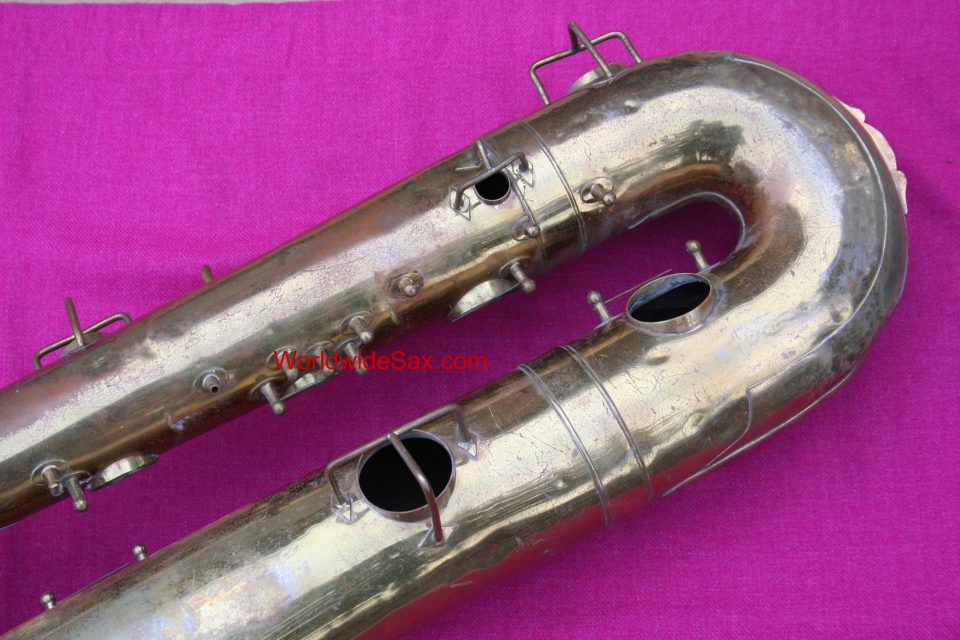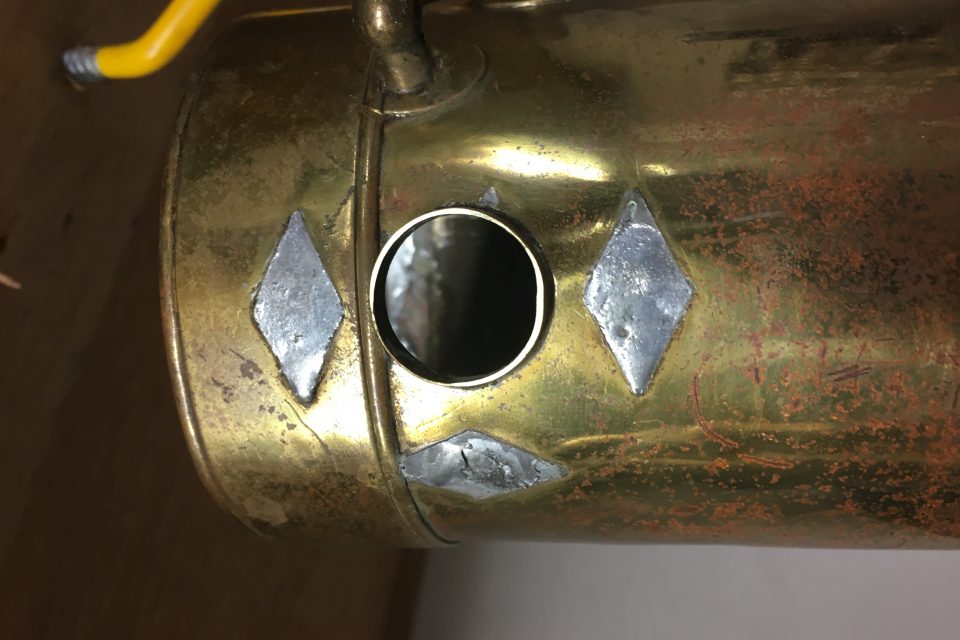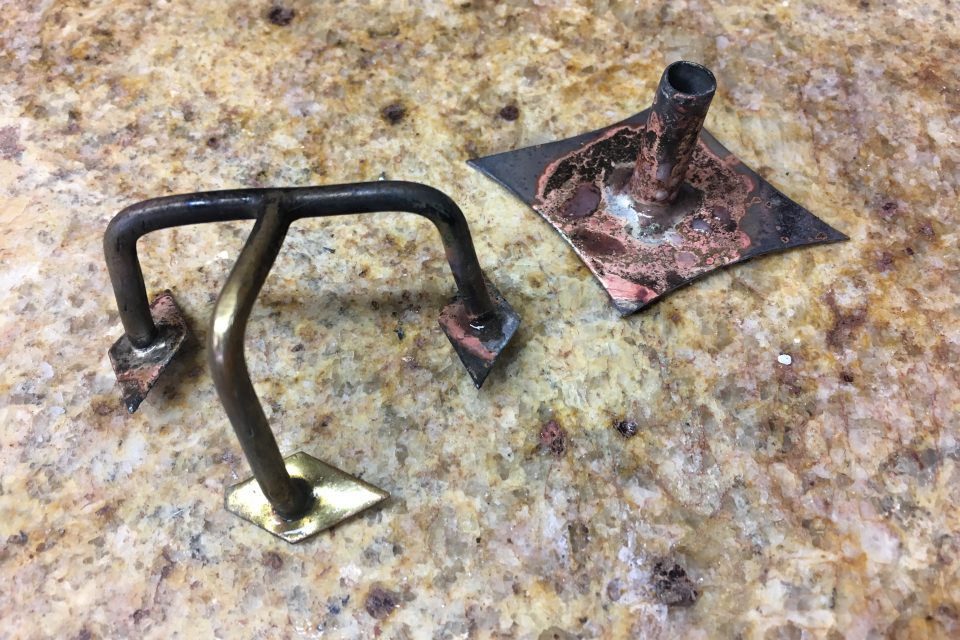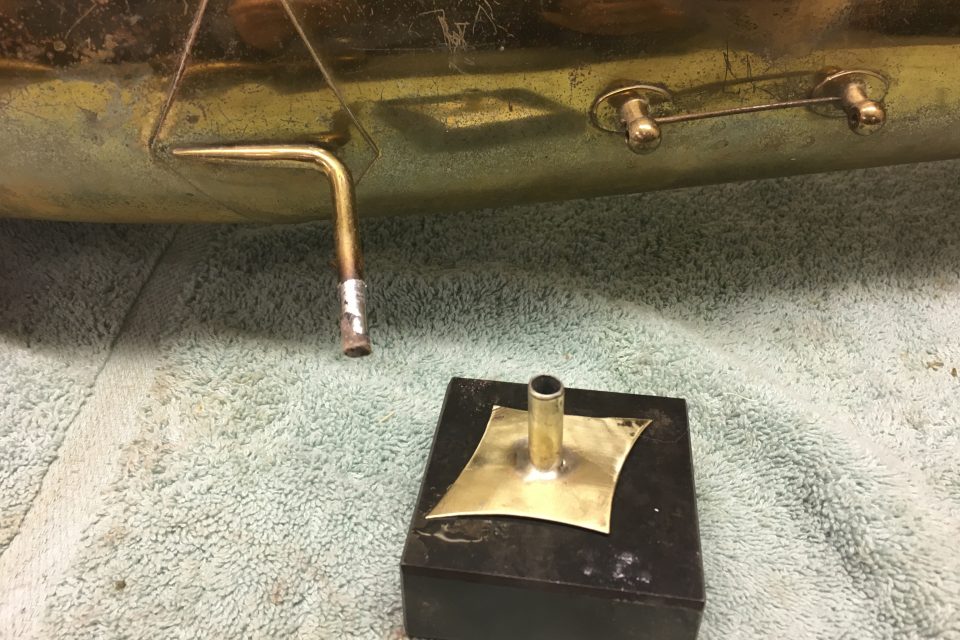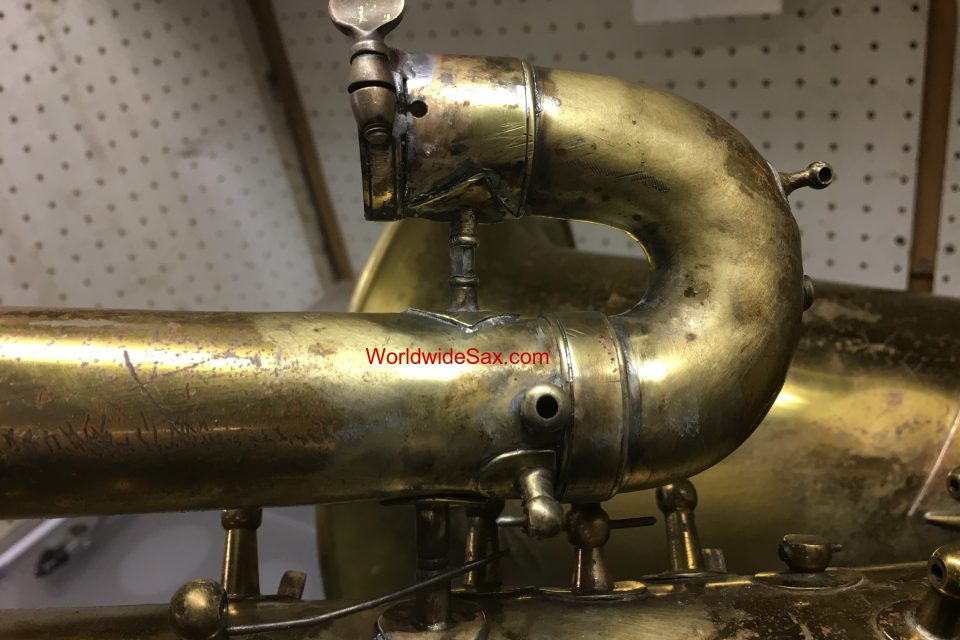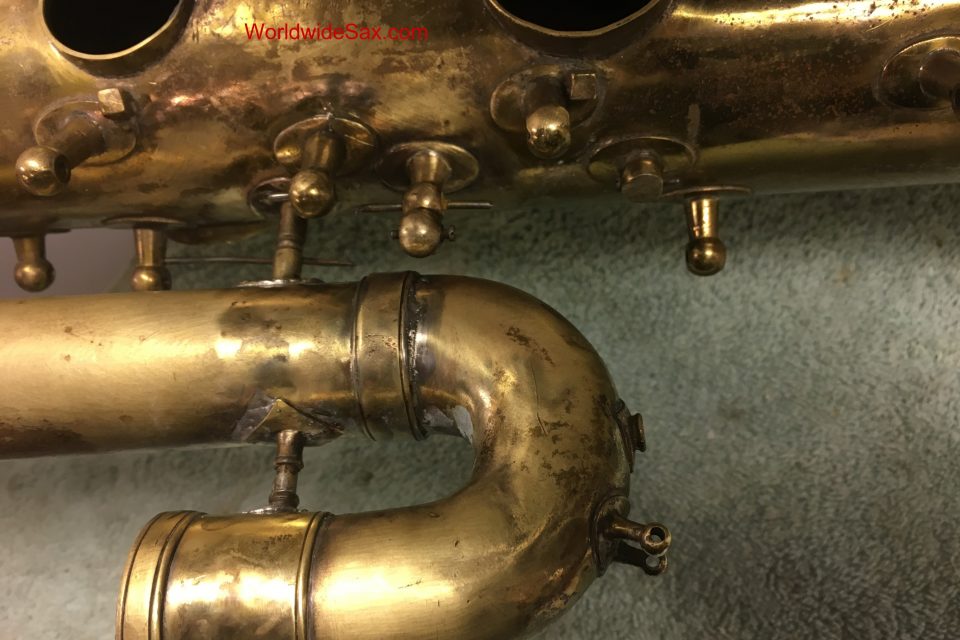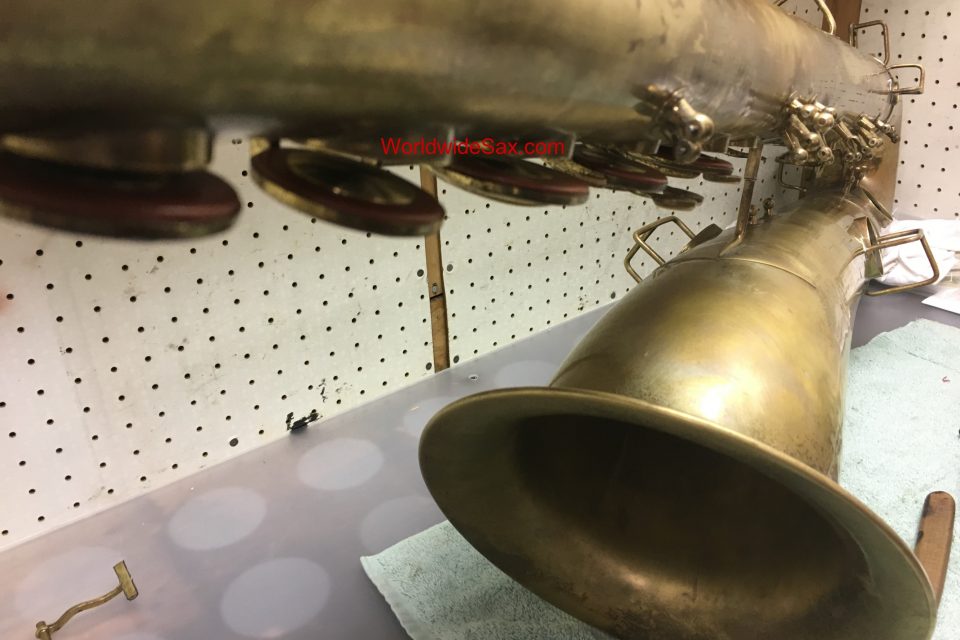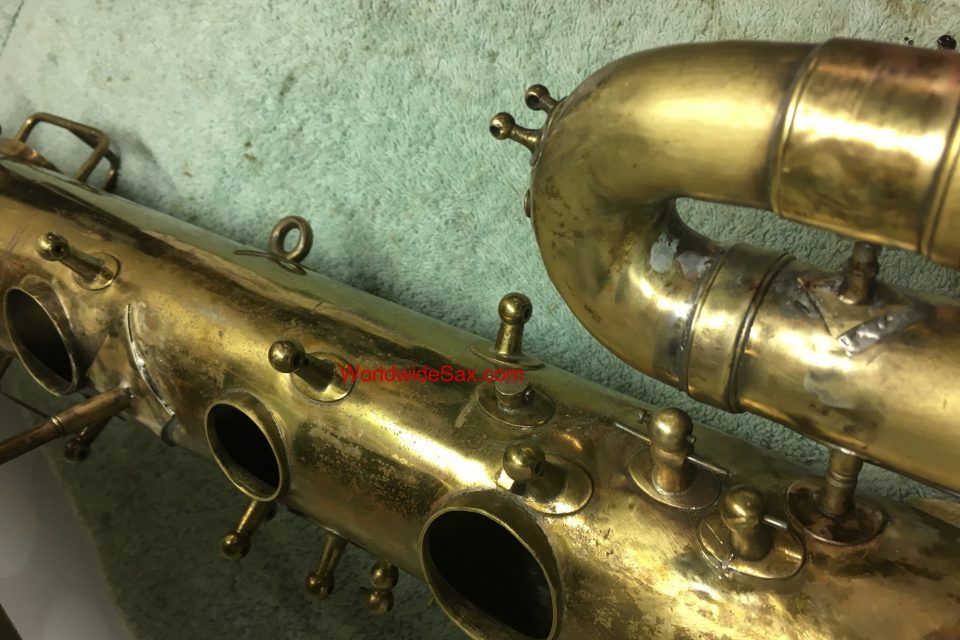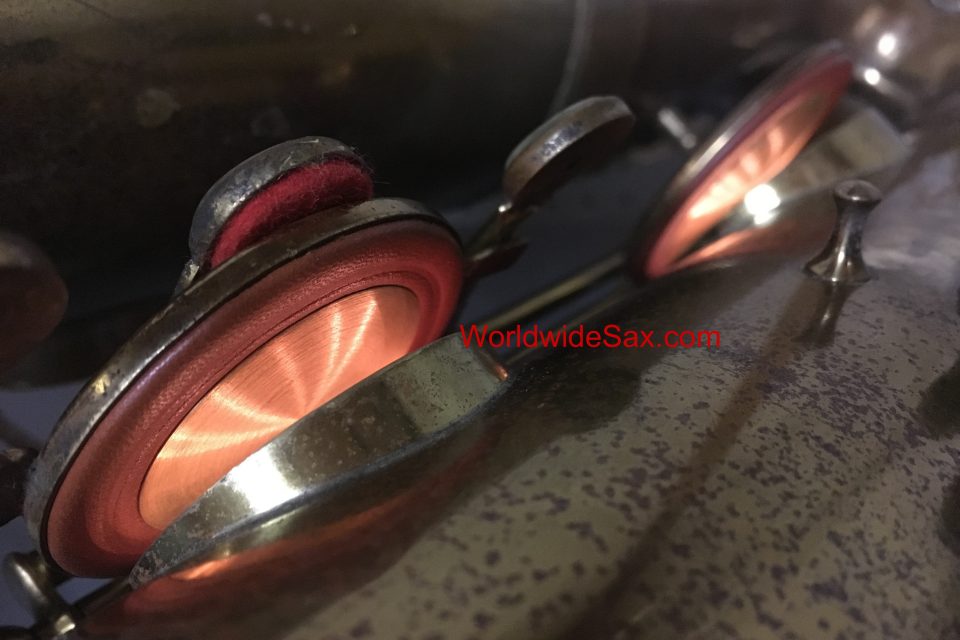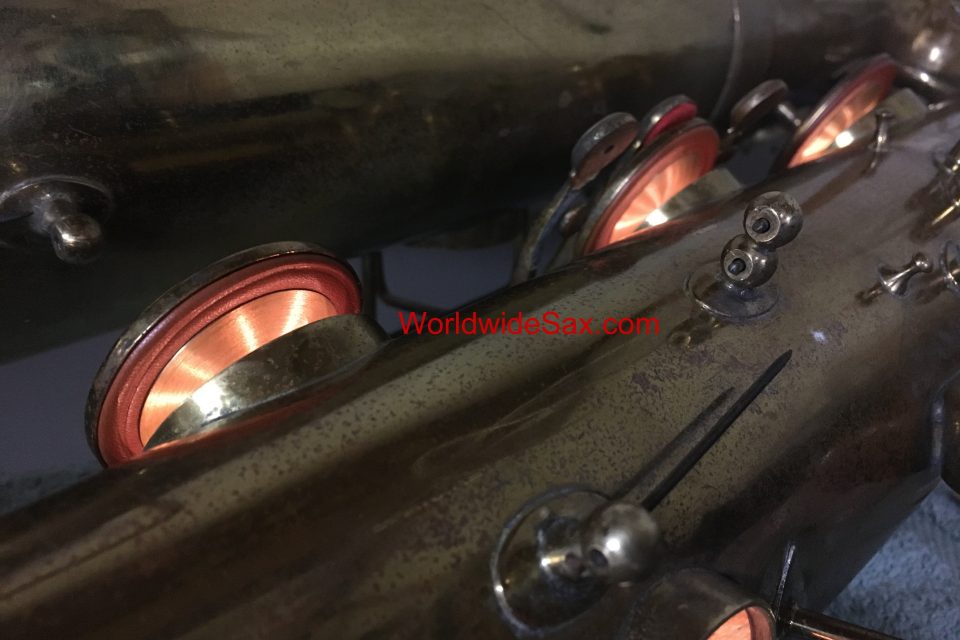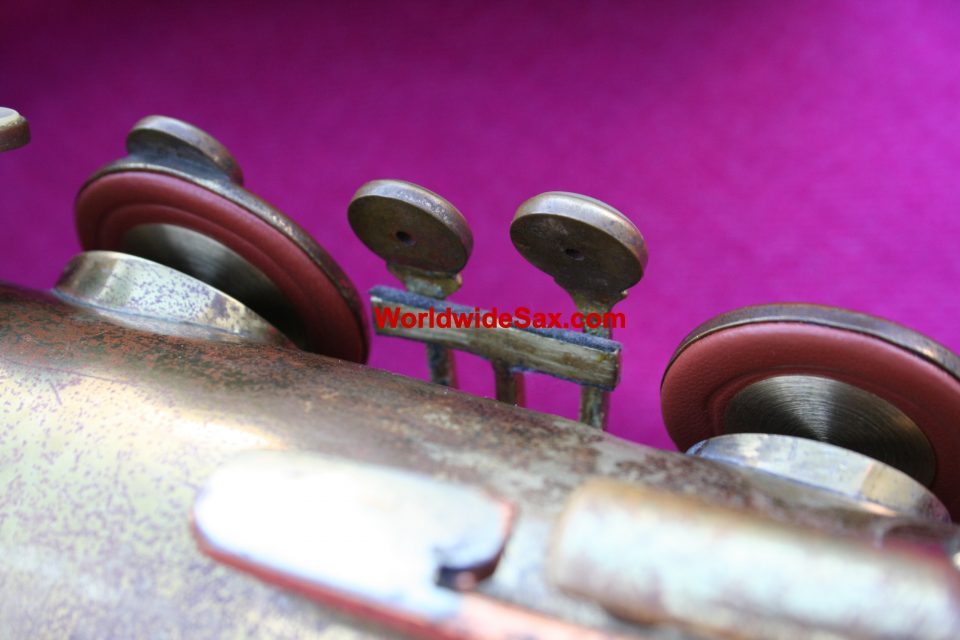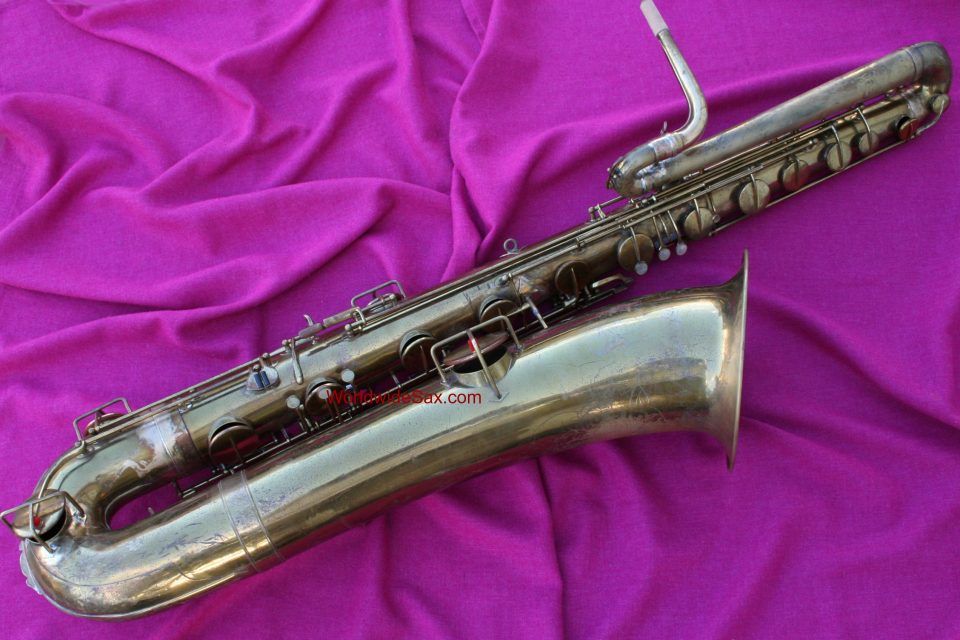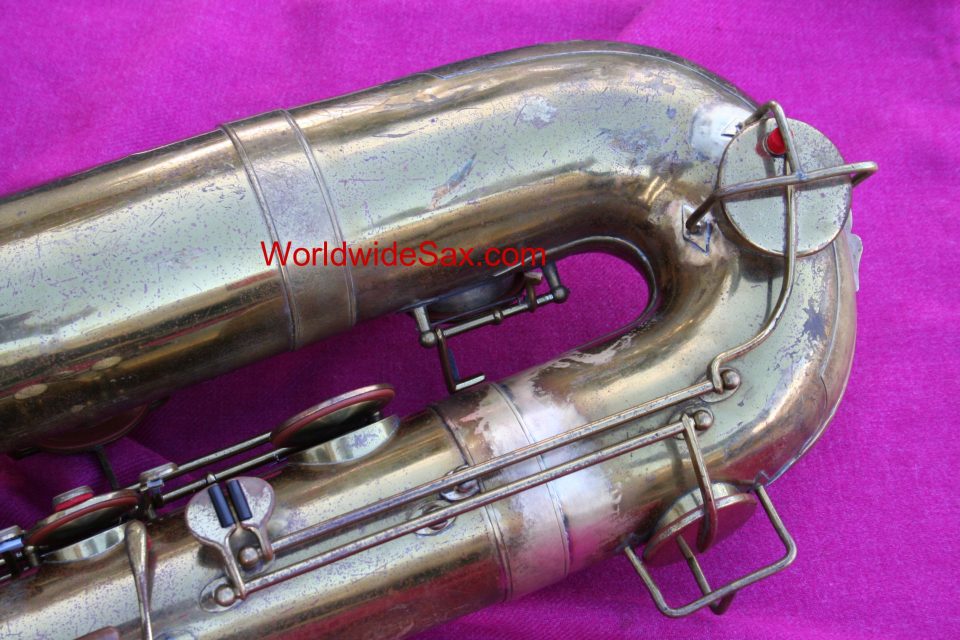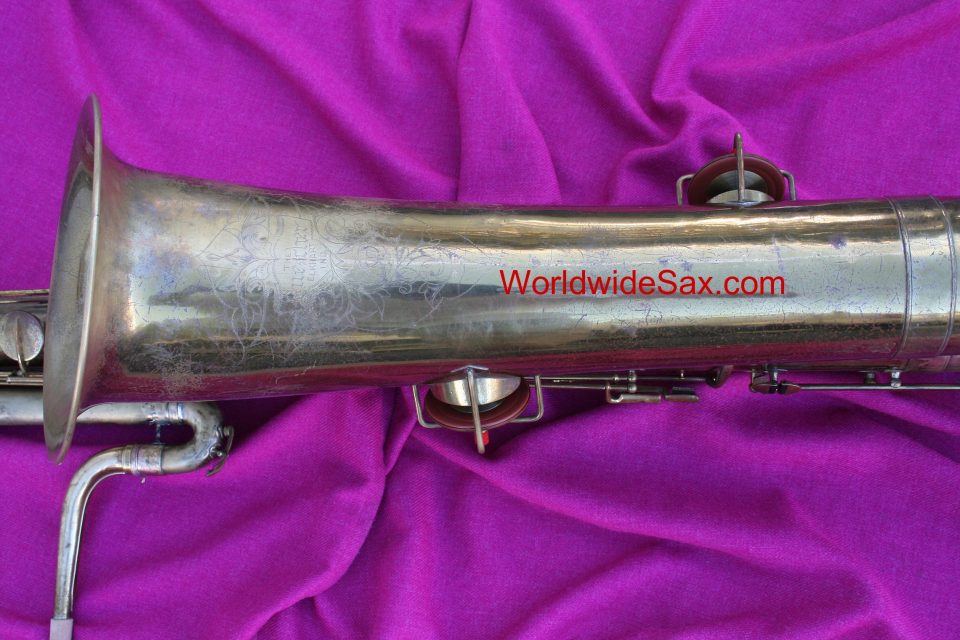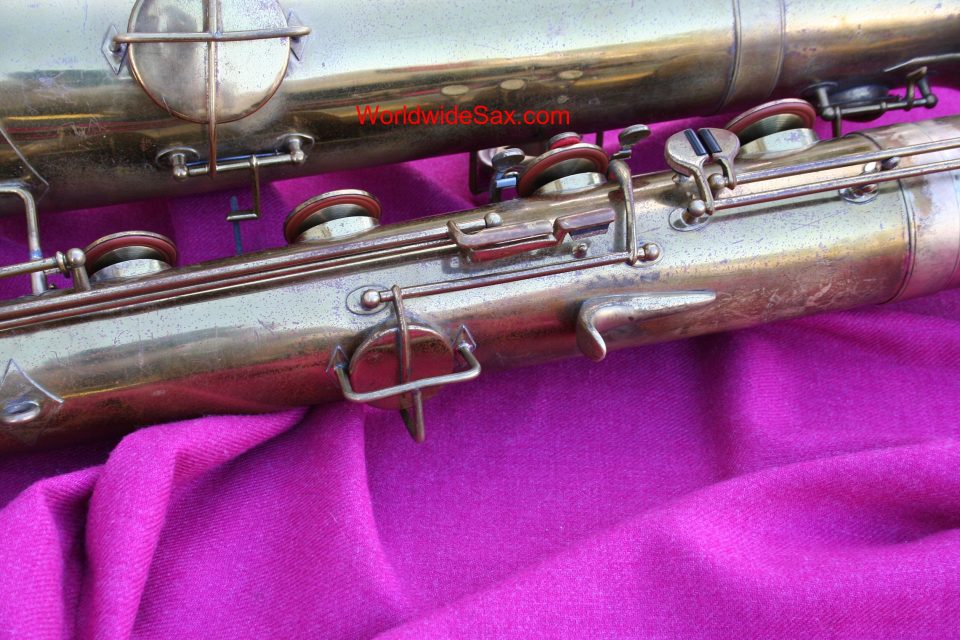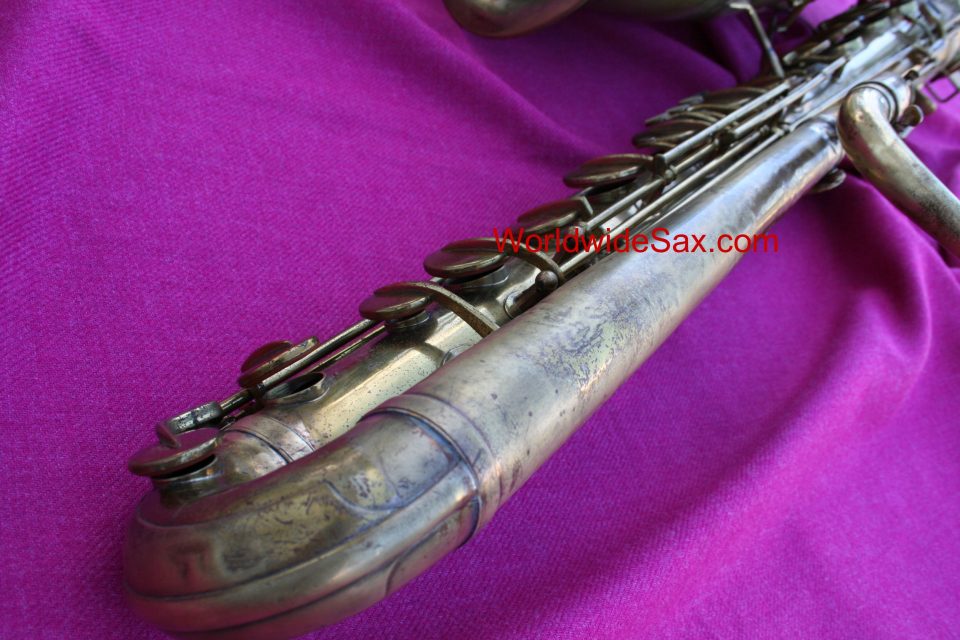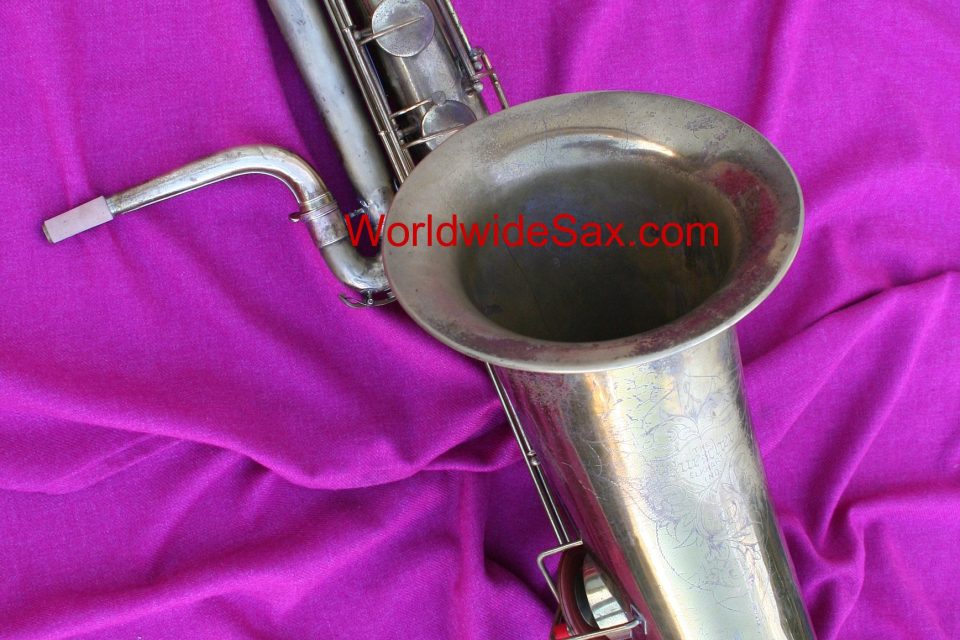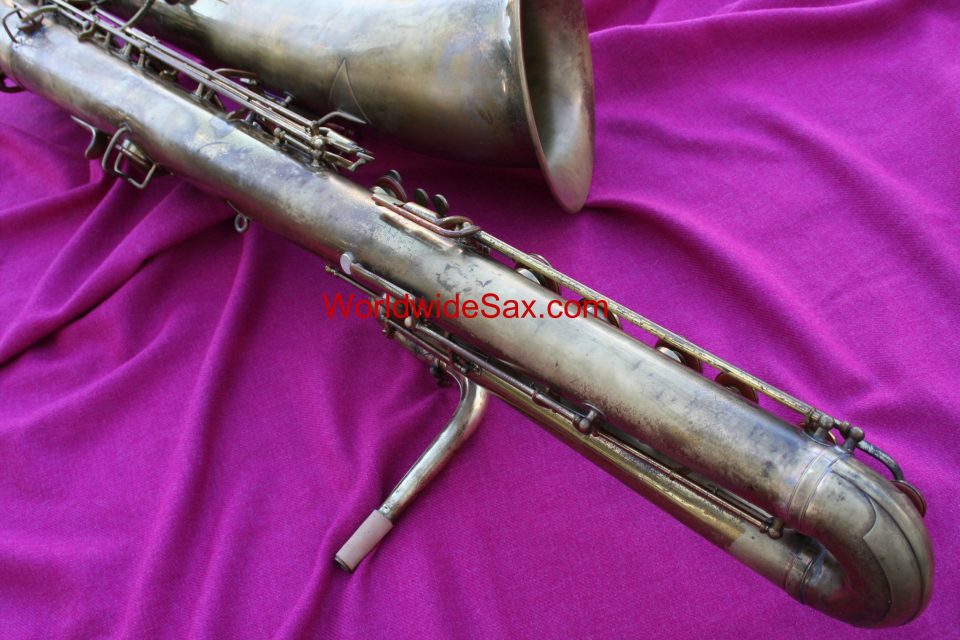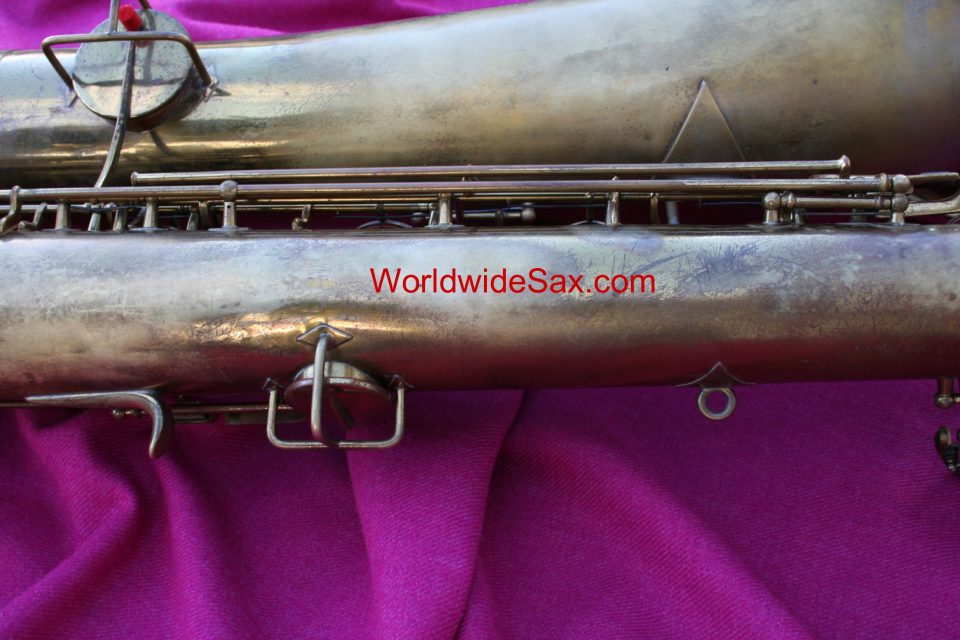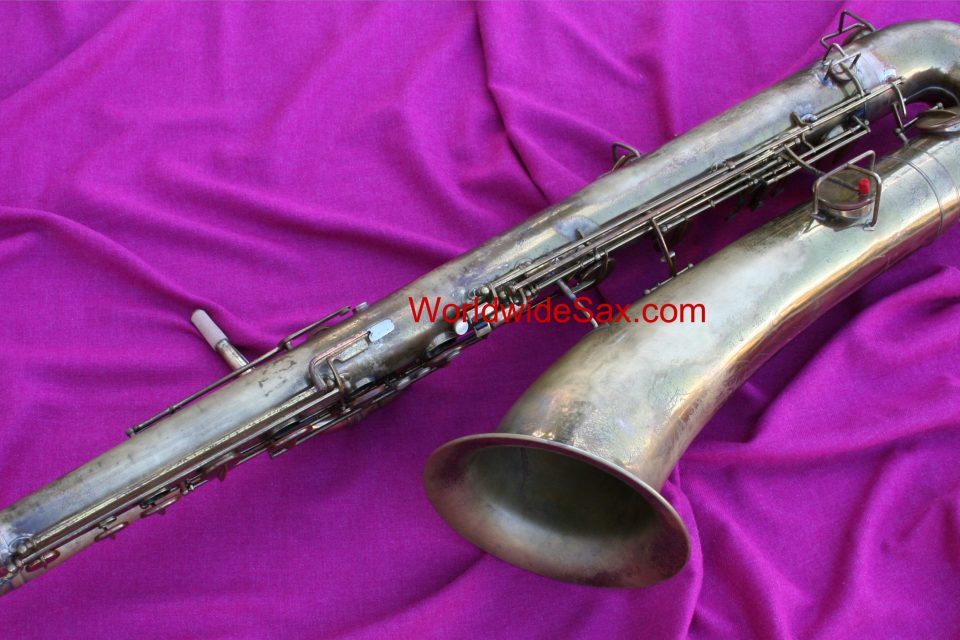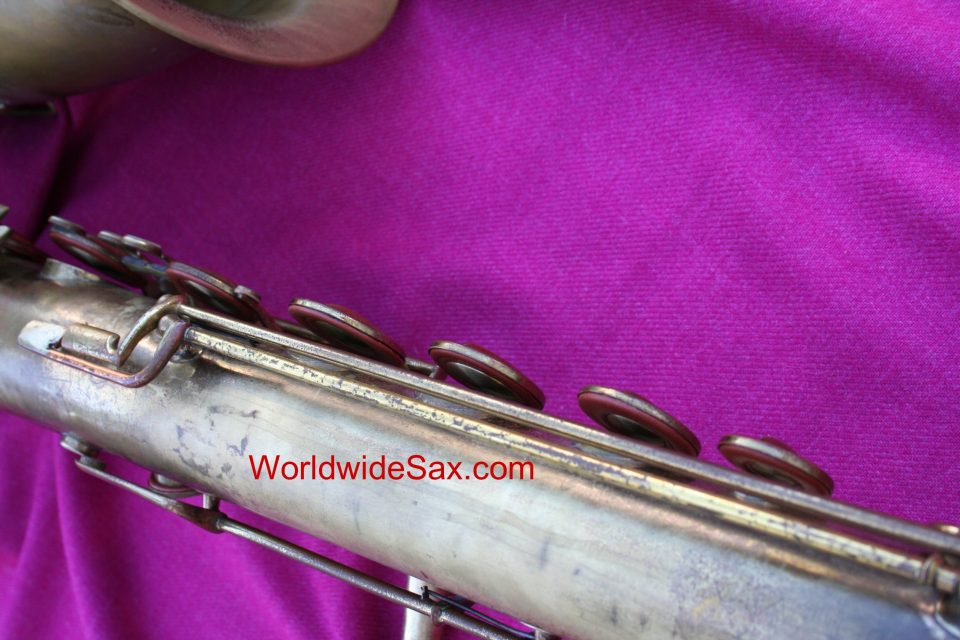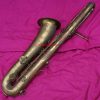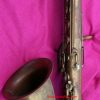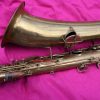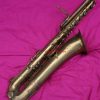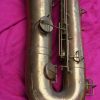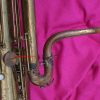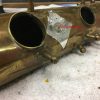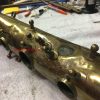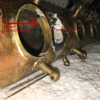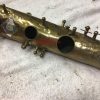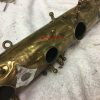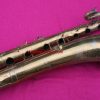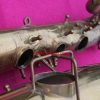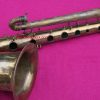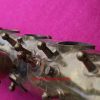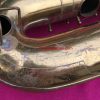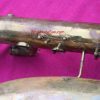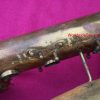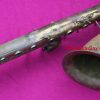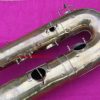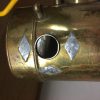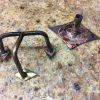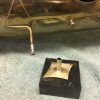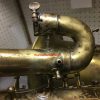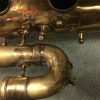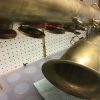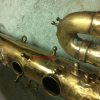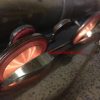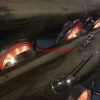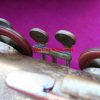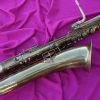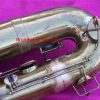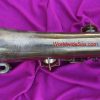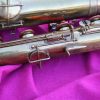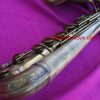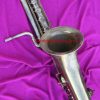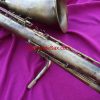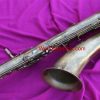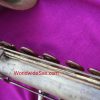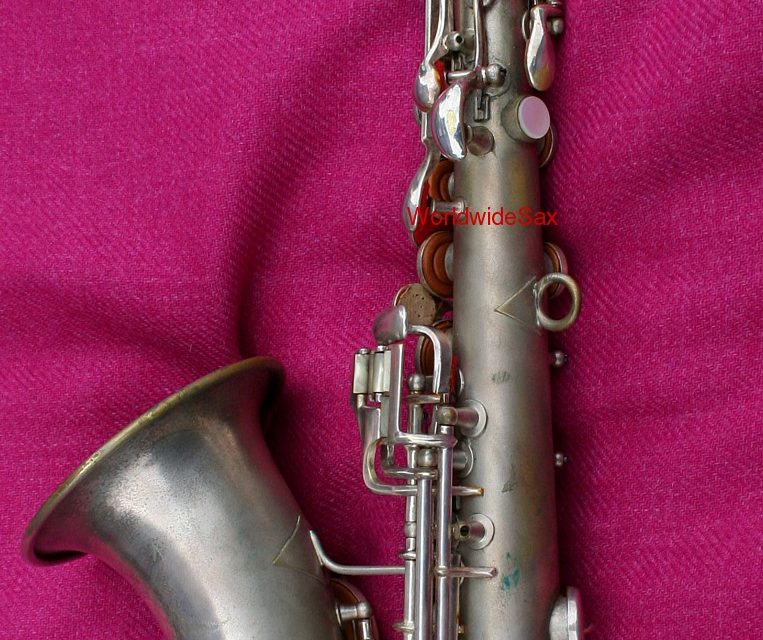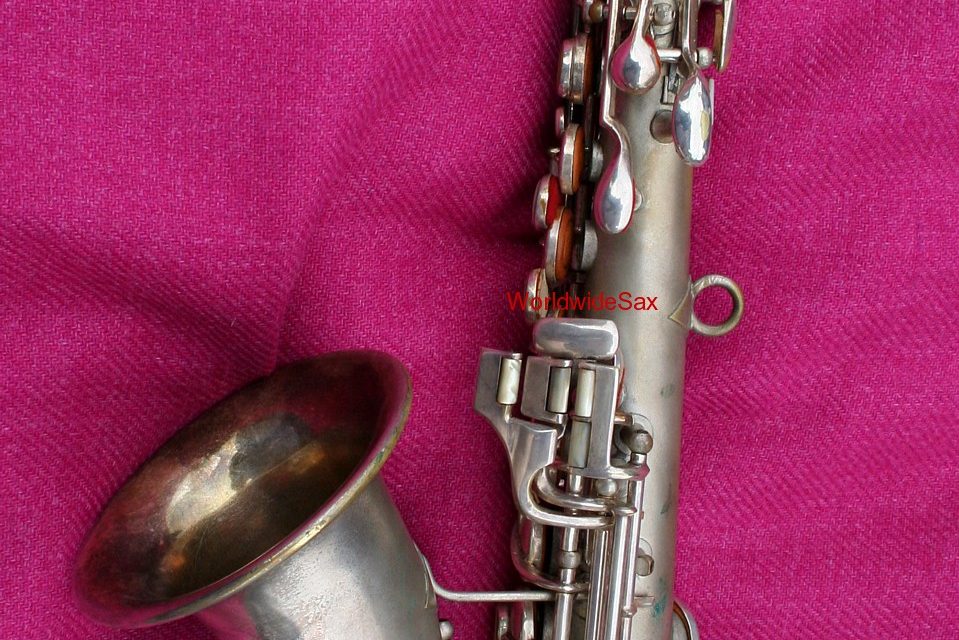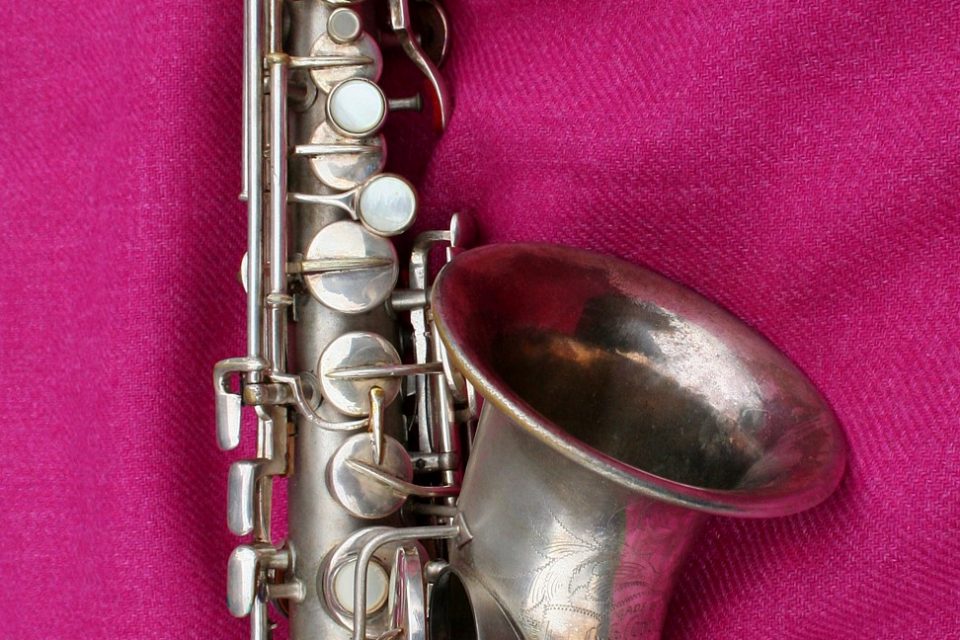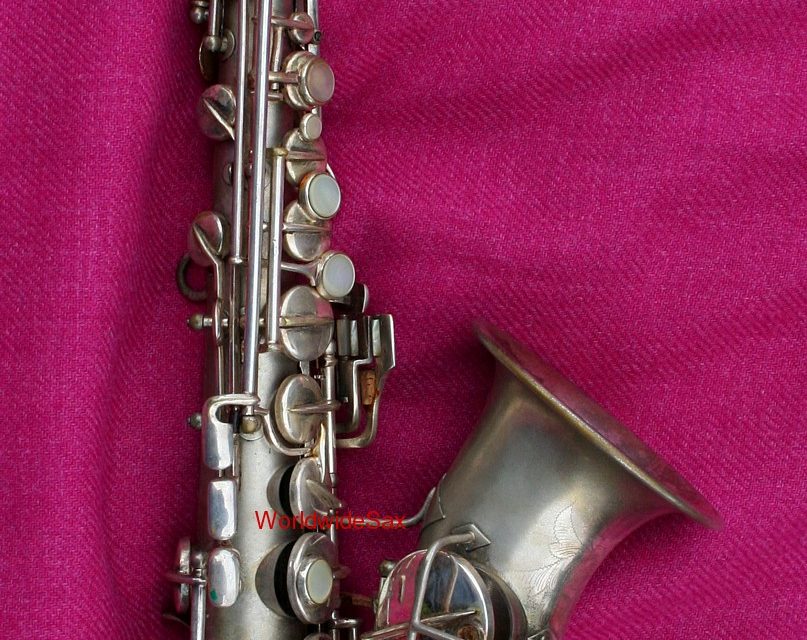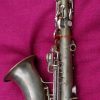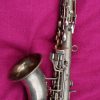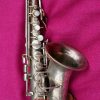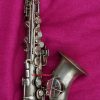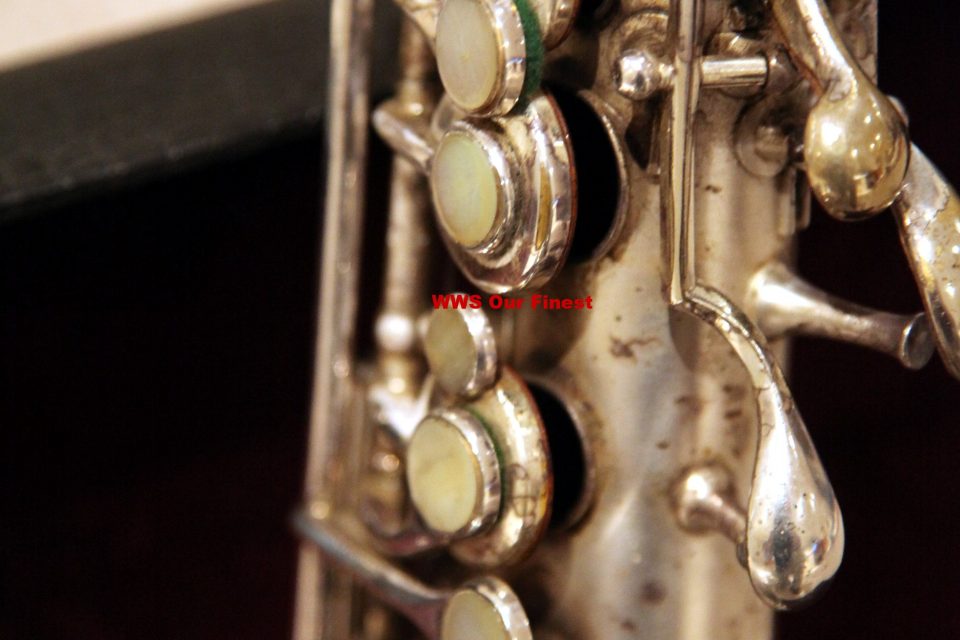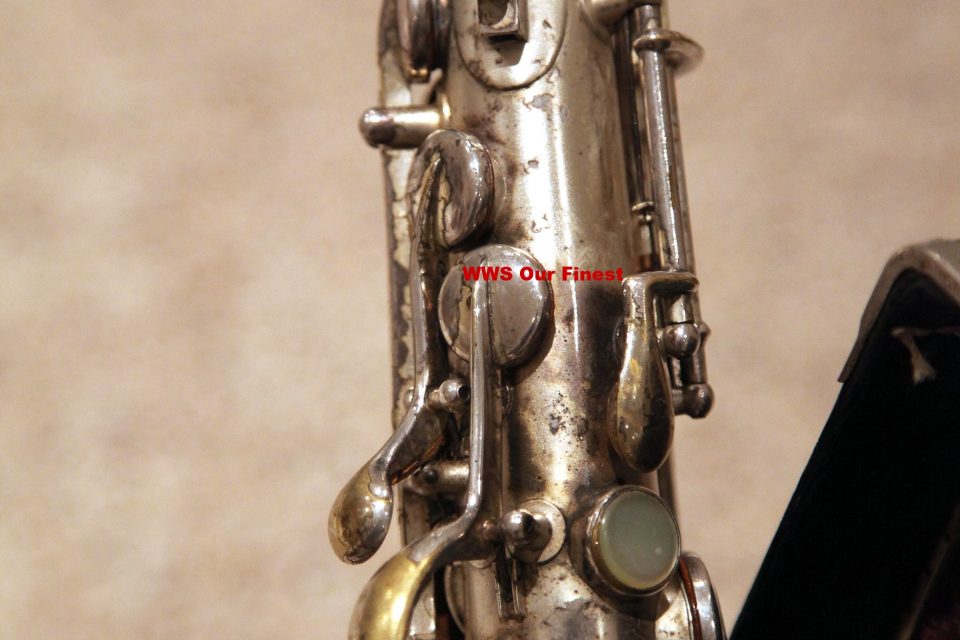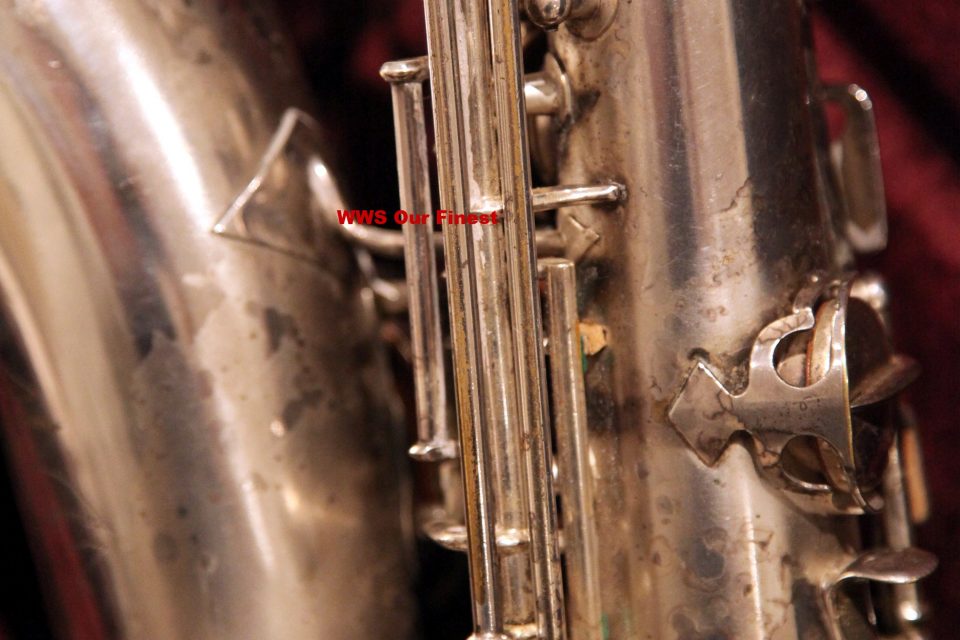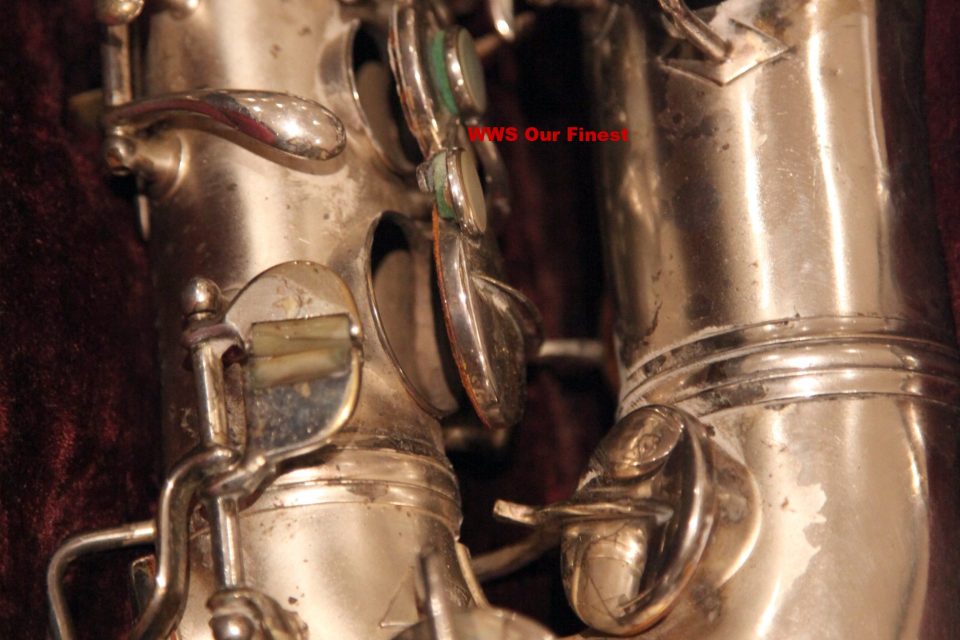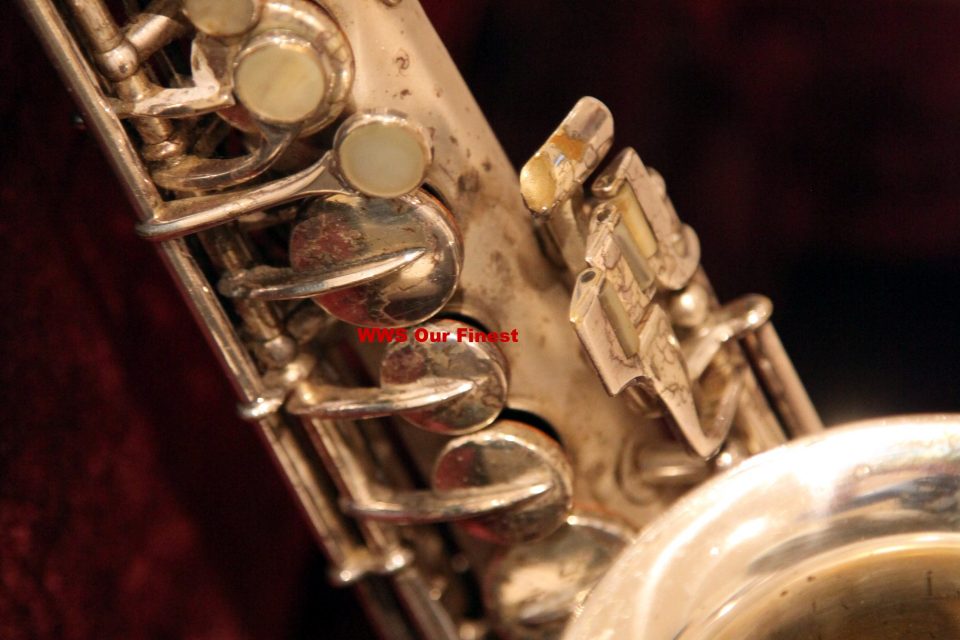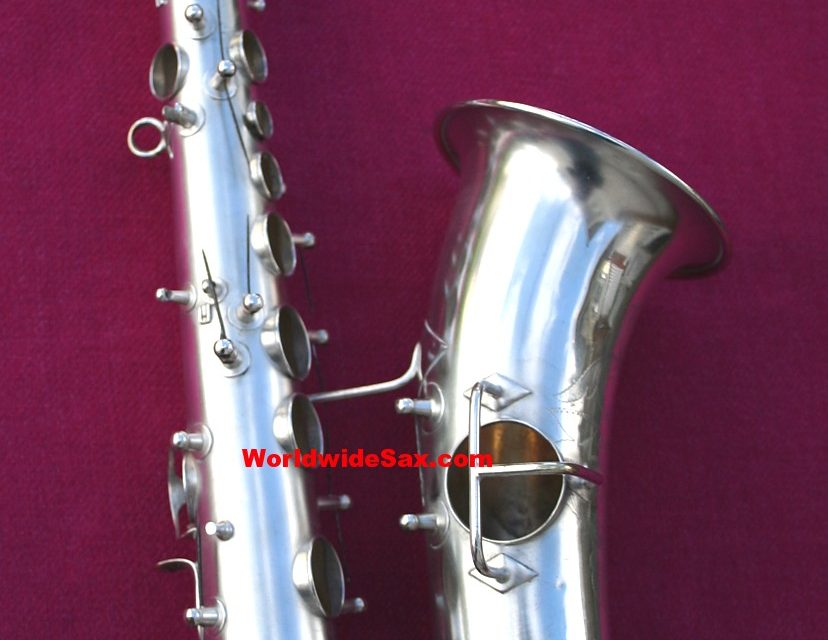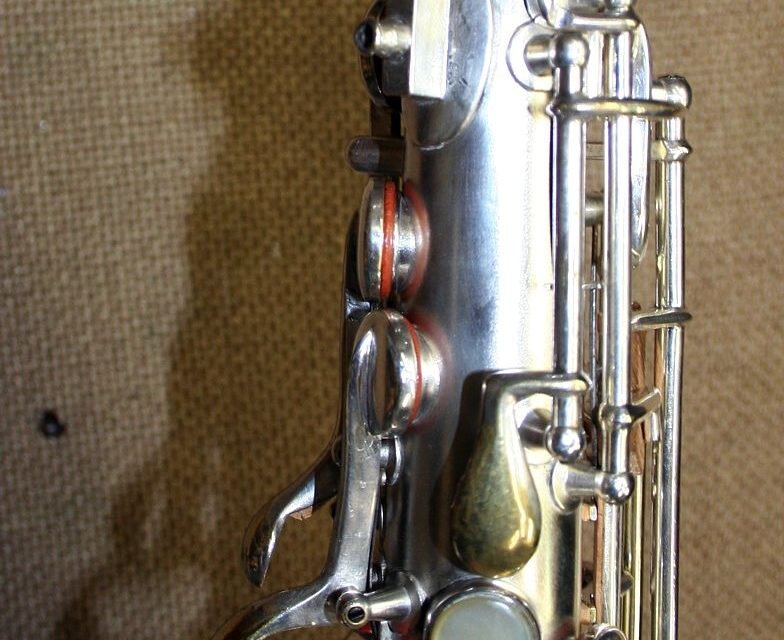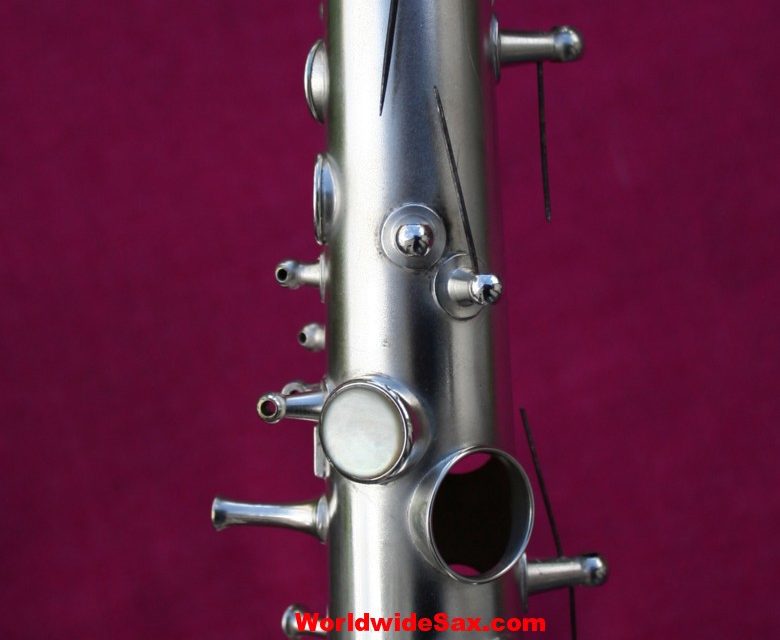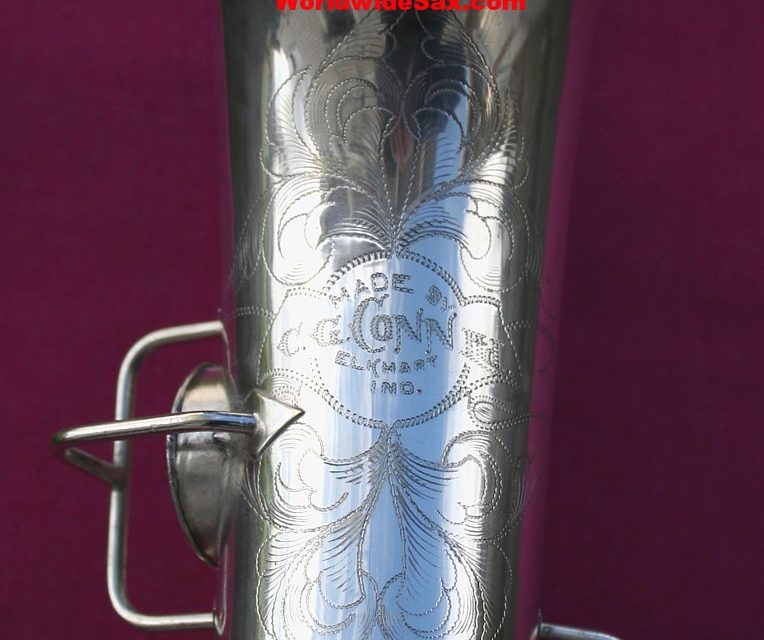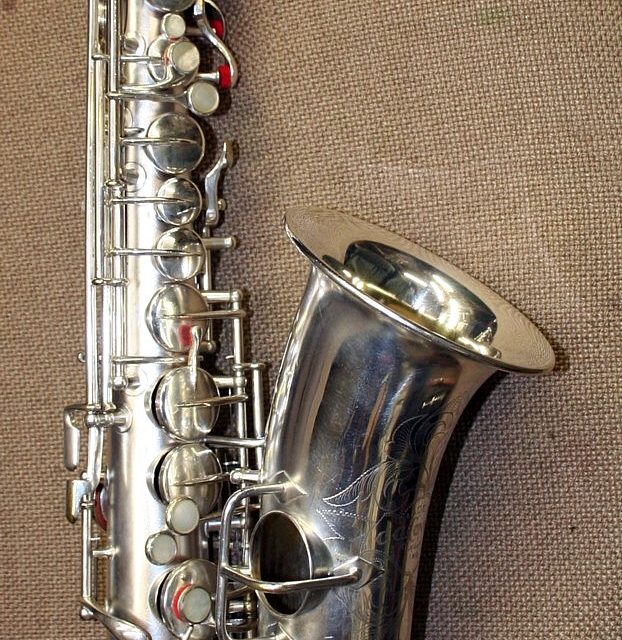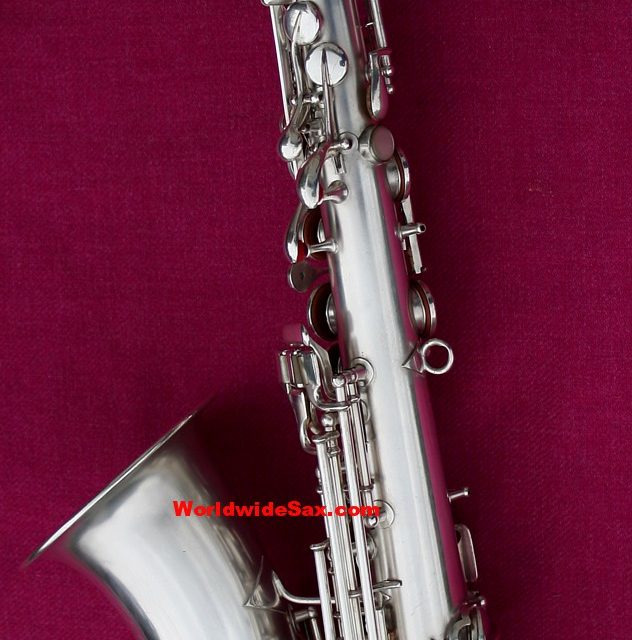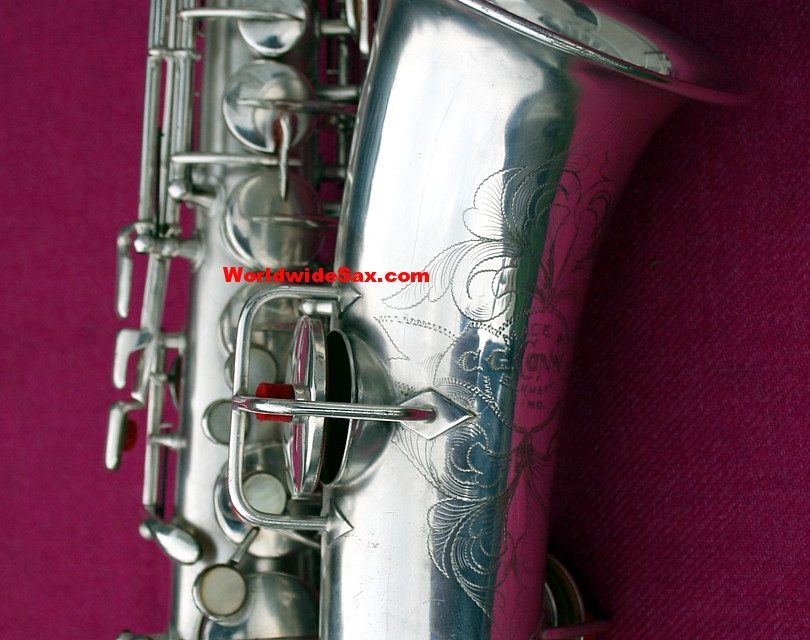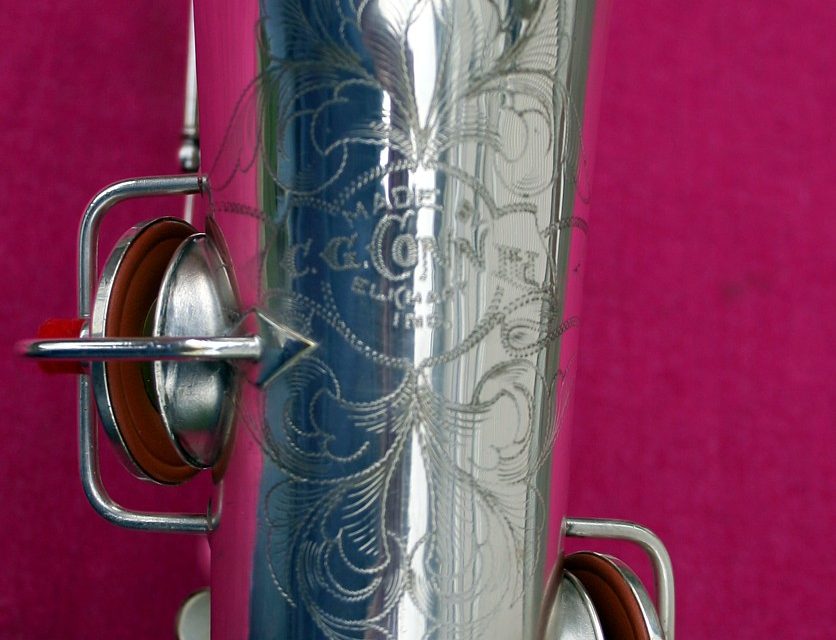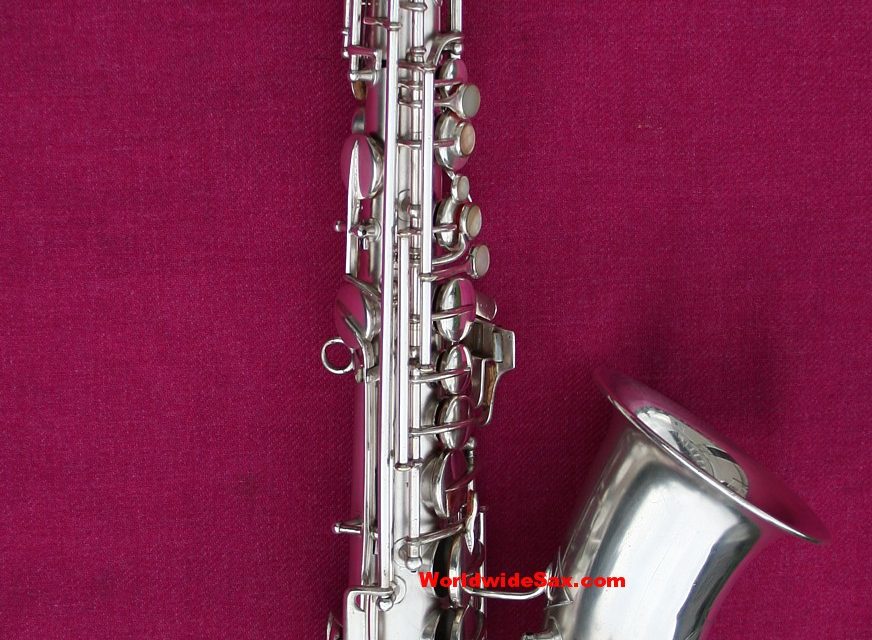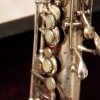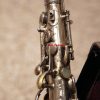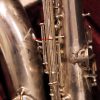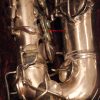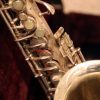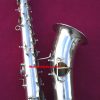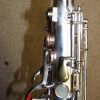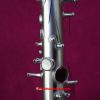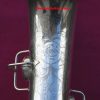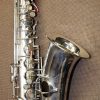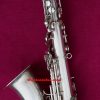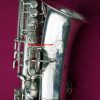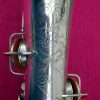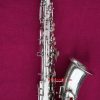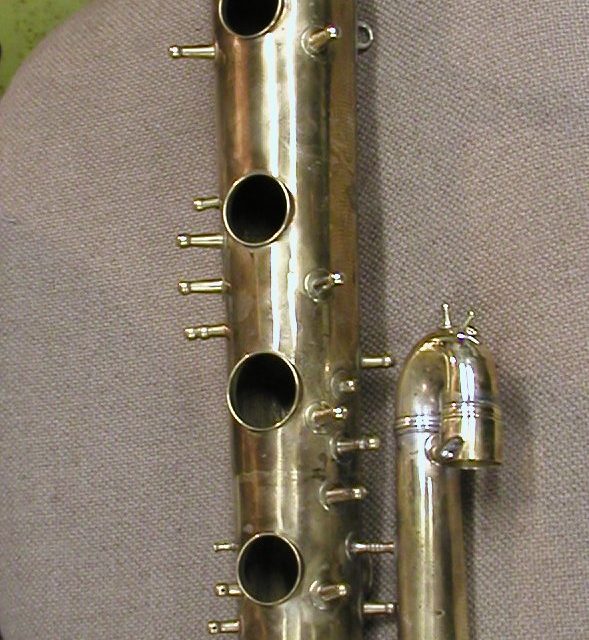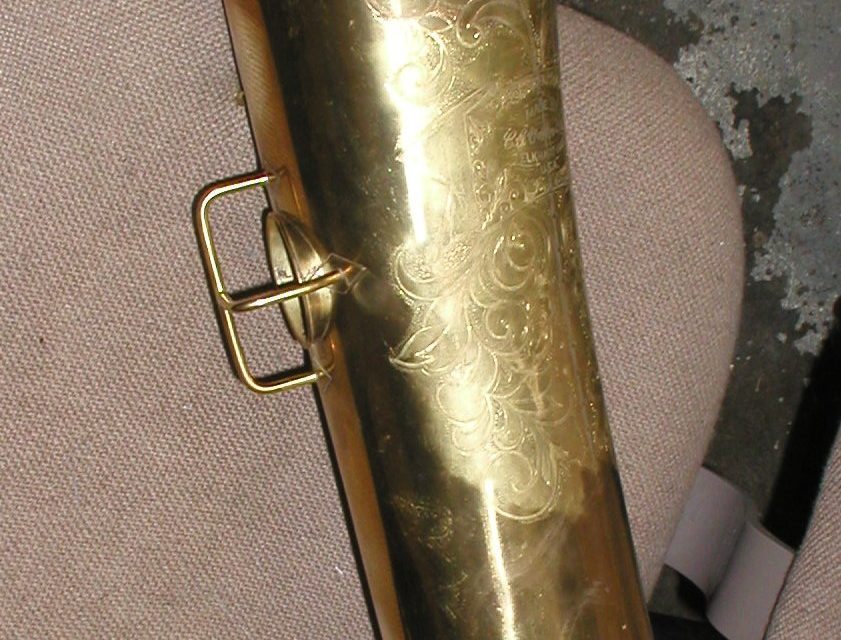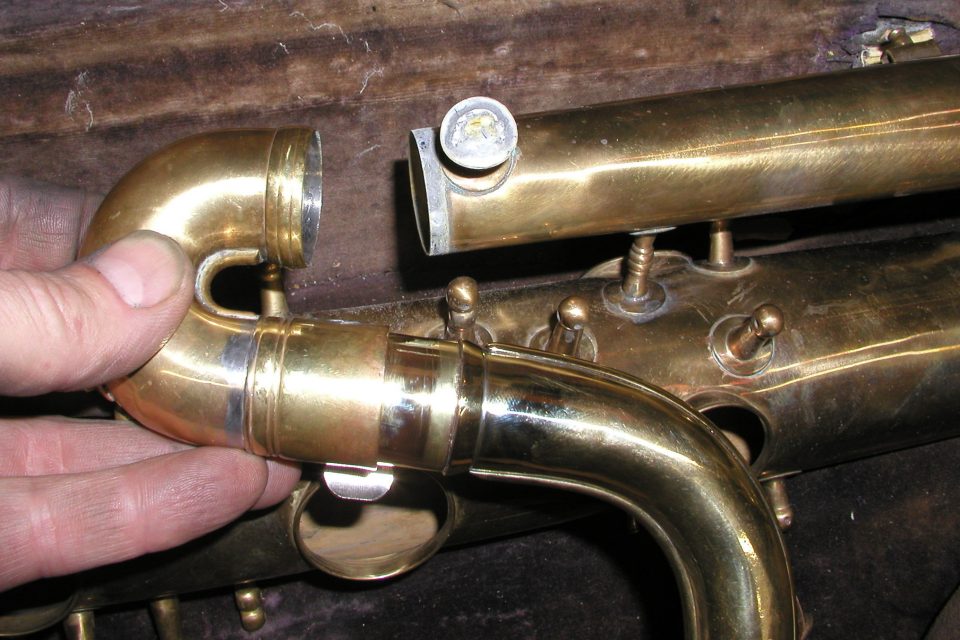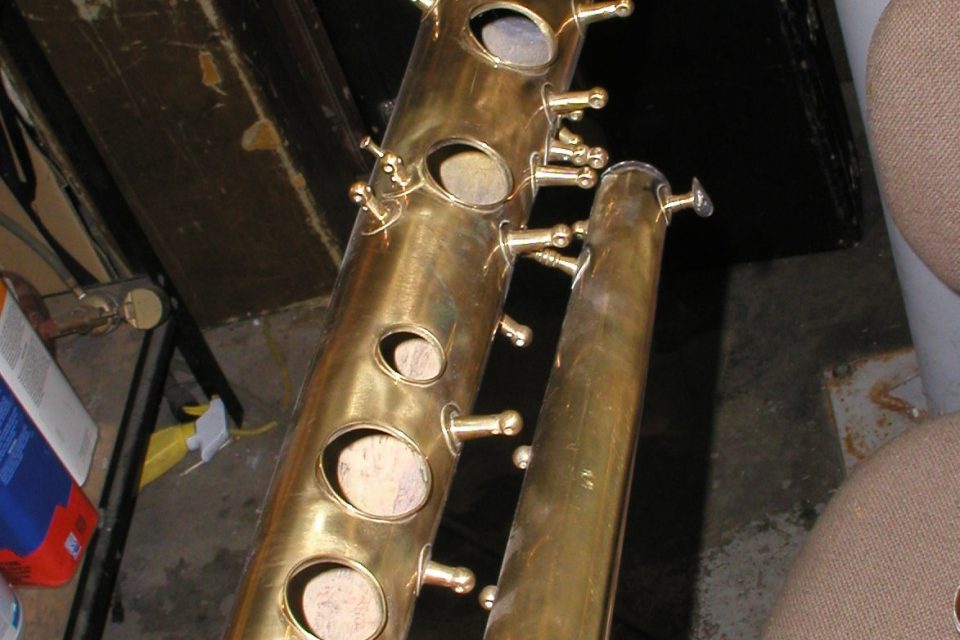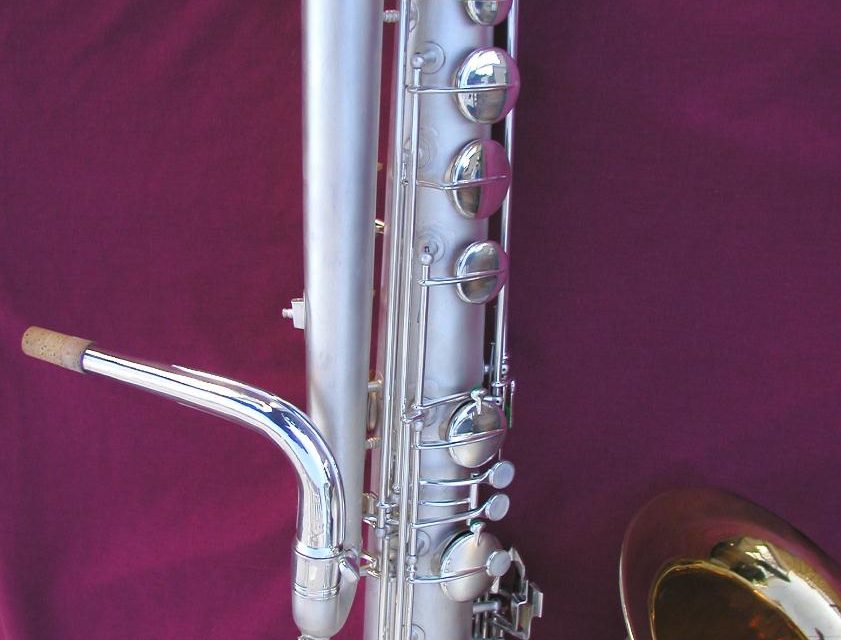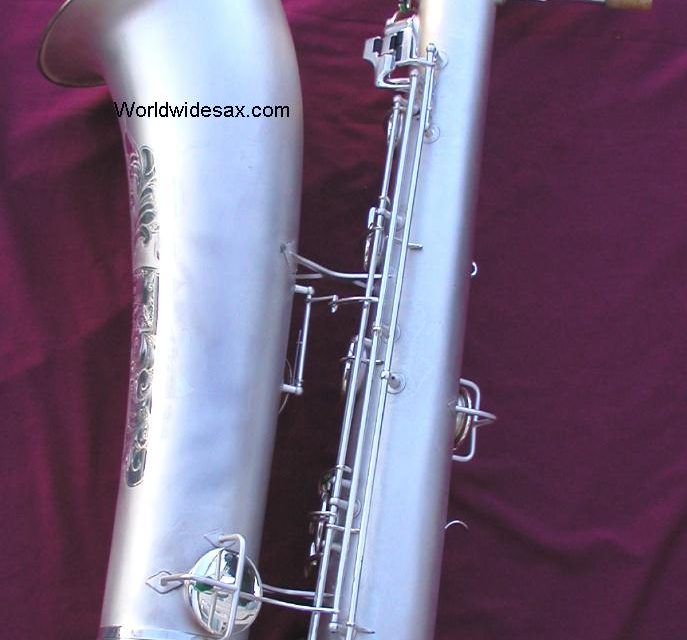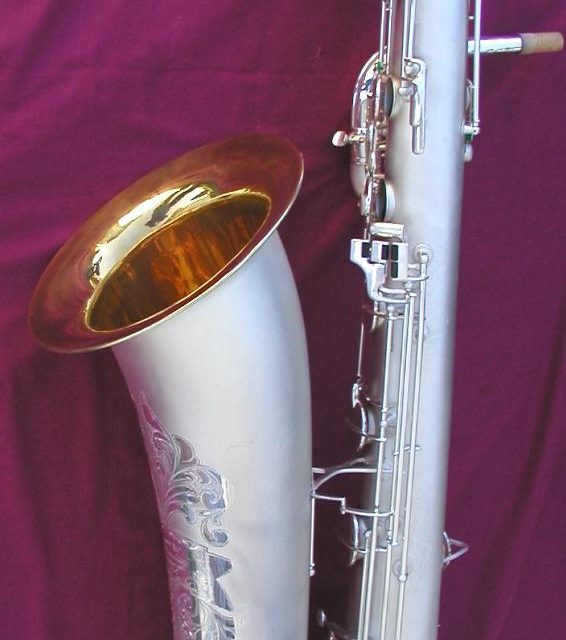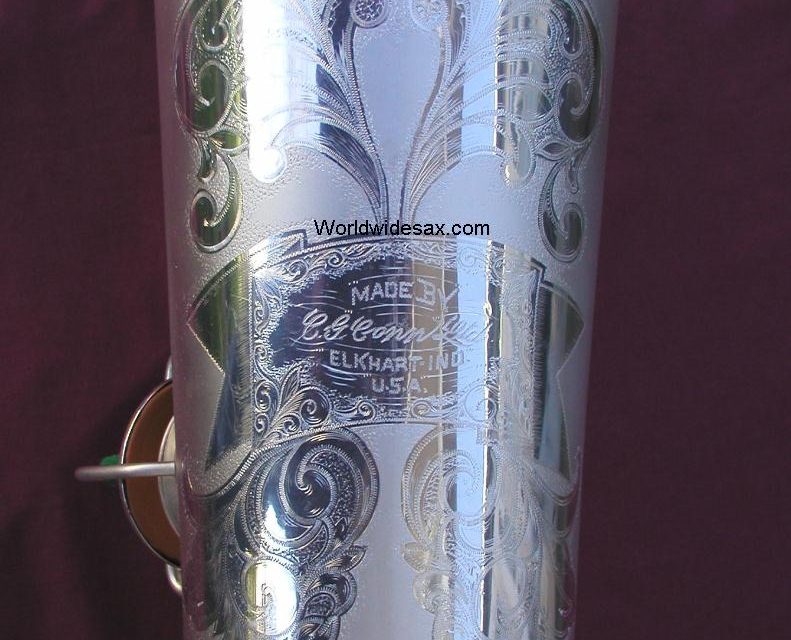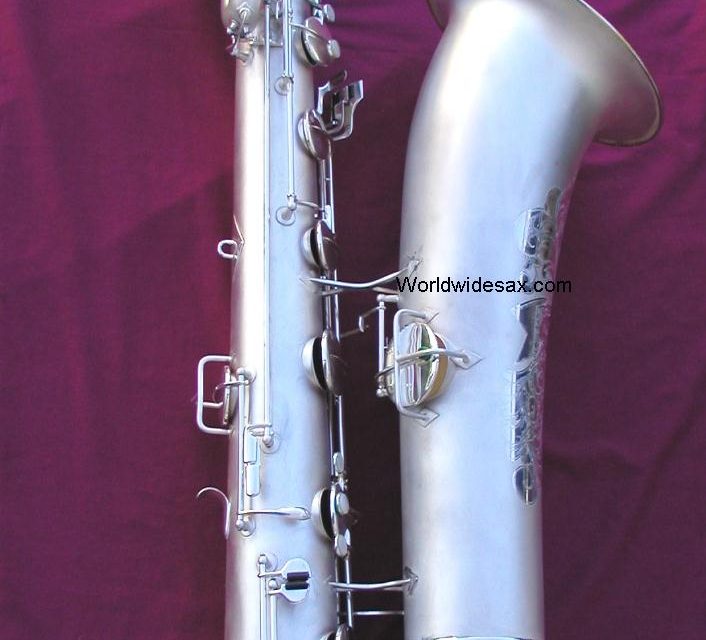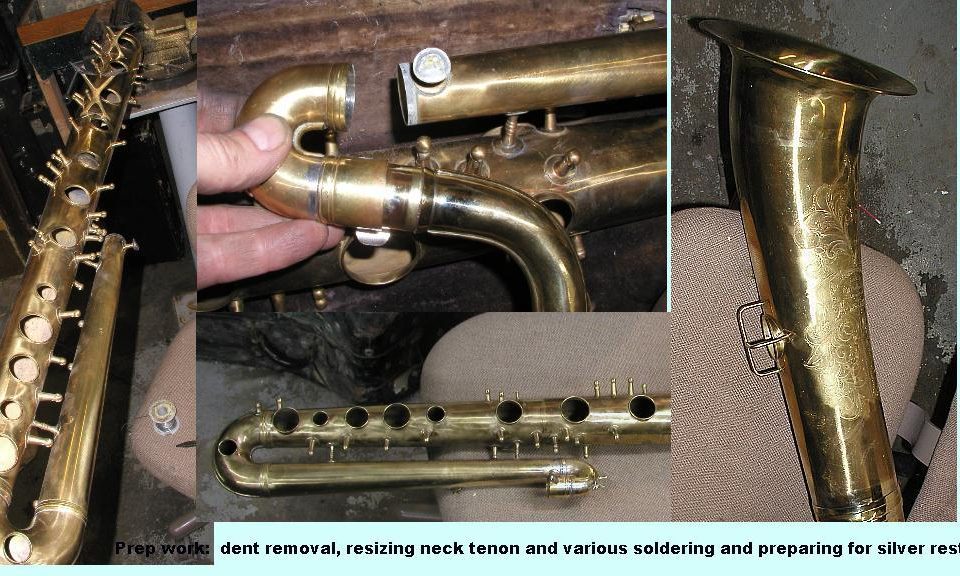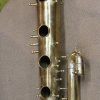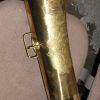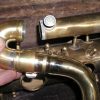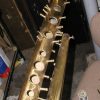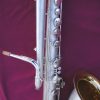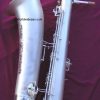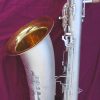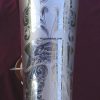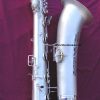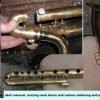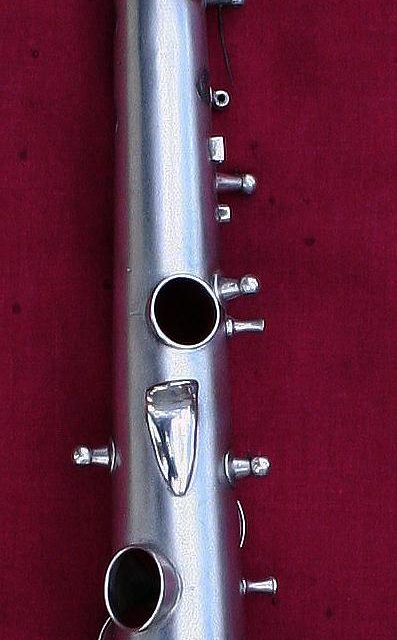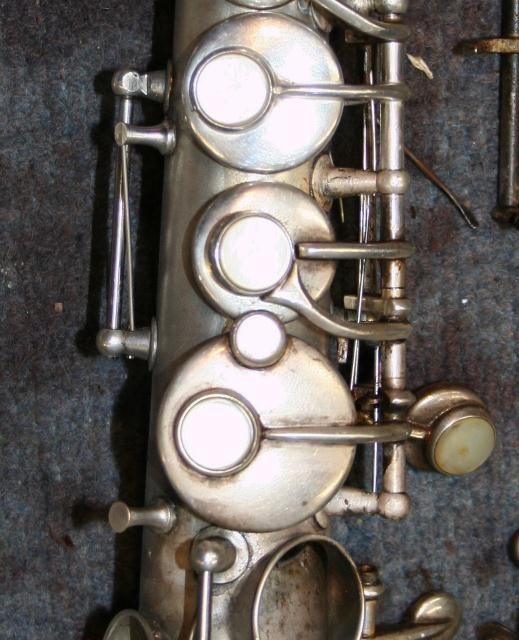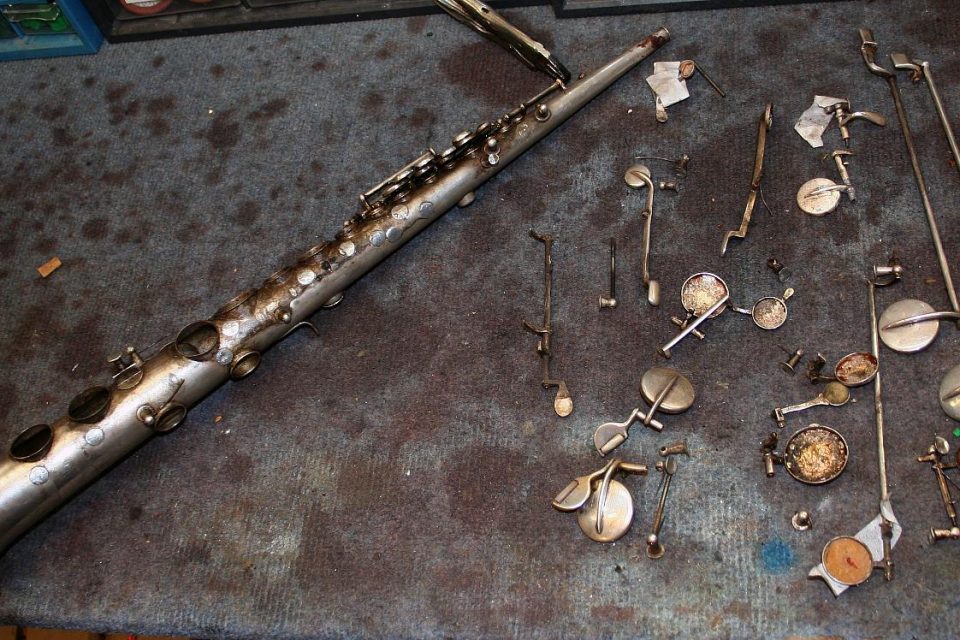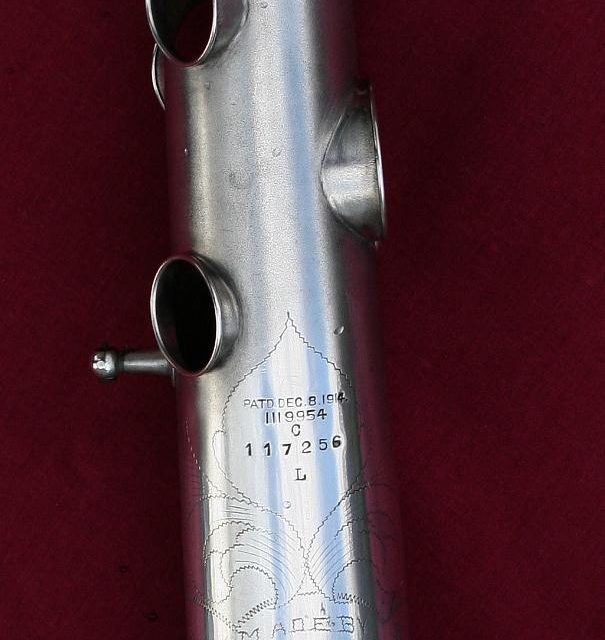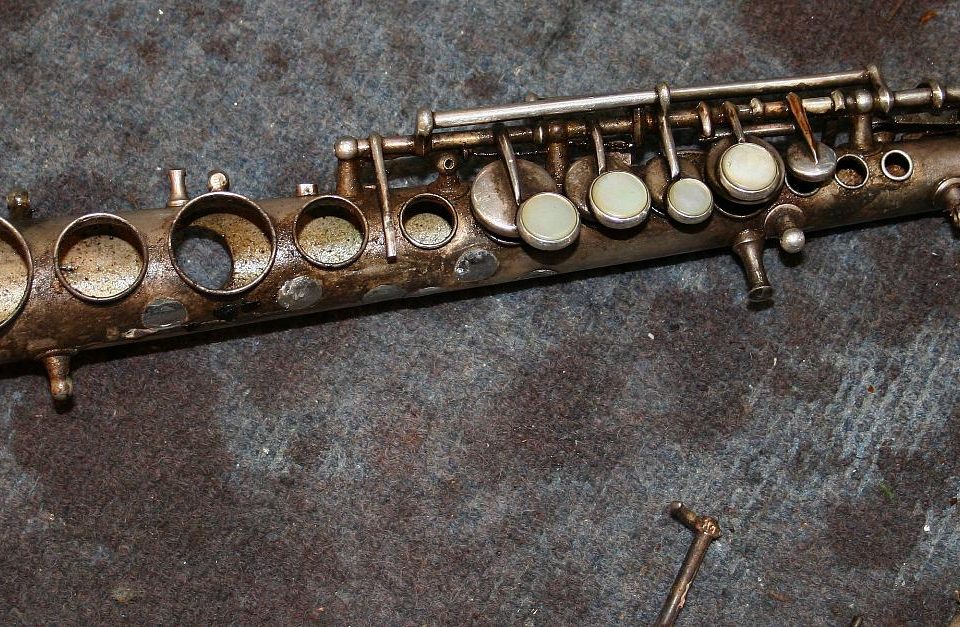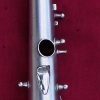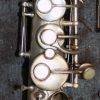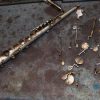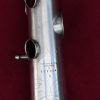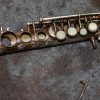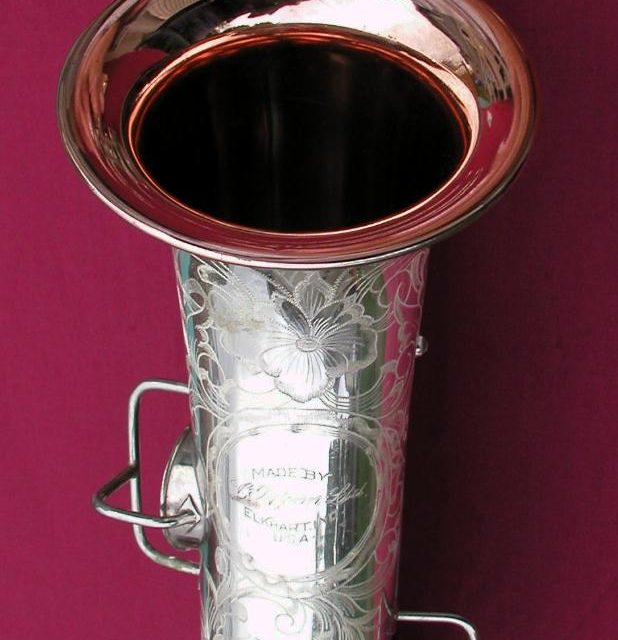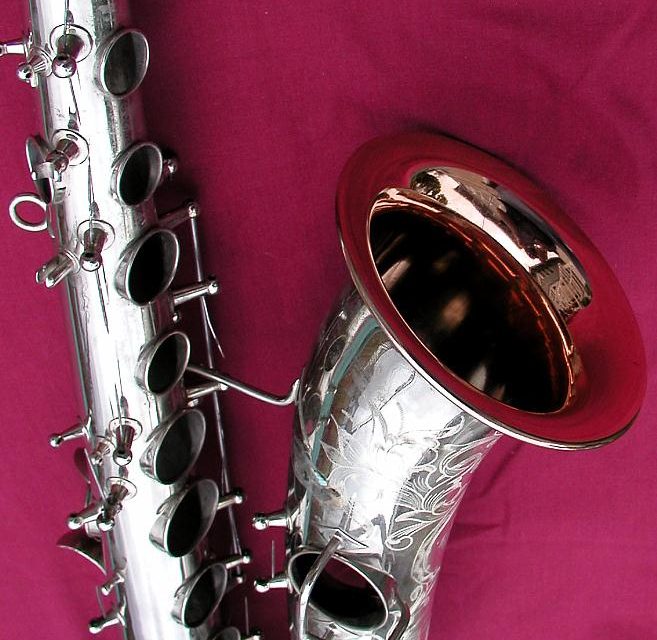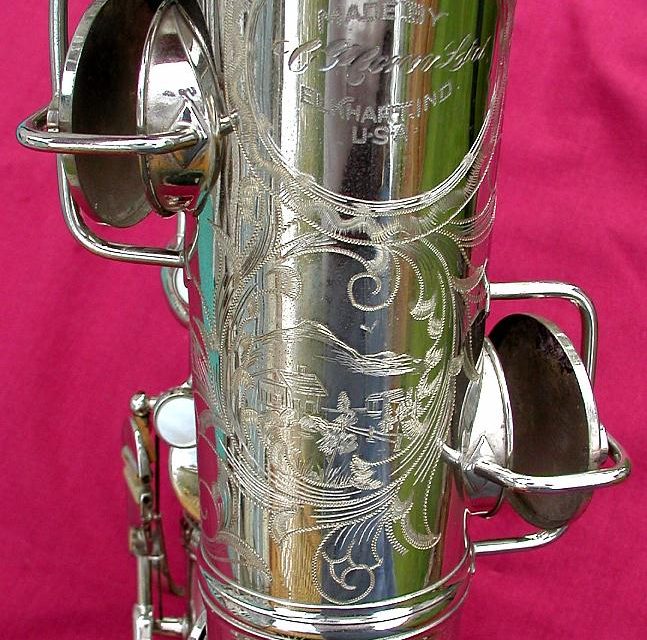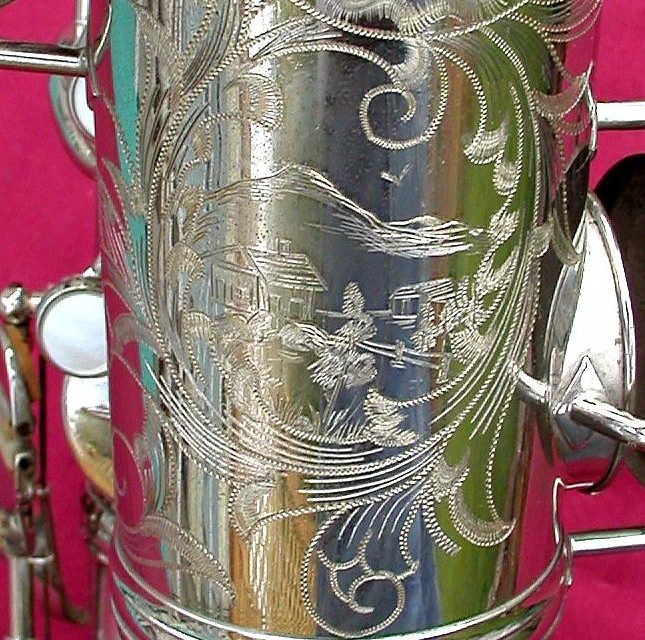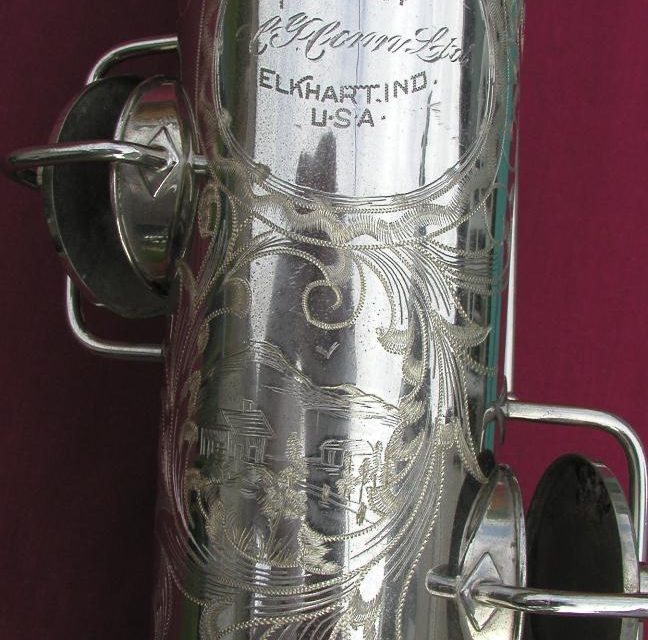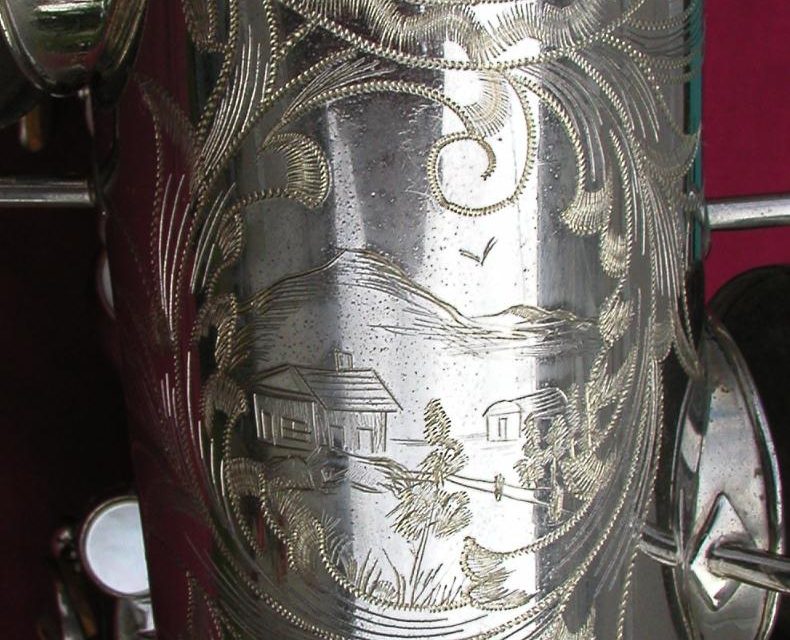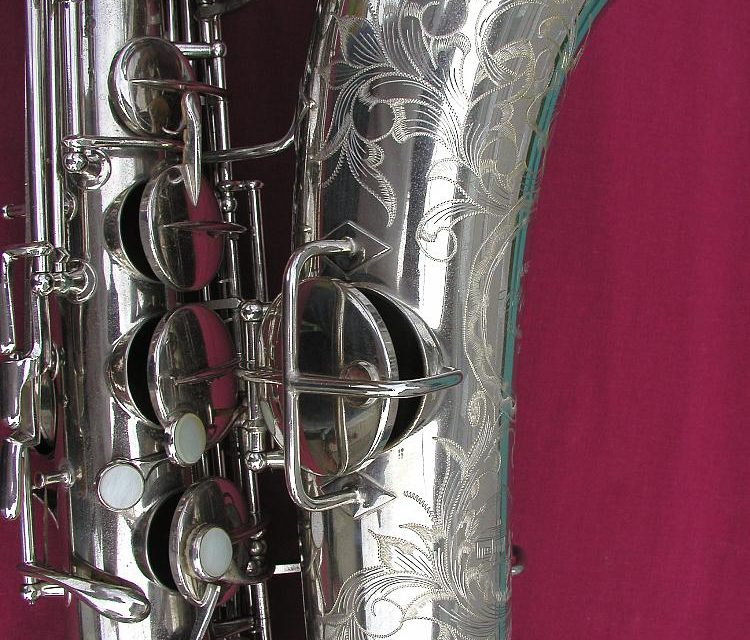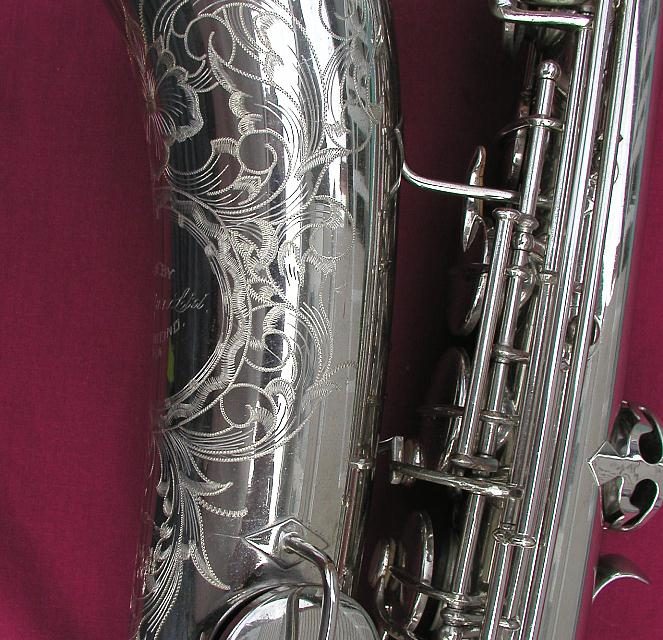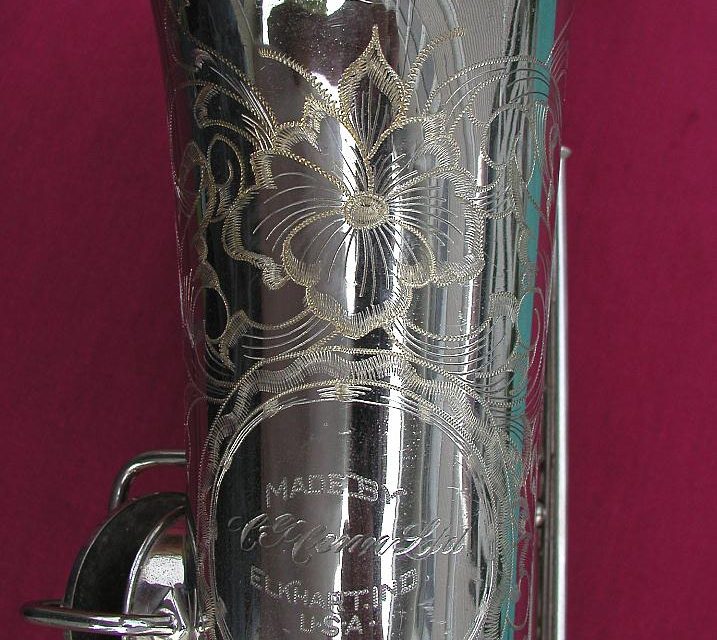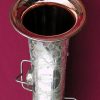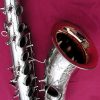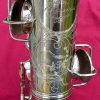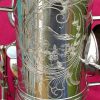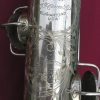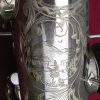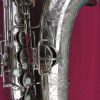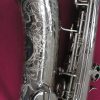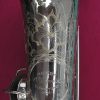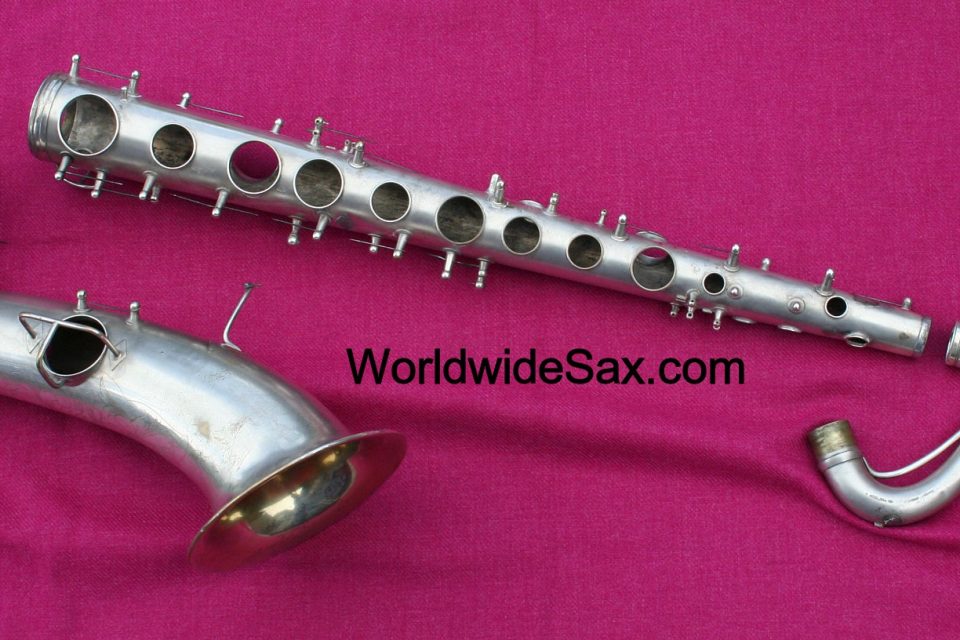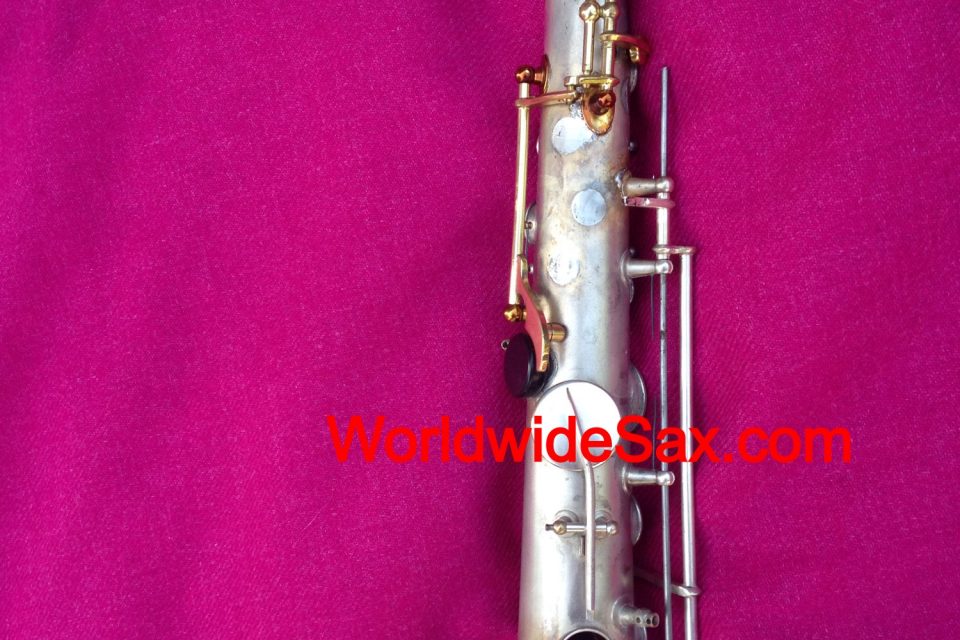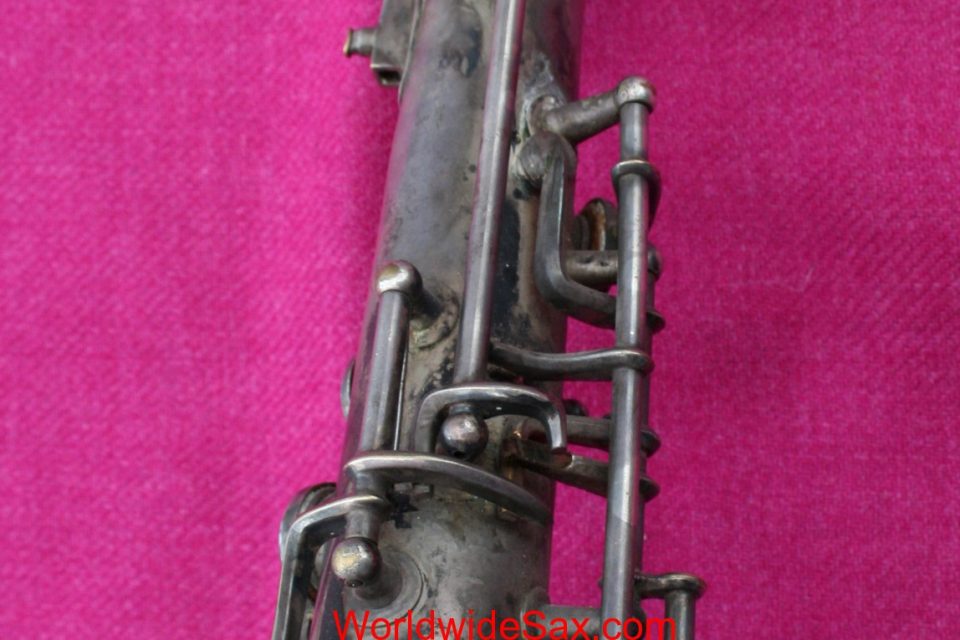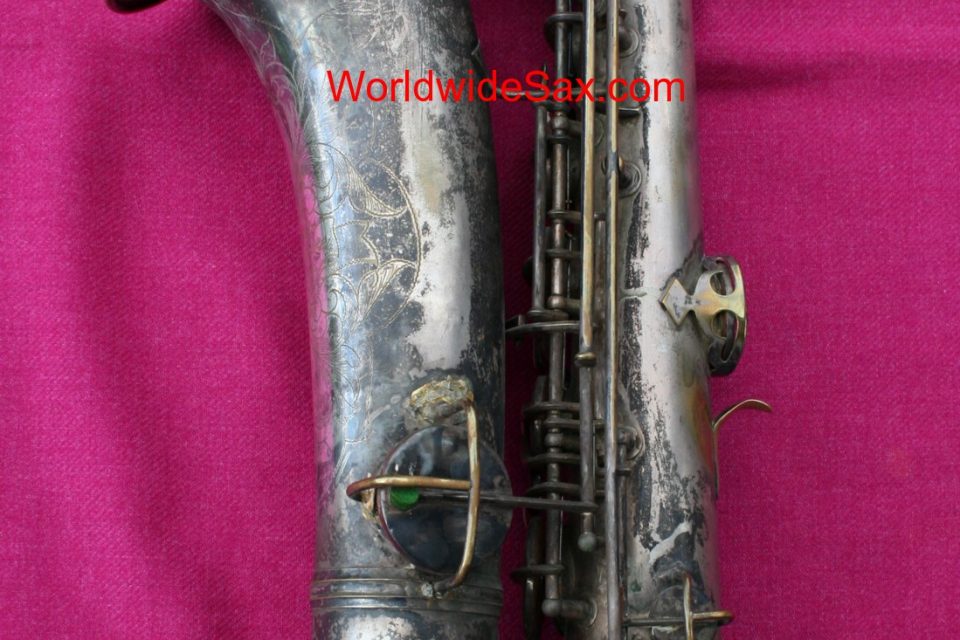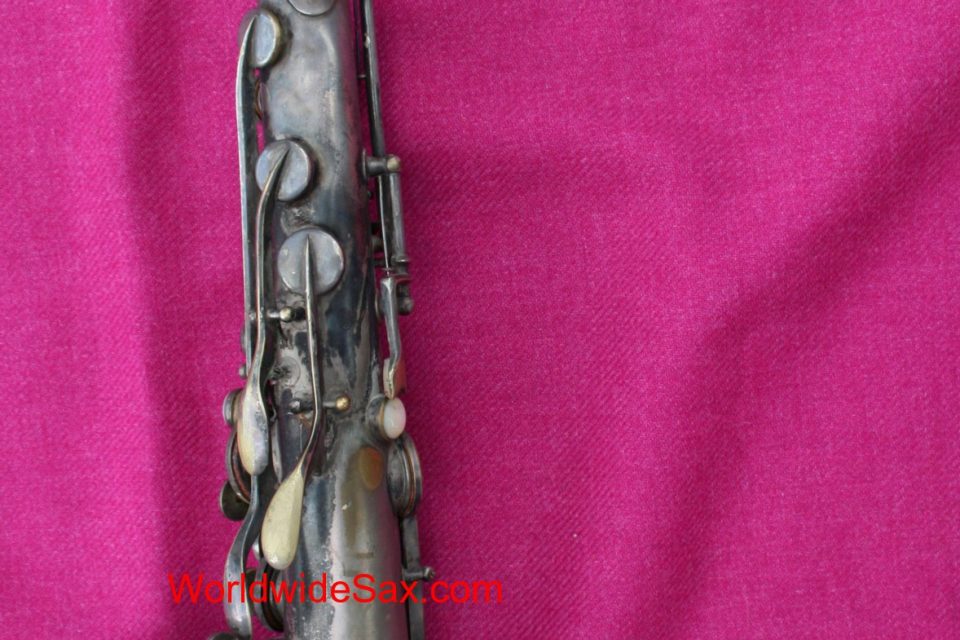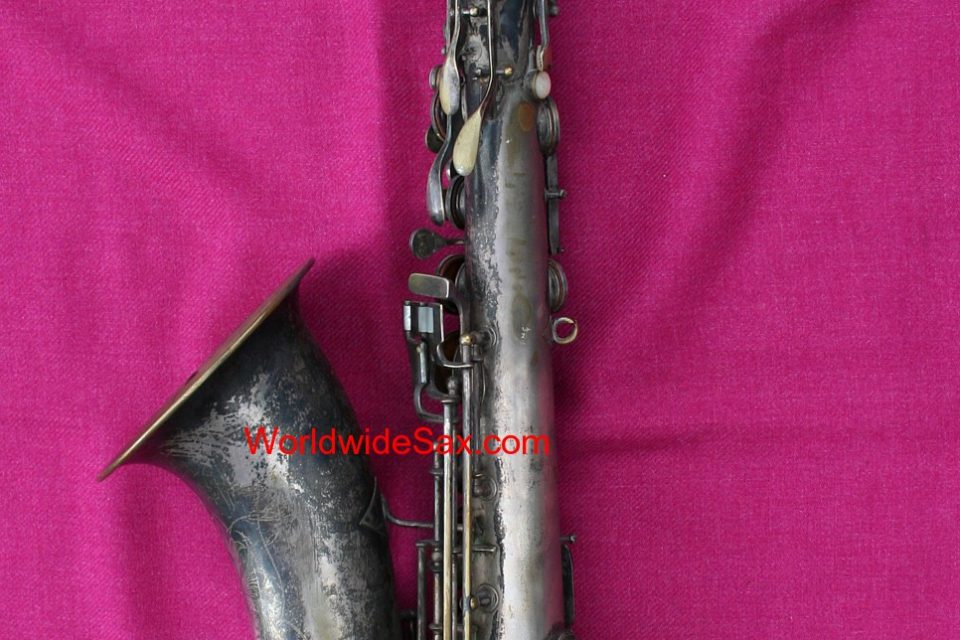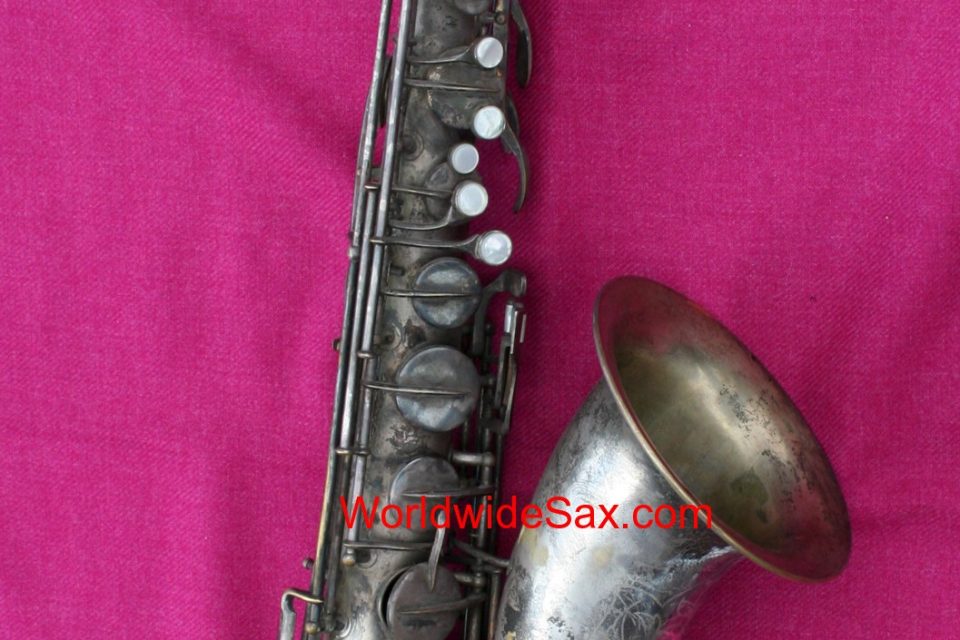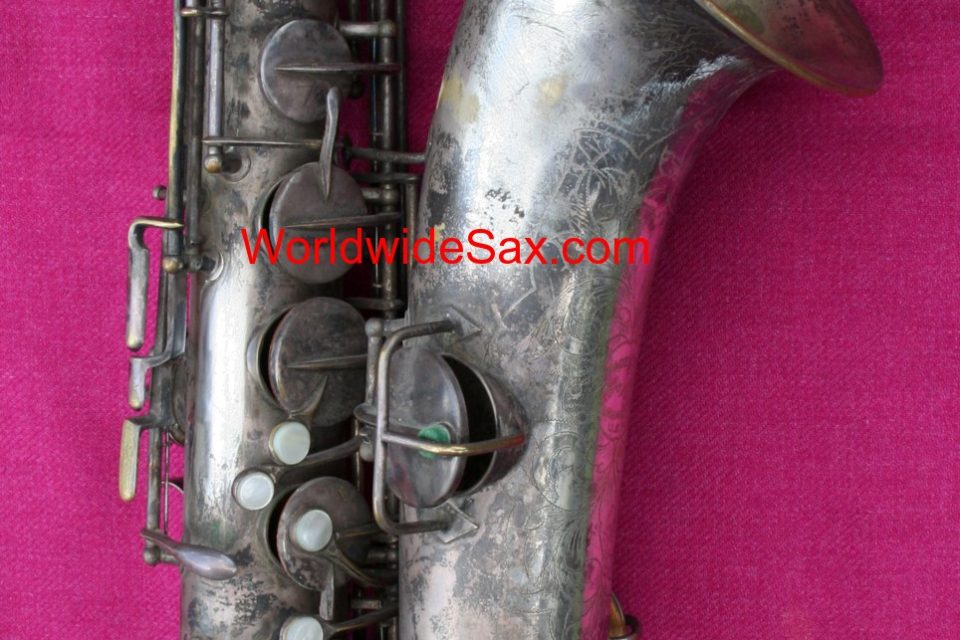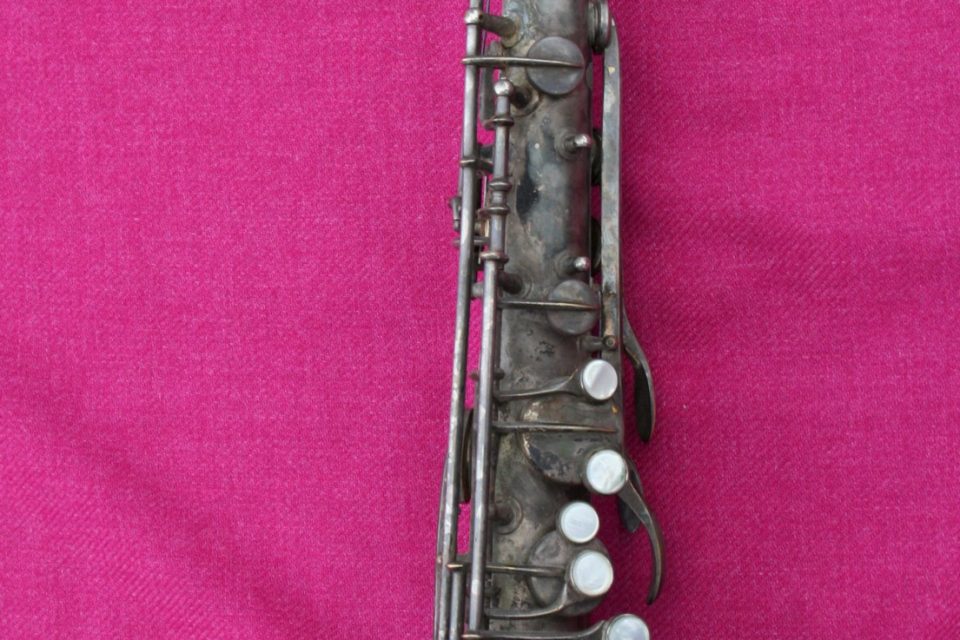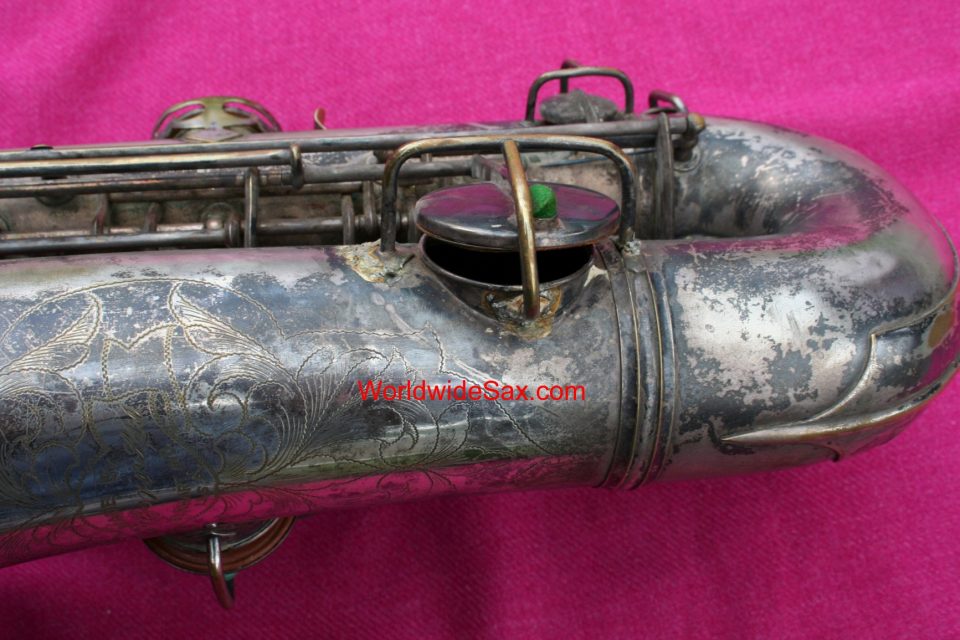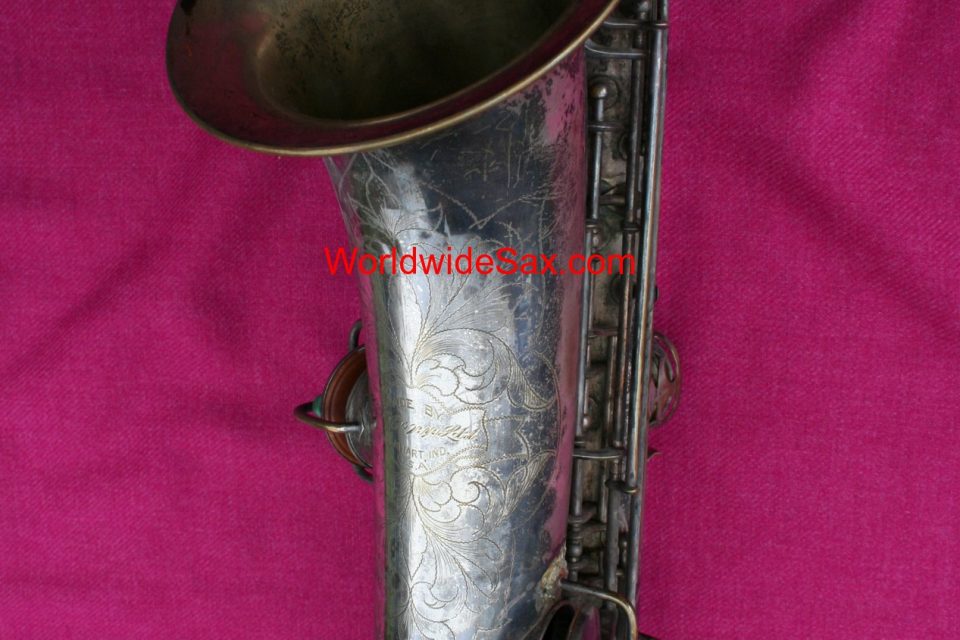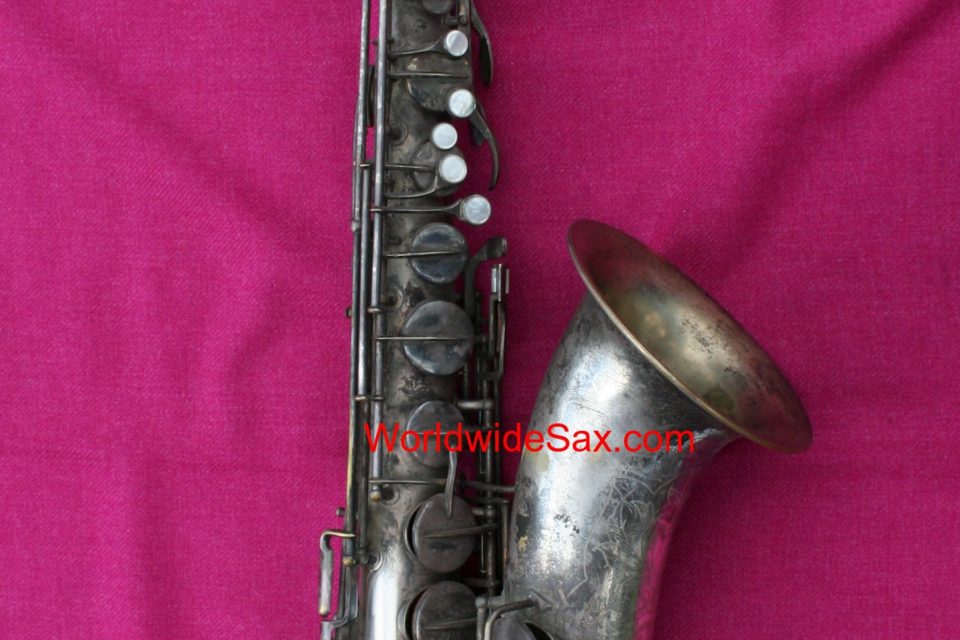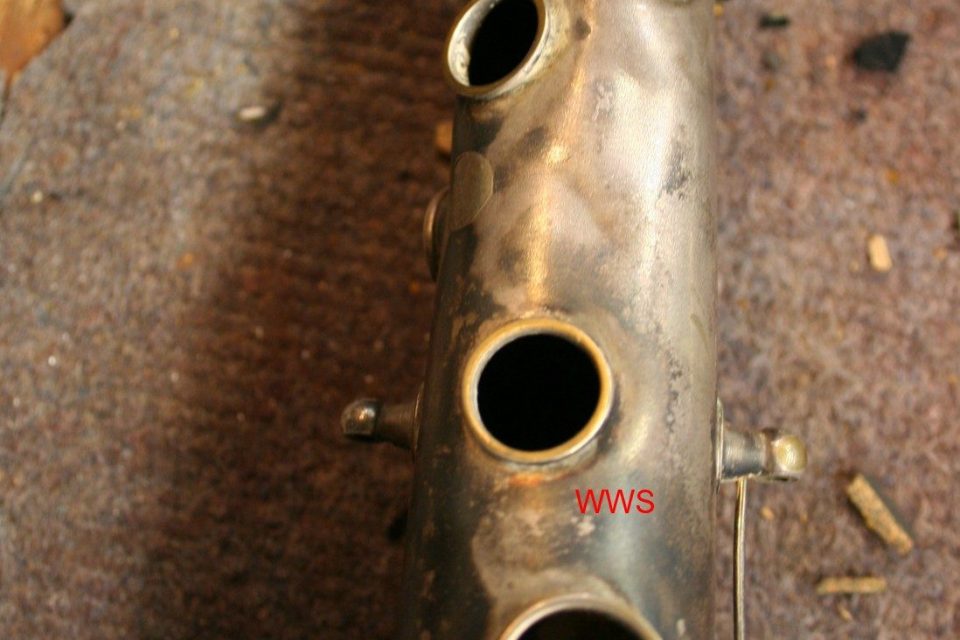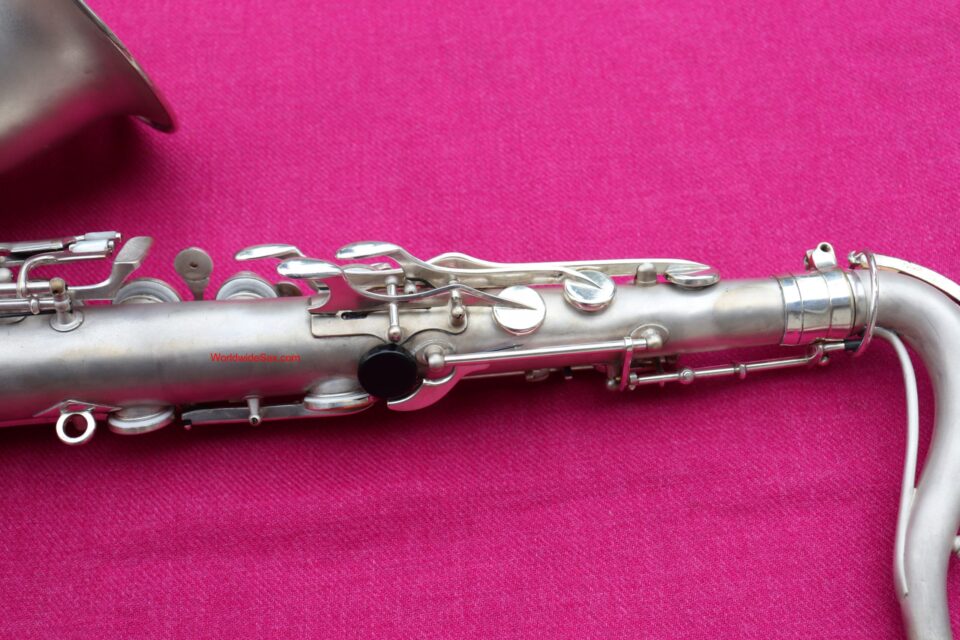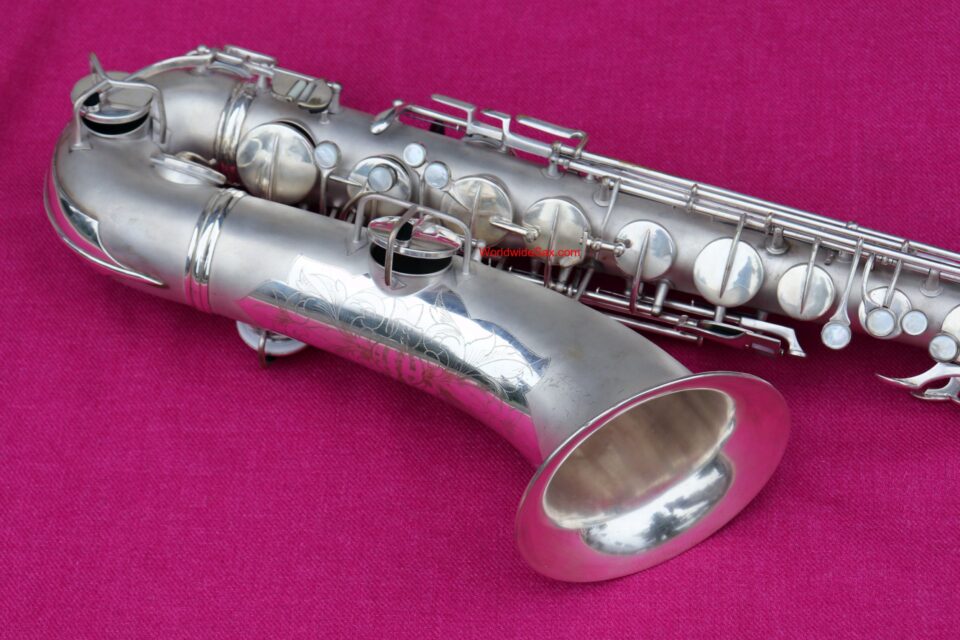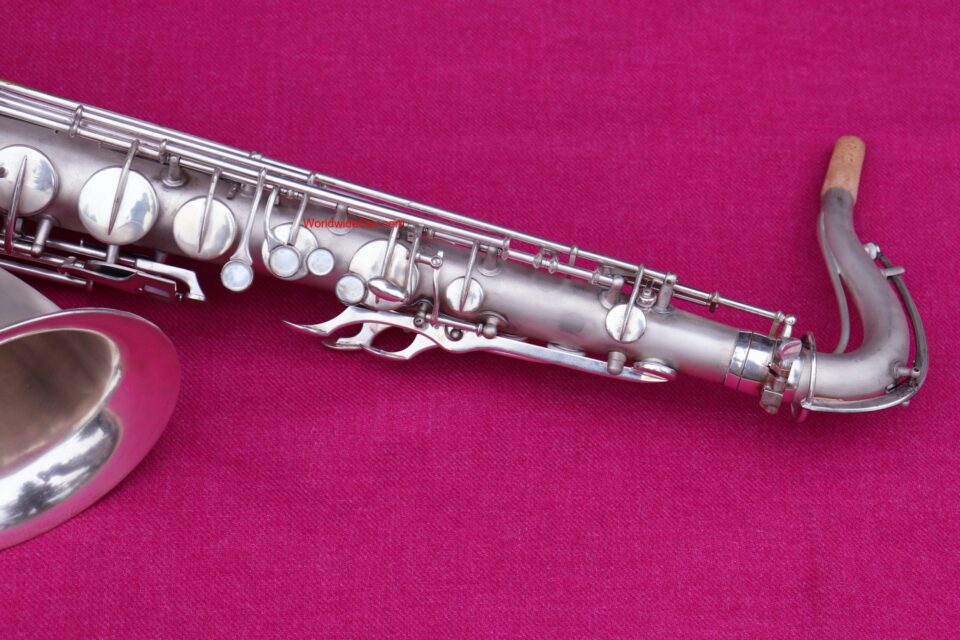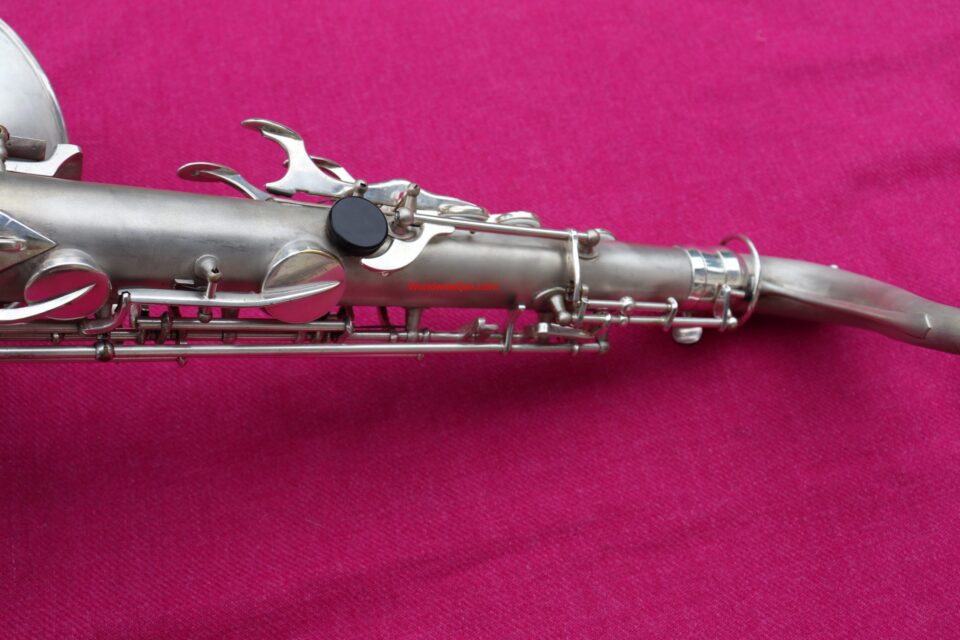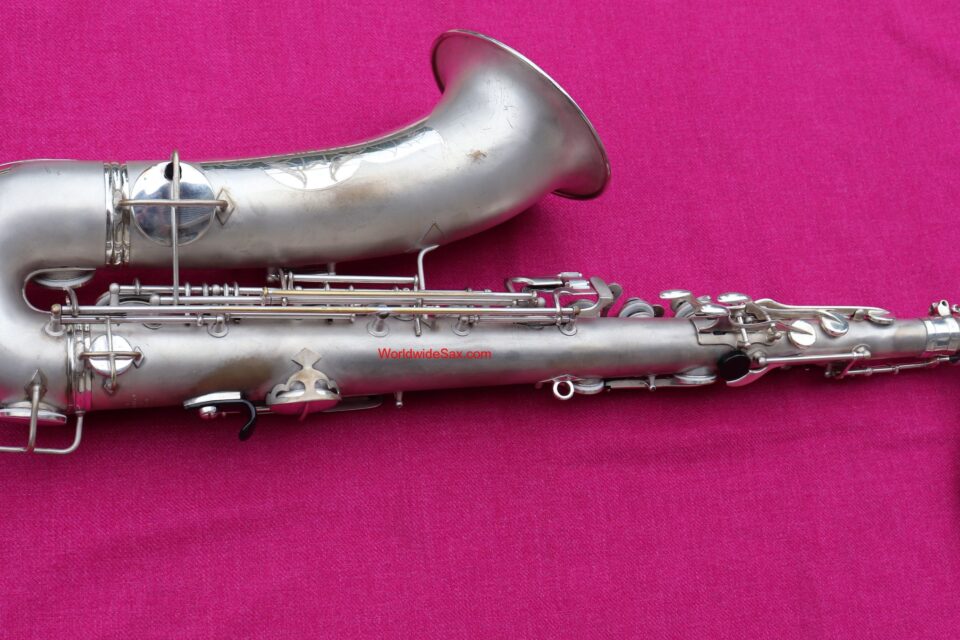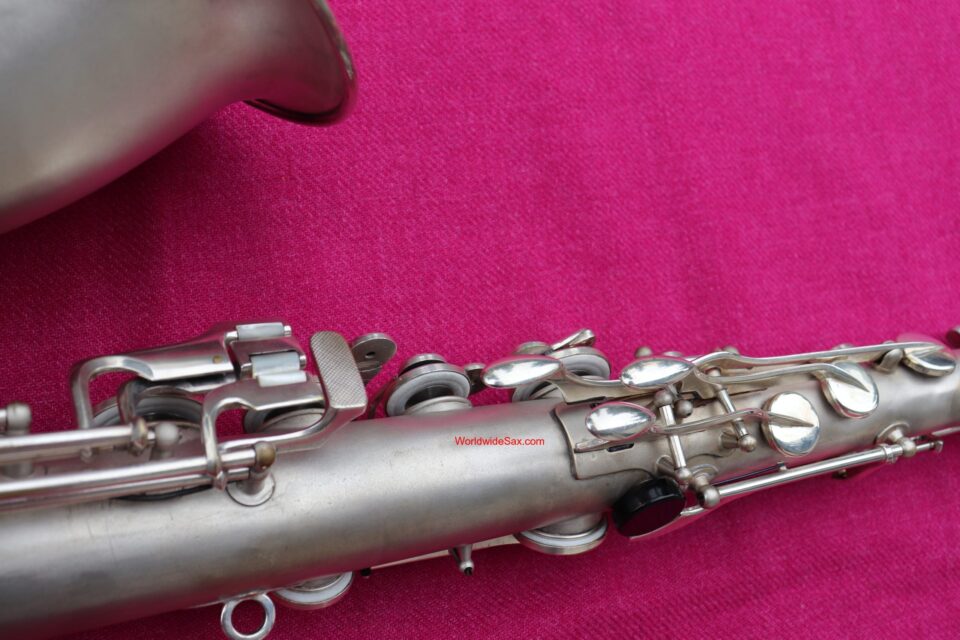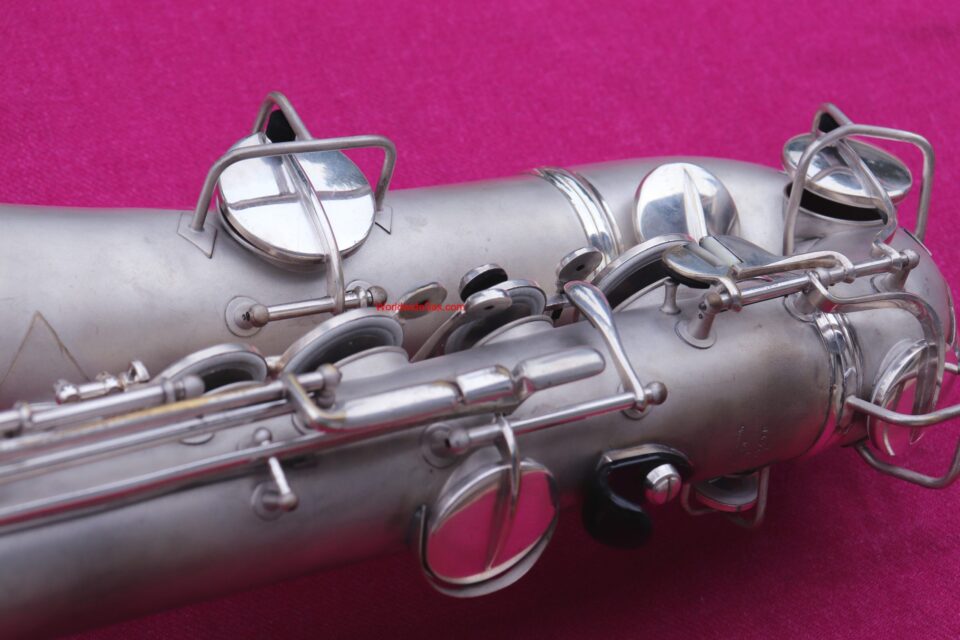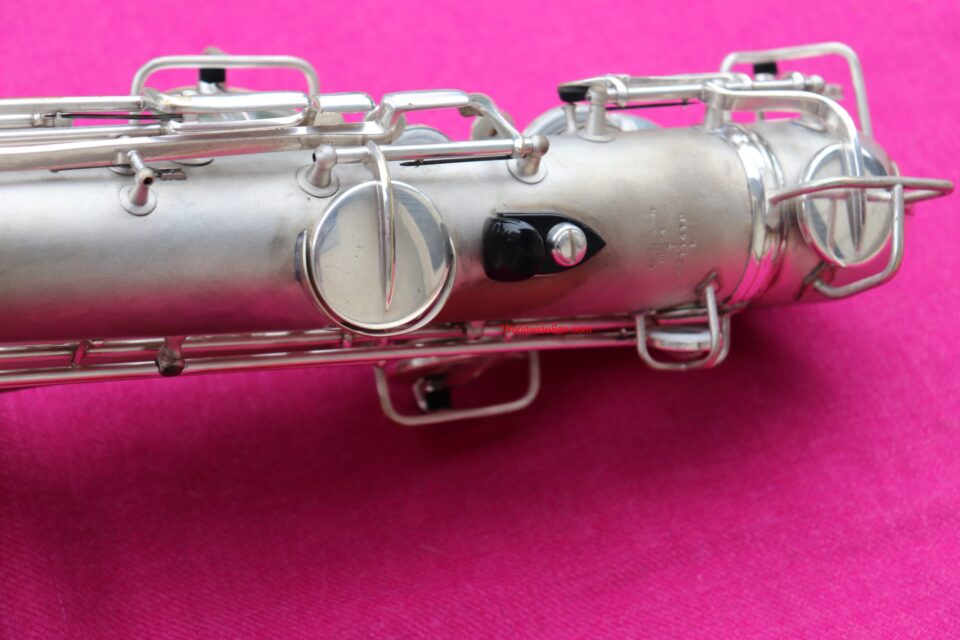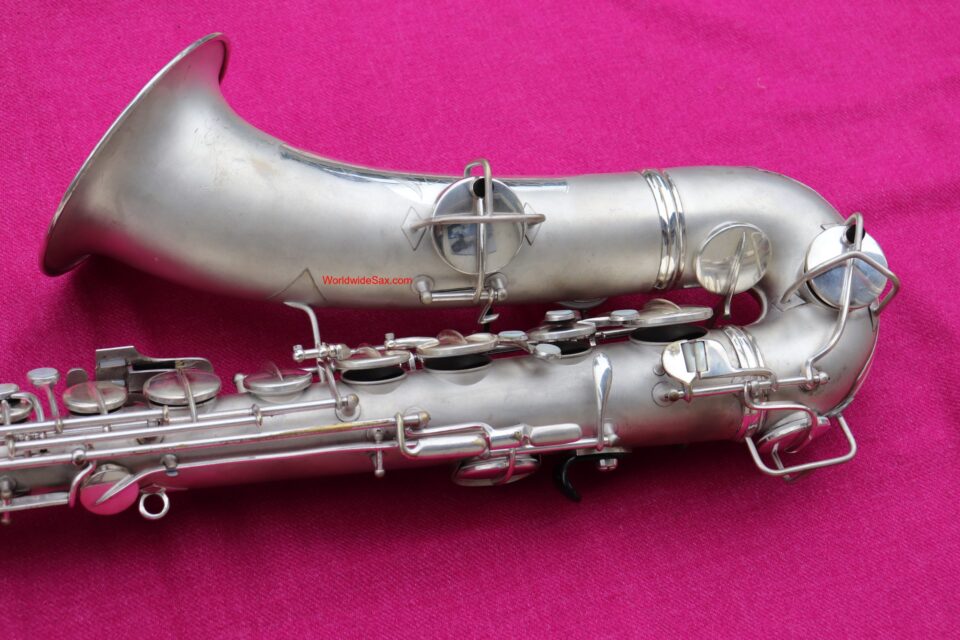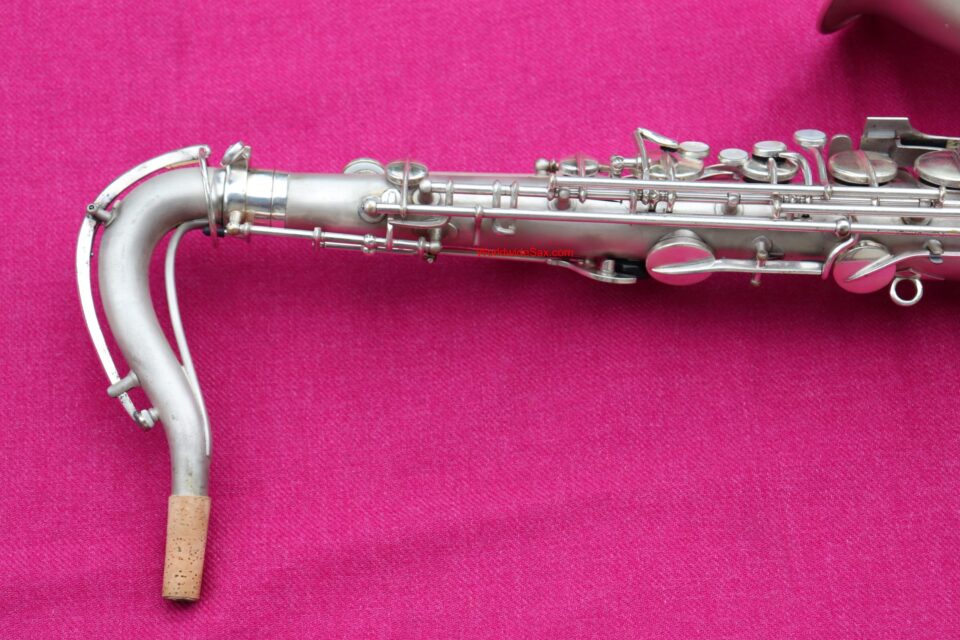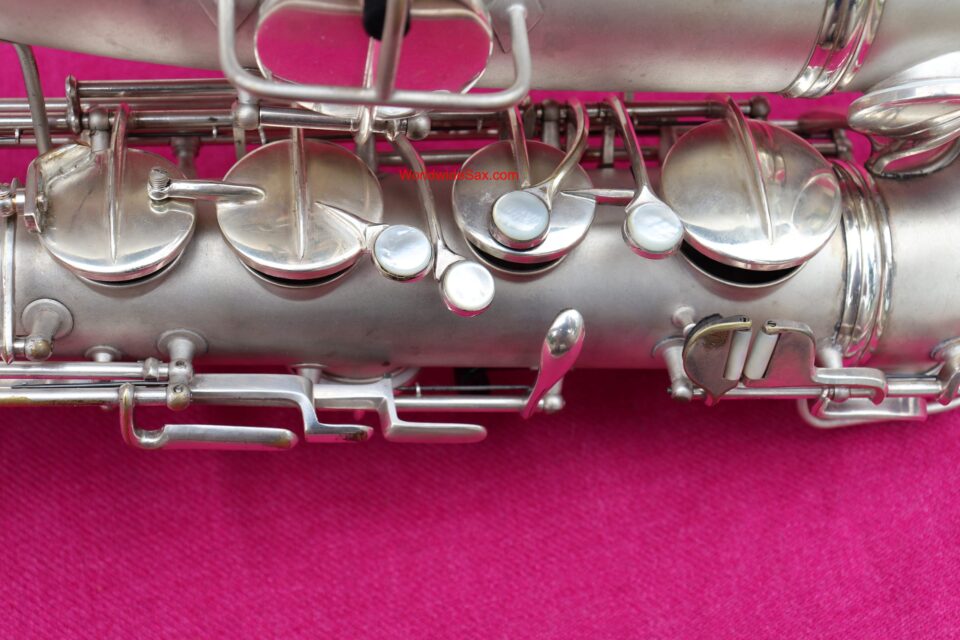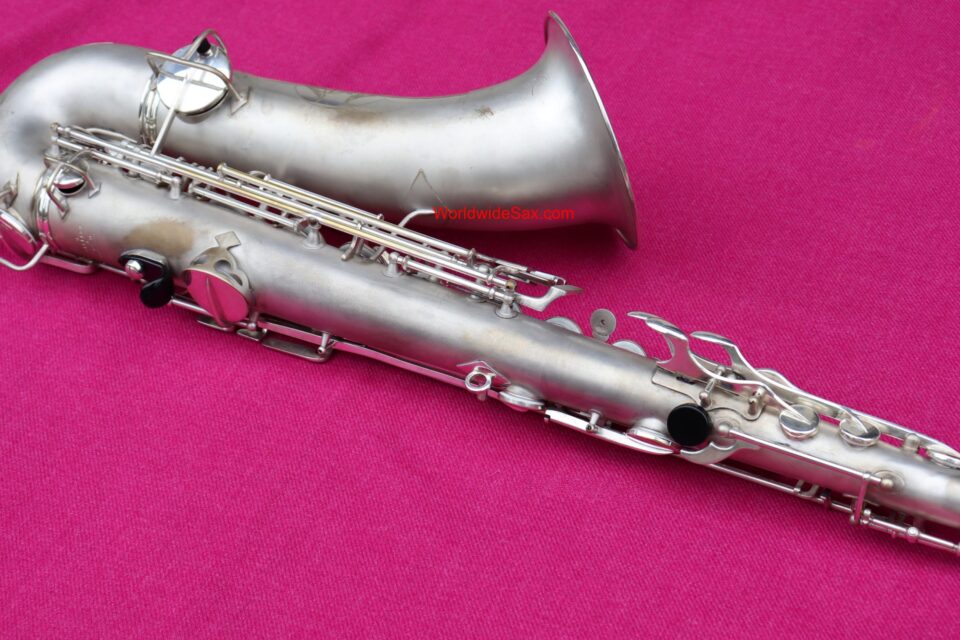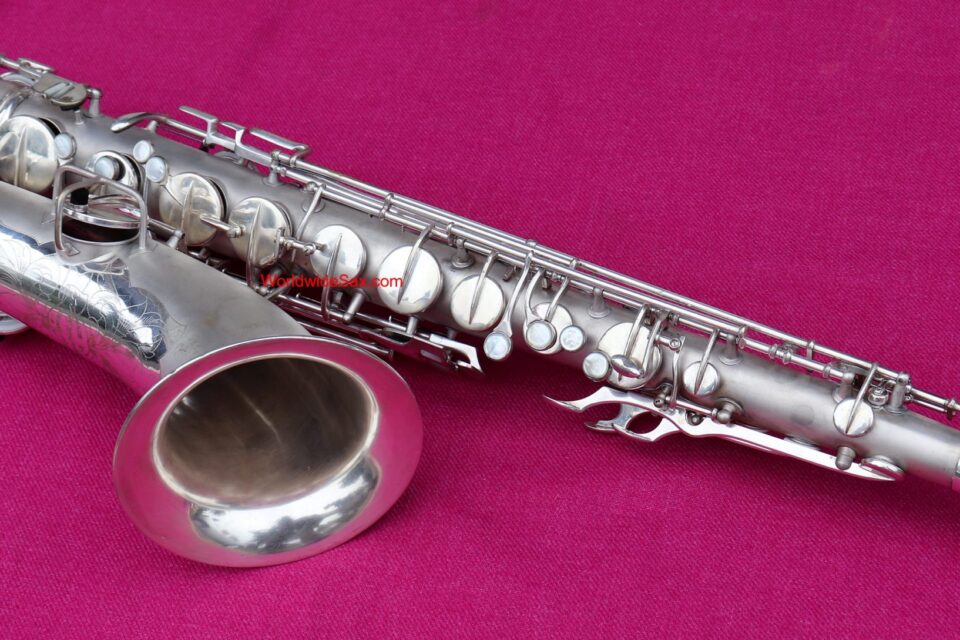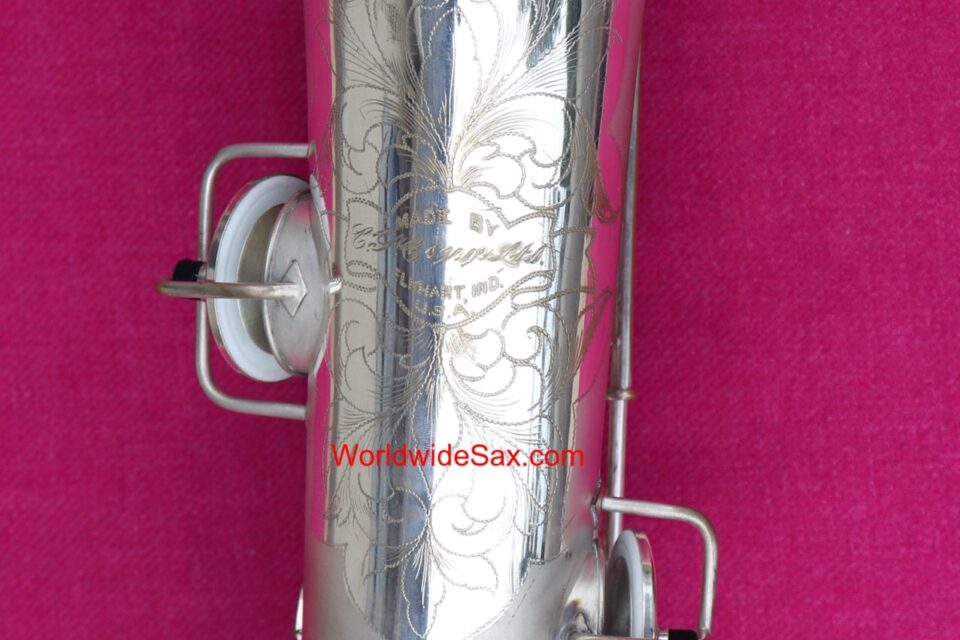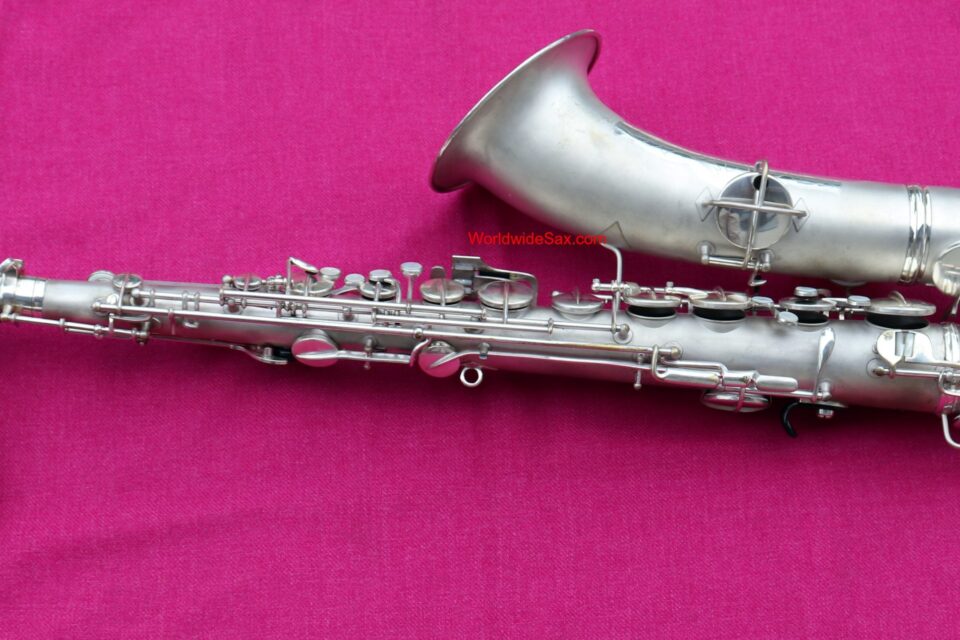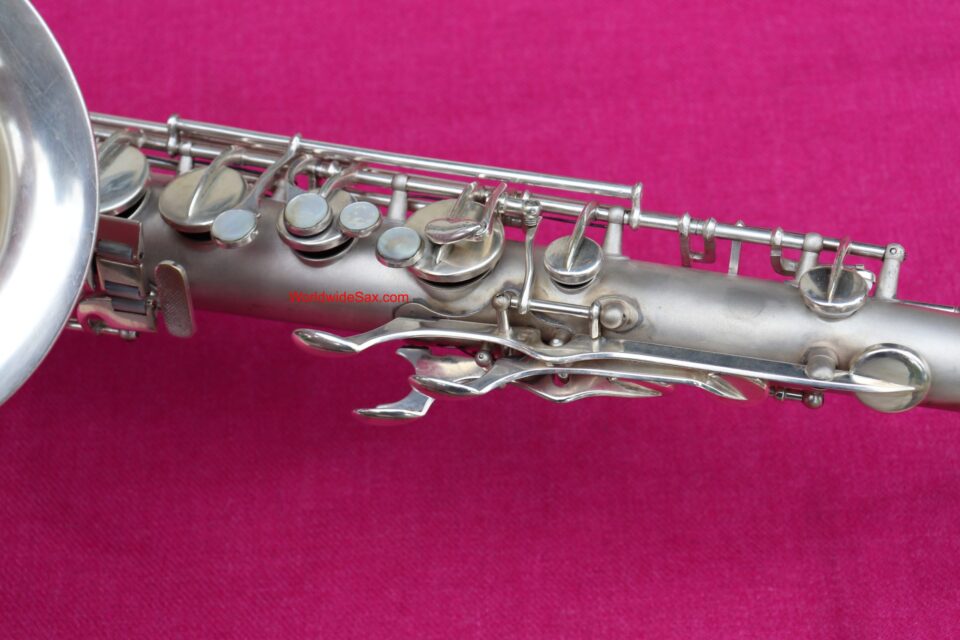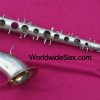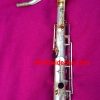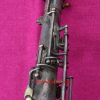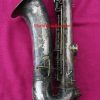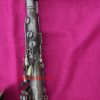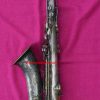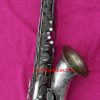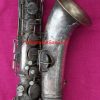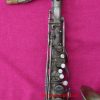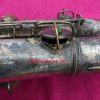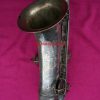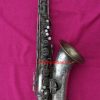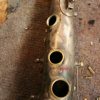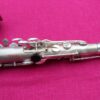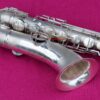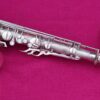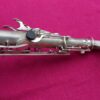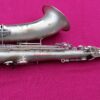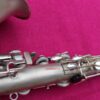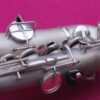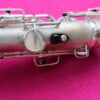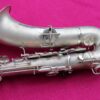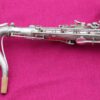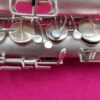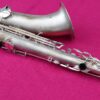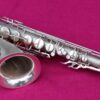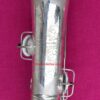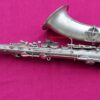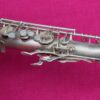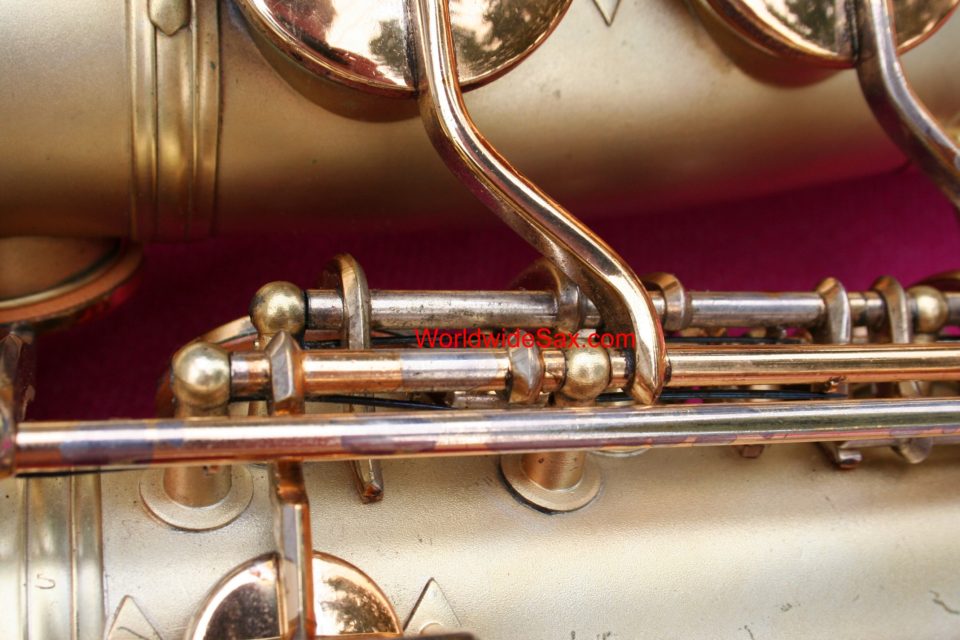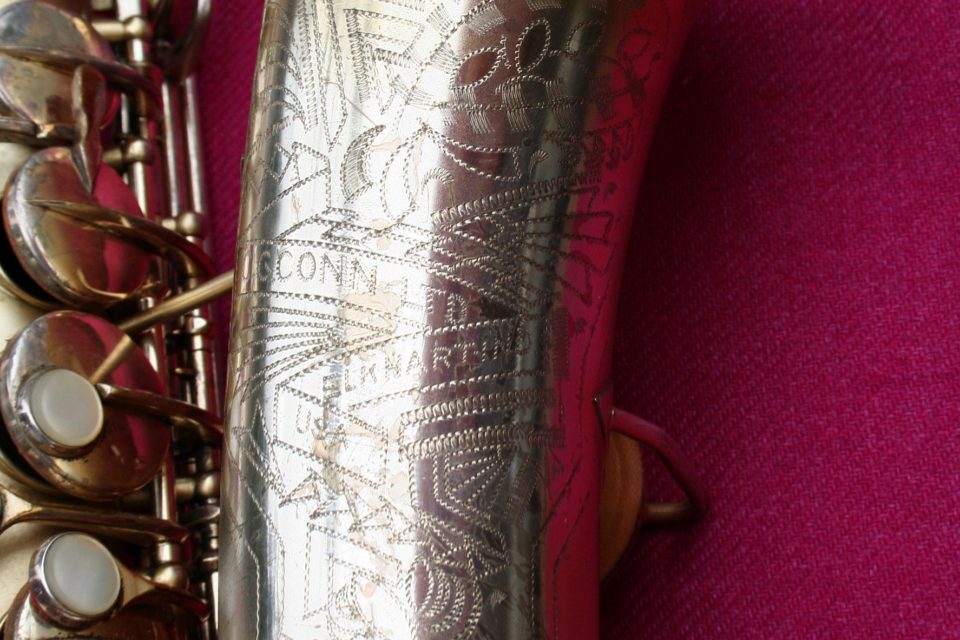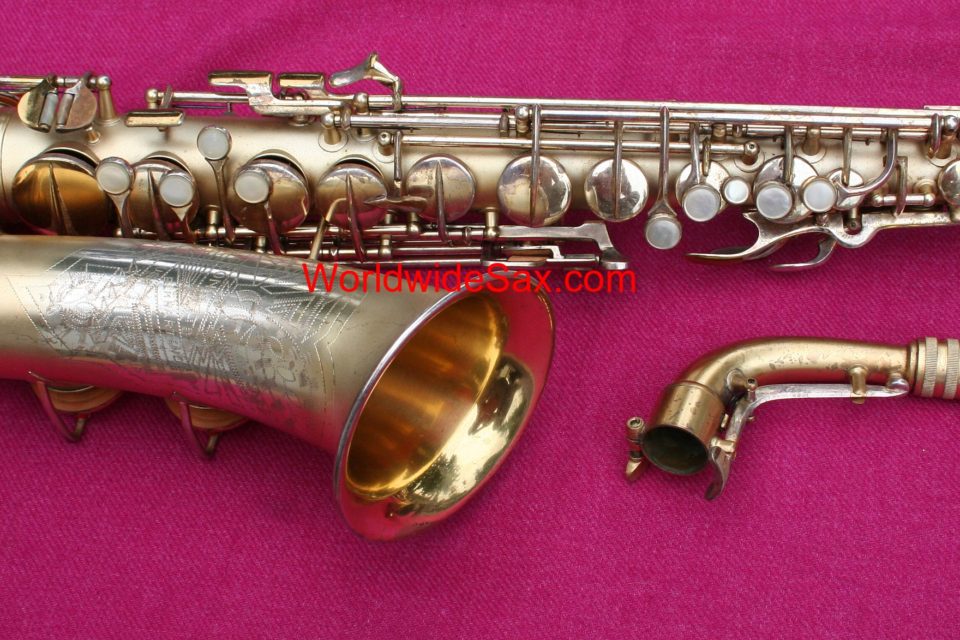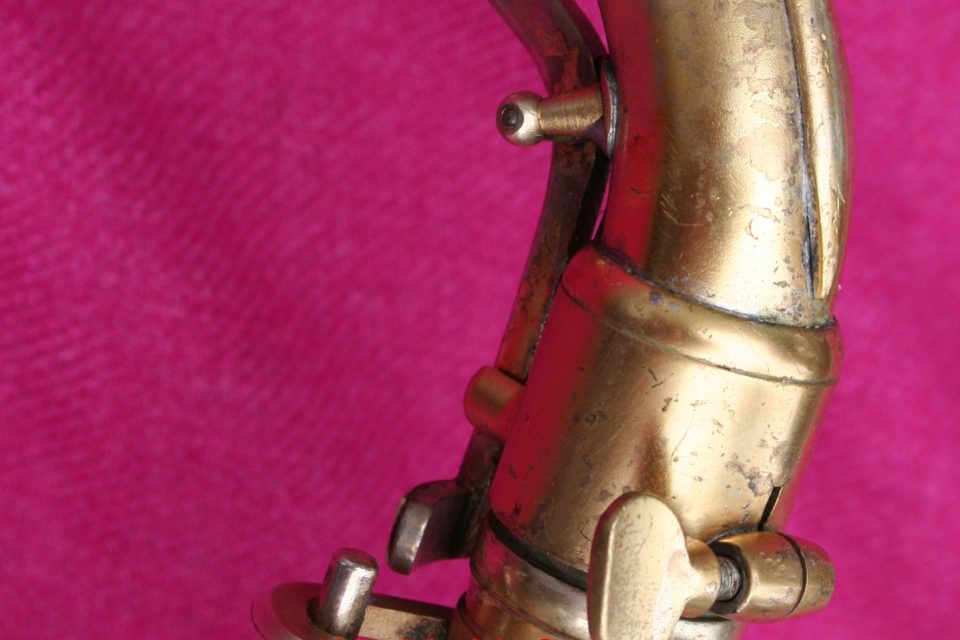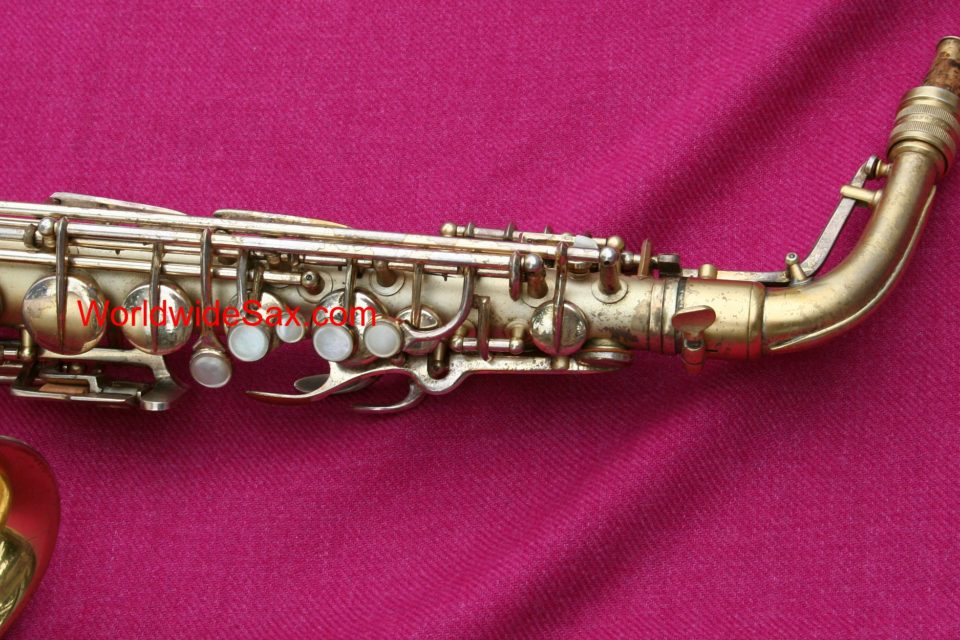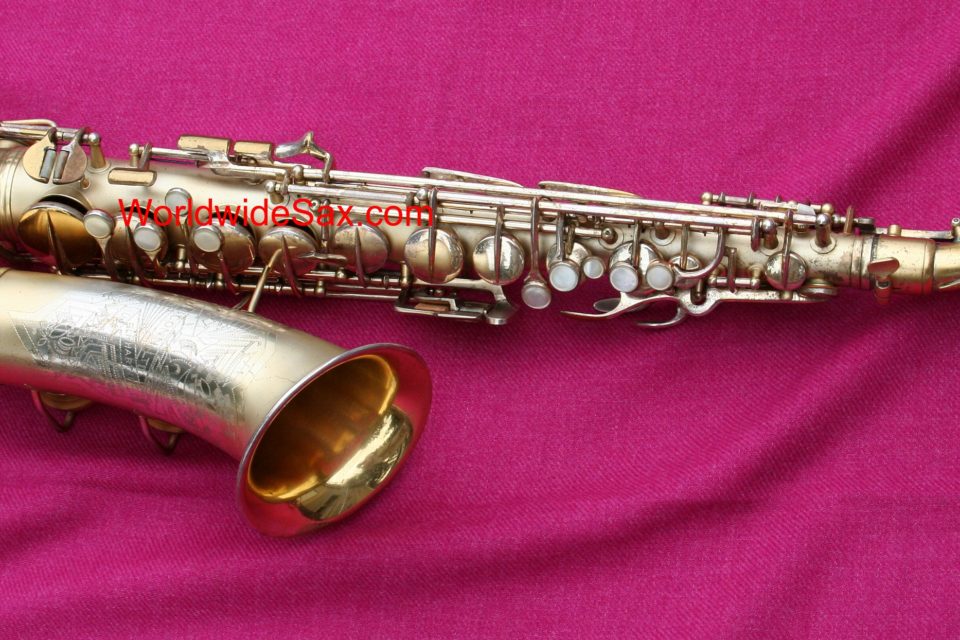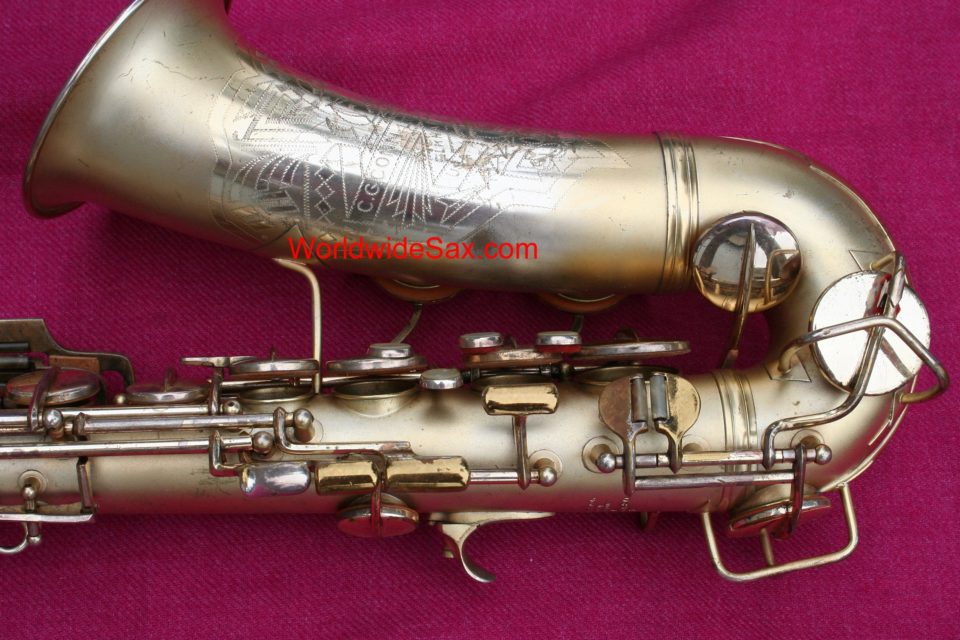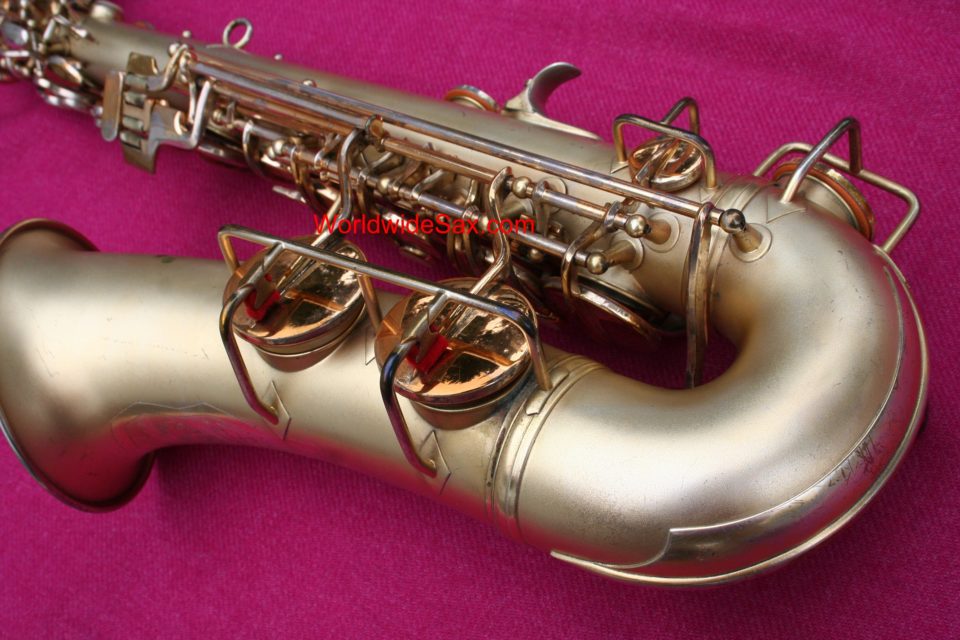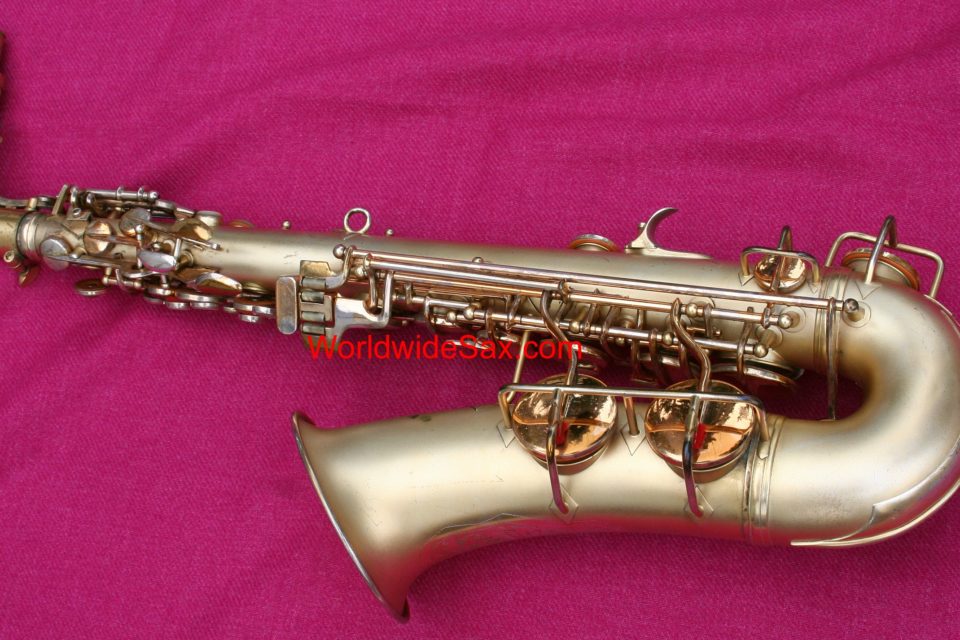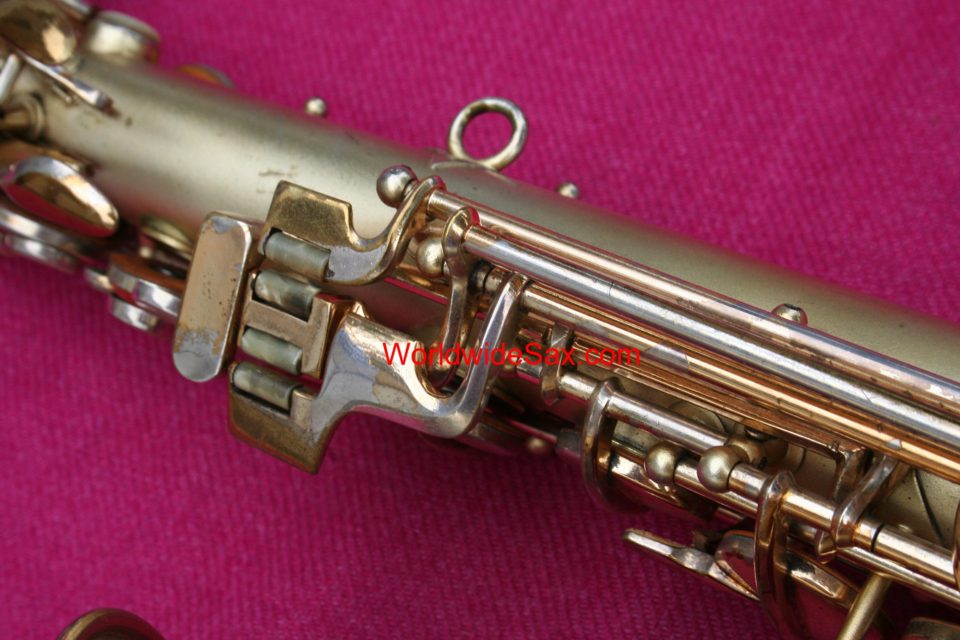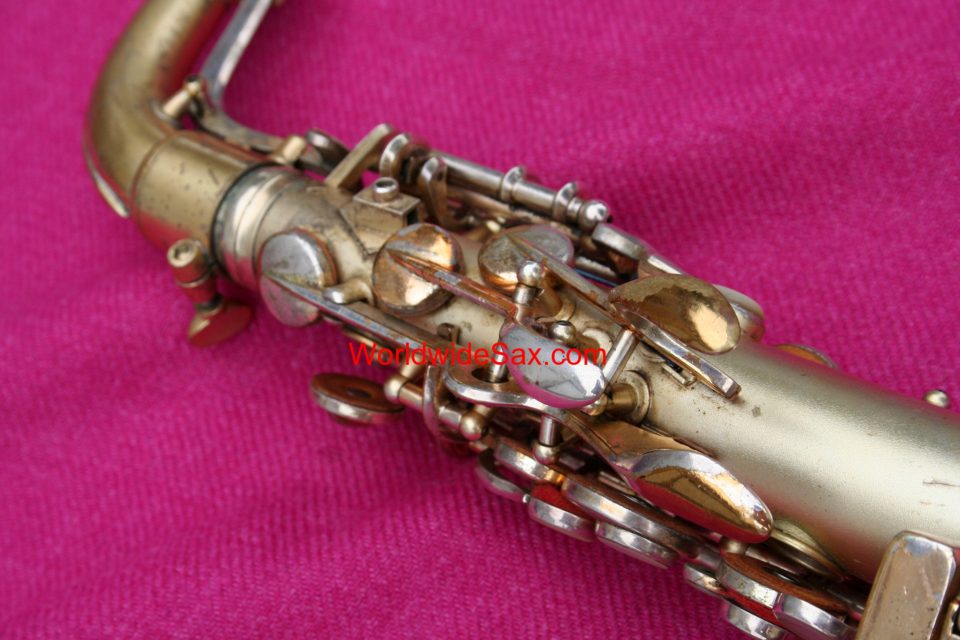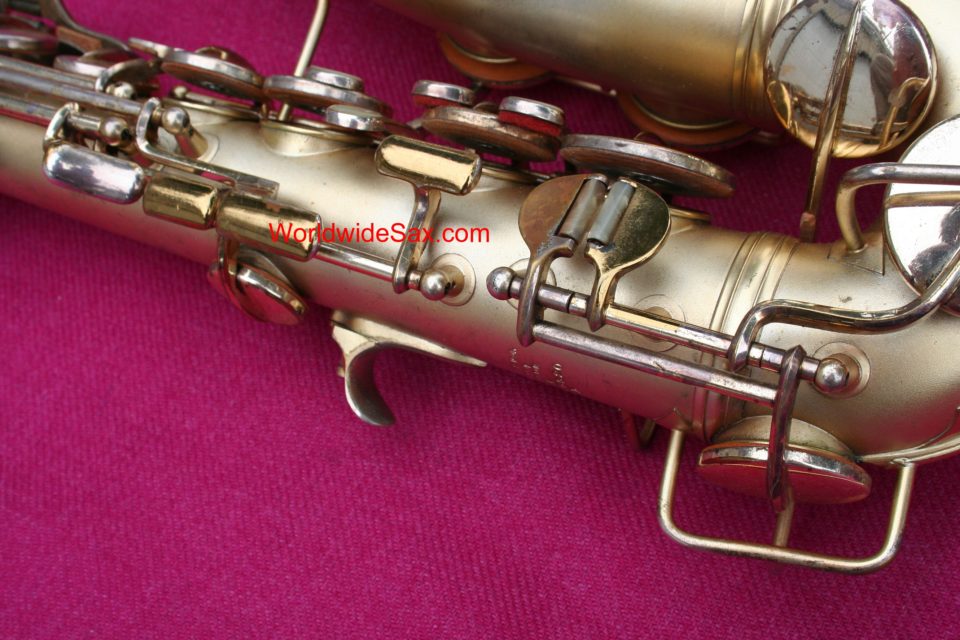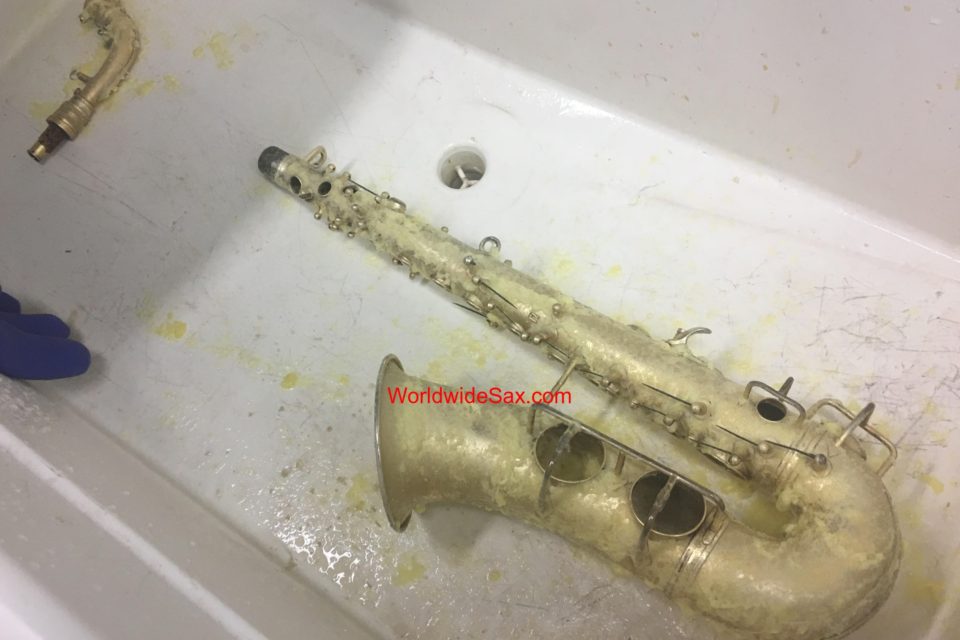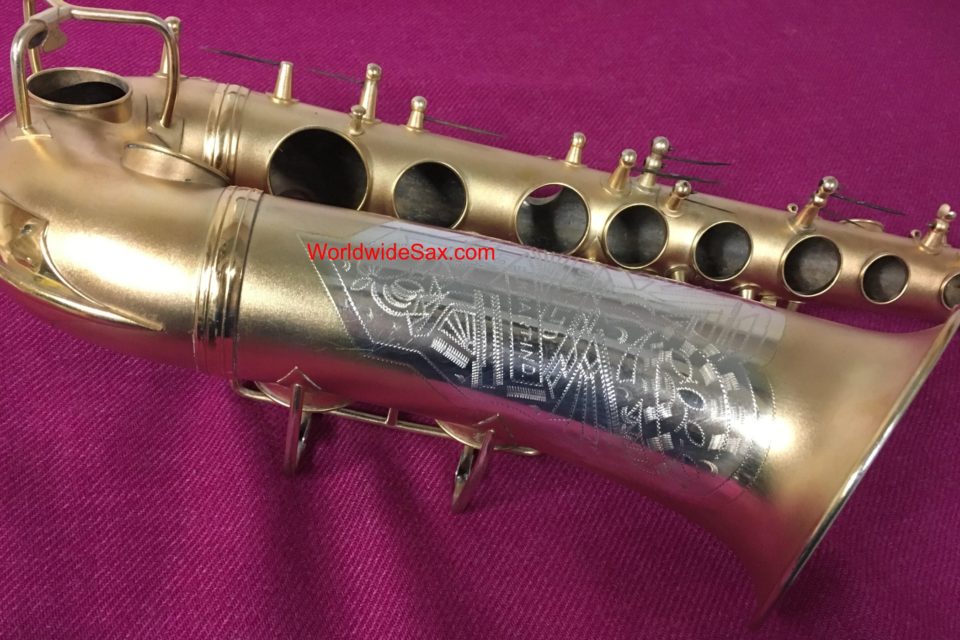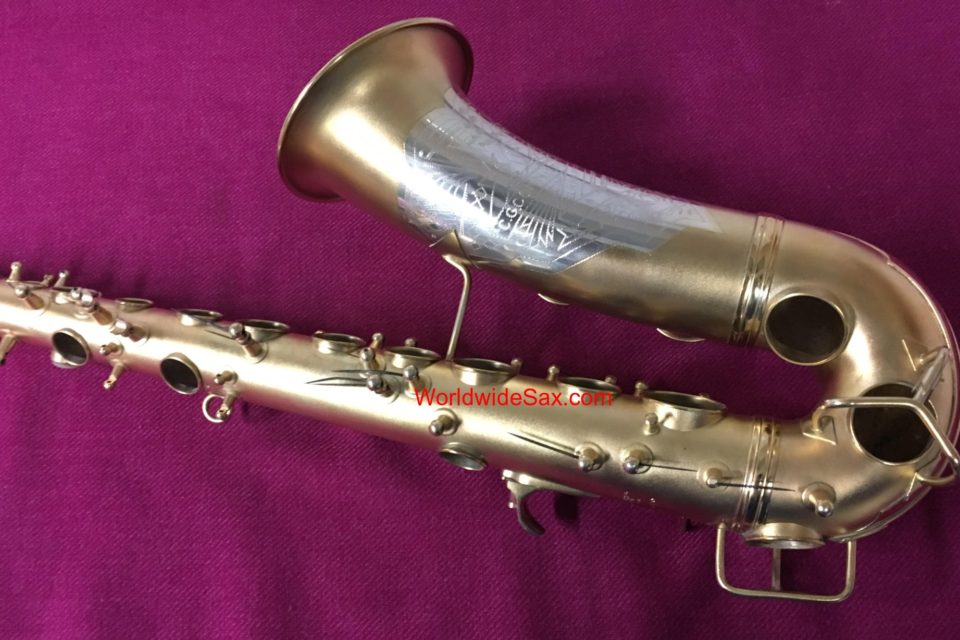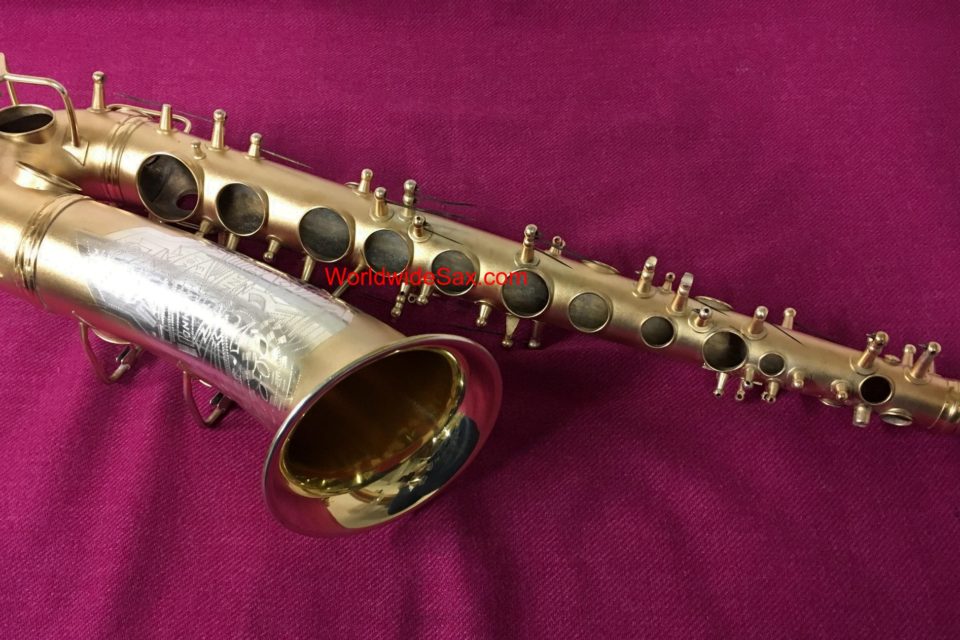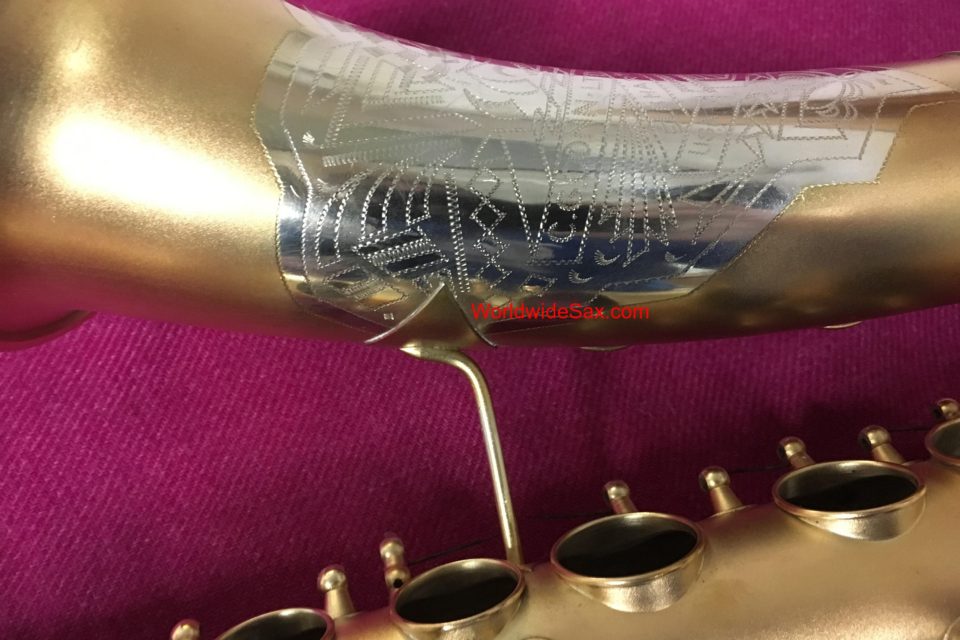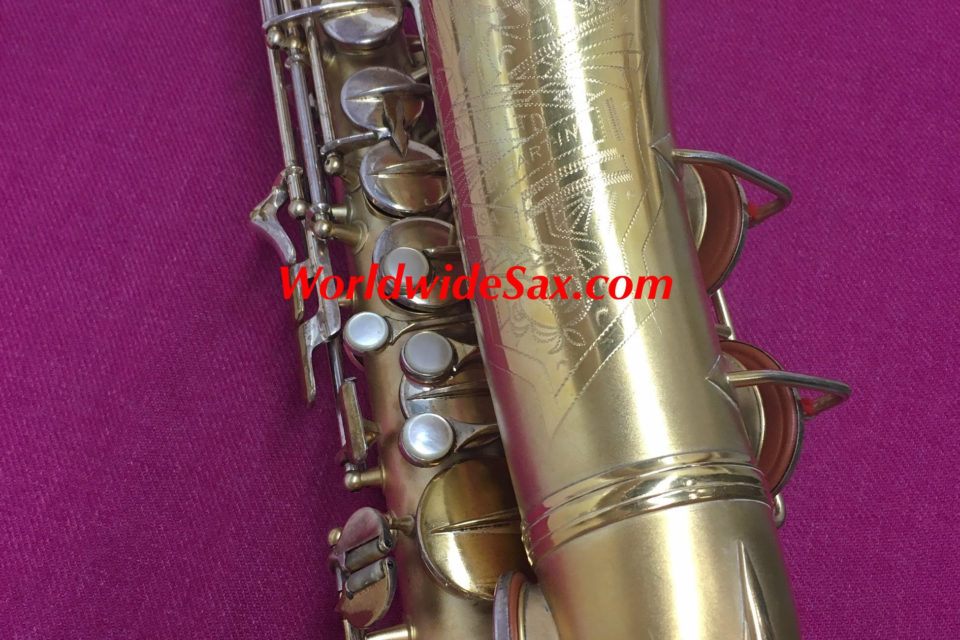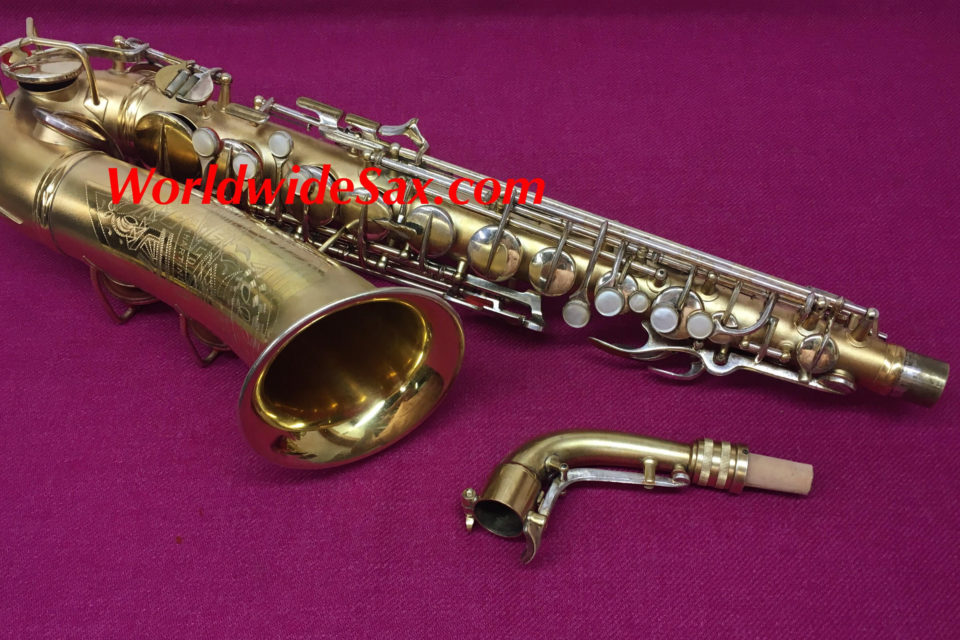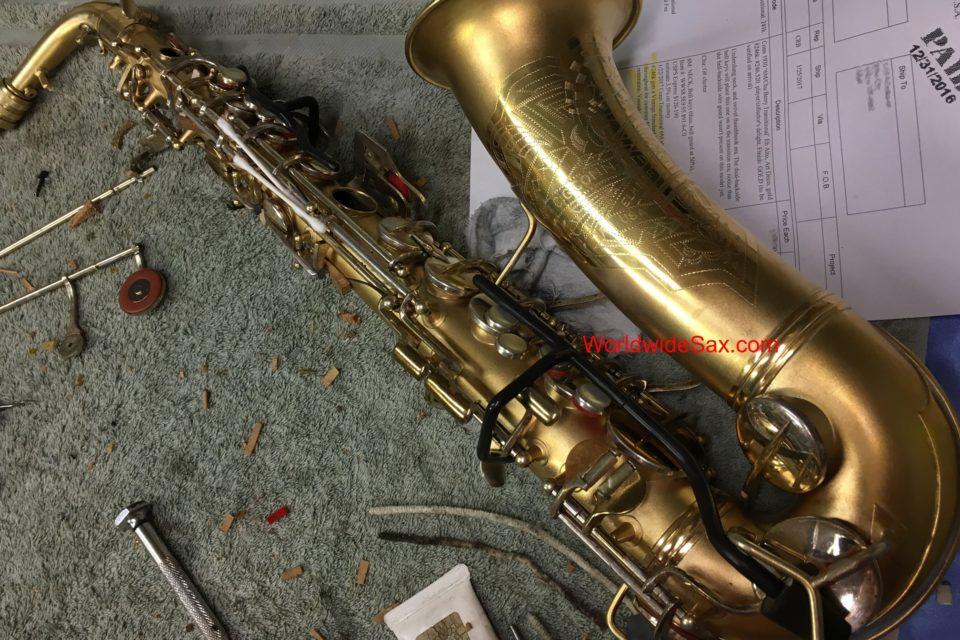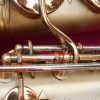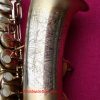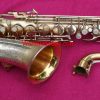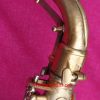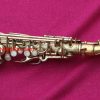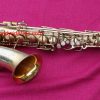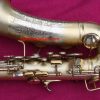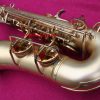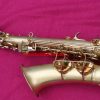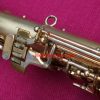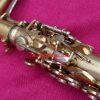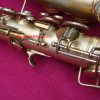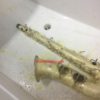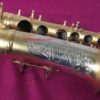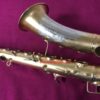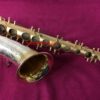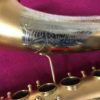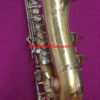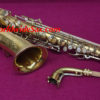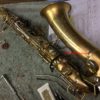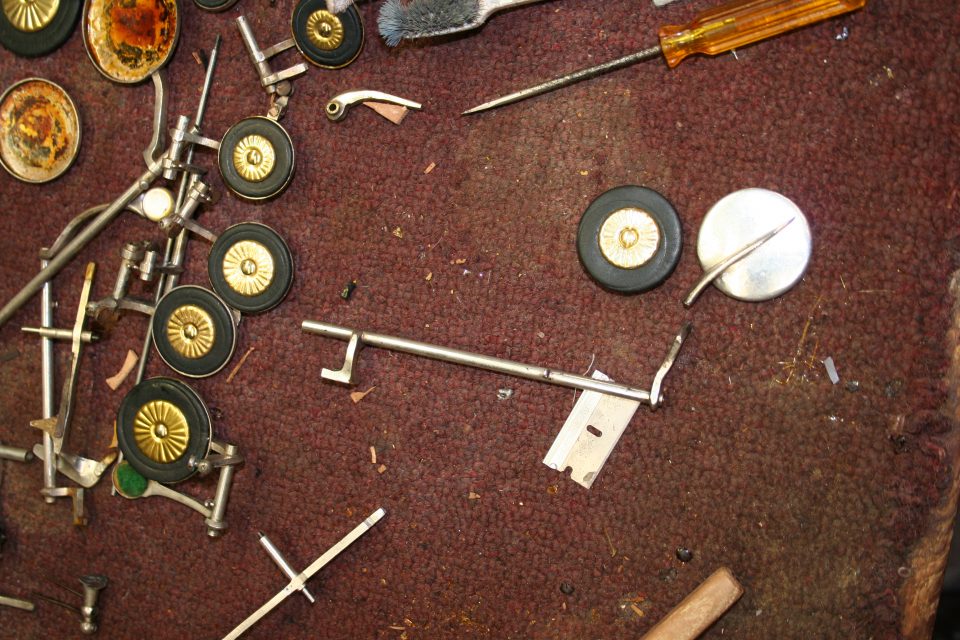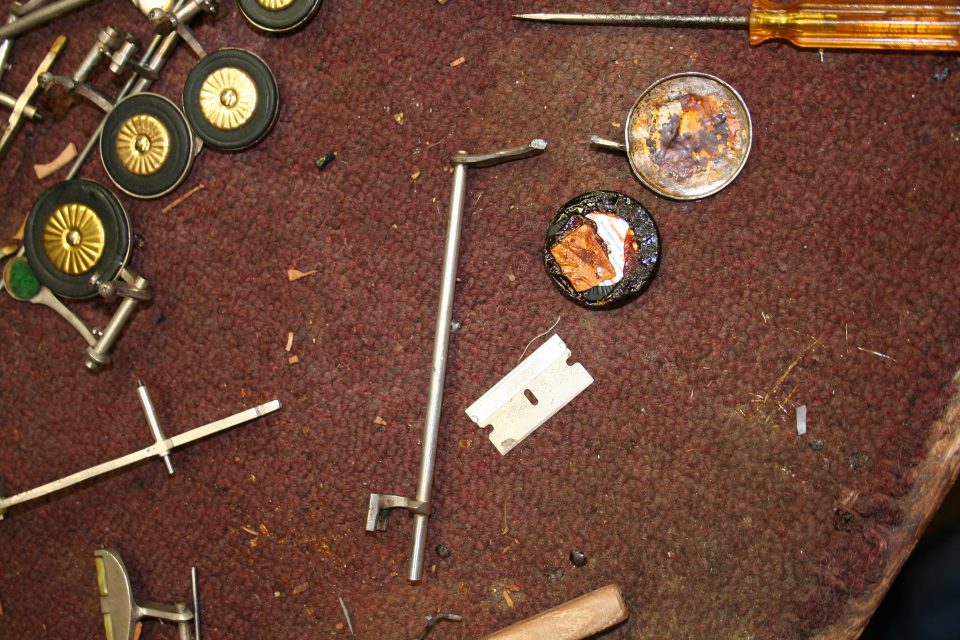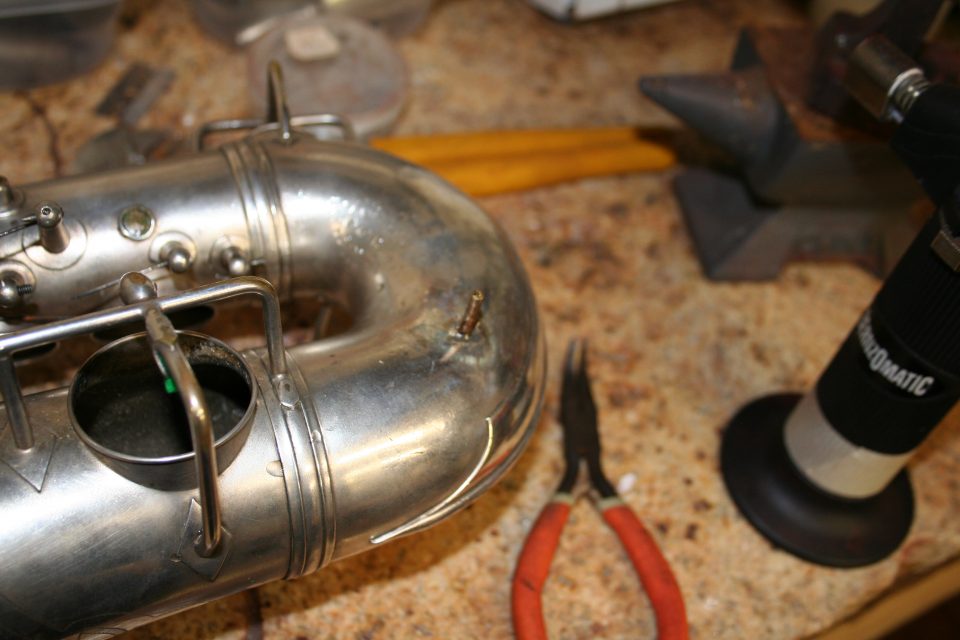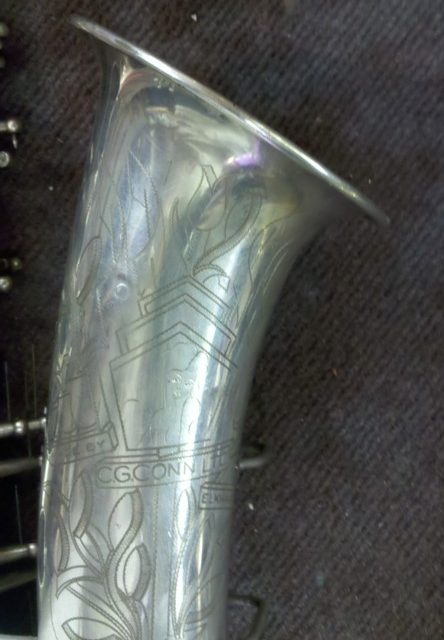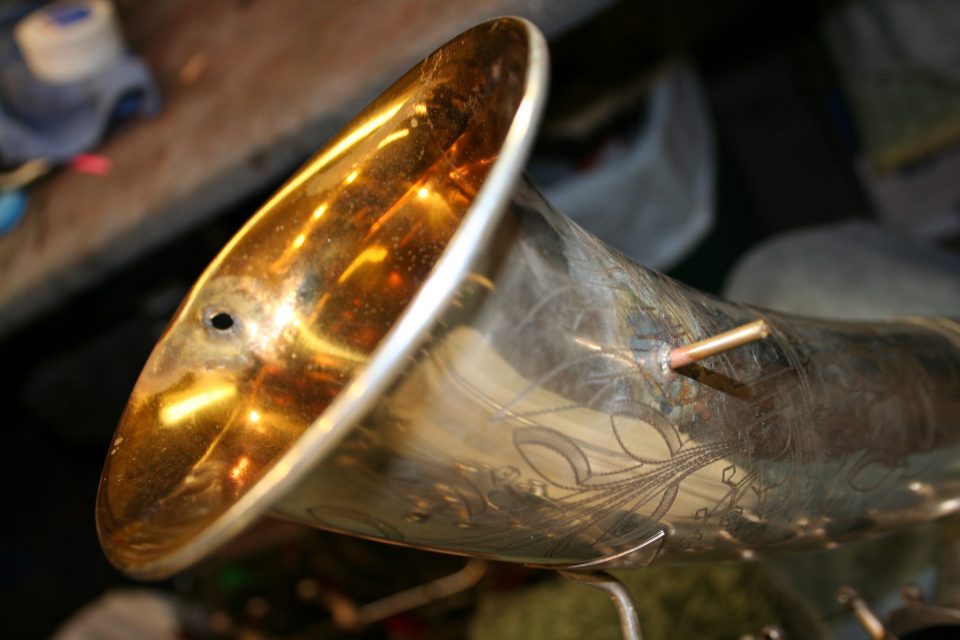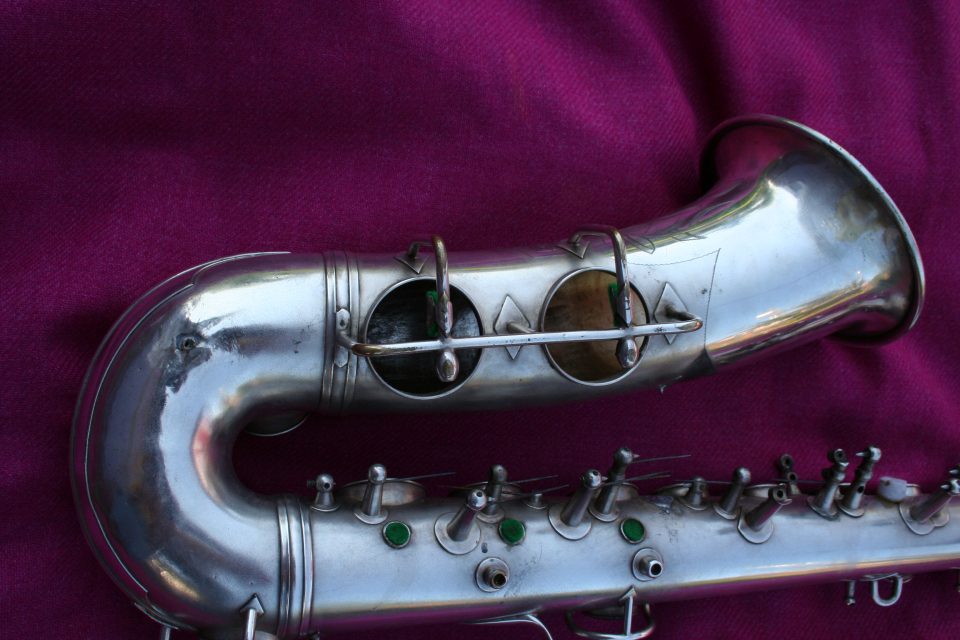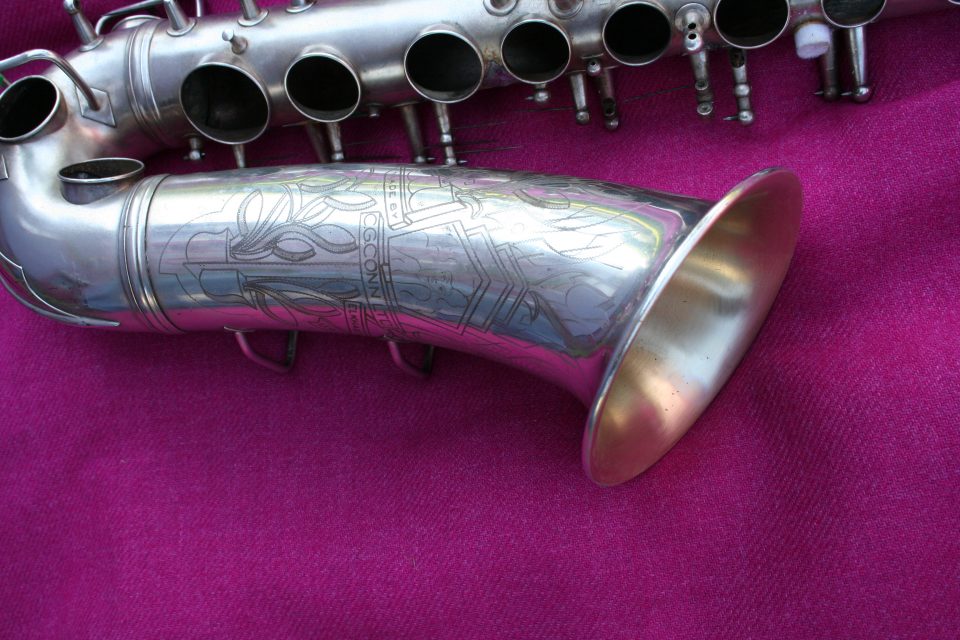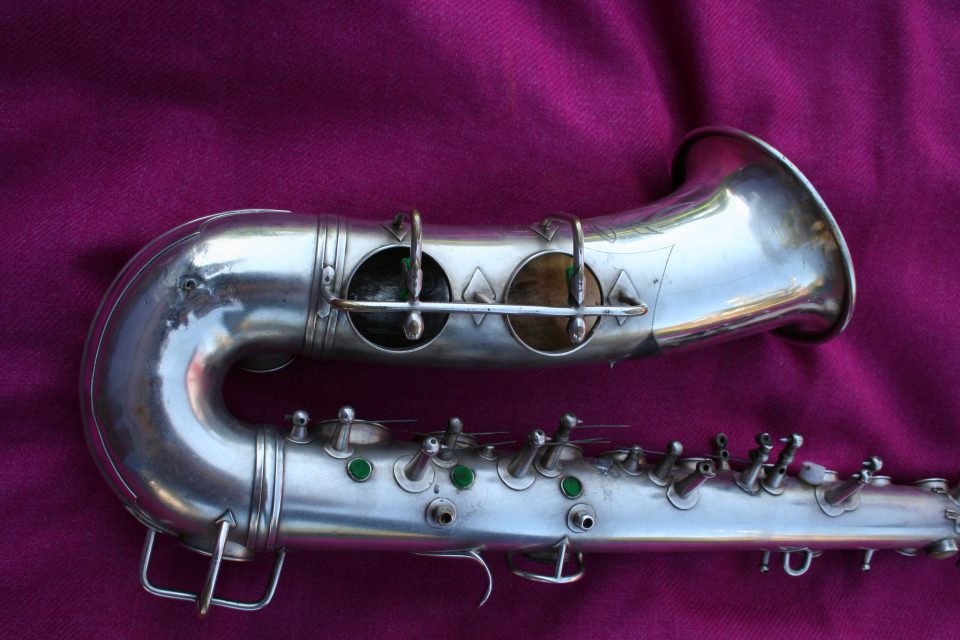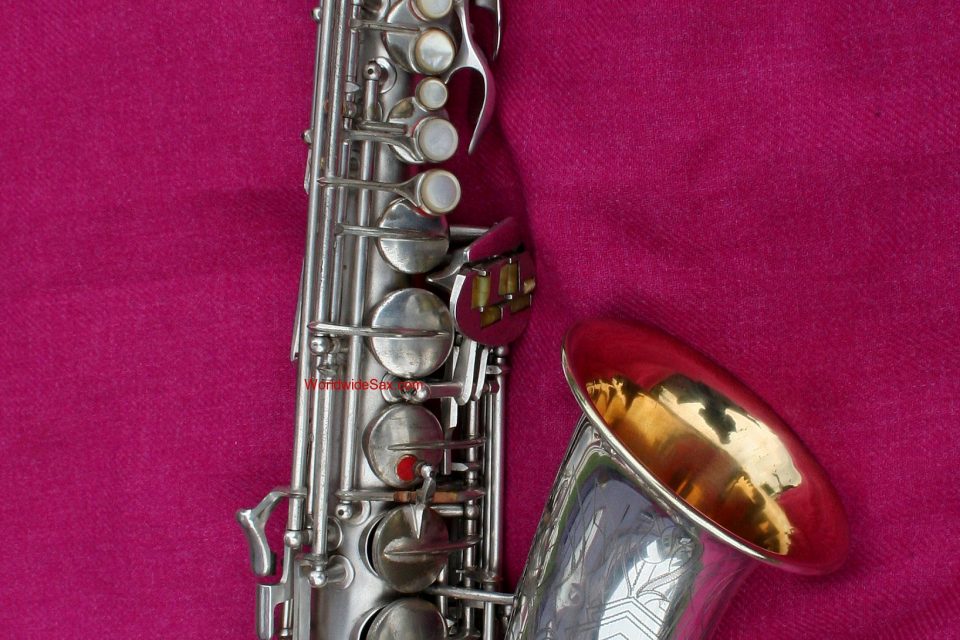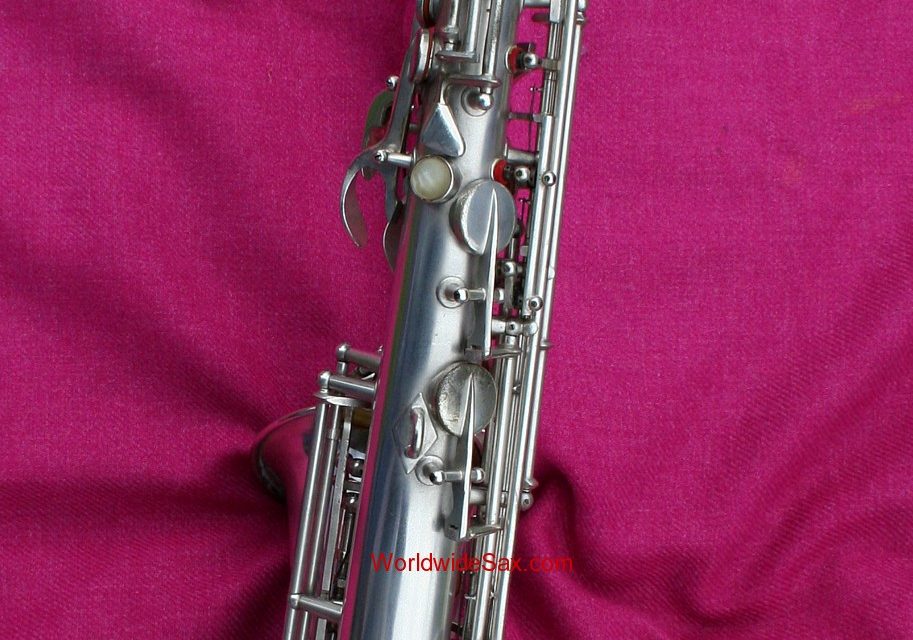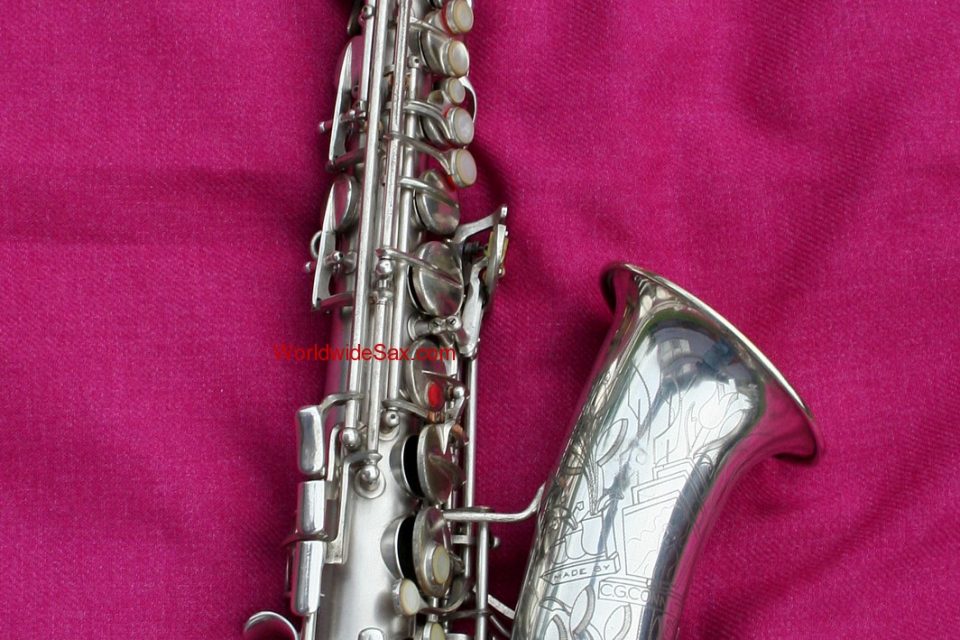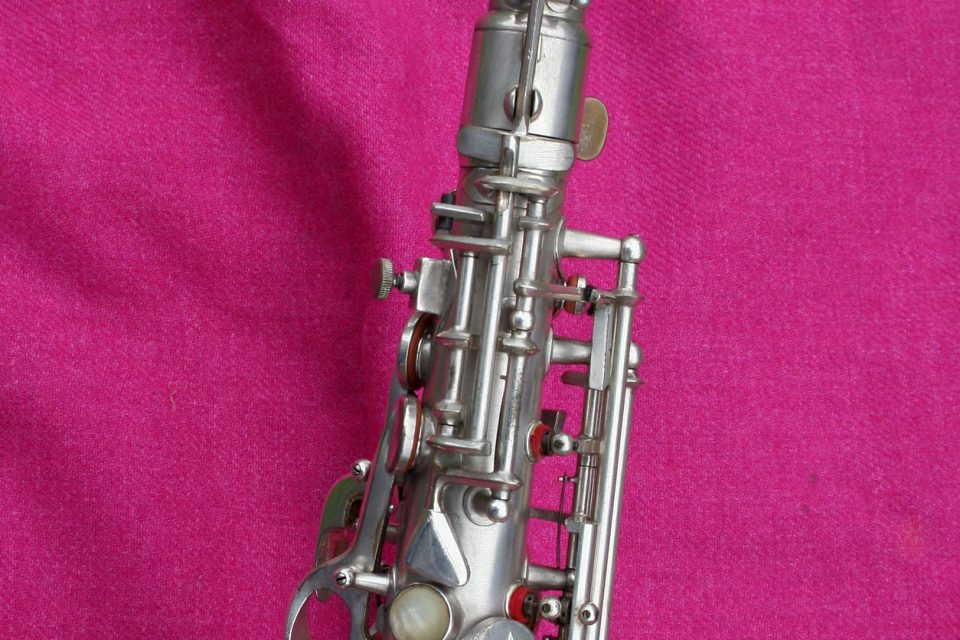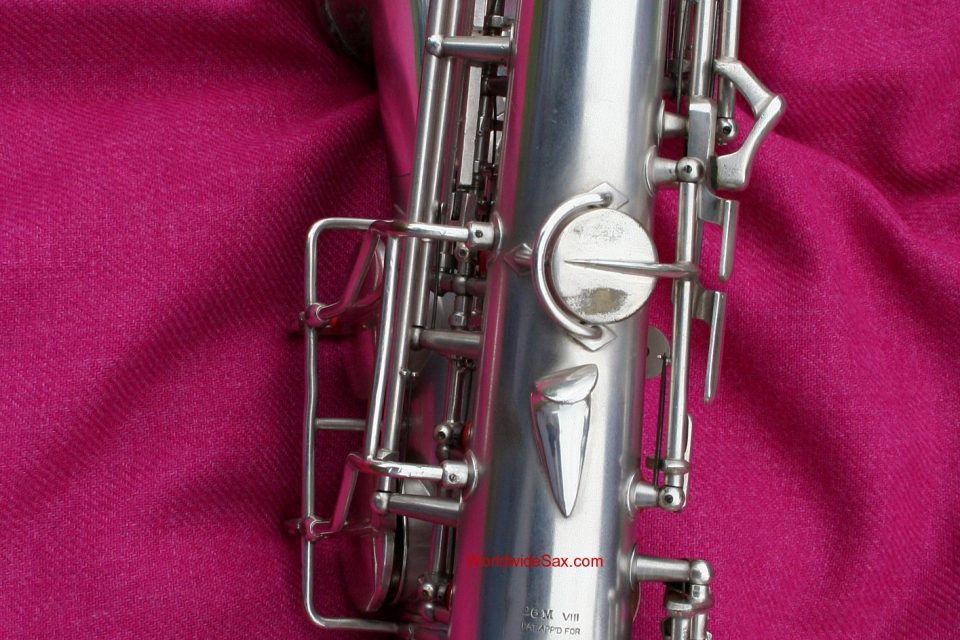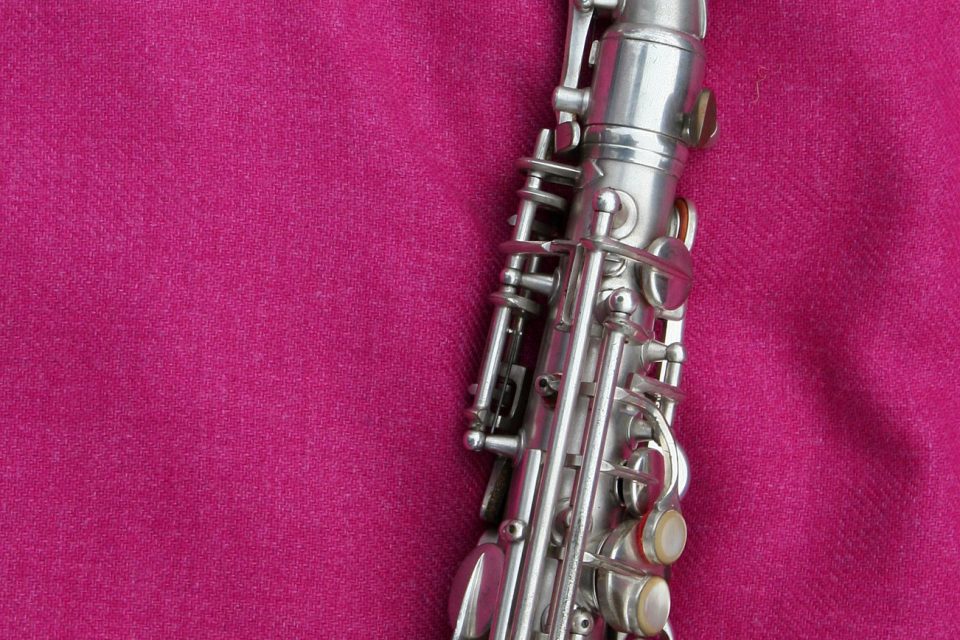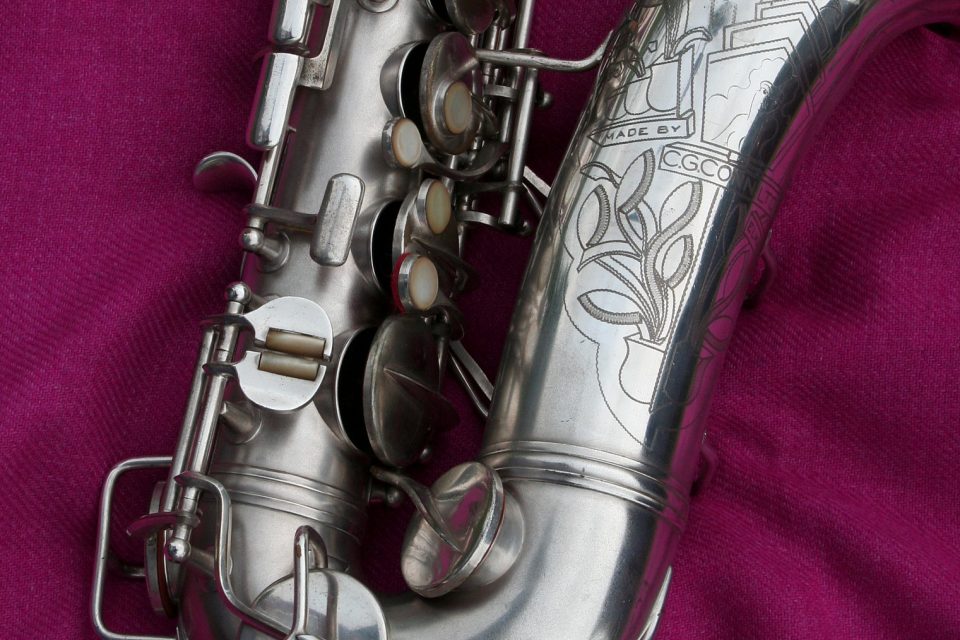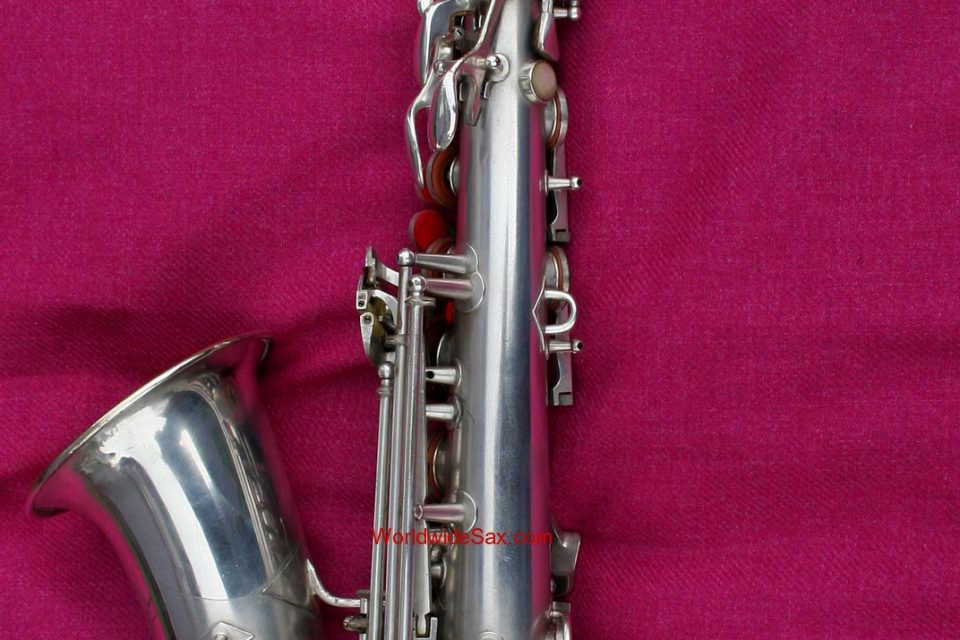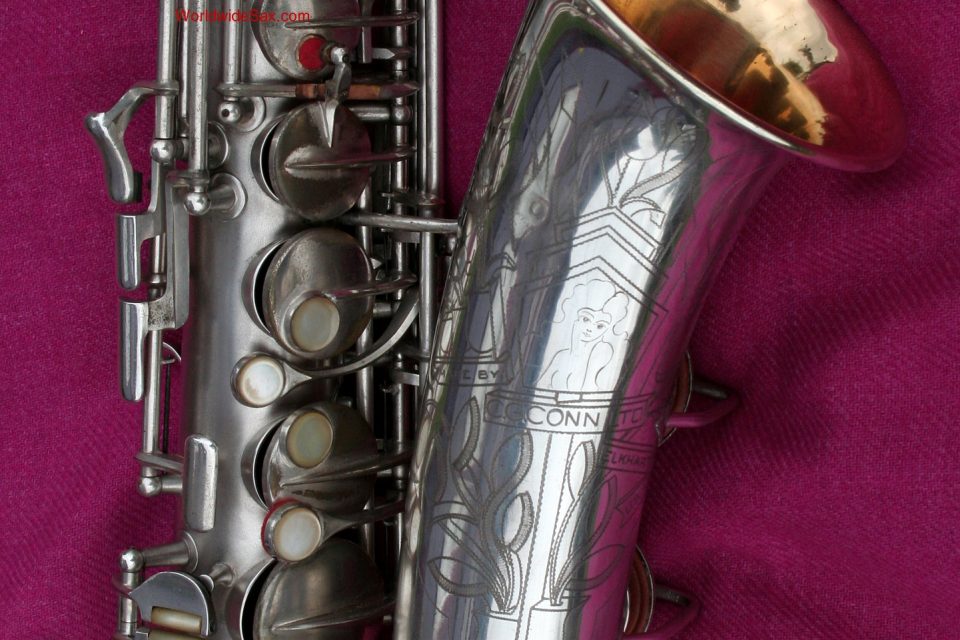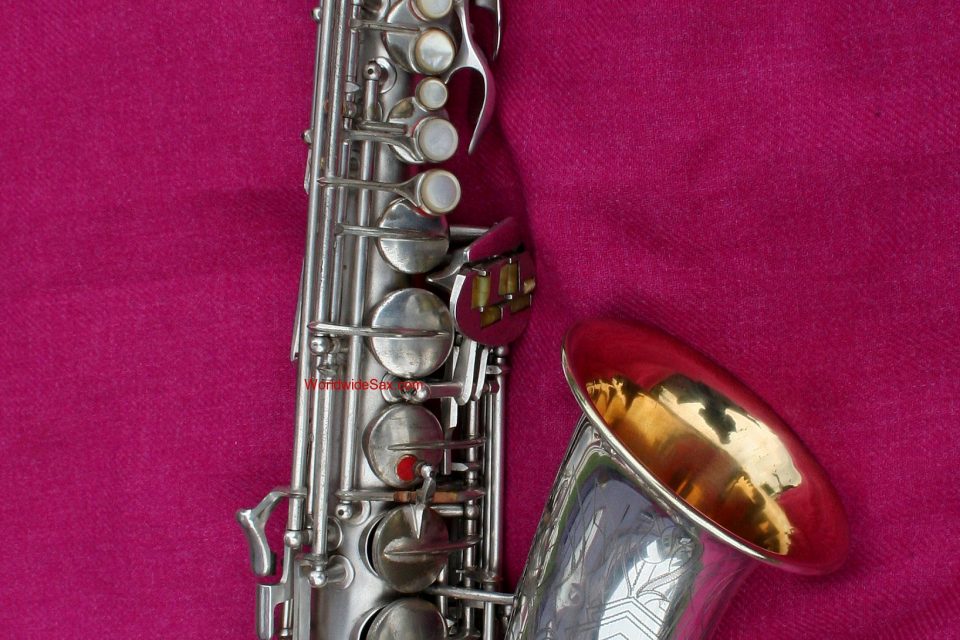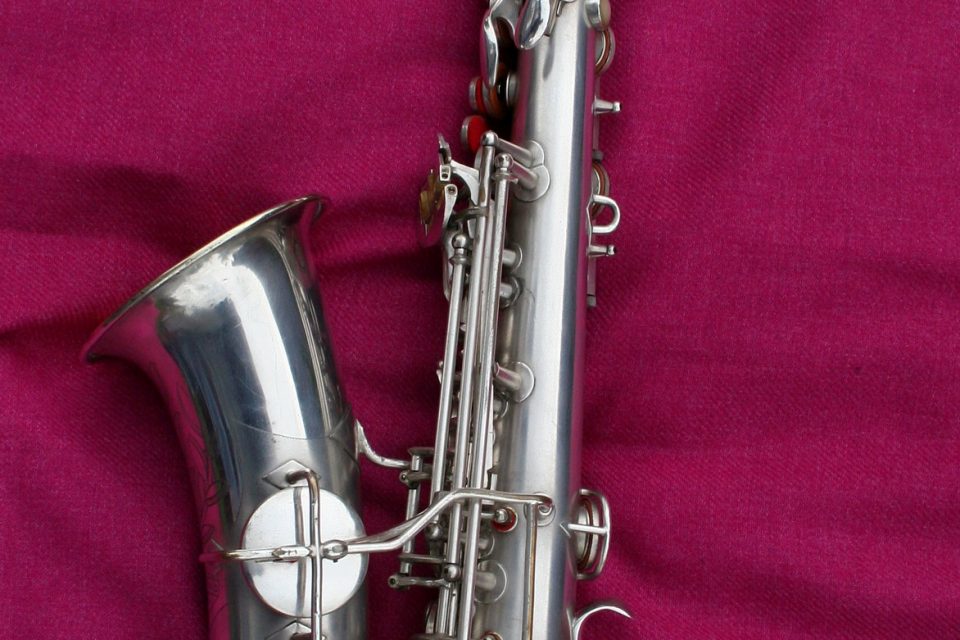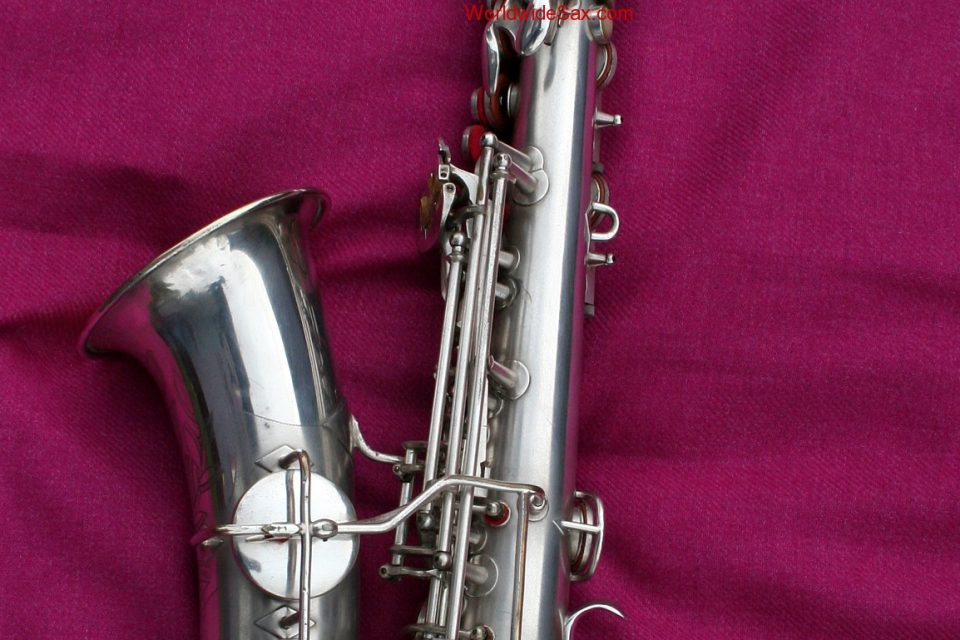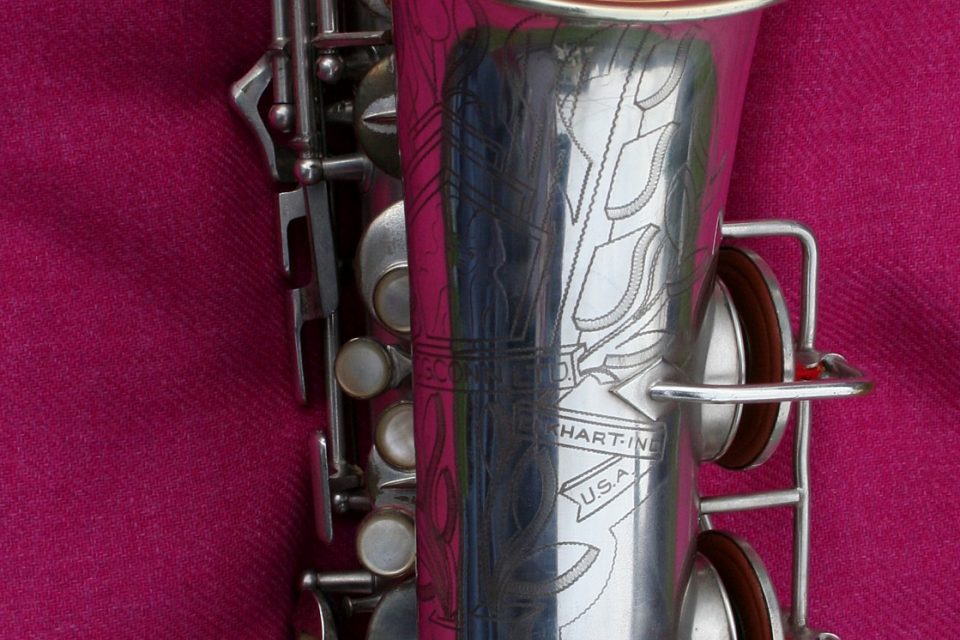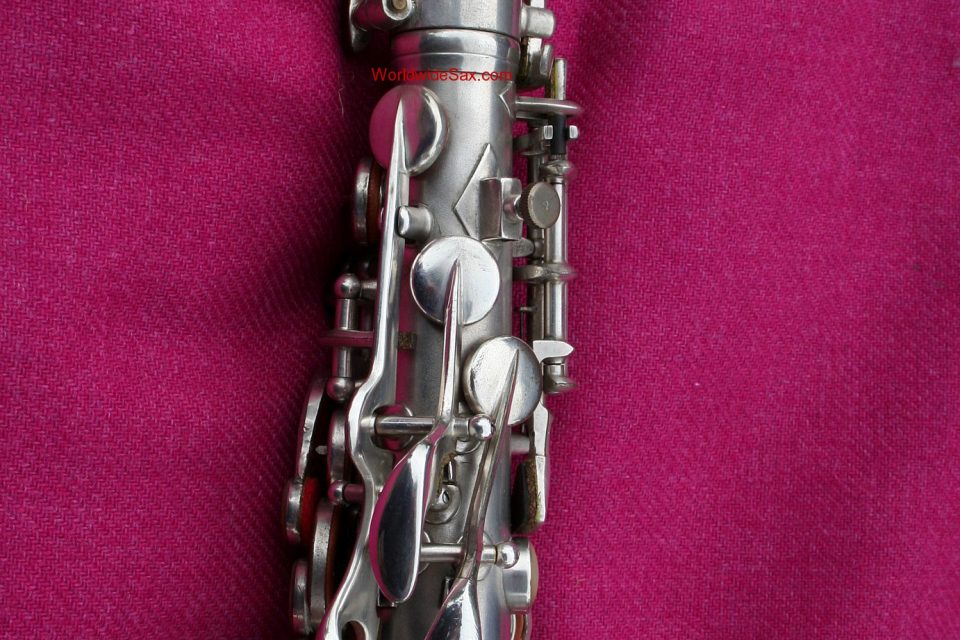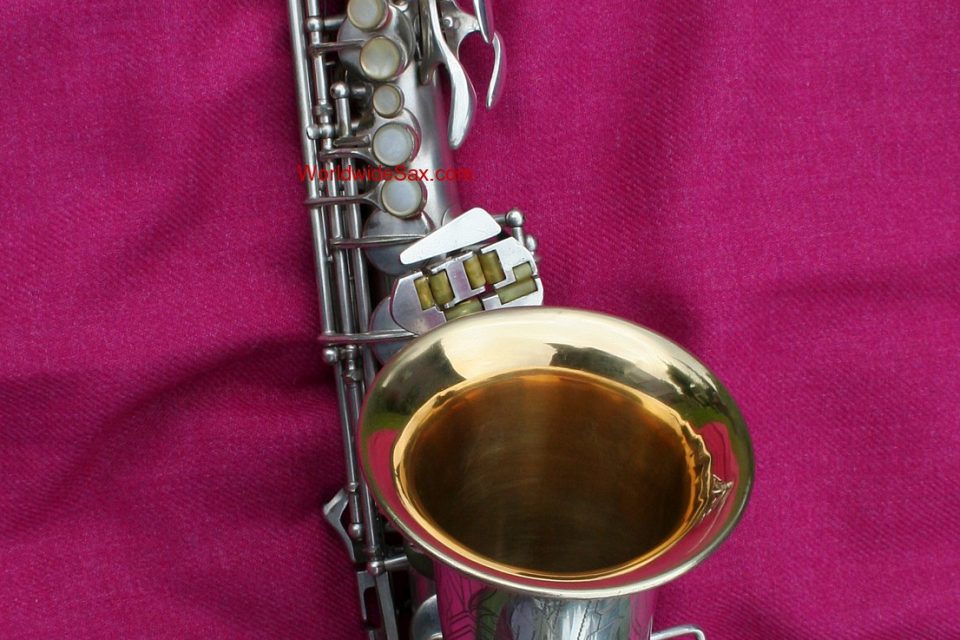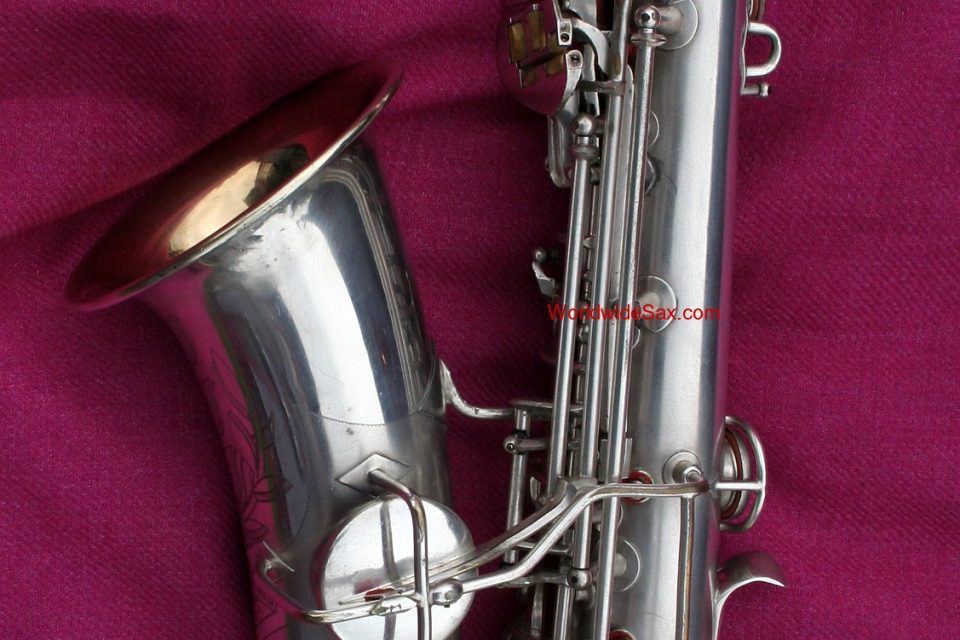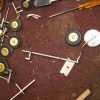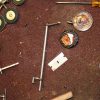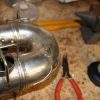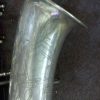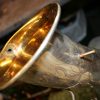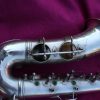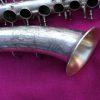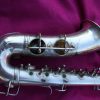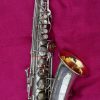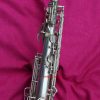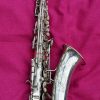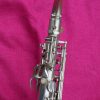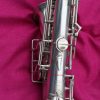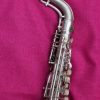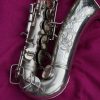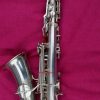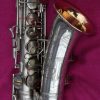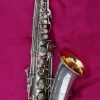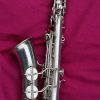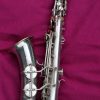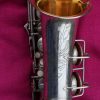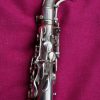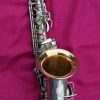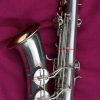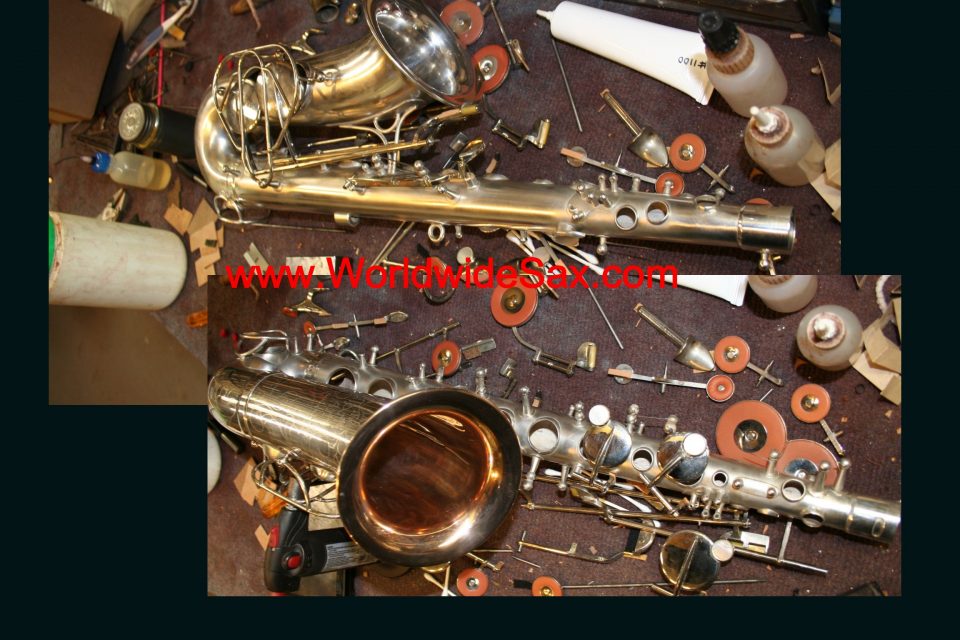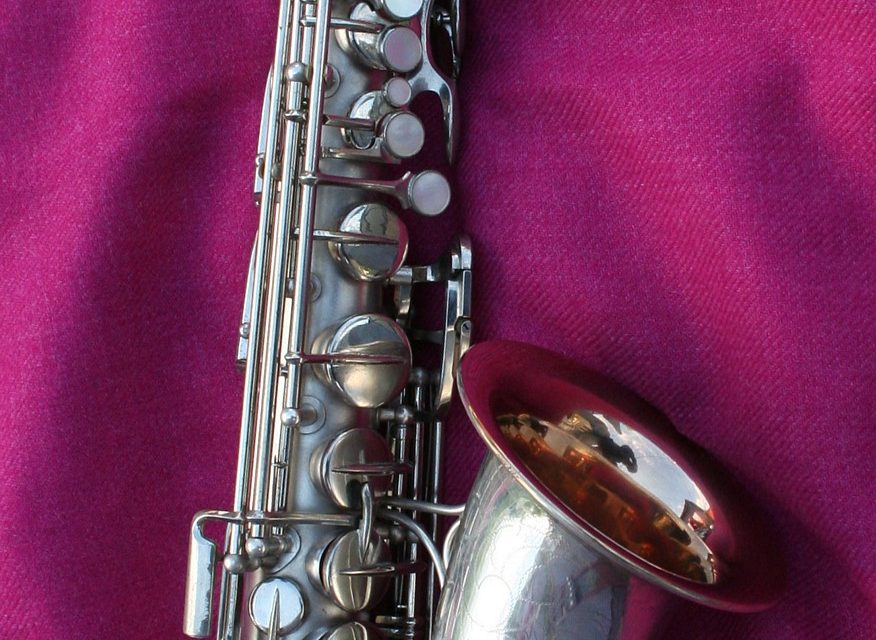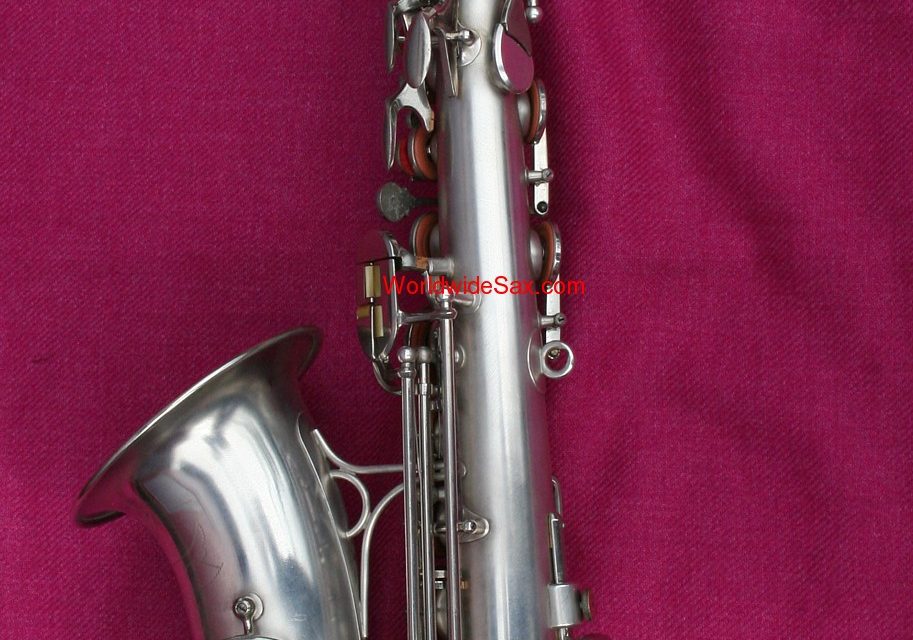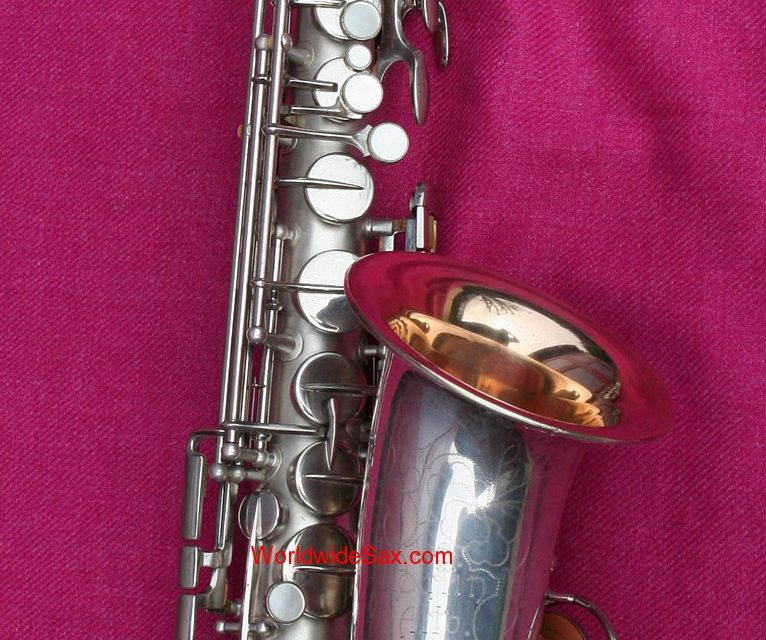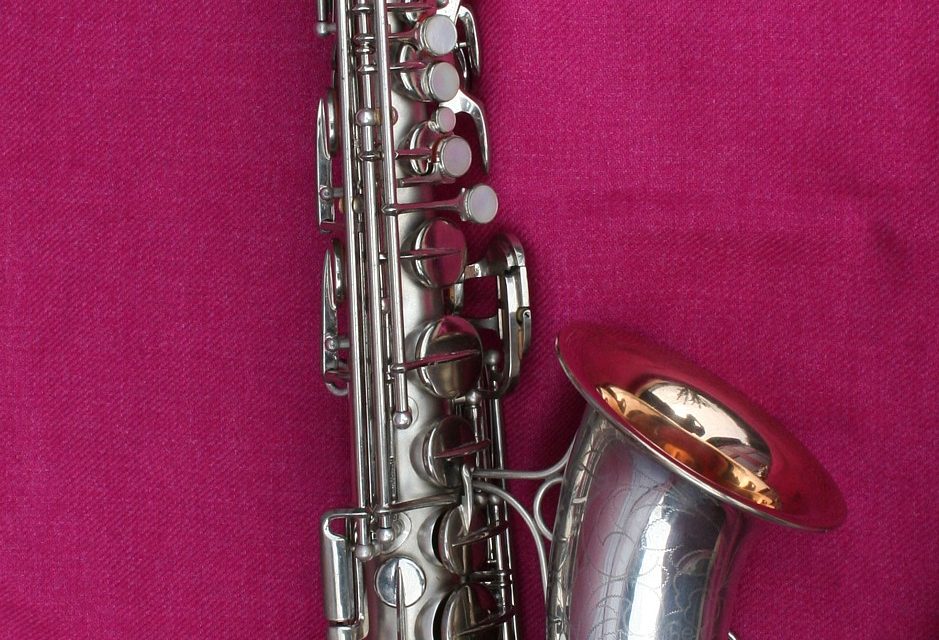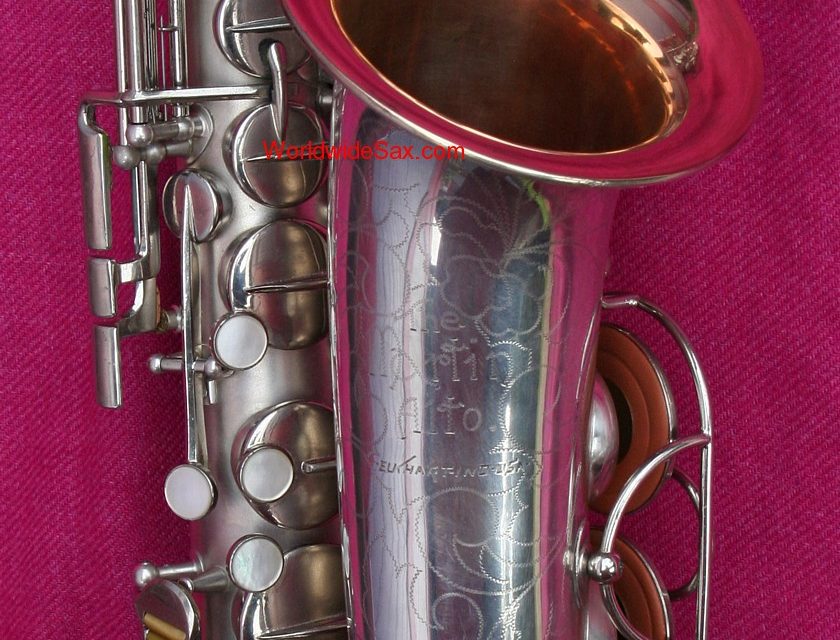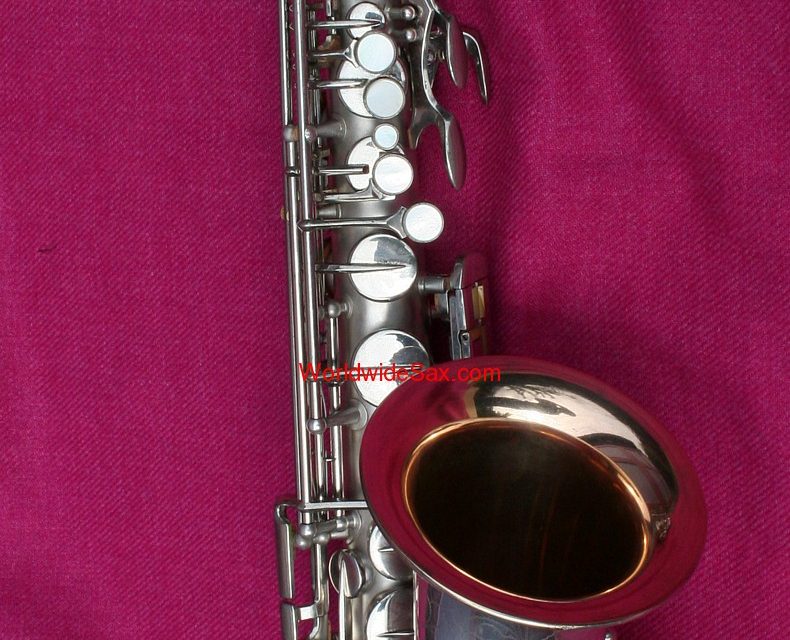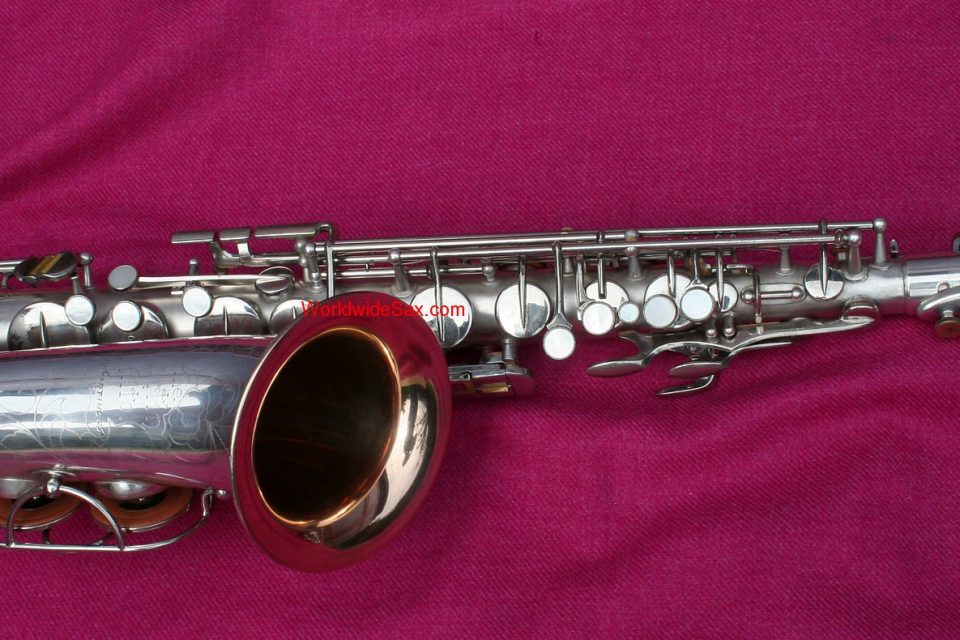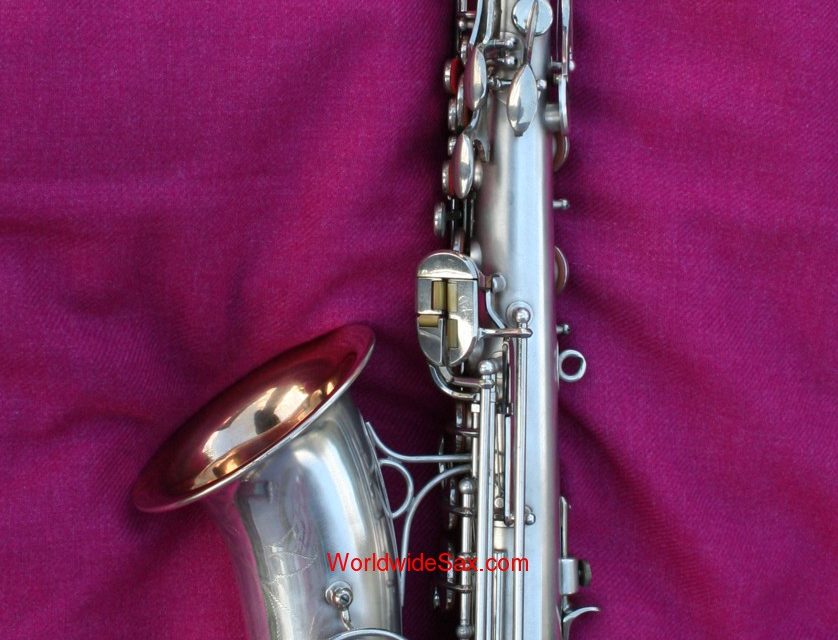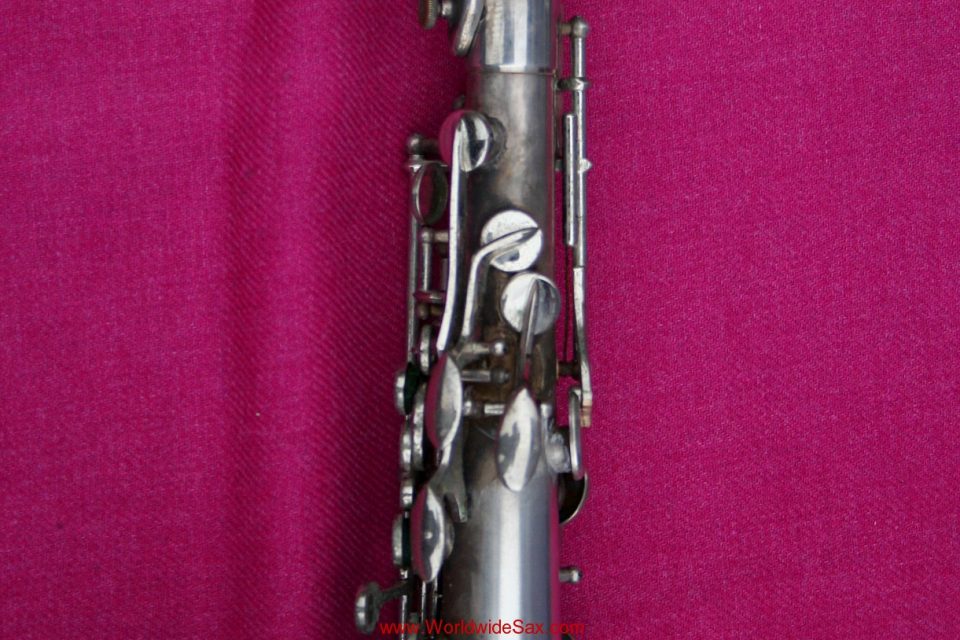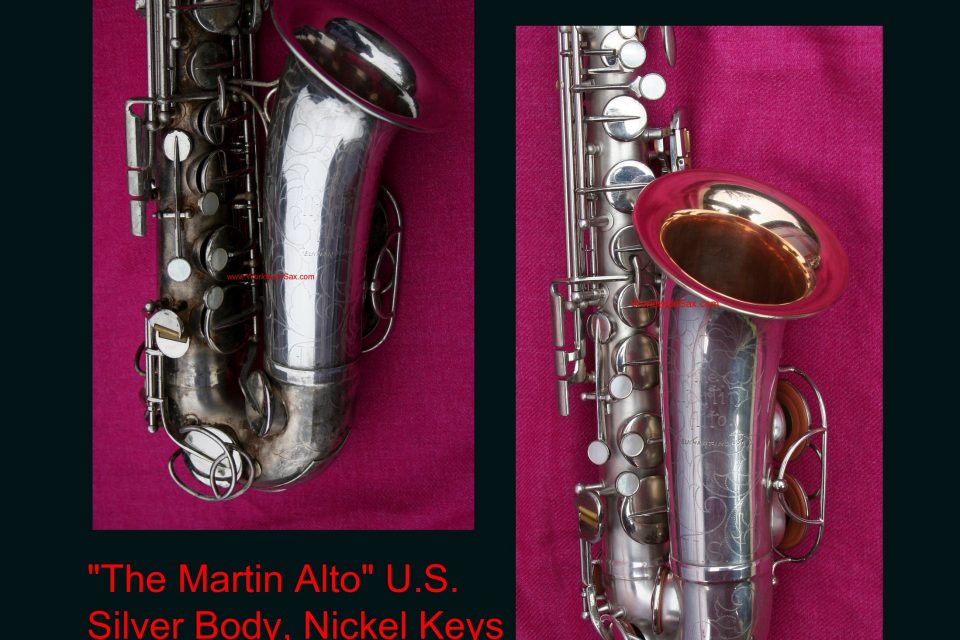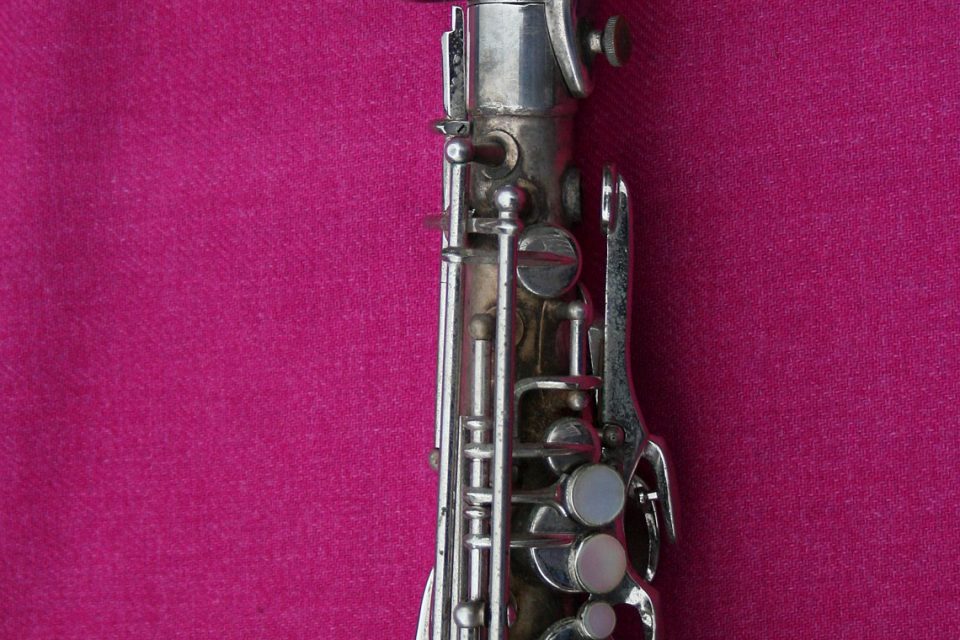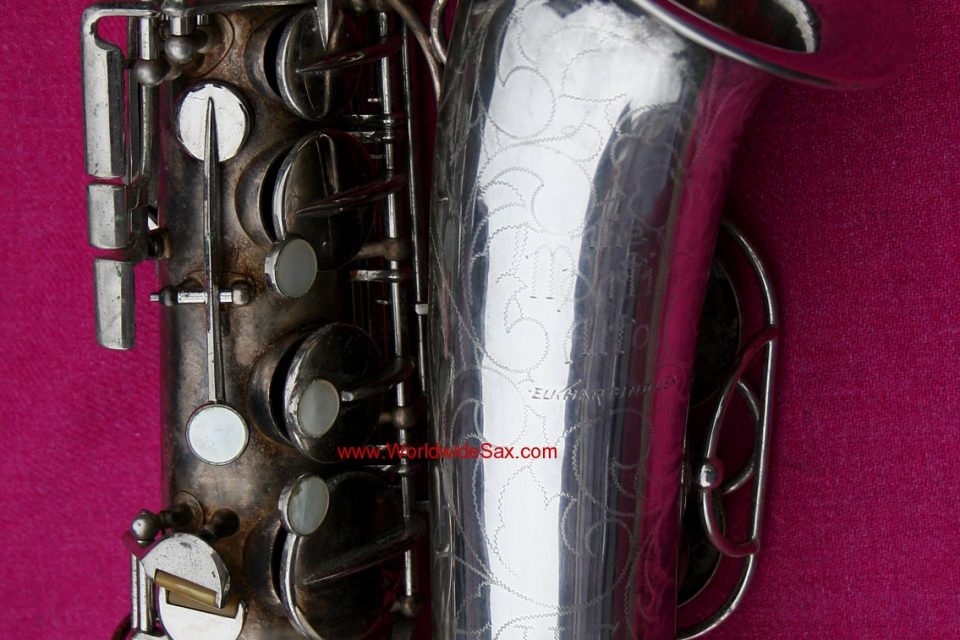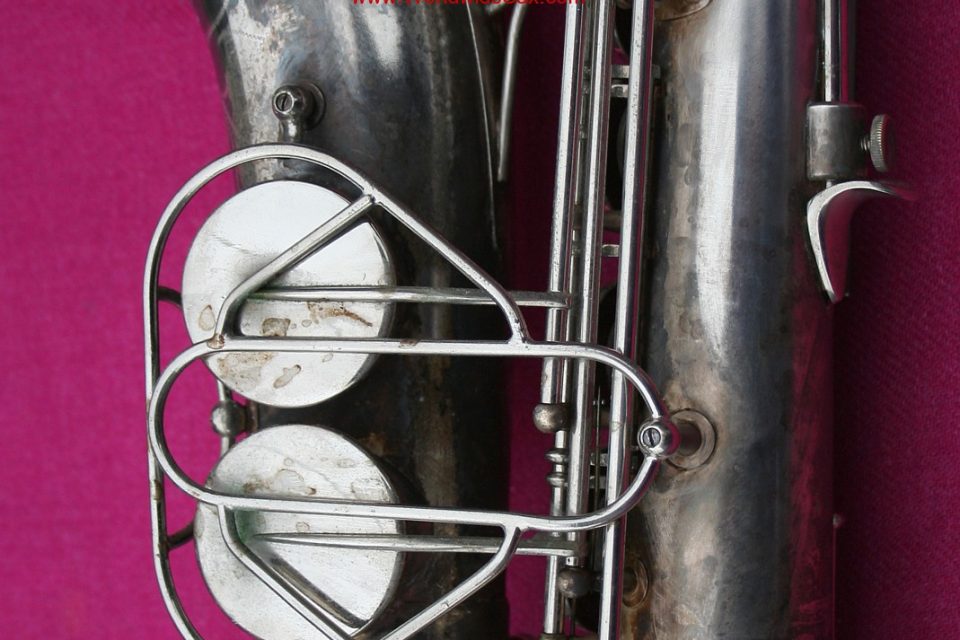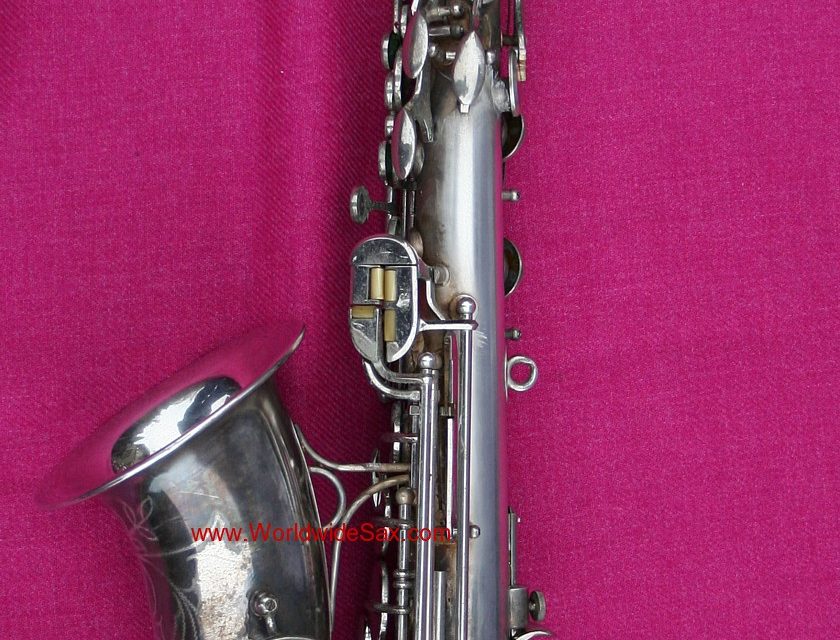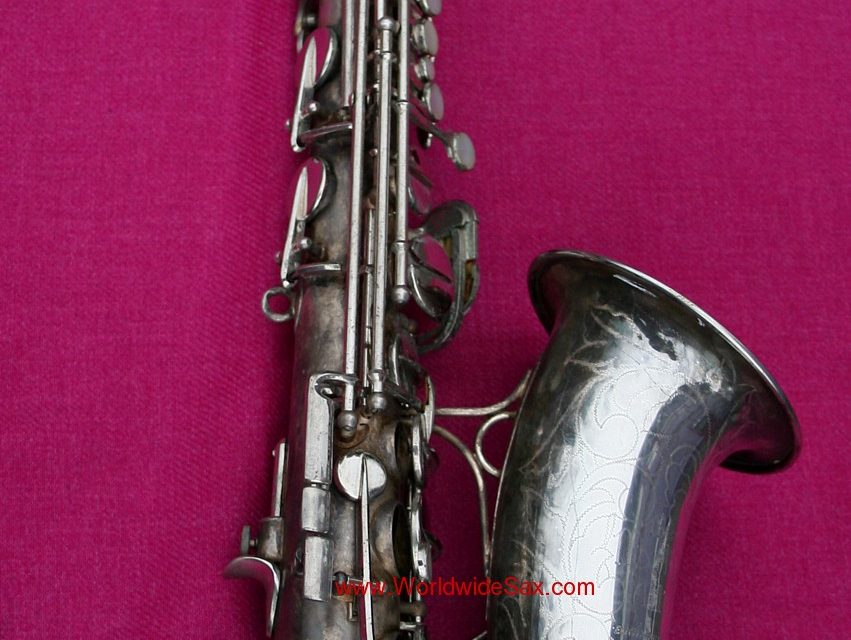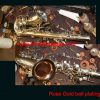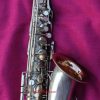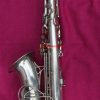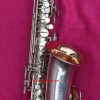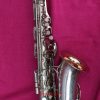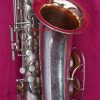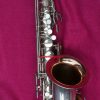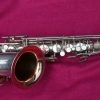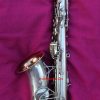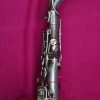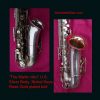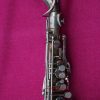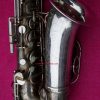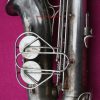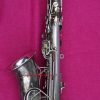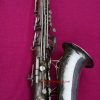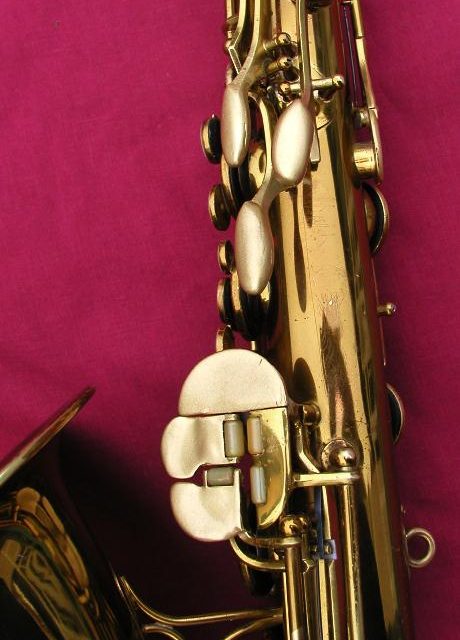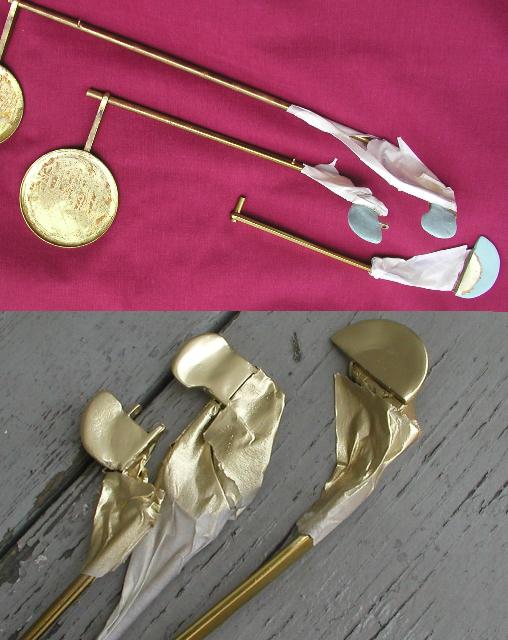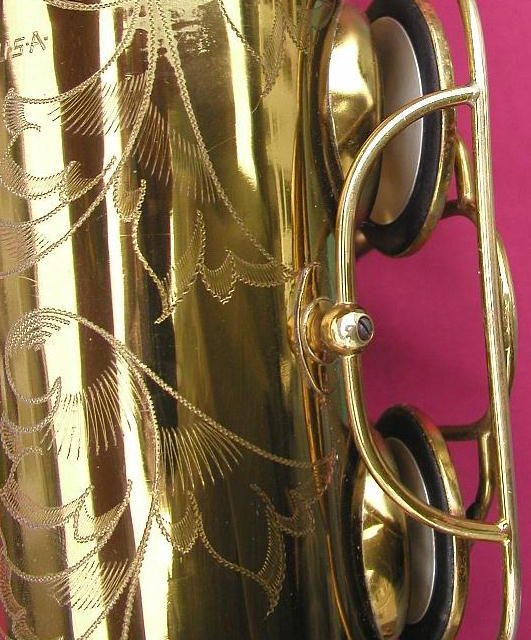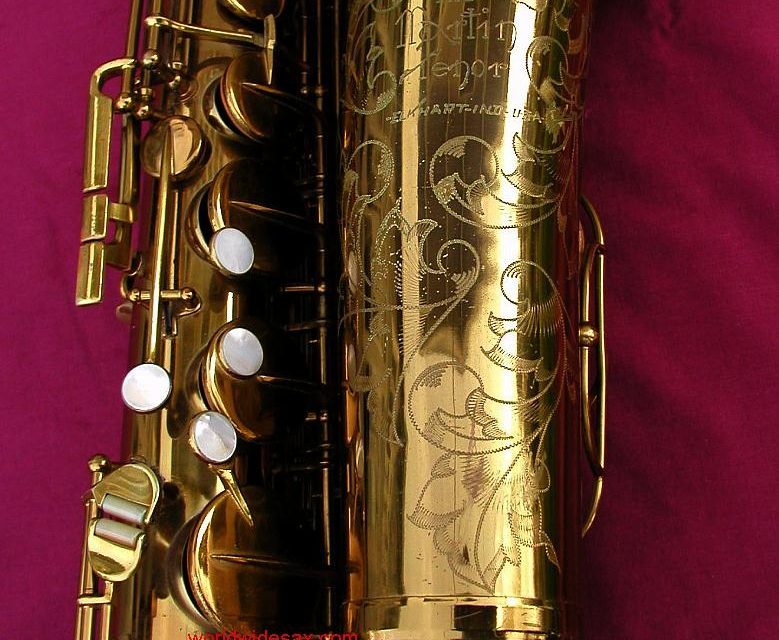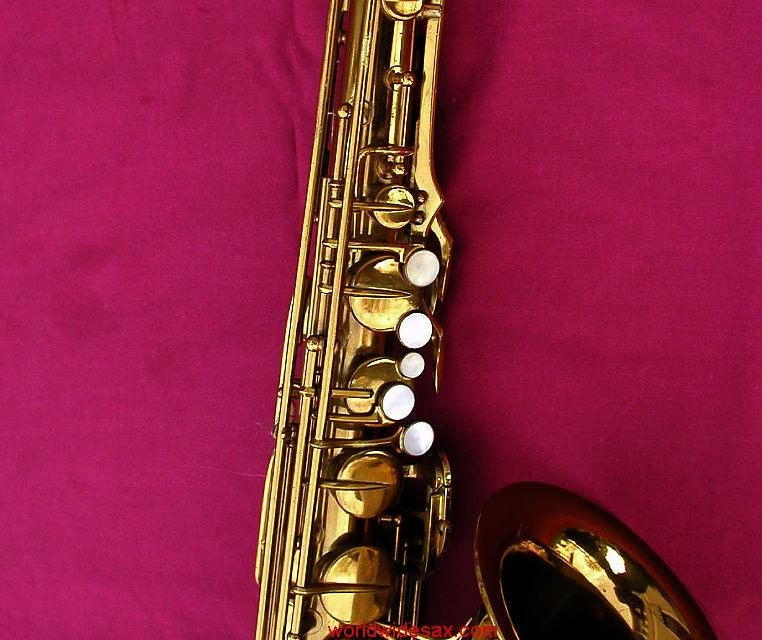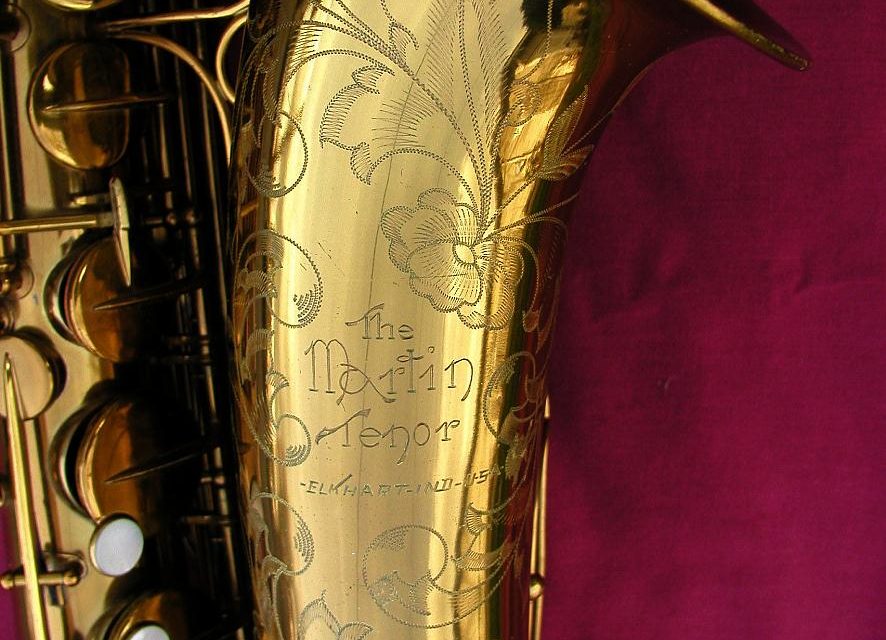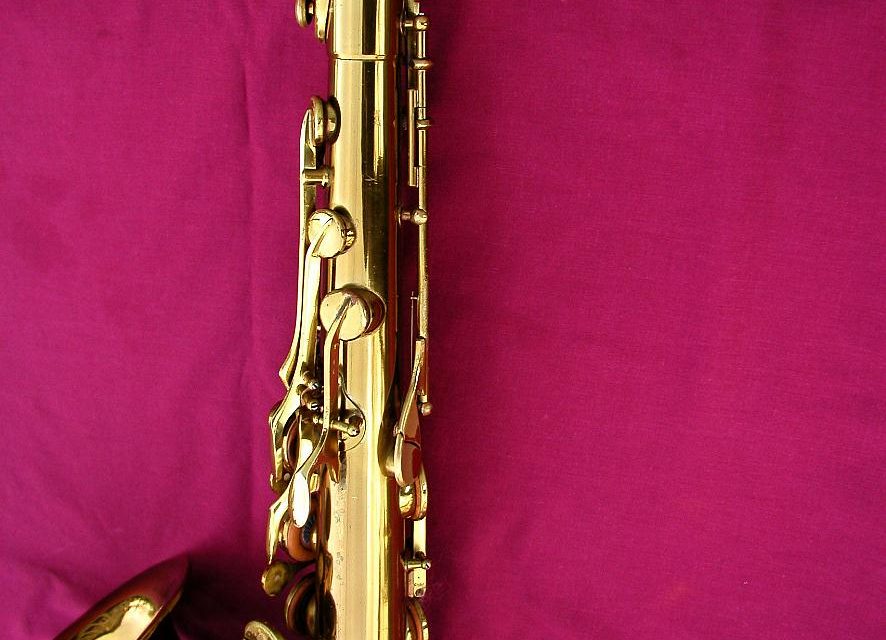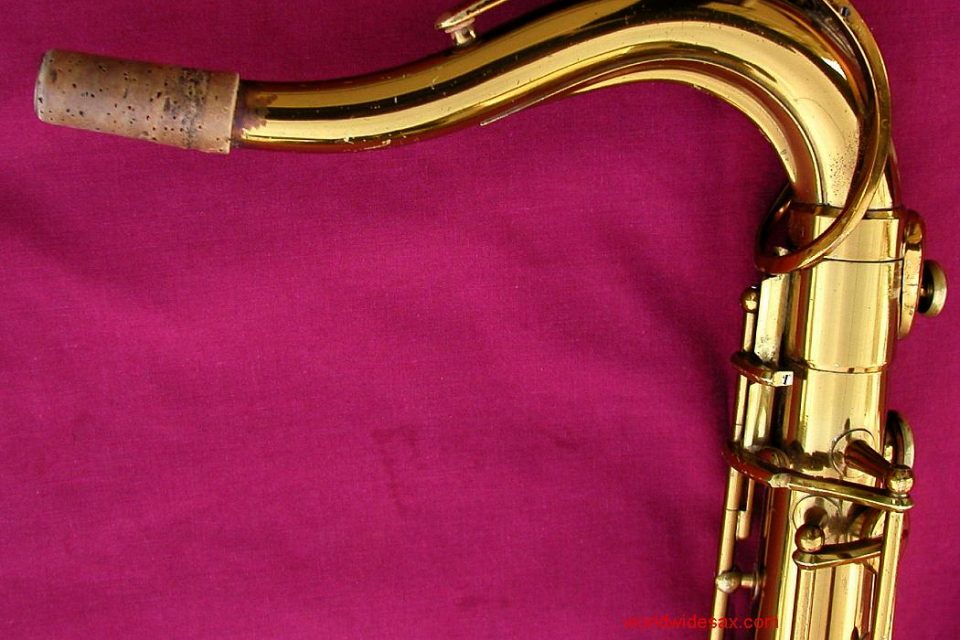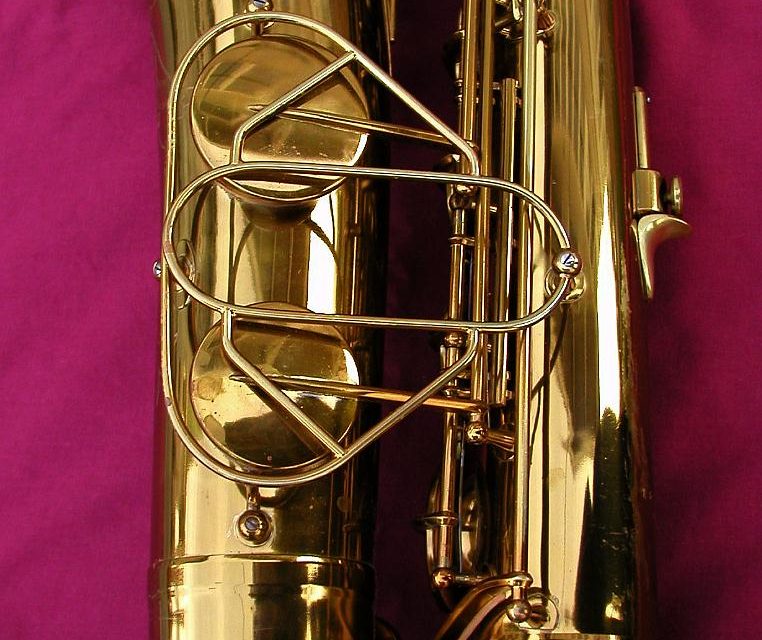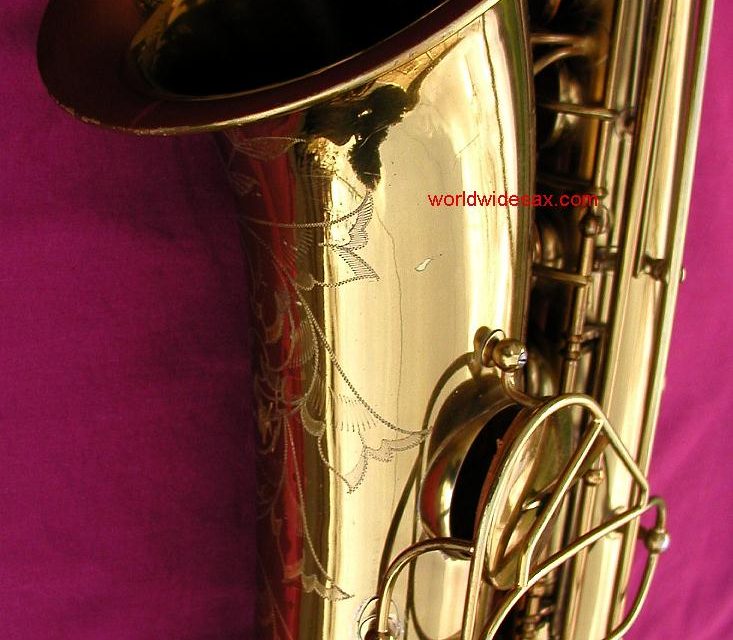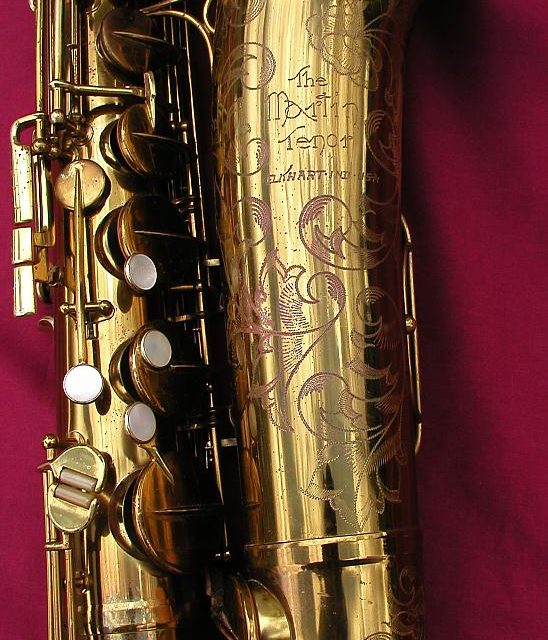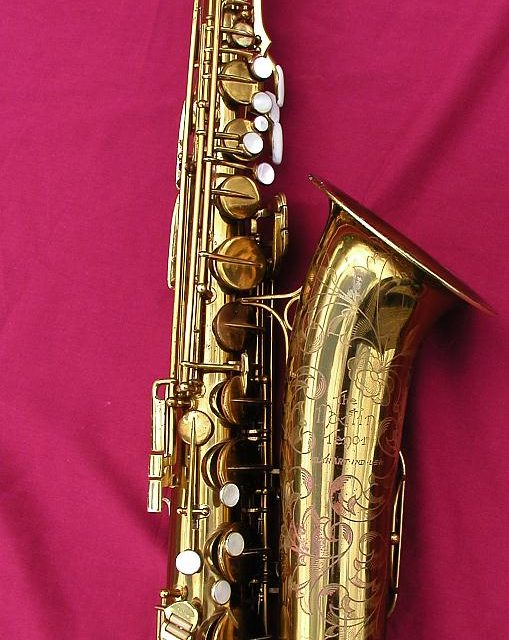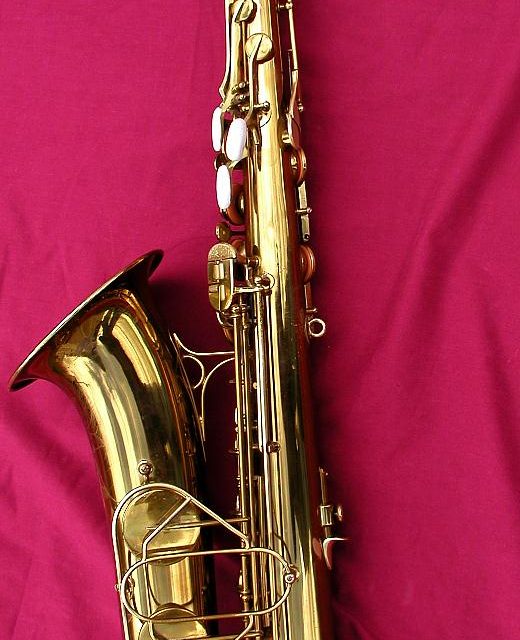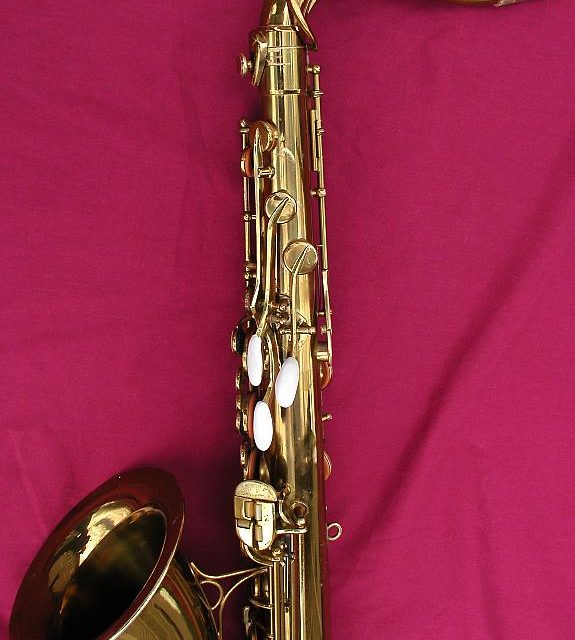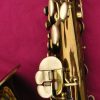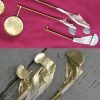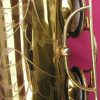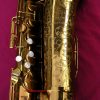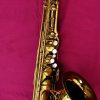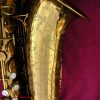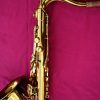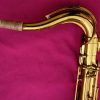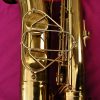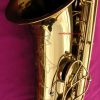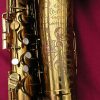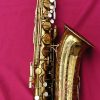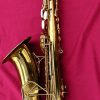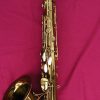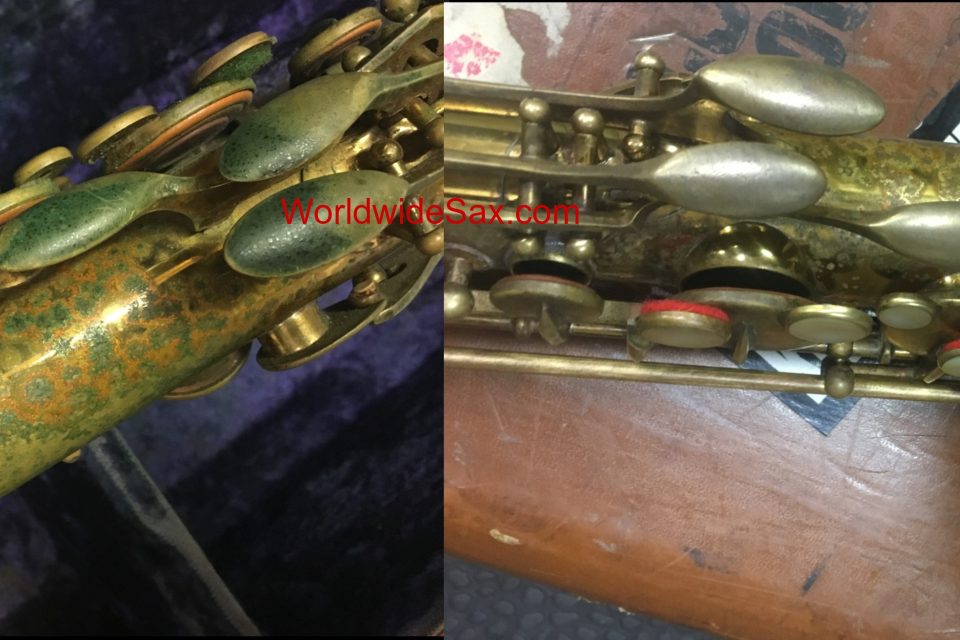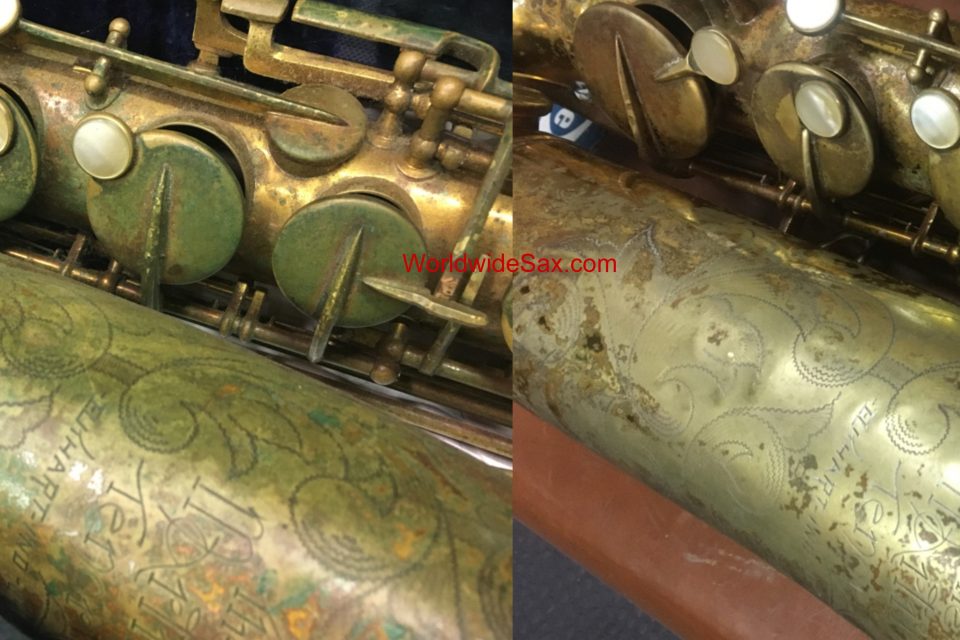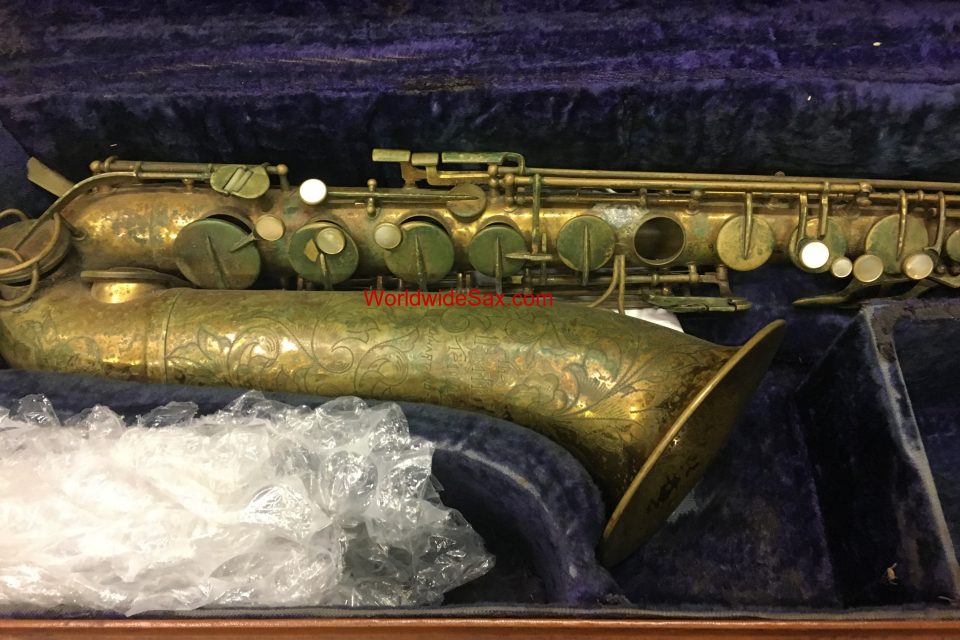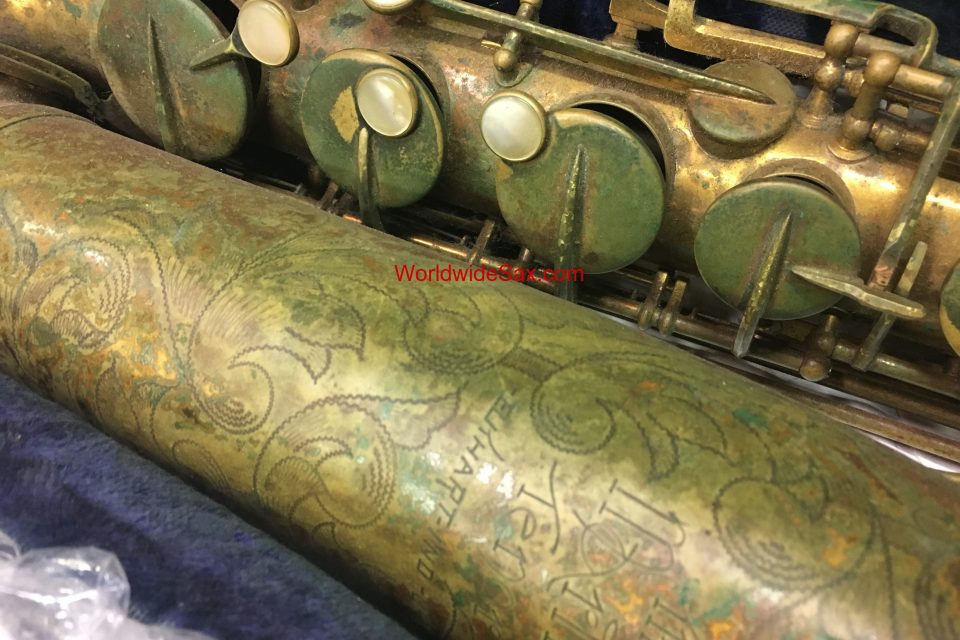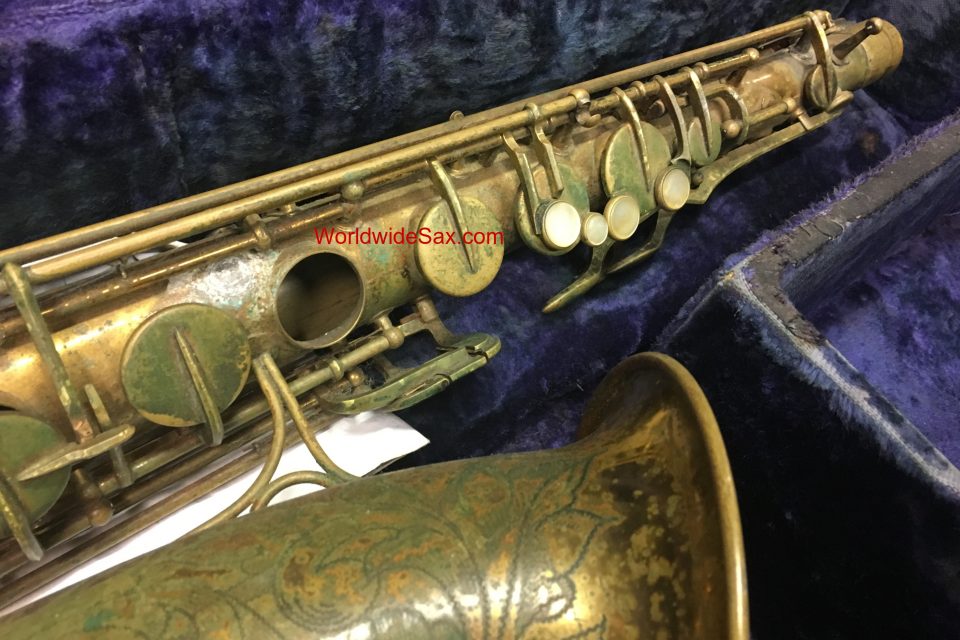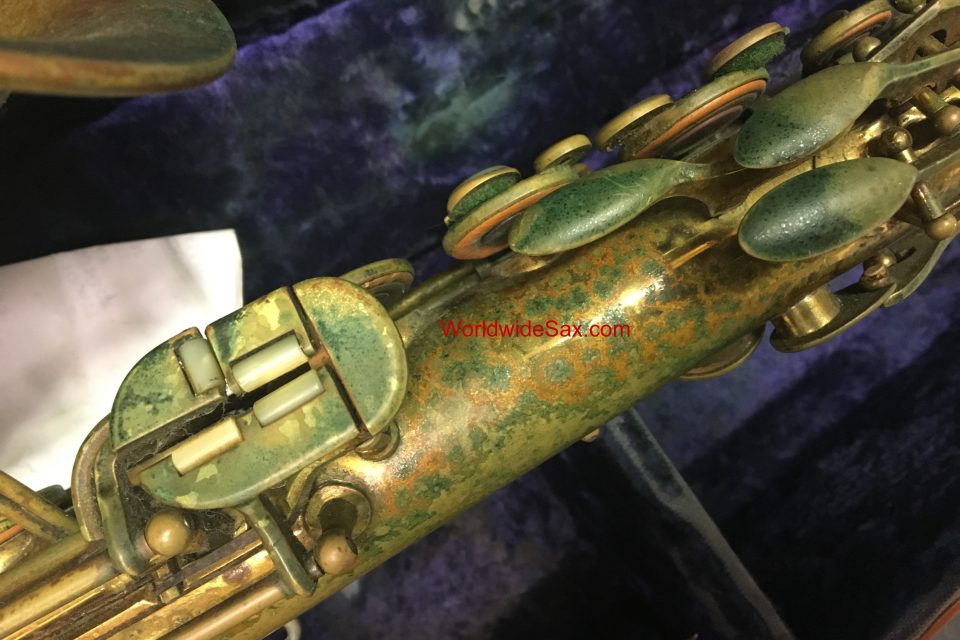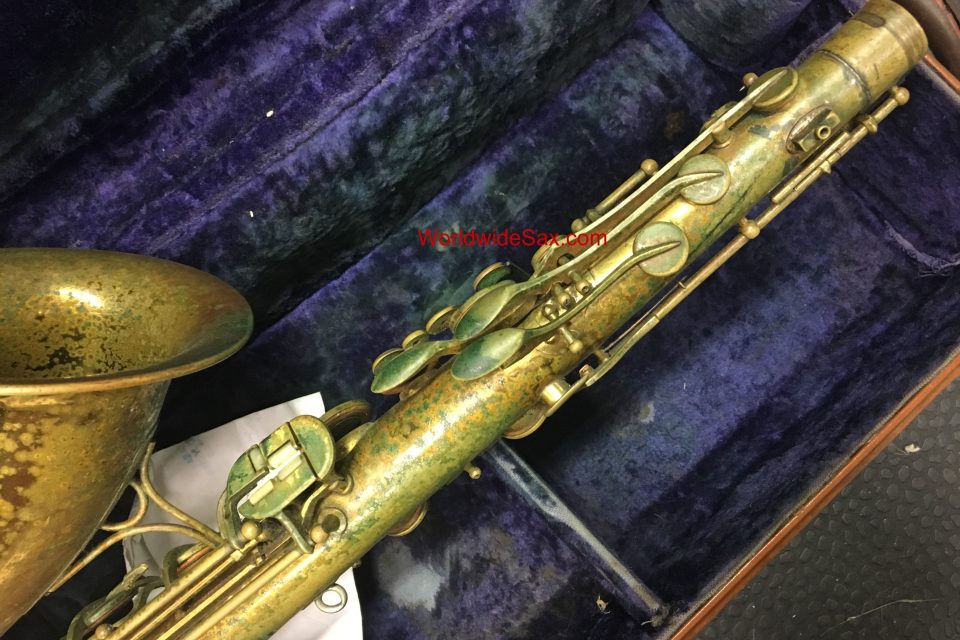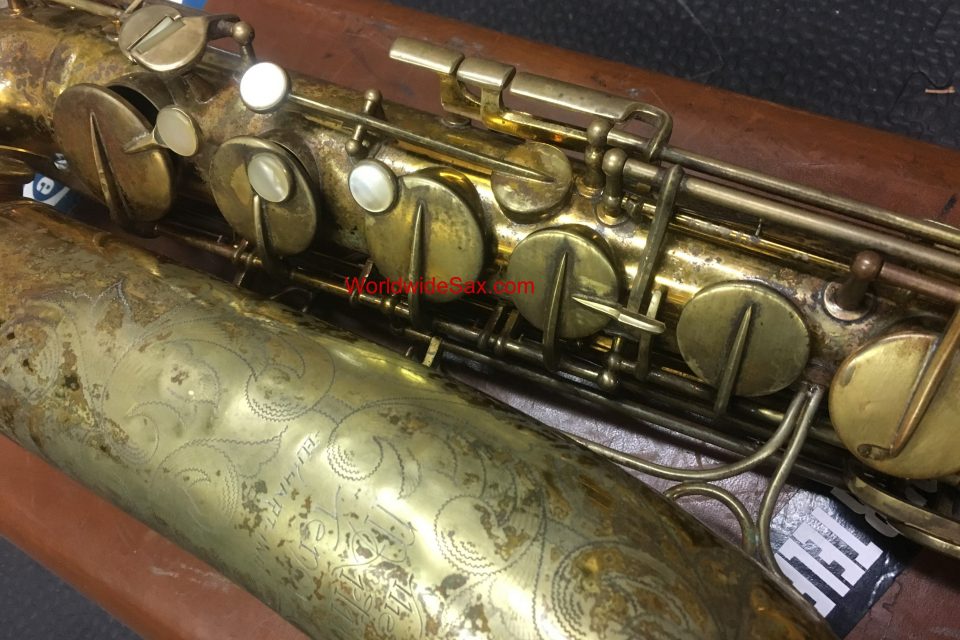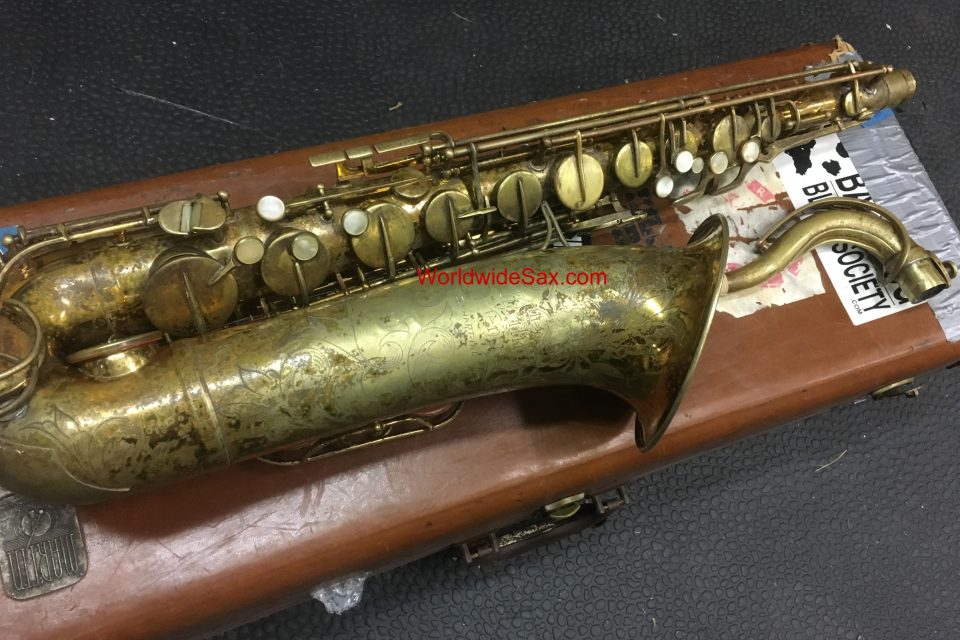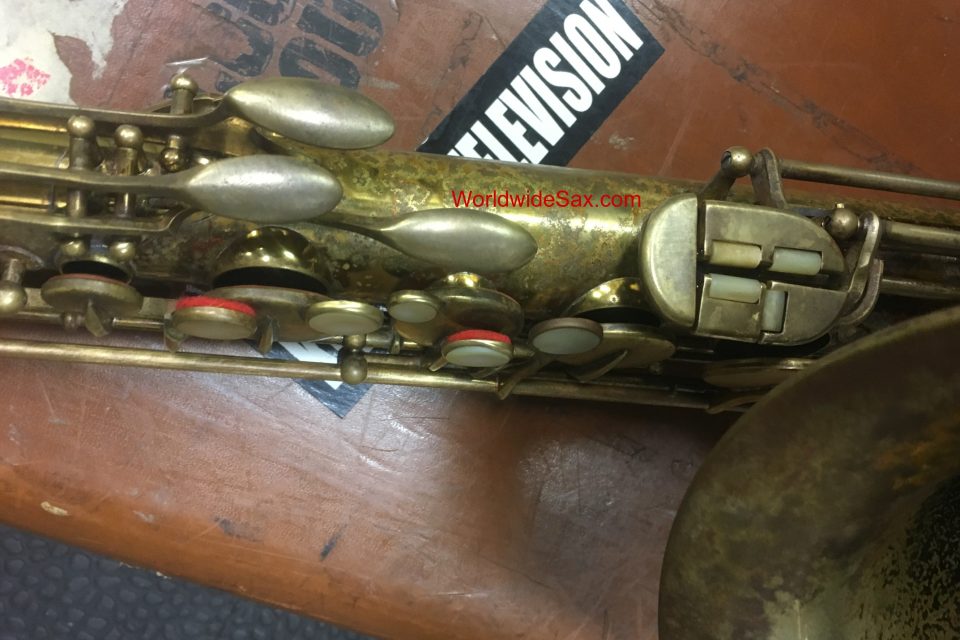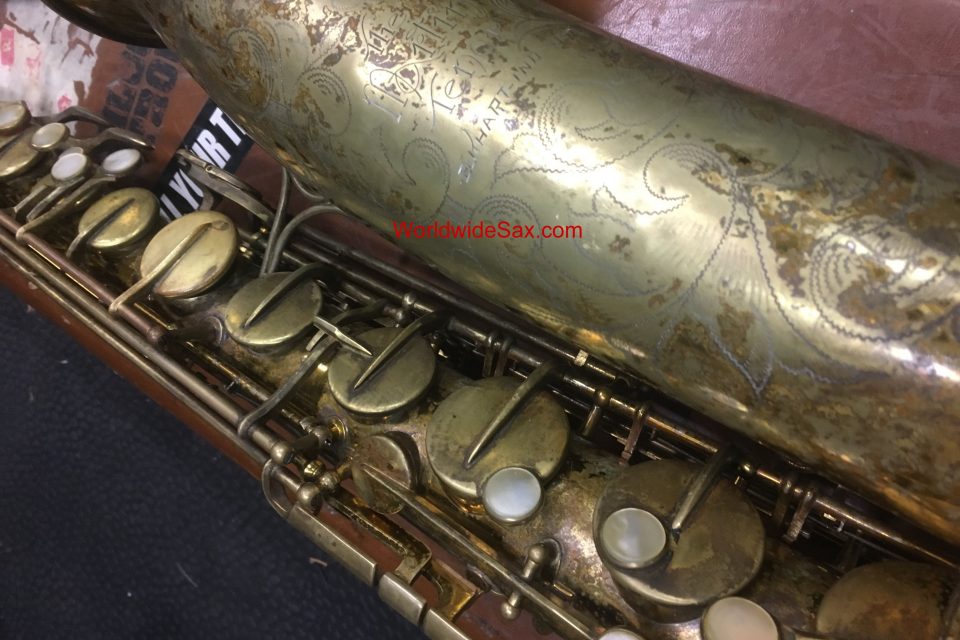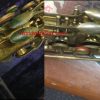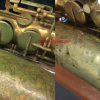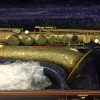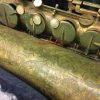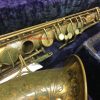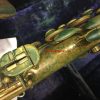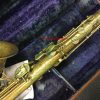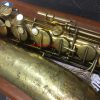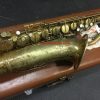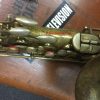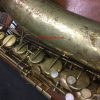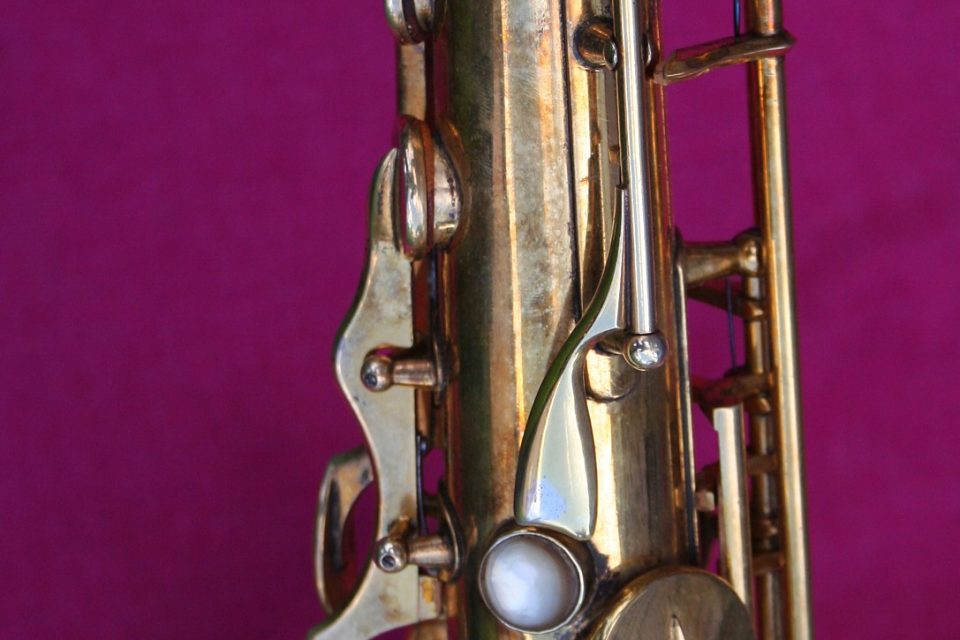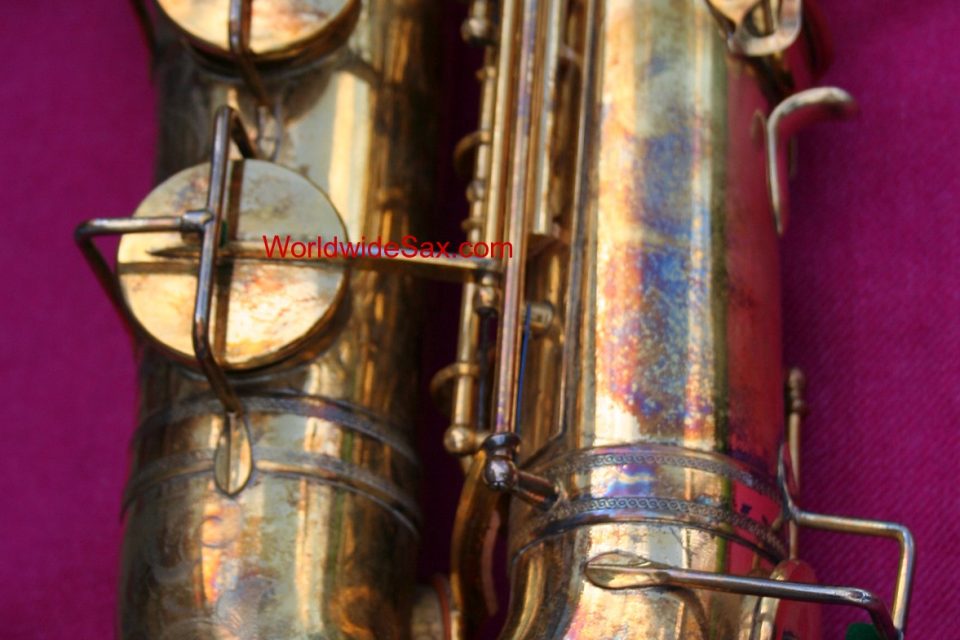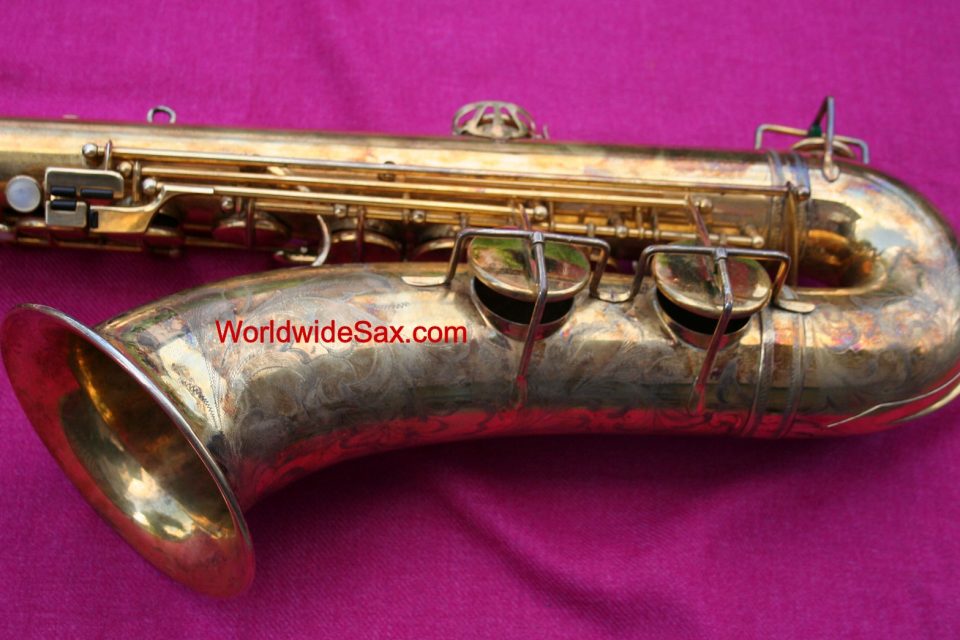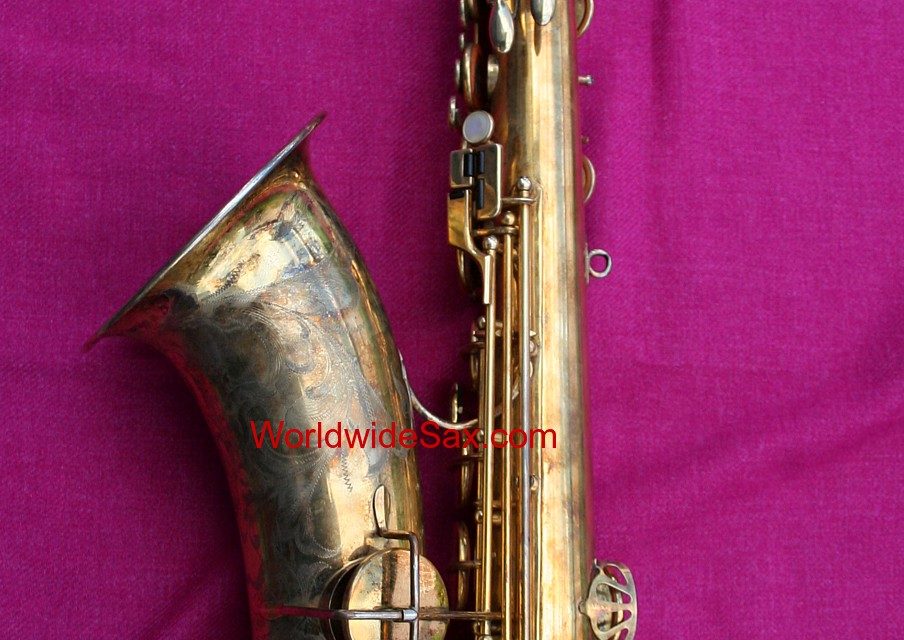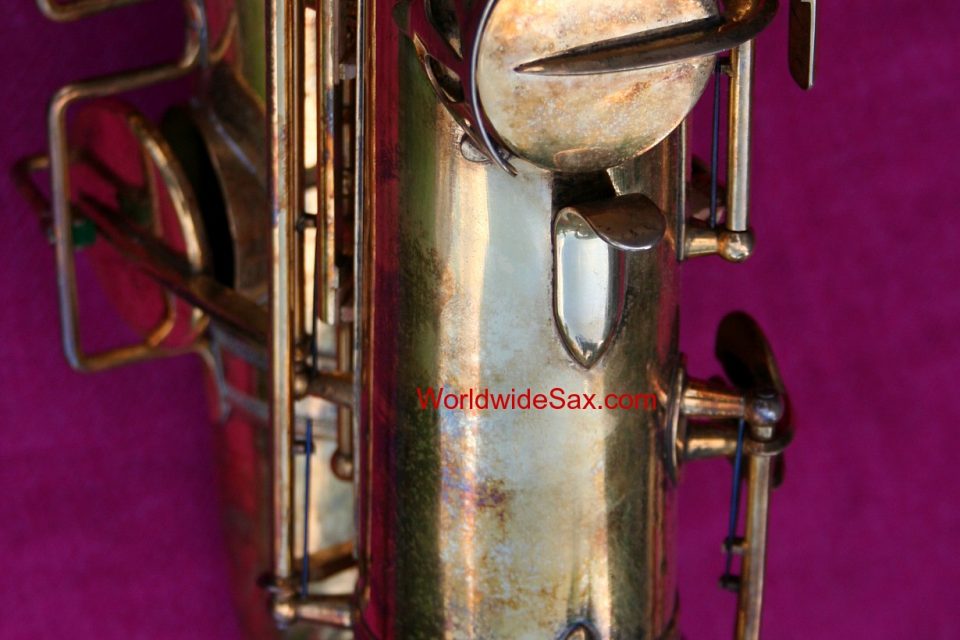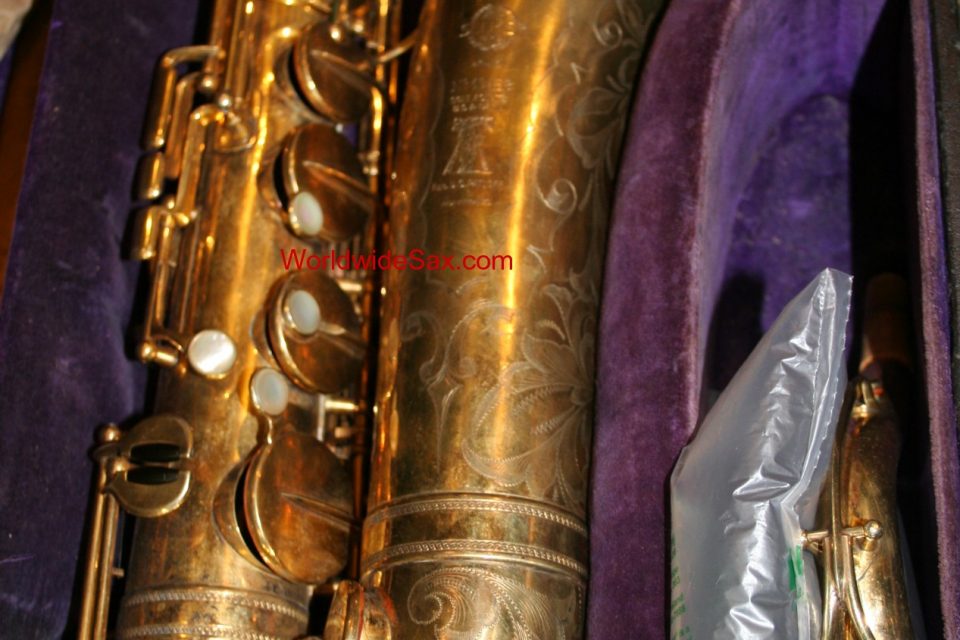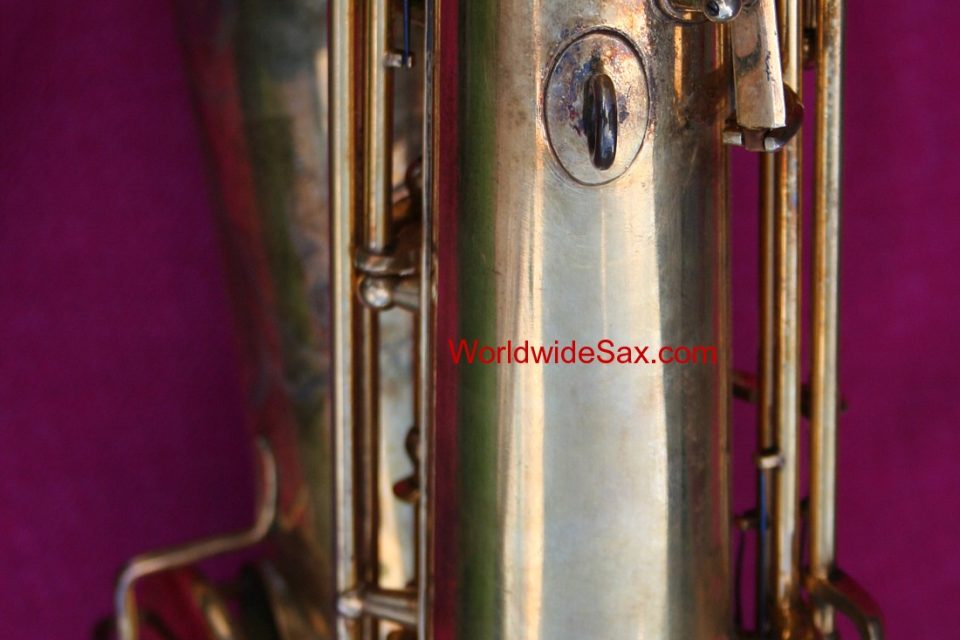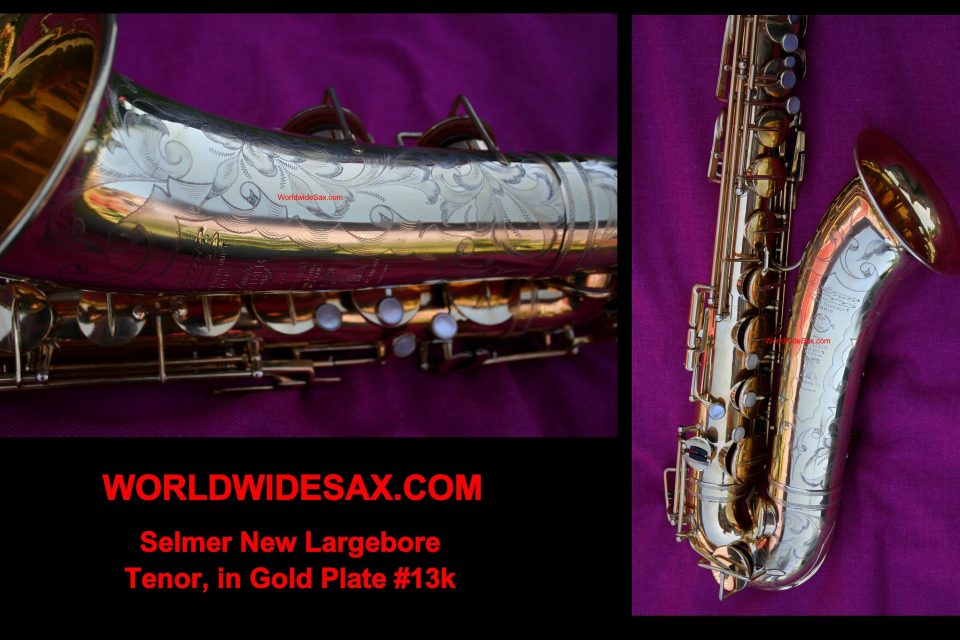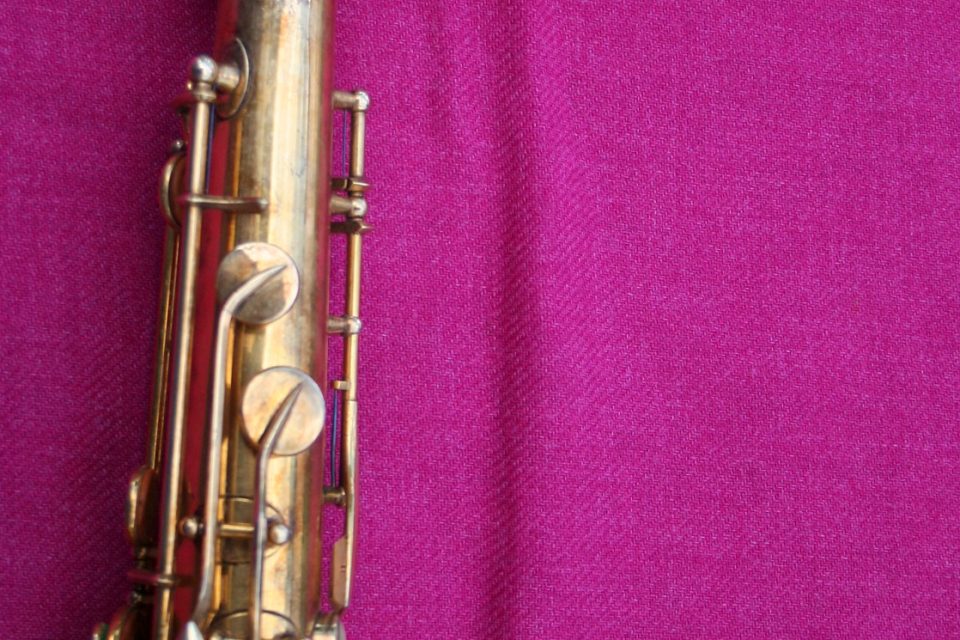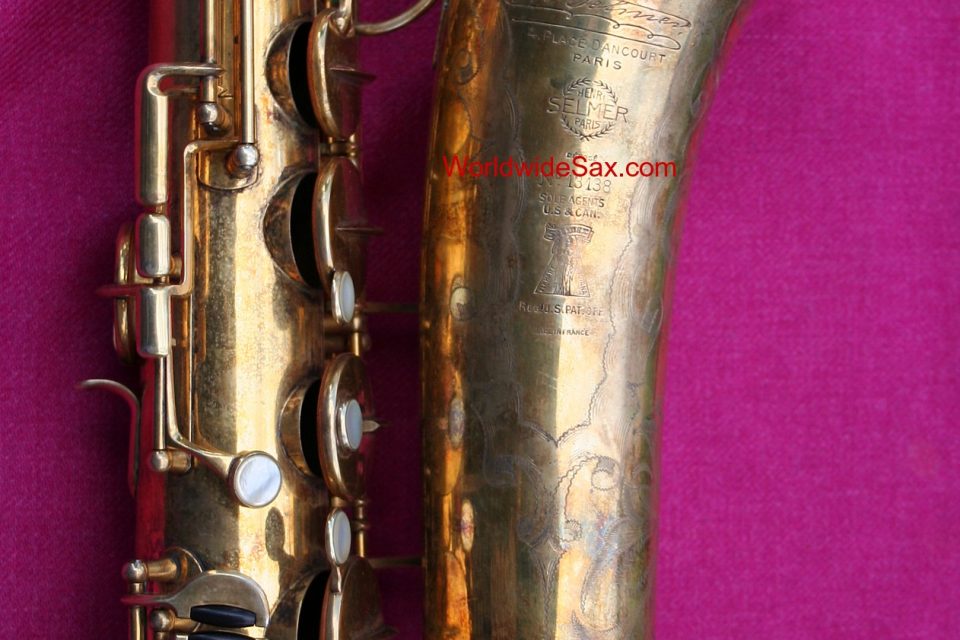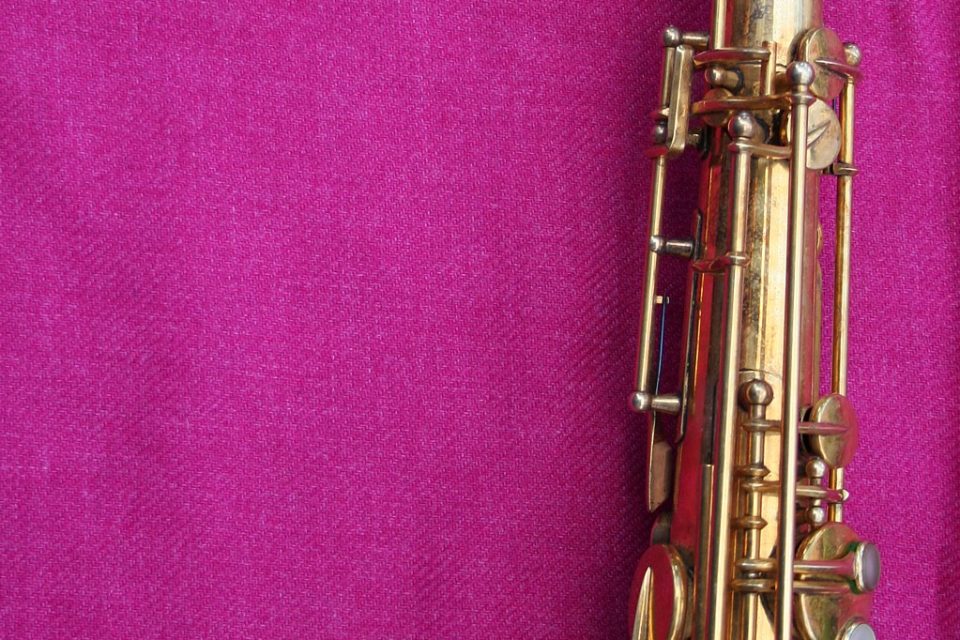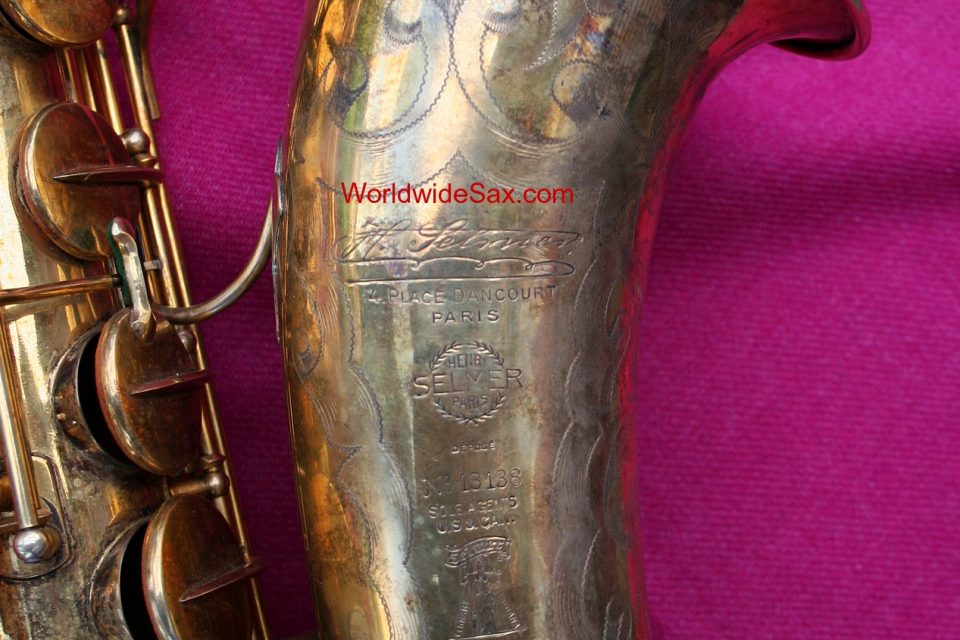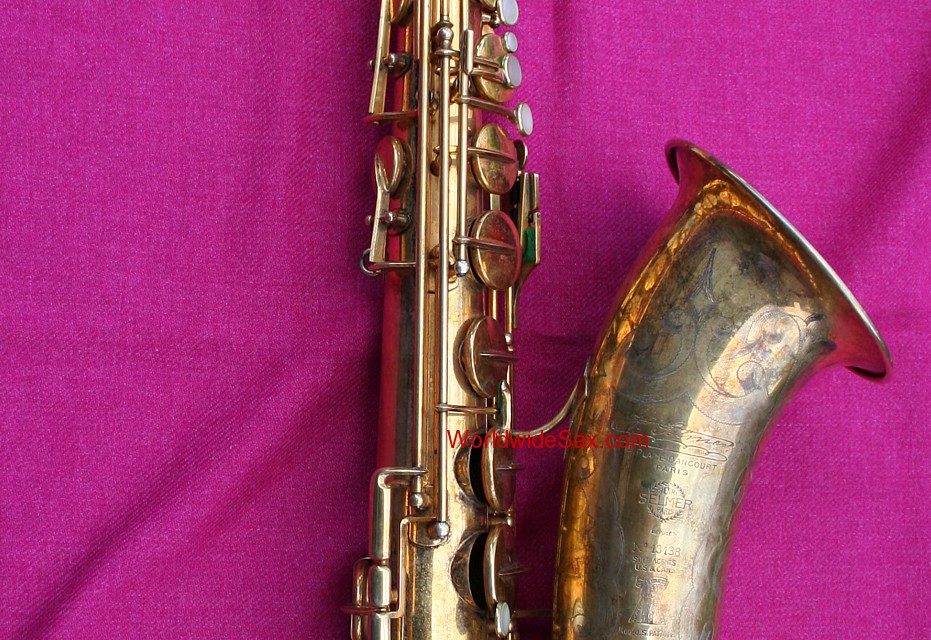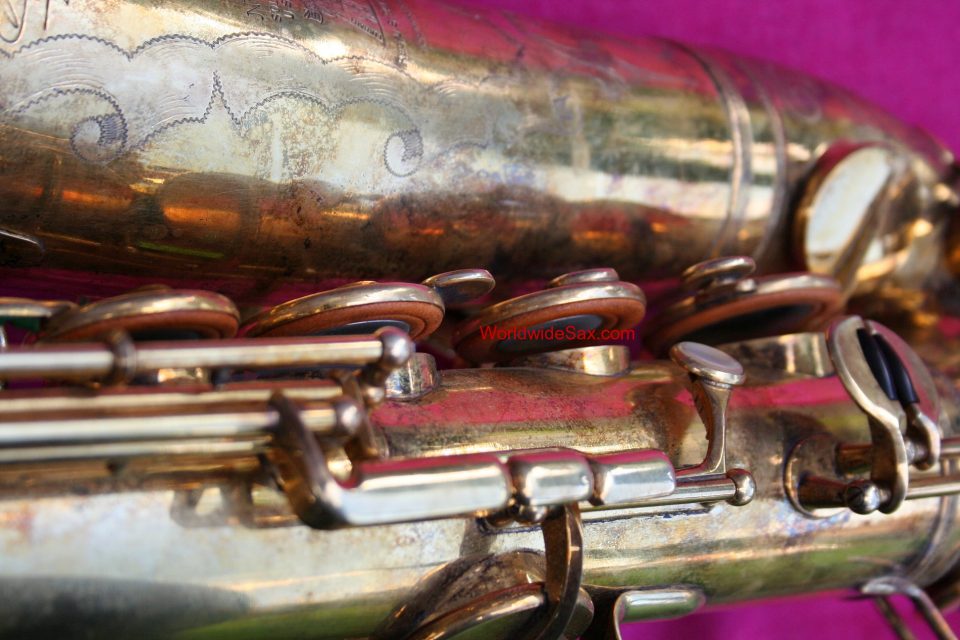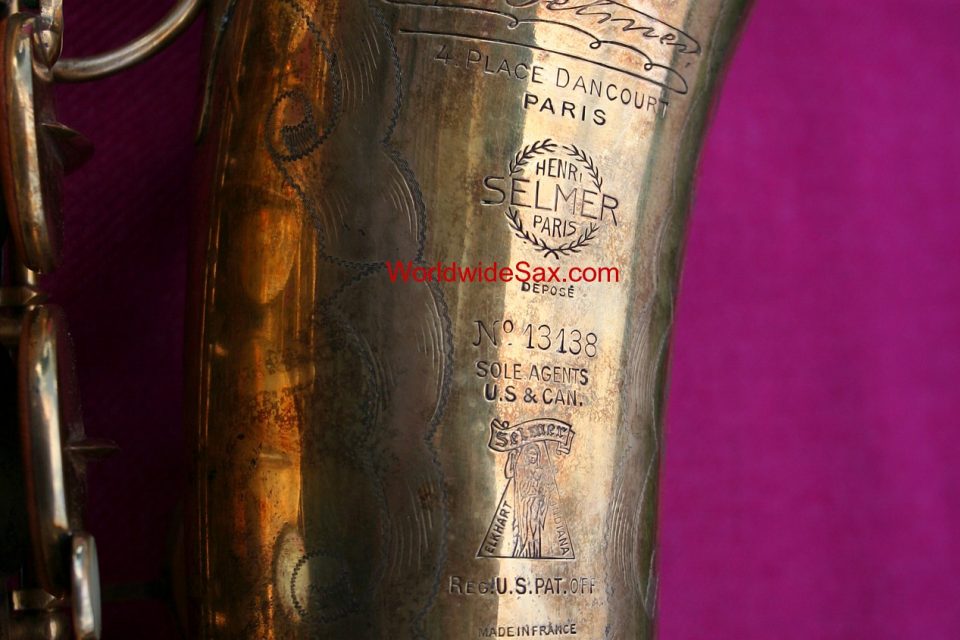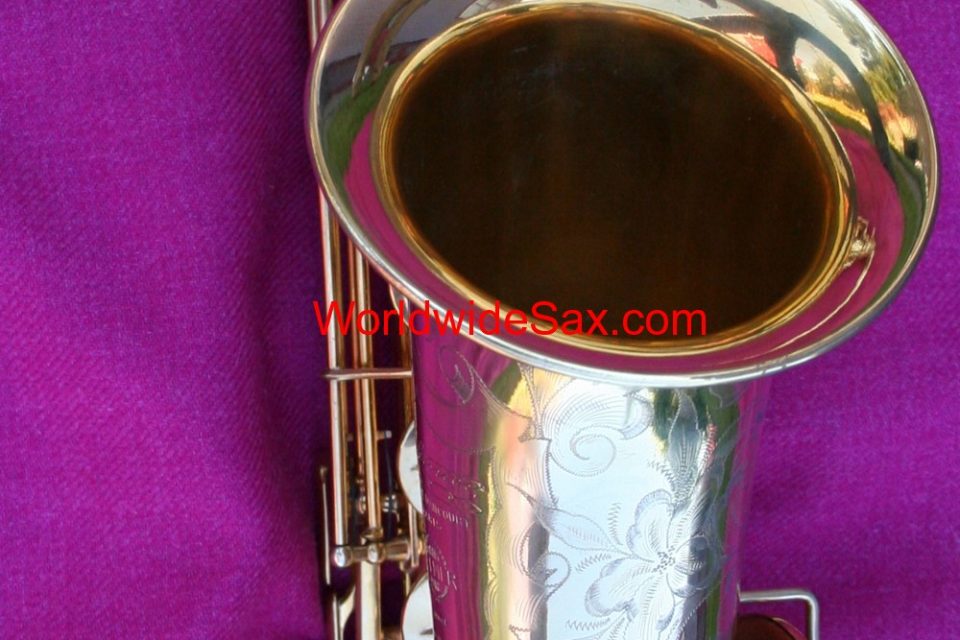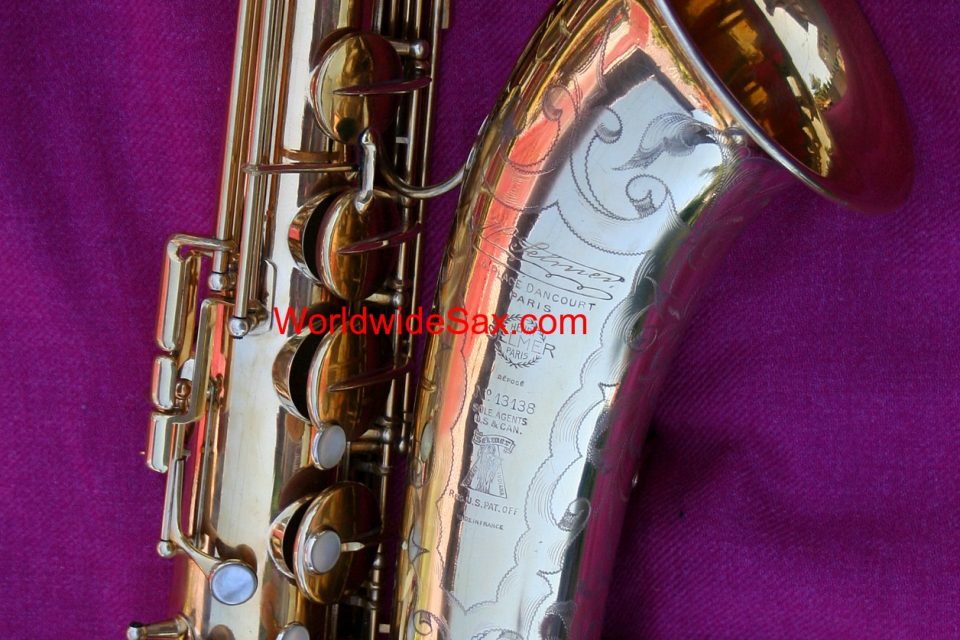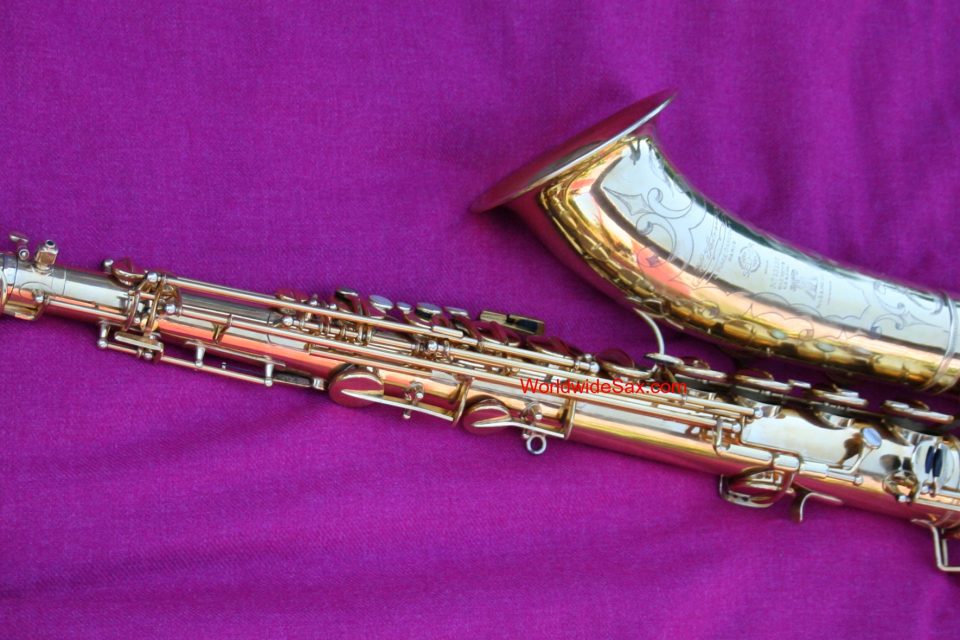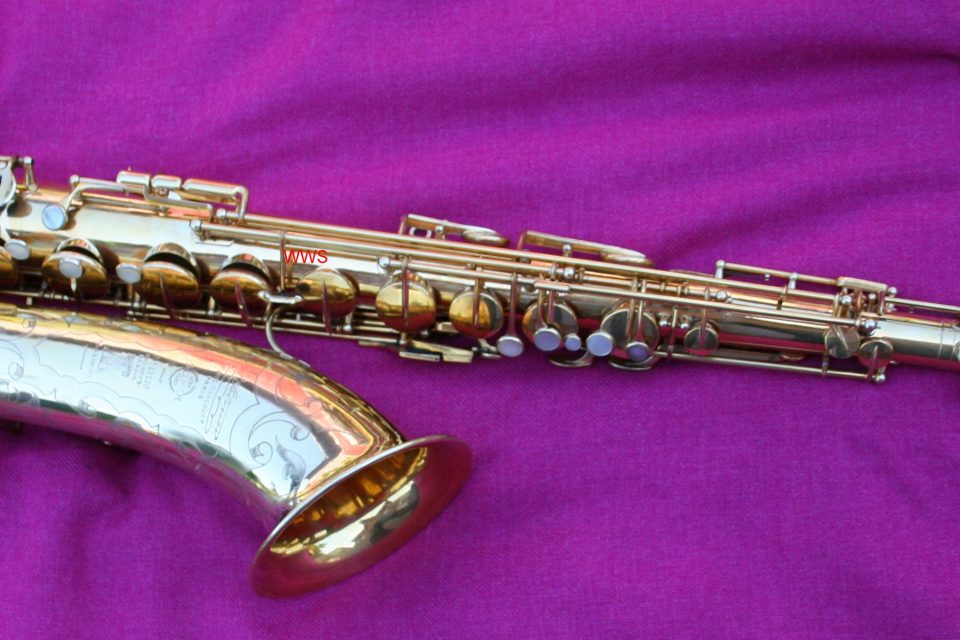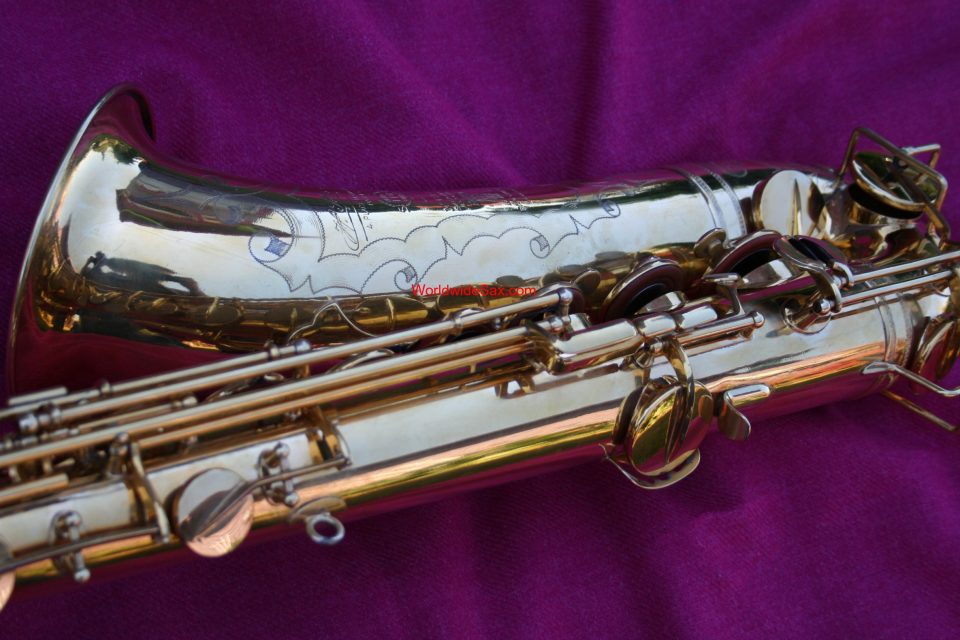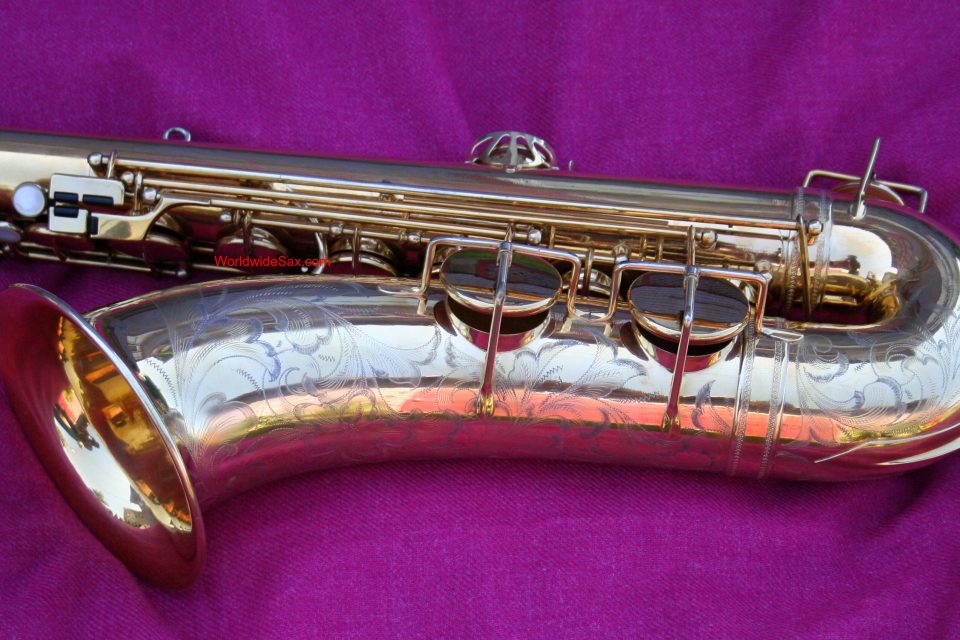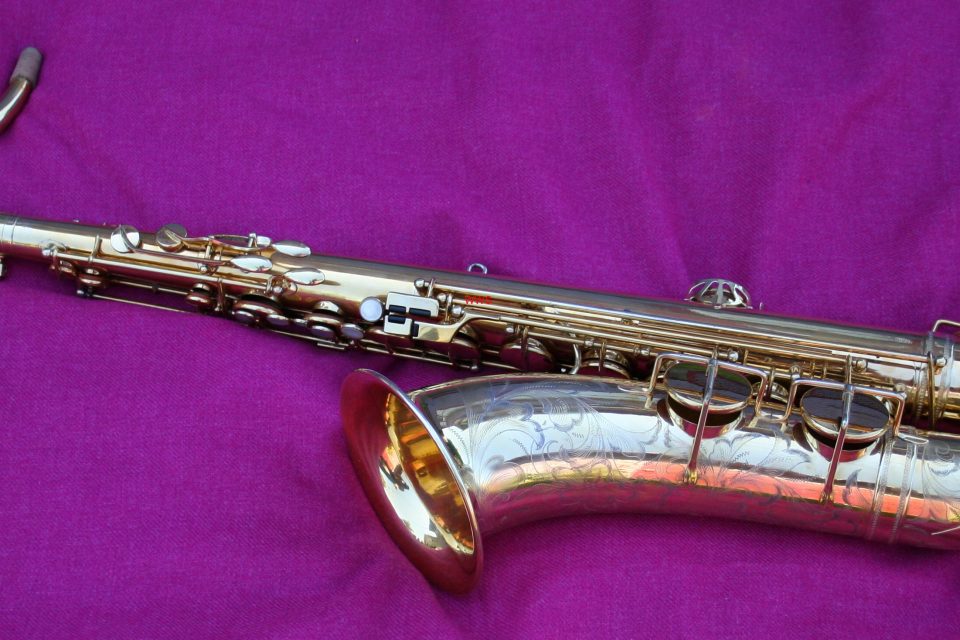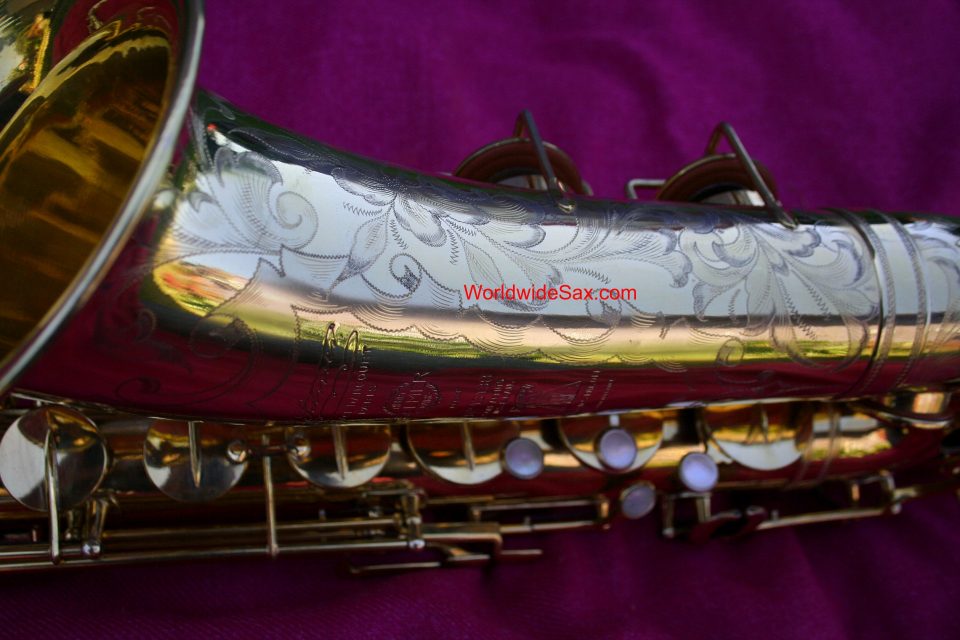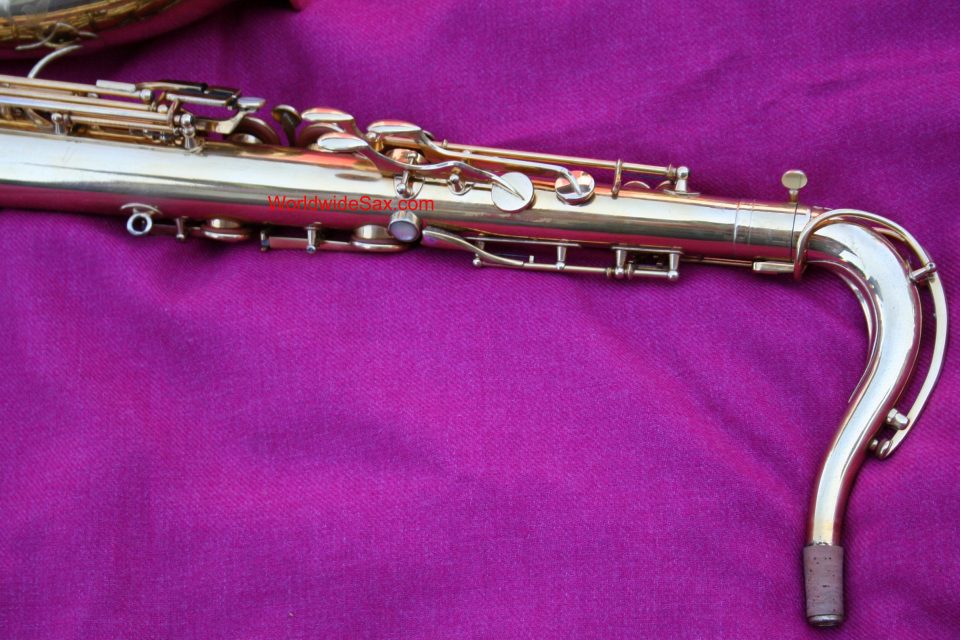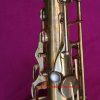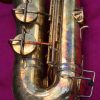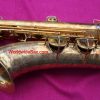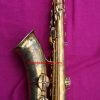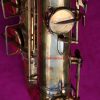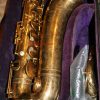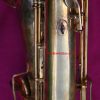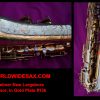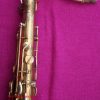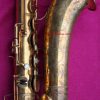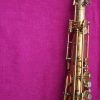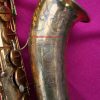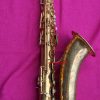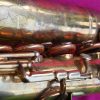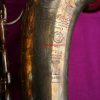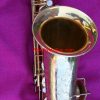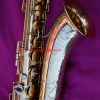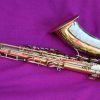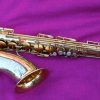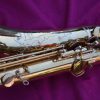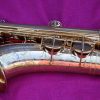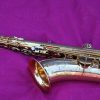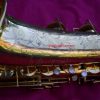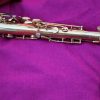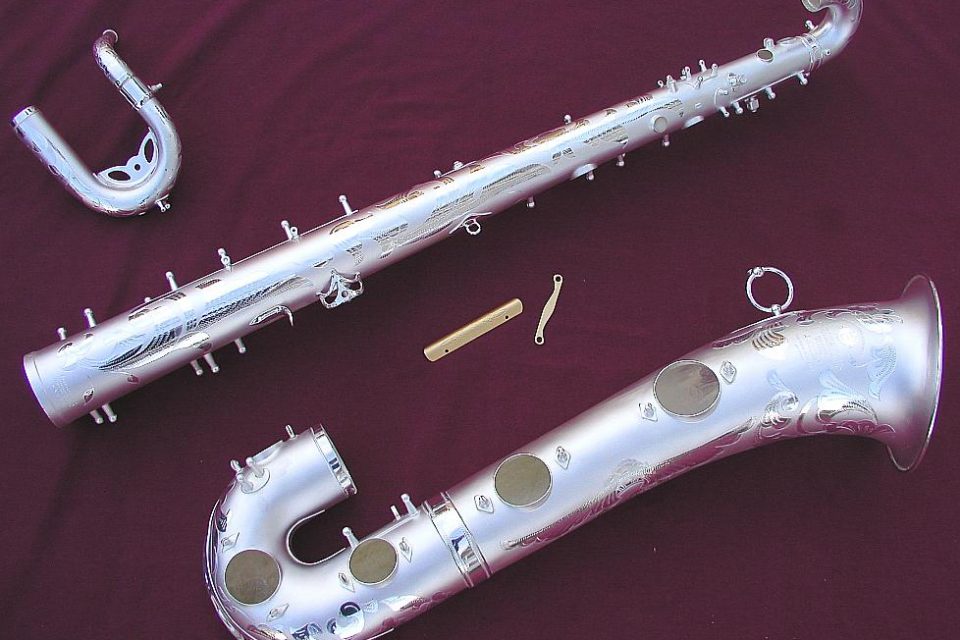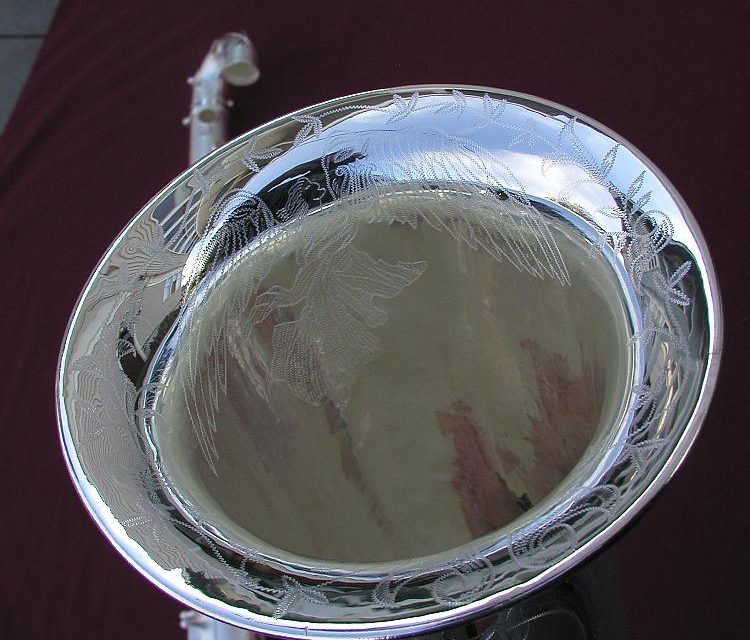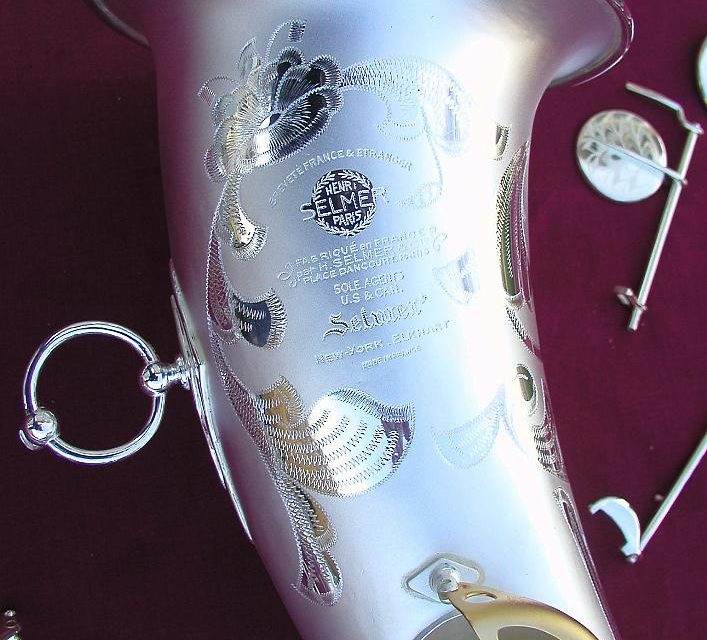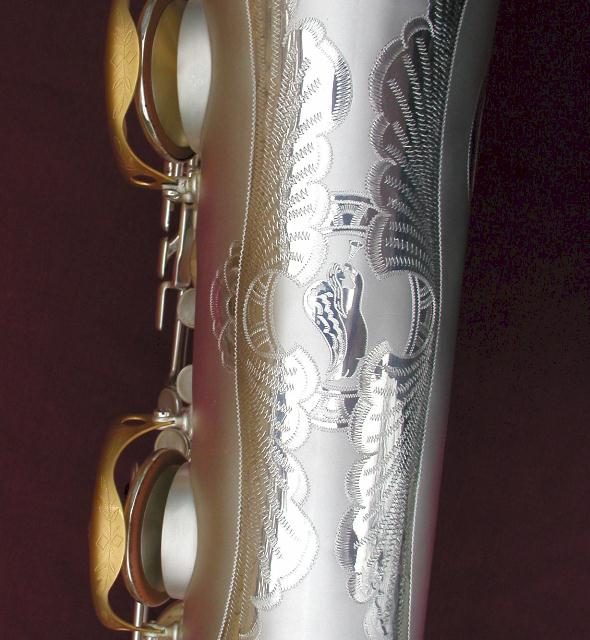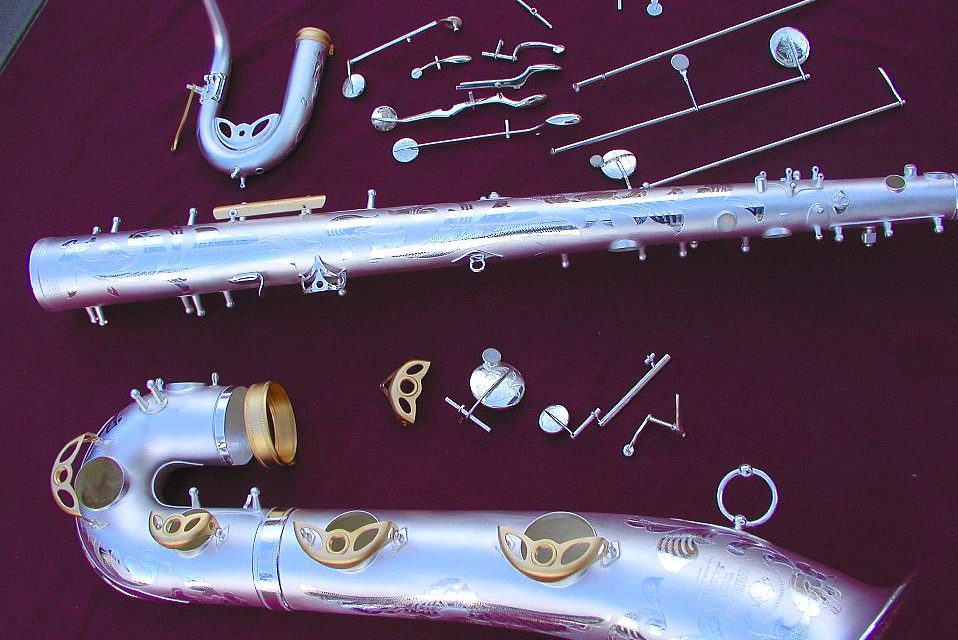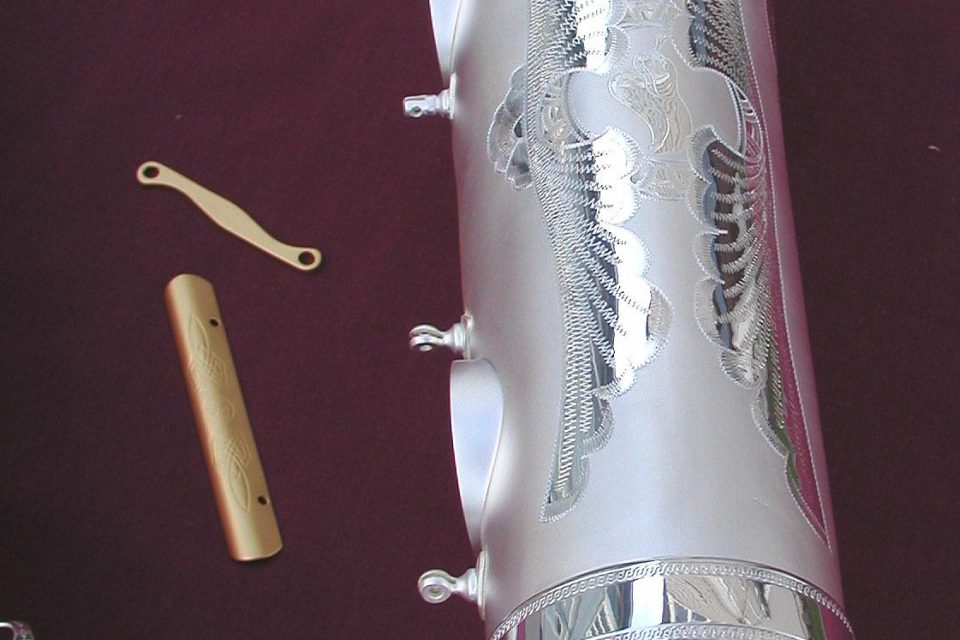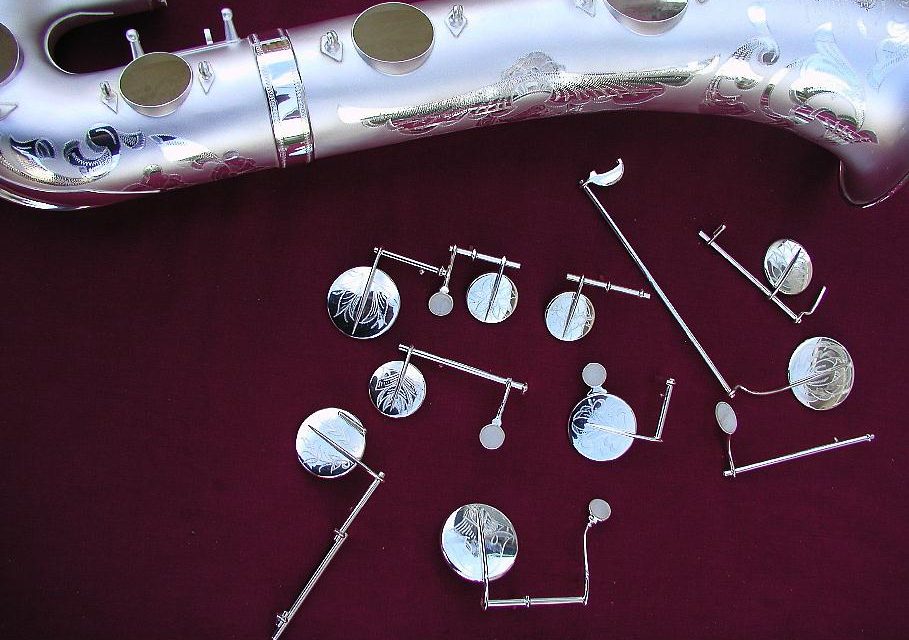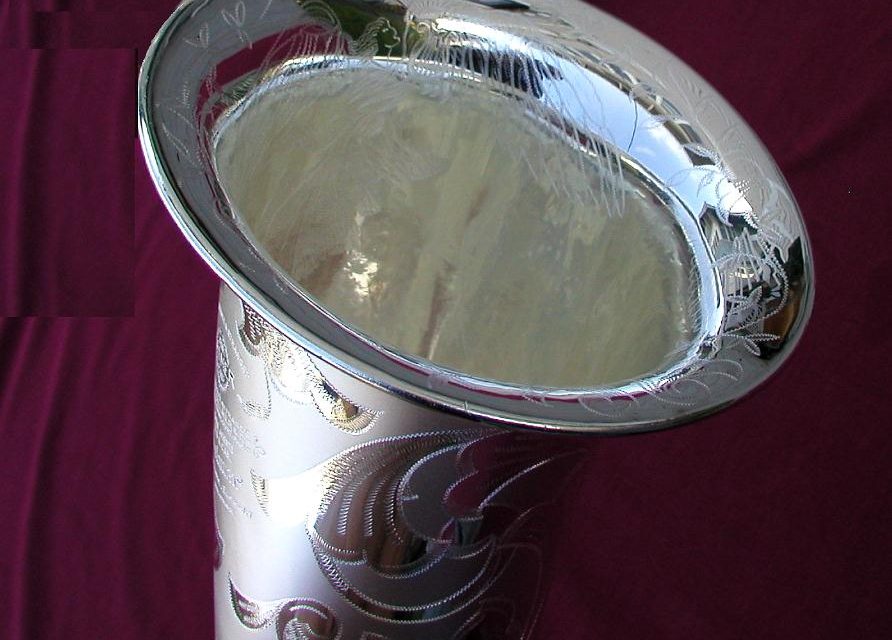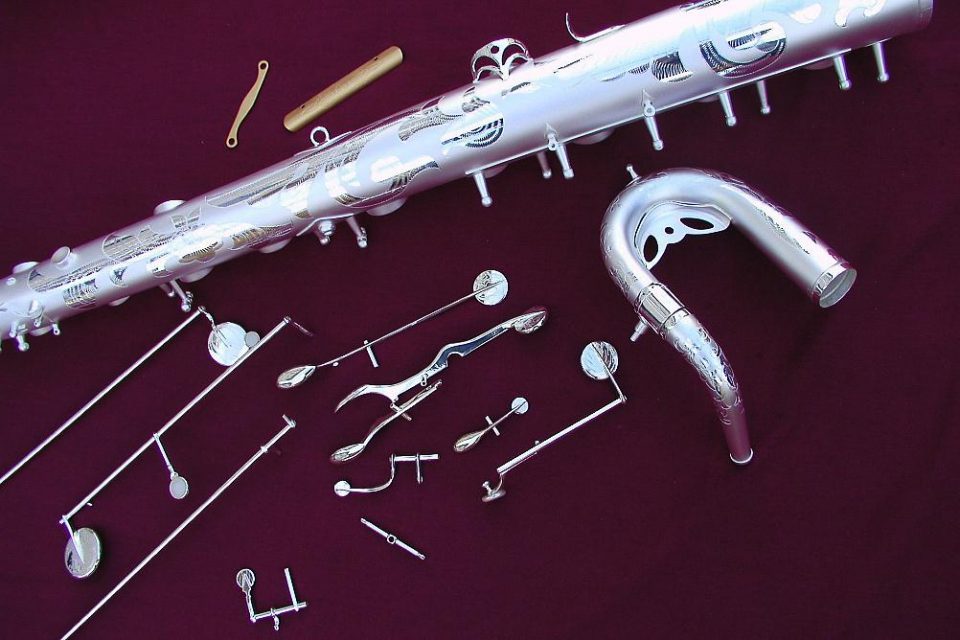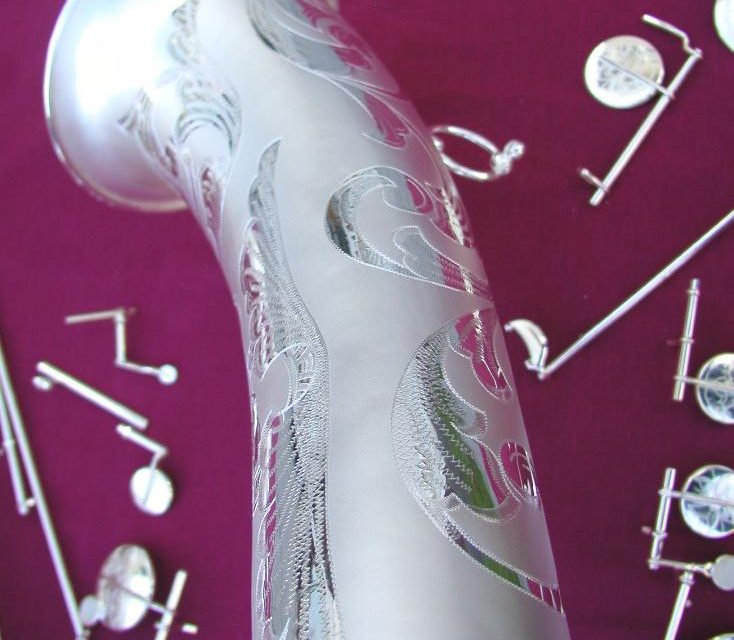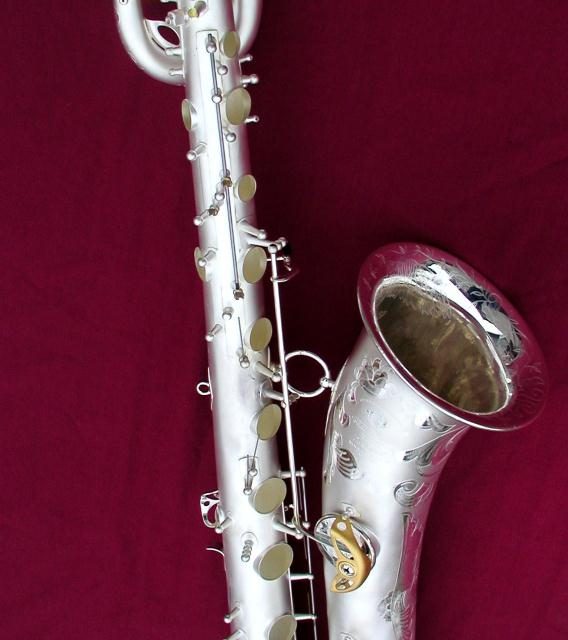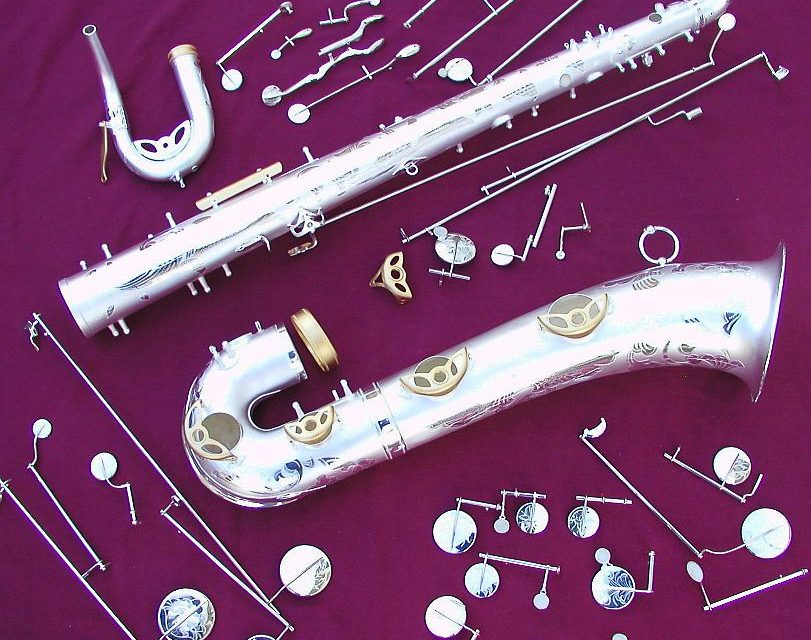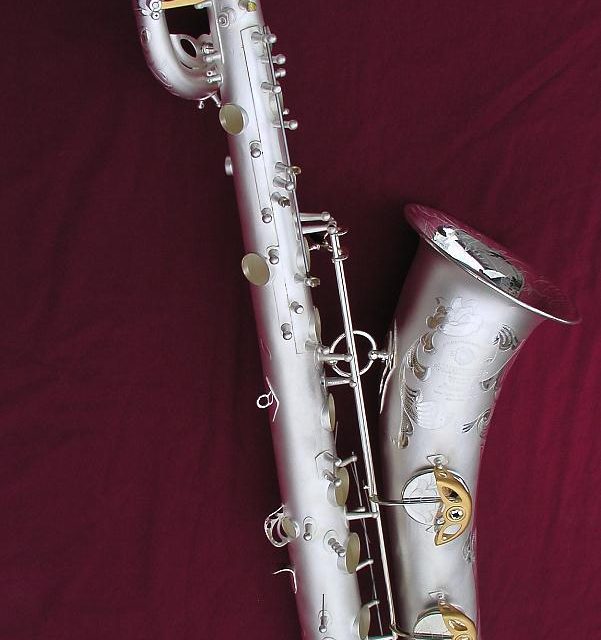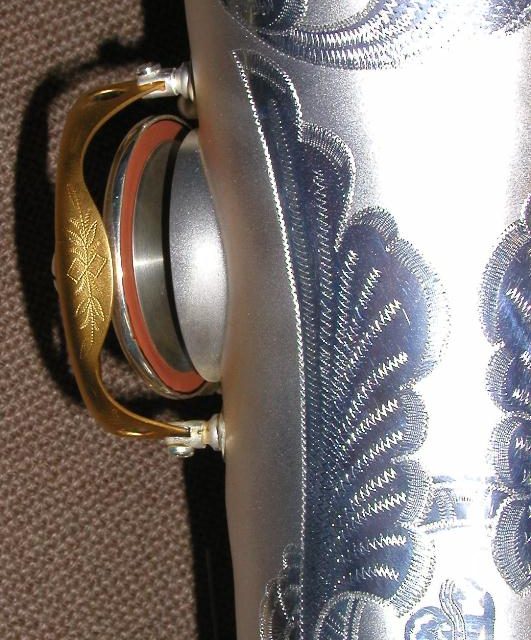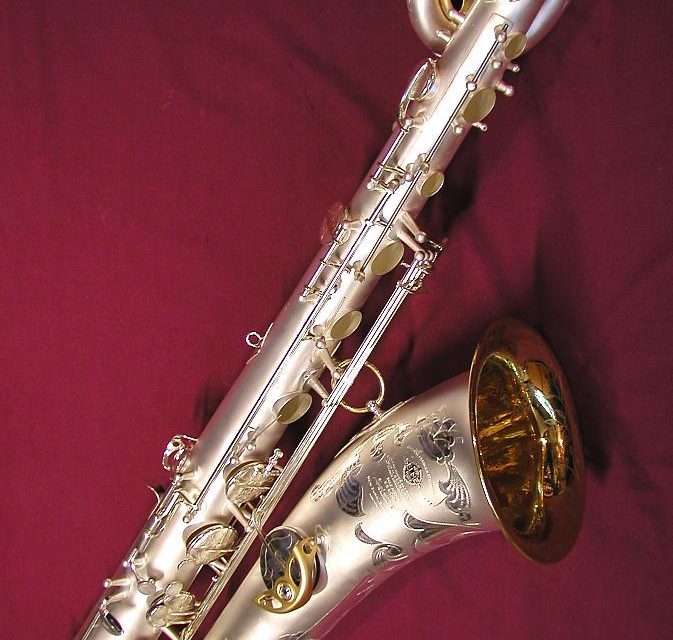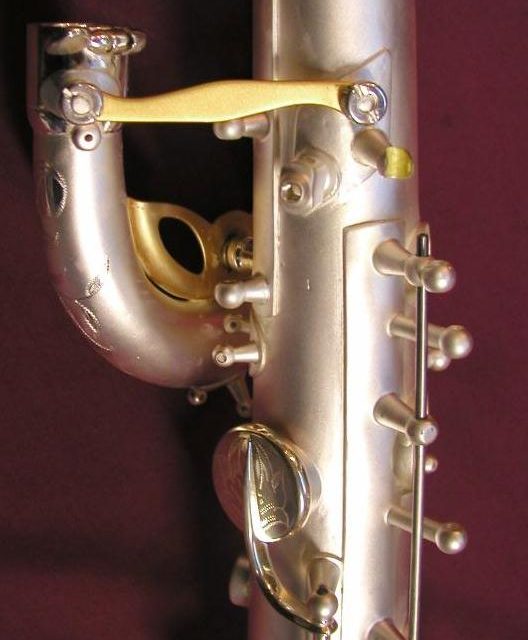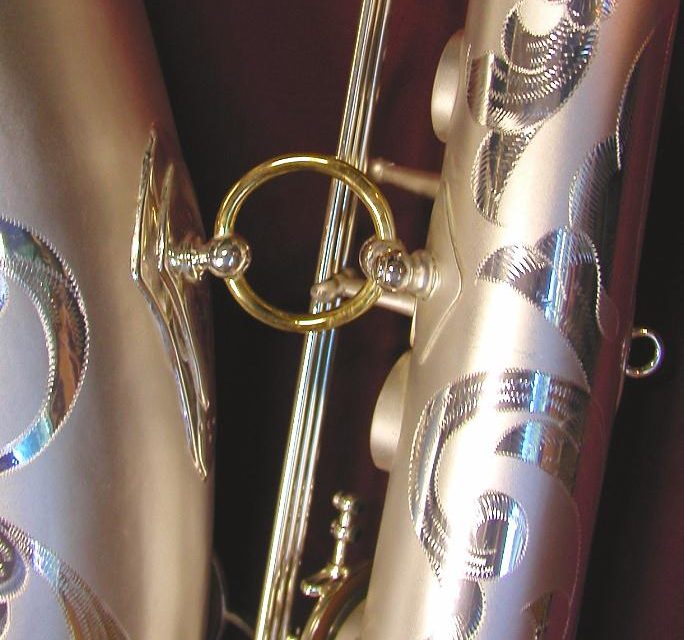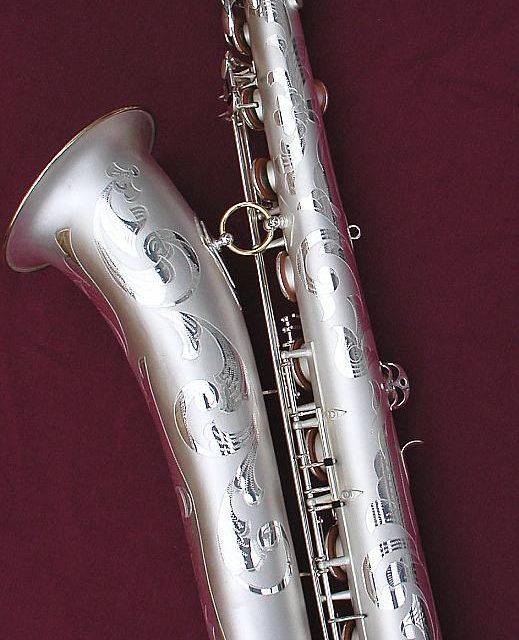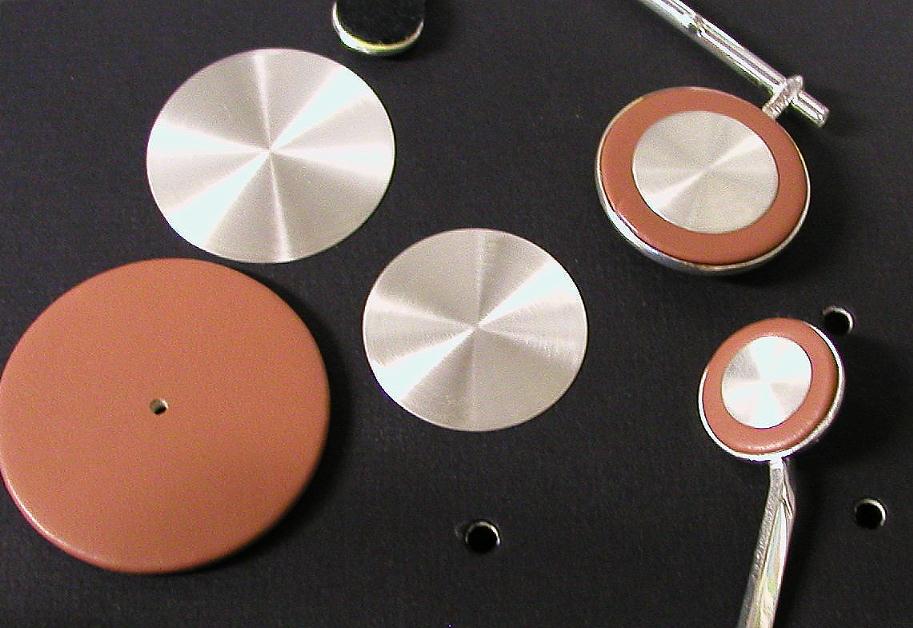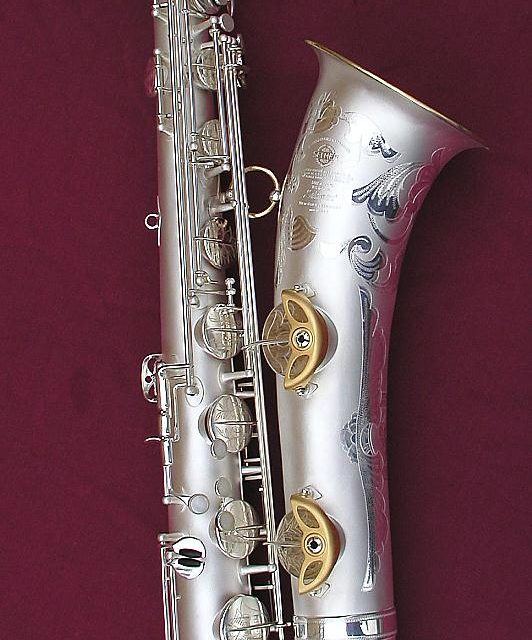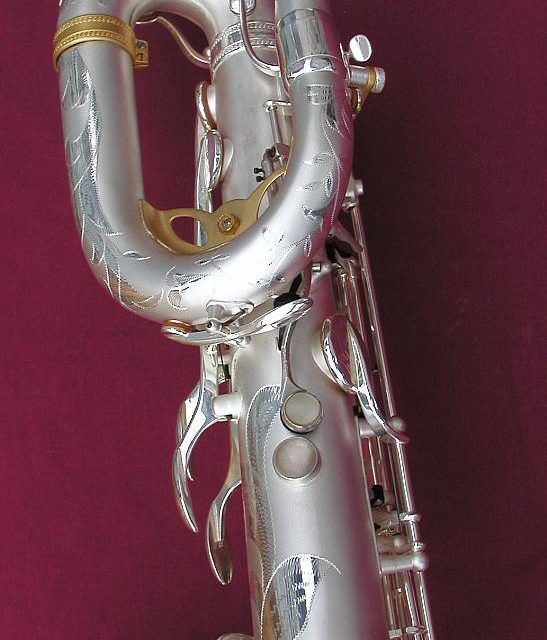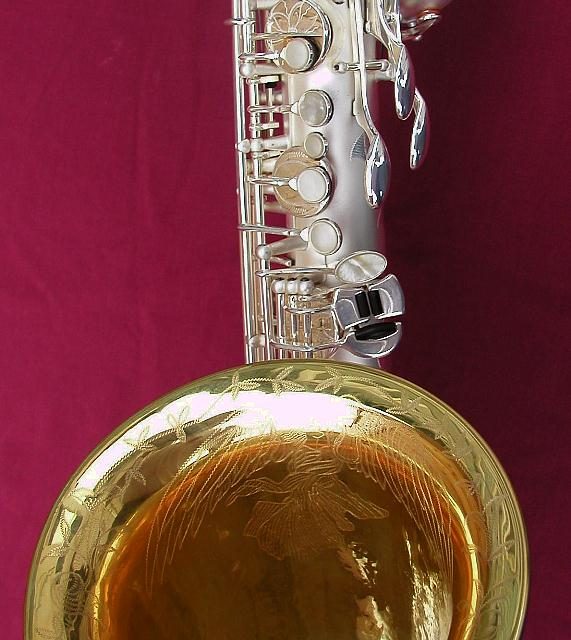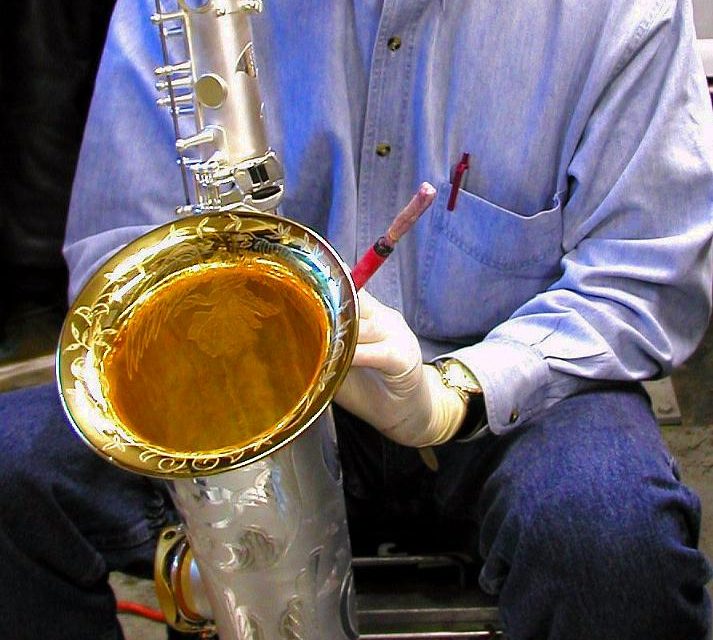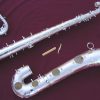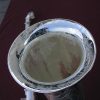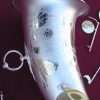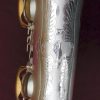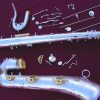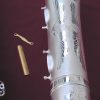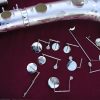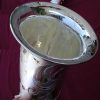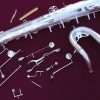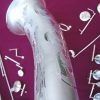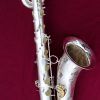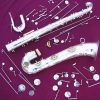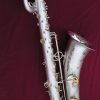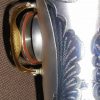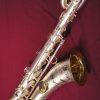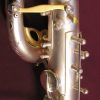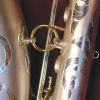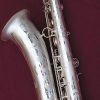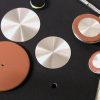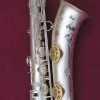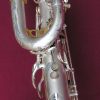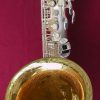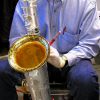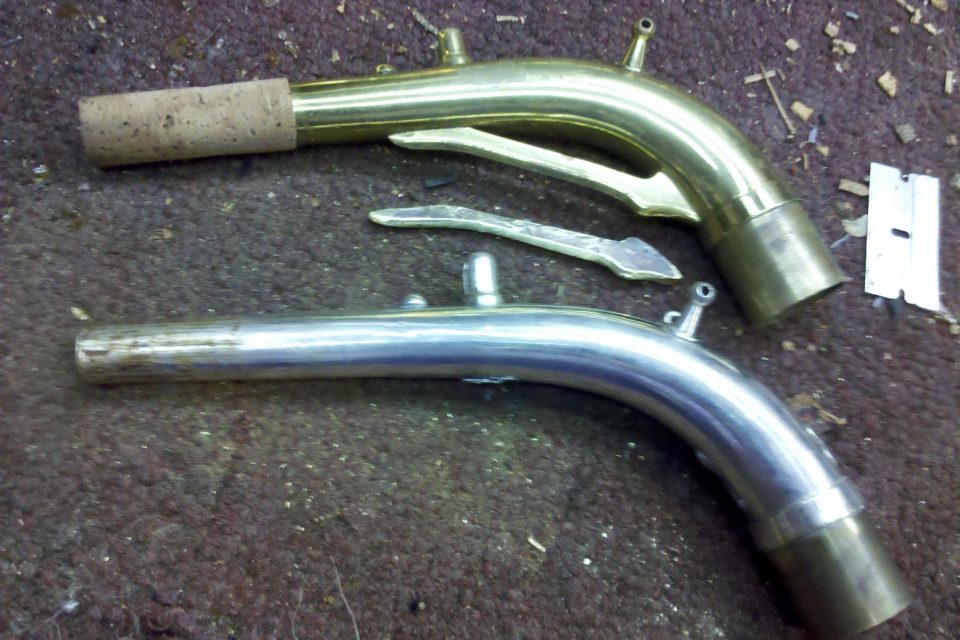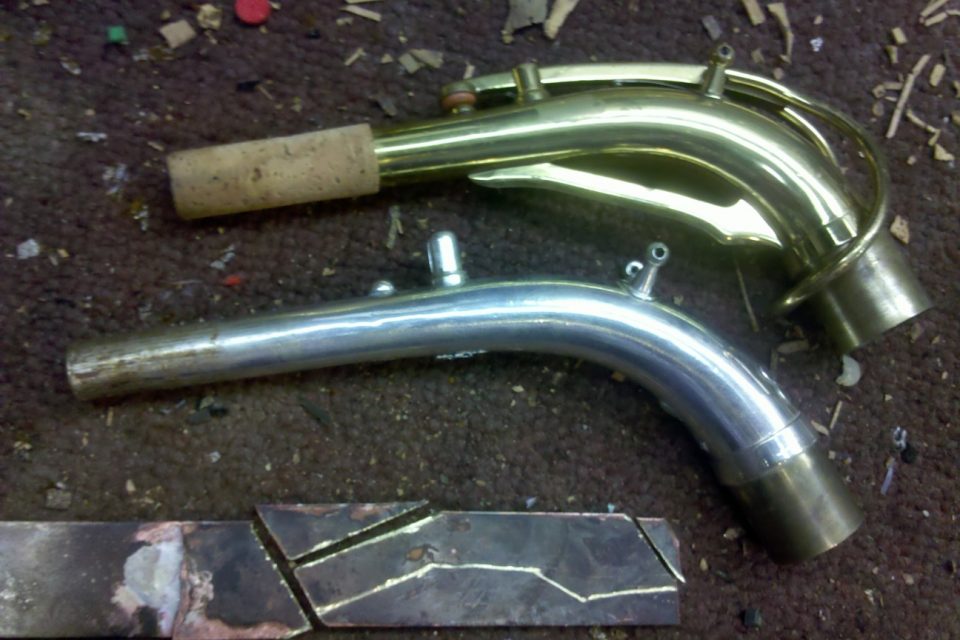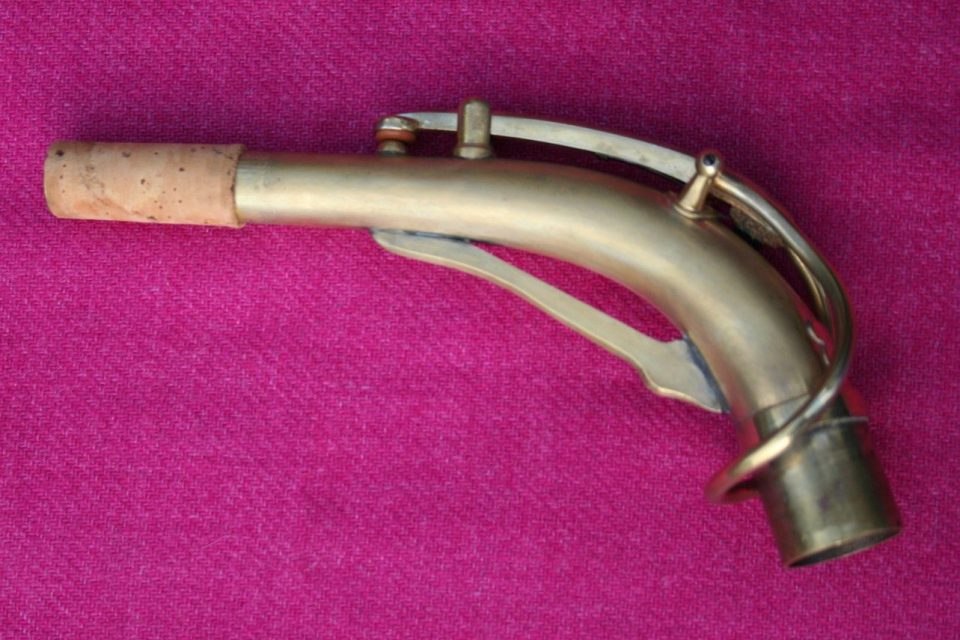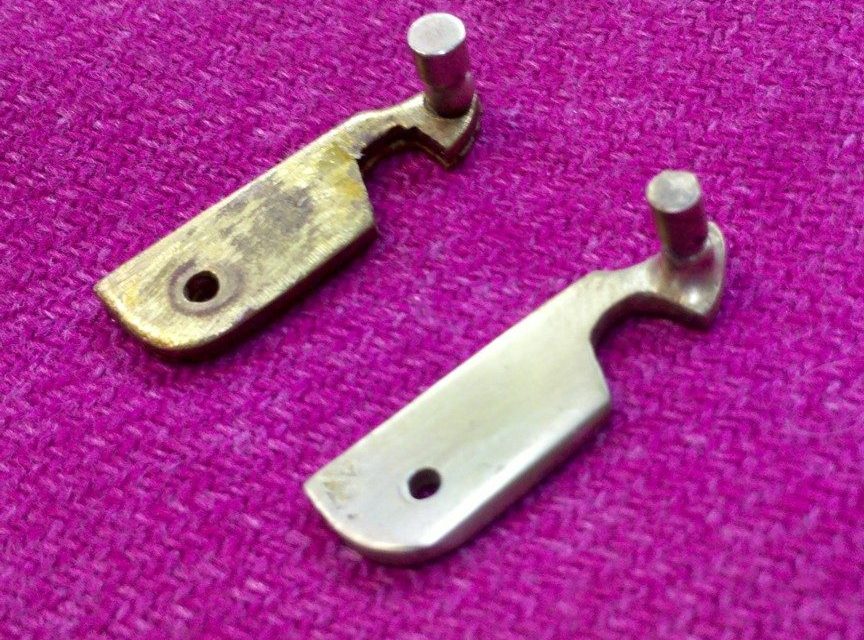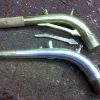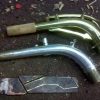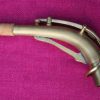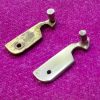Past Work
Some of my favorite/hardest work examples that I want to share
It is conflicting to label this area as solely "Past Work" when most are Major Projects. For some of the special, larger transformations (mostly Relacquers-to-silver plate) see Major Restorations.
Compilation Album
Thankfully, not every example of a crazy repair/restoration was all contained within one saxophone. I will try to combine 18+years of memories into one compilation album here at the start. It features: Basic, mild, favorite, memorable, and extreme repairs.
This is such a fraction of the activity here at the shop. I hope you look at each photo as a brief snapshot for each item that was here at the shop.
Listed in Alphebetical Order, by Brand...
...and these are only the projects that we documented. Enjoy!
Buescher 'Aristocrat II, "Big B"' Baritone- 1952, #347k
Sometimes our "finest work" can be simply making a great sax play great again. Here is an example of one of my favorite bari's, the Buescher "Big B": First we removed the neck curl and keys and cleaned her up. Removed dents in body and neck, then reassembled neck curl top and bow. Finally, align the posts and re-install the keys, level the pads and adjust the key heights...
We're all done now, and she's looking really good.
Buescher 'Aristocrat II, "Big B"' Baritone- 1955 Silver, #349k
This was one of Chadd's "projects of love" that always takes a lot of time but finishes with a beautiful, well-sounding horn. Serial number 349,xxx with original neck. It's a 1954-55 and it's had a busy life and gained all the usual bumps and scratches that baris always seem to get. Aside from the huge "B", there's also a very well done inscription near the bottom of the bell "Bd. of Ed. N.Y.C. 1955" {Board of Education New York City 1955}. PICTURES TELL THE TRANSFORMATION STORY. 90+% Original Silver plate--body is Satin with shiny keys and a Gold wash bell, a few bigger dents near the bottom of the bow that we worked back out. Also we removed some larger dents from the neck. A few patches are on the neck...they were done well but we decided to finish the work and satin silver them to match the body. 1.5 keyguards have been lost [low Eb, half of low B], chadd fabricated exact replacements and silver plated them to match, also sand blasted the neck patches to blend them better.. The Big B Baris have a warm focused sound like the other models (tenor/alto). This bari has an incredible low end, a warm resonance that doesn't cut through like a rock sound. Chadd even decided to redo the Goldwash bell. He finished a Buescher snap in rebuild with metal backed pads AND a premium upgrade with teflon and ultraswede AND re-Gold the bell. SOLD
Buescher 'Aristocrat II - "Big B"' Baritone- 1950s Silver
For many, this would be the Holy Grail in baritones. i had to take some dents out of the neck curl, but the body was great. I did my Premium Buescher Style repad, with Saxgourmet pads.These bari's have a big, warm sound and are fantastic for Big Band, Swing and even Classical. I enjoyed this big beautiful bari; it was for one of our very good friends in Japan.
Buescher 'True Tone' Bass - 1920s
Silver Restoration + Gold Plated keywork
Check out this restoration of a Buescher True-Tone Bass Sax for a customer. These things are beasts! This one is from back in the early days with Justin and Sarge; they both had to take an end and disassemble her. Once they unsoldered the bow, the removing dents work was started...
We ordered the metal backed Buescher replacement pads, so while we wait for them, I'll get started on the dent removal and Justin will be polishing like crazy....
ok, all the dents are out of the bow and bell. these big guys sure get a lot of little dents. In the words of Little Charlie and the Nitecats, "That's BIG".
Various repairs and dent removal. ...and the keys are were plated... polished silver on is plated with 24 carat gold. She's finally all done and playing as big as she looks.
There is really nothing quite like a Bass sax, but they aren't for everybody... they are big, heavy and take an immense amount of wind and embouchure to play.
Buescher 'True Tone' Bass - 1922, #145k
Custom Huge Brass Resonators
Check out this restoration of a Buescher True-Tone Bass Sax for a customer. It was in the WWS inventory and Mr Pearson fell in love with it. Honestly: I never took enough "before" photos to fully display the issues this sax had.
REBUILD: Aside from taking the whole sax apart to get out many many dents and address past repairs, the ultra special work on this sax was the HUGE Brass Resotech resonators that we installed. It was custom work.
How did it come out? "Perfect", Mr Pearson. Wow - huge tone; lots of air required.
It was a one of kind rebuild and I know that this sax will be used on a pro recording that I hope to feature here in the future.
Conn 'New Wonder I' Soprano- 1919, #57k
Guard Fabrication:
ser#57K dates it to about 1919, keyed up to high F, not the in-line palm keys (a +). Great % of silver intact but with Goldwash bell mostly worn away. Conn Wonders have exceptional tone full of harmonics and spread for a big, smooth vintage tone...less harsh/cutting than the later Chu sopranos. (Chadd plays on a 1924 straight Wonder.) There is no major damage to mention, neck looks good!, Eb key guard is a replacement. I think I can fabricate a better replacement, silver it to match (all included) The case was beyond repair, so I will find another one! We will give it a Vintage Conn Standard rebuild with flat metal resos. all included for:
SOLD
Item #:WWS9.62.77.8141.1-0-0
Sound Files on this actual sax:
- 1.STE-043SOP-ConnWondersCurvedvsStrt0:57
- 2.
- 3.STE-063SopranoMPCSx54:07
Conn 'New Wonder I' Alto - 1923, #84k
Chemical/Lacquer Strip:
This next alto is one that Chadd restored and the job was so tough that it deserves to be one of Our Finest. It's owner, Mr. Williams, asked us to restore grandpa's old sax. It's an early Conn Wonder from the 1920s--full, deep sounding horns. The real surprise on this job was the clear lacquer that was put on in its lifetime. Now many years later, the lacquer has begun to flake off piece by piece leaving only areas of the horn to be exposed and tarnished. The tough part was the the lacquer was an epoxy-based lacquer that is 4 TIMES stronger than the non-epoxy based ones. That meant about 4 attempts to strip each area & key!!! Along the way we also put new silver on key touches that had been worn off & fabricated the flange guards that protect the octave linkage on the body to the part on the neck. She was really singing once we were done. Now I believe that this sax will belong to the son of Mr. Williams who will get to learn on his Great Grandpa's own horn. How cool is that !! Finished 4-2010
Conn 'New Wonder I' Bass - 1920s
Silver Restoration:
This next alto is one that Chadd restored and the job was so tough that it deserves to be one of Our Finest. It's owner, Mr. Williams, asked us to restore grandpa's old sax. It's an early Conn Wonder from the 1920s--full, deep sounding horns. The real surprise on this job was the clear lacquer that was put on in its lifetime. Now many years later, the lacquer has begun to flake off piece by piece leaving only areas of the horn to be exposed and tarnished. The tough part was the the lacquer was an epoxy-based lacquer that is 4 TIMES stronger than the non-epoxy based ones. That meant about 4 attempts to strip each area & key!!! Along the way we also put new silver on key touches that had been worn off & fabricated the flange guards that protect the octave linkage on the body to the part on the neck. She was really singing once we were done. Now I believe that this sax will belong to the son of Mr. Williams who will get to learn on his Great Grandpa's own horn. How cool is that !! Finished 4-2010
Conn 'New Wonder I' C-Soprano - 1923
"Mr. Cheeto" Sax - aka: rust-fuzzy springs:
Here it is friends, the most difficult job i have ever decided to undertake... This is a potentially great sax, that will again posses a totally unique sound only c-melody soprano's can achieve... but sadly, it had been stored somewhere moist for so many years, that every single key on it was frozen in place. Every spring was rusted into a little "Cheeto" and every screw rod was totally screwed! Finally after 3 months of "watering" it every other day with Corrosion cracker and PB blaster, i have loosened the stacks enough to unsolder the posts and remove the keys, one by one, from the thoroughly rusted stack screws.
At this point, i am aggressively removing every stuck part and beginning the long process of restoring the key tubes to functional, creating new screw rods for every single key and re-springing the entire sax. I'm also hopeful that a good silver dip and a vigorous hand polishing will restore the silver plate to it's former luster...
Ooooooh, she cleans up nice! Next up, i'll start lapping the key tubes and resolder the posts.
Got the bottom stack soldered back on, swedged and lapped and they feel good. a few other posts are back on too, but i'm not at the halfway point yet, as the springs are crumbling to dust when i try to remove them and that's slowing me down.... what fun... OK friends, i know it took a while, but it's back together. looks good too! and she's playing again, after what must have been 40 years of sitting without any care.
Conn 'New Wonder "Chu Berry"' C-Melody- 1926, #170k:
Custom Engraved - Nickel
Serial number M170,xxx, dates it from 1926. this near mint example has the nail file G sharp key, micro tuner neck and and rolled tone holes and it's also in the more rare nickel plate. We are doing a Premium rebuild for a customer with this one and getting some very nice custom "Conn Artist style" engravings (as it originally had no engravings, aside for C.G. Conn), created by Jason DuMars. Gander at Jason's custom engravings...!!! We also adding some custom plating... and finally, the icing on the cake: Neck Engravings.
The finished sax is a bold and beautifully warm sounding, work of art that can be played and enjoyed for years to come.
Sent: Saturday, June 19, 2004 12:56 AM
Subject: Chu mel
Sarge, Chu-mel finally arrived. Customs did their best to play "hard to get" but the packing was up to the job and the horn is safe. I wasn't expecting to find the keys clamped- definitely the way to travel.
Your page of helpful hints really showed you care, such a difference to an earlier purchase from a well known St. Louis dealer
I stopped off at For Winds to get some reeds. I was expecting bored disinterest, being a C melody,but when they saw it, the whole shop came to a grinding halt while they ooh'd and aah'd. Anyway it has now been play tested by all of them and has been given the nod of approval.
It looks fantastic, plays much better than I thought- the action is light and smooth. Jason's engraving looks nicer "in the flesh" and I'm glad the neck was done. Now it is a piece of art , not a fake "artist"
Thank you for your patience, forsight and helpfulness. It has been a joy dealing with you.
In a few months, I'll start looking for a bari- maybe a King Super 20/ Silversonic. Big sound, good resale and a big blank on one side of the bell ready for a "never been done before" engraving!
nicko nicko941@froggy.com.au
Conn 'New Wonder II "Chu Berry"' Tenor- 1928, #211k
"HOTROD" - Major Mods Project:
OK!, this great sax that has seen better days. These are great players, so I wanted to make it someone's perfect gig sax! AND improve the cosmetics! Slightly abused, but nothing major. Ser.# m211,xxx. Another great "Chu" in original silver, with gold wash bell (in
OK!, this great sax that has seen better days. These are great players, so I wanted to make it someone's perfect gig sax! AND improve the cosmetics! Upon initial inspection, there was one main 'damage story' in its past: the lower edge looks to have taken a knock, the bell-to-body brace needs resoldered, the rear body tube will need aligned to the bow (de-soldered damage), and address the front knock, address dents to the high palm keys, messy solders, remove the unnecessary lyre holder, The Front F rocker arm went missing.
*SEE HAPPY CUSTOMER TESTIMONIAL & PHOTOS OF THIS SAX*
WWS SPECIAL CUSTOM PROJECT:
~White Roo pads
~Resos: to-the-max sized Silver Resotech resonators--3mm shy of the tone holes!
This will be a stunning sax cosmetically, but I want it to make the guitar
players turn their ears! Other ideas:
~New Selmer Thumb hook!
~upgraded ALL the octave KEYWORK (See photos)...moved side pip!
~NEW case
~fabricating keywork: selmer palm keys! Front F teardrop!...
Item #:WWS5.6S0.01.241.4-0
Conn 1931 ‘New Wonder II/6M Transitional’ Alto, Art Deco, #246k
Project: "The Yano" - gold touch ups
Alright - a tricky sax on arrival that was originally purchased as a "gold plate" sax. Then the trickiness of 3 different [yellows], gold/wear/lacquer/tarnish/perma-gold...?! During the inspection process and testing the metal for conductivity, we did conclude that the sax was gold, and the body was still gold. However, you can see the pealing on some rods that showed the darker yellow lacquer was unique, and definitely silver underneath
The customer who purchased this one allowed us to collaborate and pursue a tasteful enhancement to the cosmetics. So we used our gold plating wand on the body and left the keys. What do you think of the color it ended at?
You can see the cleaning/stripping process, the consideration of leaving the bell silver, then the final photos: all gold body.
Conn 'Connqueror 26M' Alto- 1942, #307k:
Resurrection 8/2011- was drilled to a wall:
The 1945 Silver Conn 26M VIII was a WWS Stock horn for sale after our Resurrection and Rebuild. This sax went to its new home where the owner will boast to his friends about how much his sax has survived...and, plus, it's a 26M!
Chadd resurrected this sax. Another Project of Love. PS-he's crazy...in that good way. 🙂
Sometimes it's just worth the duty as saxophone lovers; SO... this sax has been to Hell and back... and survived!!! It now bares battle wounds that are a visual challenge but not going to officially change the sound of this being a 26M.
Check out these photos below!!!
The Bad: this was rescued from some bozo who decided to literally screw it to the wall! They put 3 holes in the bell/bow and bent the bell out of place. Another Tech worked on this one to get them filled but one did 1/2 a resto on it. They were filled with brass, soldered as necessary, and silver plated to seal the deal--and removed the bow and bell to align the body again (this is what needed done the frist time). also {sigh}, palm keys Eb & D were lost and are now standard 6M parts. We elected to silver plate them to match).
We will most certainly had to re-Gold the bell with 24K gold too. I bet this sax would take a month from start to finish and it was just about that (had a mental break in the middle to rest. heehee). Good thing these have a richer sound than 6Ms (in our opinion) and are worth playing, even with battle scars. Notice the hole repairs, the previously Lacquered Gold bell ...needed 24k Gold to be right!
Martin 'The Martin Alto' Alto- 1951, #176k:
Nickel+Silver, 6-2012
This was another fun one: This silver model (no original goldwash bell) is one of the great ones built for the military as the "U.S." stamp on the bell explains. I would guess this sax lived out at sea due to its dense tarnish spots. The sax is overall in great shape with +95% silver intact on the body, hardly any obvious wear to mention even on the key touches. As I looked closer, I realized that the original (ser# matches) keys have been Nickel plated. This must have been a required fix to have the horns all 'silver' for show and looking good for the military. After chemical dipping and silver polishing, it received all new stainless steel springs and Rose Gold Plating in the bell.
Martin 'The Martin Tenor' Tenor- 1945, #153k
Rebuild + Epoxy Risers
"The Martin Tenor" Committee: Serial # 153,xxx dates it at about 1945, a terrific era for The Martins, they really made a big, dark sound back then. Take a good look at the pics, it's really in excellent shape. Original lacquer, with a few bare spots here and there. Adjustable thumbrest and it has some Fimo palm key risers on it now. Beautiful original engraving, with "The Martin Tenor" on the highly engraved floral design bell. Original lacquer is about 90%. The neck is dent free and nice and tight. Fair/good original case. Just rebuilt (elsewhere) with Selmer style pads with plastic reso's, but i'm going to tear the selmer style set-up out and put in my favorite set-up, Saxgourmet pads and Resotech solid silver reso's. I'd been playing this one for about 3 years and i finally had a chance to do it's rebuild...
i did some Epoxy key mods, to make this horn feel more like my other favorites... and customized some palm key risers She's all done now. These Martin tenors have more power than almost anything ever made, what a terrific sax.
Martin 'The Martin Tenor' Tenor- 1956, #200k
Rebuild + Double Chem Bath
"The Martin Tenor", probably the greenest saxophone we have ever worked on. Heavily dented, four damaged toneholes, stinky sax and case, missing keys and posts. This horn belonged to a long-time musician who lives in Washington state. We were happy to get his horn up and playing.
Selmer 'Super New Largebore' Tenor- 1930 Gold Plated 13k
Named: "Goldie" for her exquisite shine. Here is another beautiful sax I am the second owner (outside of the family). It is 99% original Gold Plate and in excellent condition. Serial #13k dates it to about 1930. Whatever the closest step is to 'MINT', this sax is it. The only silver I see showing through is on the octave thumb button. This is a special sax with a backstory: bought new and gigged with in the Ozzie Nelson Band of Rutger's University while the player used gig money to pay his way through school (too bad we can't do that anymore!).
This is very unique era for Selmer because the "SSS" for the Super lineage was not on most of the early saxes, and actually mostly only on altos vs the tenors. See: Saxpics.com for more reading pleasure. Goodson's reviews will put these as the first saxes to start sounding like the Selmers we think of today. Check the Sound File. You will hear the spread power of the early Selmer. The popular VI Sound is very warm, subtle and smoother.
It arrived with the original wood case in rough shape. I recommend keeping it with the sax but using another main one. On arrival the pads are tan with large, light-domed, metal resos (like 1940s-50s selmer) that may be original! I will fully rebuild this sax with my French Standard Rebuild but substitute in metal resos like it originally had; shine it up by hand, and sell it for the next loving home. Let's talk about cool resonators! Gold Resotechs??? It will go for:
SOLD
Item#:WWS22.0S0.13.1071.3-0
Sound File (actual sax!): TENORs x2 & MPCs x3:
- 1.TO EDIT TENORSx2-3MPCS-MarkVi_GOLDNe4:40
Selmer 'Super Balanced Action' Baritone:
"The Angel"
This job was for a very good customer in Japan, who wanted another Total restoration, in silver with massive engraving, then a premium rebuild. This one got the full treatment. It had been buffed and poorly re-plated, so Sarge disassembled it... the neck was unsoldered and rounded out and the Eb tonehole and many dents were all removed, then it was sent to Anderson silver plating for chem-stripping and extensive engravings and expert silver plating, satin body and bright keys. Finally, Sarge did a total Premium Rebuild with Prestini's Hermes" treated pads and Solid silver Resotech resonators and using Teflon, to reduce friction, Synthcork for quieter and longer lasting bumpers and Ultrasuede, instead of felt, in key places. . It's a long process, anywhere form 3 to 6 months, but the results are always magnificent. look below:
Our friend Robert, from Goldmasters came today and 24 carat Gold plated the bell, bell to body brace and crook brace. These were hard to reach parts that were soldered onto the body, that could not be dip plated and he has done a beautiful job on a very difficult project that required masking off and carefully detailed work.
Sarge also measured every tonehole and custom ordered a set of solid silver flat resonators that cover 90% of the tonehole.
And I thank Randall, for this nice review of my services.
From: Randall Pennington
Sent: Sunday, August 29, 2004
Subject: The SBA bari sax review...at long last...
Hi Sarge,
Now that summer vacation has fully begun, I just wanted to tell you about the SBA bari you restored for me earlier this year. As you know, I have a pretty imposing set of horns (some of my very best are on your page of bests!). One of them is a custom made JK bari, a MK VI low A and of course the SBA. Recently I started playing bari full time in my salsa band too, so I have been trying out all 3 baris to see what works best.
Well, the SBA has won, hands down....the sound is exactly what I needed for the tunes I we do and the action is just perfect. The work you did on this horn is as good or better than what you did on my Buescher TH&C tenor. This horns simply screams, grunts, wails and honks!
I couldn't ask for a better restoration than the one you gave it. It is worth every cent I payed.
Next is the beauty of the horn...it is absolutely stunning from the plating and gold accents and inner bell plating that you had added later, to the elaborate engraving....my many thanks to your wife for helping with the drawing for the angel in the bell!
I just performed with this bari at a salsa festival and virtually every member of the Cuban band that was doing a sound check before us, when they saw the horn as they were leaving the stage, literally ooohed and aaahed when they saw the horn. And they were all BRASS players! One guy came up to me after our performance and told me he wished they could find a bari sax for their band. They liked the sound that much!
This is not the first time that horns you have restored for me have gotten kudos from non-sax players.
I don't know what else to say that I haven't said before Sarge. I love what you have done for my horns....I couldn't be happier!
Looking forward to getting another masterpiece done in the near future....
Kindest regards,
Randall Pennington - Fukuoka, Japan
SML 'Revision D' Alto- 1954, #10,308
Chadd's Collection ("player" Alto)
Originally, this is perma-gold finish over silver plate. It is common to see the perma-gold wearing/flaking off on such models. I love the perma-gold look but I knew BEFORE: finish was not very attractive, worn metal touches, missing G# articulation, smashed Eb, bent bell lip, ugly neck brace AFTER: cleaned up Side touches, clean & gold plate all key guards, straighten bell lip, fix Neck brace, Fabricate G# articulator
It took me a whole year of testing vintage saxes to really know what I wanted in an Alto. This was it! That American beef sound with warmth and the French design. There's nothing quite like a SML Rev D. Serial number 10,308, 50%+ Original Perma-Gold finish with mostly silver showing now. The body was in good shape when I got it but there were a few fabrications (G#, Neck brace) I had to do for repairs. I bought this once specifically to be my Player. She was uglier. I knew I couldn't take a nice one out. So I'm forever on a hunt for a beautiful Perma-gold finish alto to leave in the case.
I rebuilt her to be my Concert Band alto, with room to be versatile. She got tan prestini pads and 50% flat metal resos with rivet, and a Premium Upgrade.

